September, 2026 (forthcoming)
Hošek Gallery, Berlin, Germany
Artists: Mariana Malheiro (PRT), Beatriz Manteigas (PRT), and Vera Matias (PRT).
27 03 2026 → 11 04 2026 (forthcoming)
Mono Gallery, Lisbon, Portugal
Artists: Mariana Malheiro (PRT), Beatriz Manteigas (PRT), and Vera Matias (PRT).
14 06 2025 → 22 06 2025
The curator of the group exhibition “It’s a Balance Trick” in Residency Unlimited’s (RU) House in Governor’s Island.
Residency Unlimited’s (RU) House in Governor’s Island, NYC, USA
“It’s a Balance Trick”
Curated by Eglė Ambrasaitė
A group exhibition curated by RU alum Eglė Ambrasaitė, featuring 7 international artists: Yakira Ament, Rosario Aróstegui, Caecilia Goeken, Laura Lewis, MIMOZA LIZA, David Monnet, and Eden Auerbach Ofrat.
“It’s a Balance Trick” approaches the contemporary human condition not as a universal constant, but as a plural, dynamic, and context-dependent area of both vulnerability, inter-dependency and resistance. It serves as a mirror, a critique, and a possible healing space. Following feminist new materialist theories, the group exhibition embraces humans not as autonomous, isolated beings, but as entities that are entangled, relational, and materially embedded within complex ecologies – social, biological, and technological. Accentuating the urge for relationality and intra-action – the new materialist way of understanding balance as a matter of responsible entanglement – the works on view delve into investigations of meaning-making and offer a nuanced account of diverse cultural experiences. Together, they investigate the complexities, anxieties, and paradoxes of what the 21st-century (more-than-)human condition might entail.
MIMOZA LIZA’s sculptural installation functions as a living entity that questions the exuberant ‘just do it’ spirit emblematic of neoliberal ideology. Her work satirically unpacks the cultural fixation on the ‘live fast, die young’ ethos, unsettling these glorified ideals and calling attention to the pressing need for both personal and collective recalibration.
In her (photo)sculptural works, Caecilia Goeken explores the construction of national identities within a saturated visual culture. How is meaning transmitted, received, and held in tension, or in other words, ‘balanced’? Engaging both with Cornelius Castoriadis’s concept of “primal significations” as well as Bourdieu’s theory of social capital, Goeken’s work examines how such imaginaries continue to structure perception and affect exposes the mechanisms through which symbolic power circulates within cultural fields, and contributes to the structuring of meaning and value.
In his practice, David Monnet reflects on enduring Cartesian binaries and, through moments of tension and suspension, invites us to imagine new rhythms for relational balance in daily life. His acrylic paintings are assembled in several binary combinations: smaller canvases depict what might seem to be an insignificant, daily-life object of an electric wire, while the large canvases are non-figurative and distinctively monochrome. Disattaching the symbolic object of power (the cable) from the vast ‘neutral’ colourful emptiness (the source), David creates an eerie visual meditation on contemporary alienation.
Rosario Aróstegui’s sculptural installation traces the entangled threads of cityscapes, human presence, and the living world. Working with found objects and recycled materials, she invites us to reflect on layered temporalities and the enduring interconnection between human infrastructure and (organic) life. Her work blurs the lines between built environments and ecological systems, revealing their mutual dependencies.
Laura Lewis’s conceptual figurative paintings delve into the realms of psychosexuality, psychosomatic tension, and the shifting multiplicities of the self. Through a visceral, expressive use of paint, Lewis explores vulnerability and embodiment, evoking the psychological intimacy of Ingmar Bergman’s Persona. Her works interrogate how individual psyches are inscribed within the body and shaped by systems of collective consciousness.
Eden Auerbach Ofrat’s video works are autoethnographic recreations of three interwoven myths: the Bugonian myth in which a cow’s corpse begets a swarm of bees; the Egyptian myth of Hathor, goddess of fertility and femininity; and the artists’ personal myth, in which a giant bull sculpture is set ablaze. Together, these films function as a spiritual journey through the cycles of (feminine) death and rebirth. Ofrat questions the figure of the (female) savior and whether the bearer of light is inherently a source of illumination – probing the ambivalent nature of transcendence and power.
Yakira Ament’s intimate, delicate yet resilient sculptures and drawings act as sacred portals into cosmic relationality. Merging together elemental forces – air, water, fire, and earth – her ethereal forms explore the deep interconnection between bodies, emotions, and environments. Traversing cycles of birth, decay, and renewal, Ament’s work dissolves boundaries between nature and culture, animal and human – offering us the paths to explore more-than-human connectivity – a harmonic multi-species entanglement – both personally and collectively.


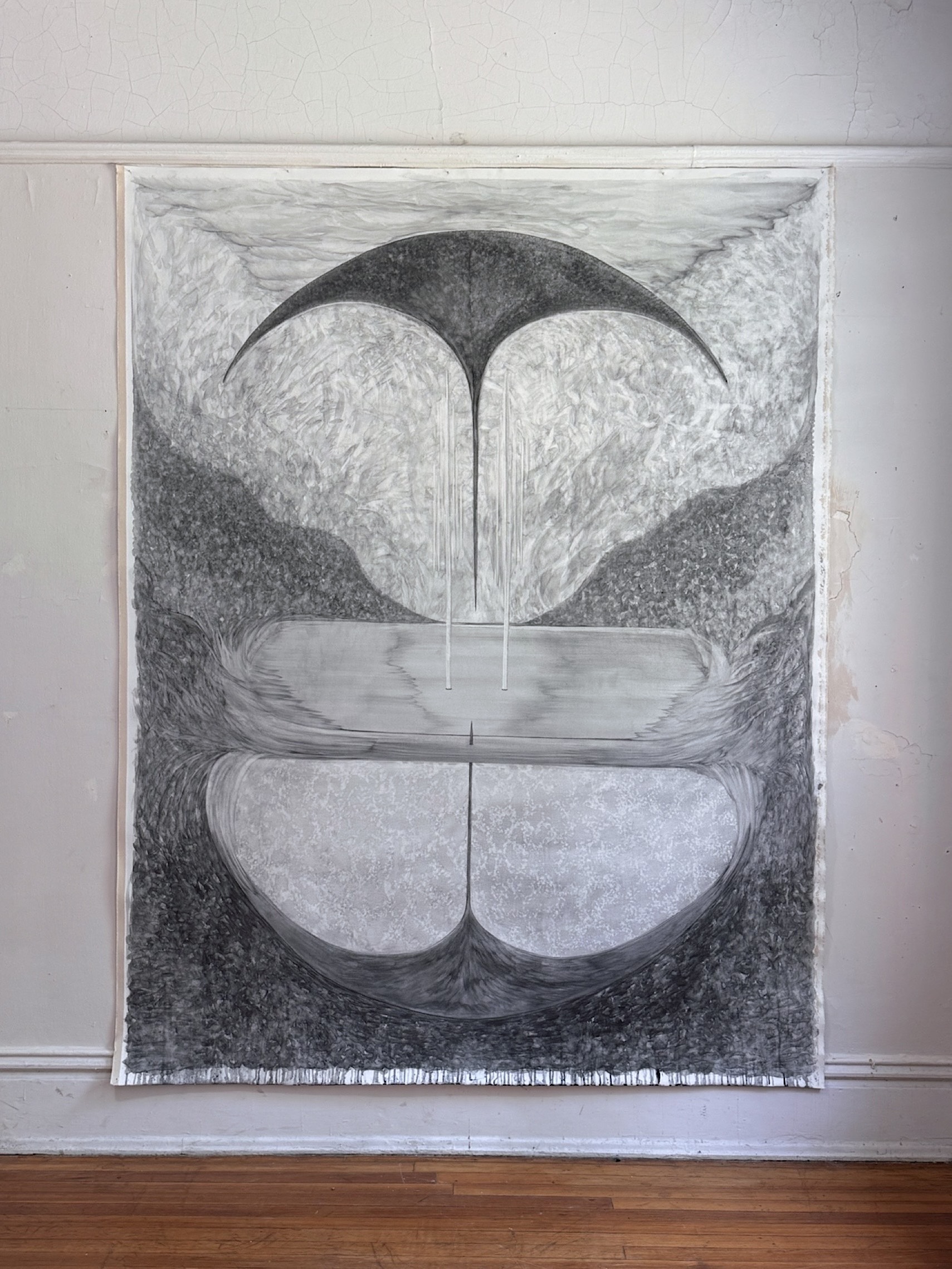

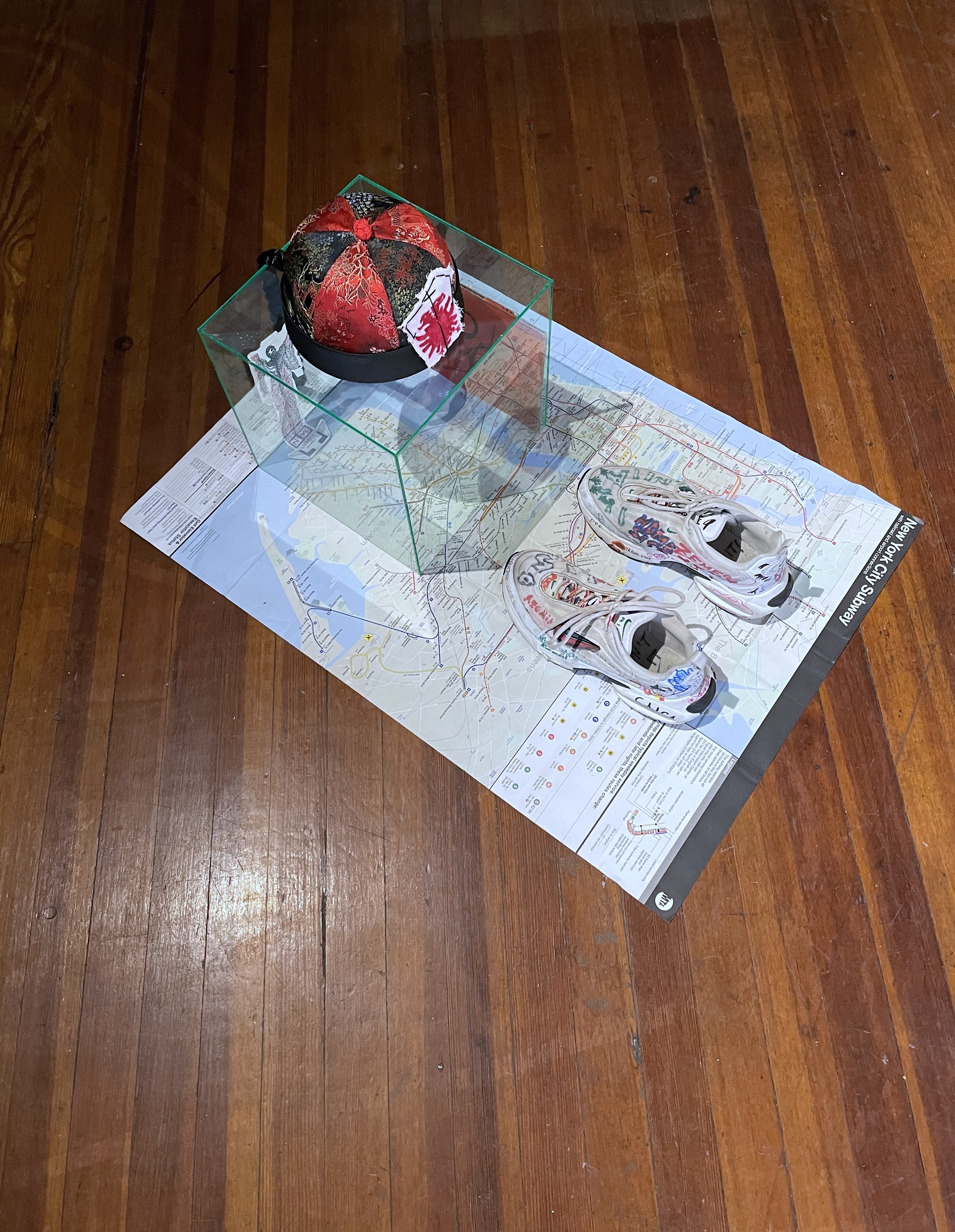
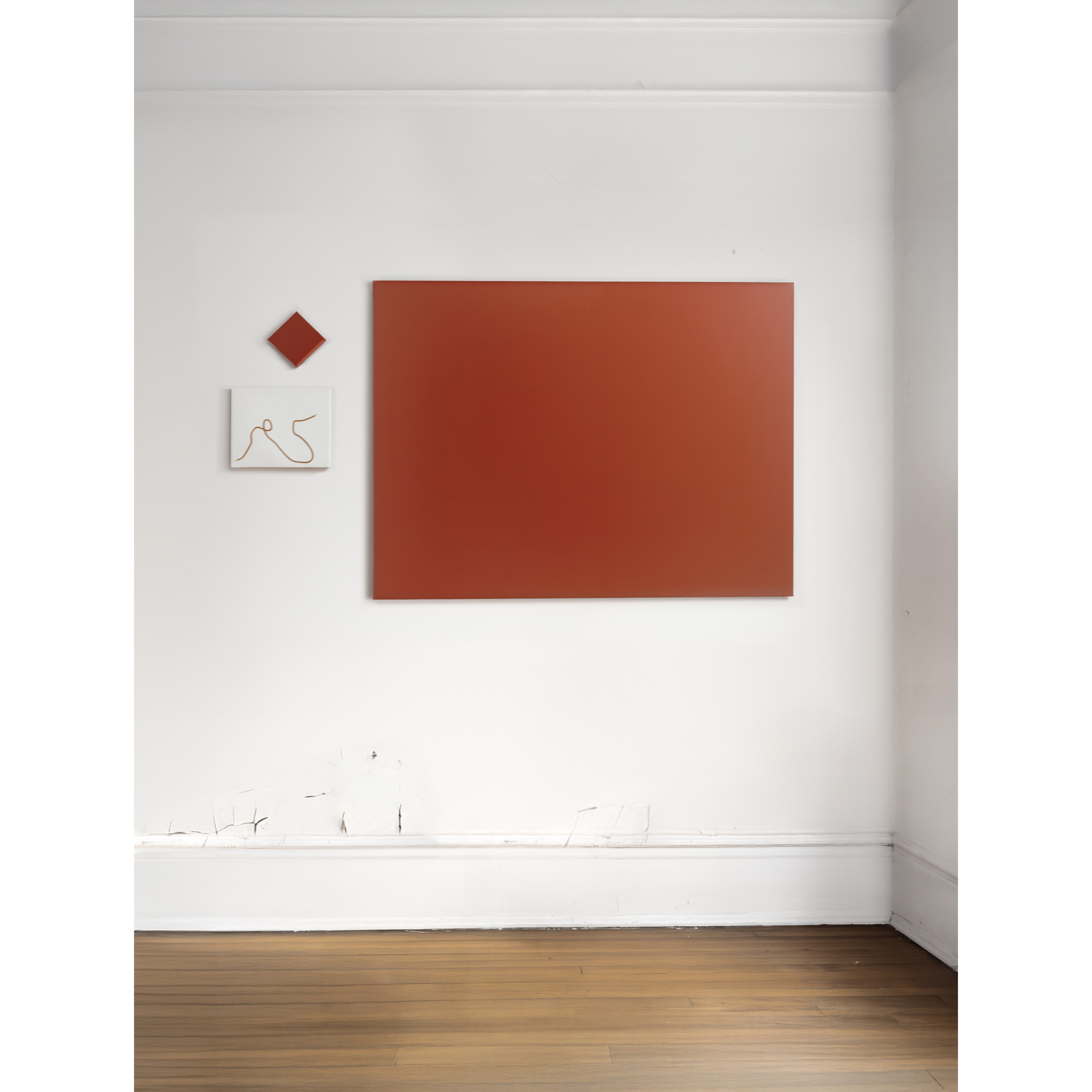
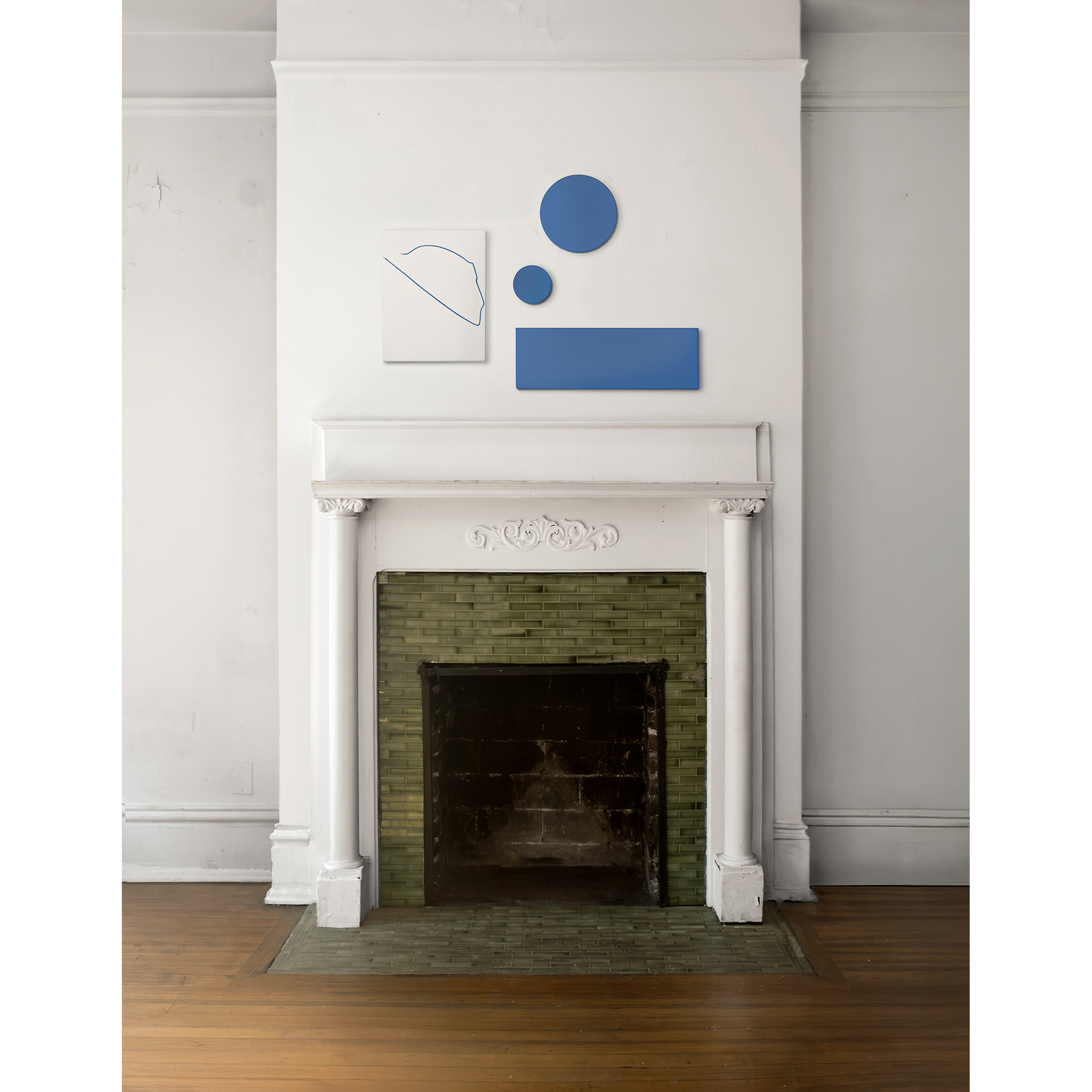
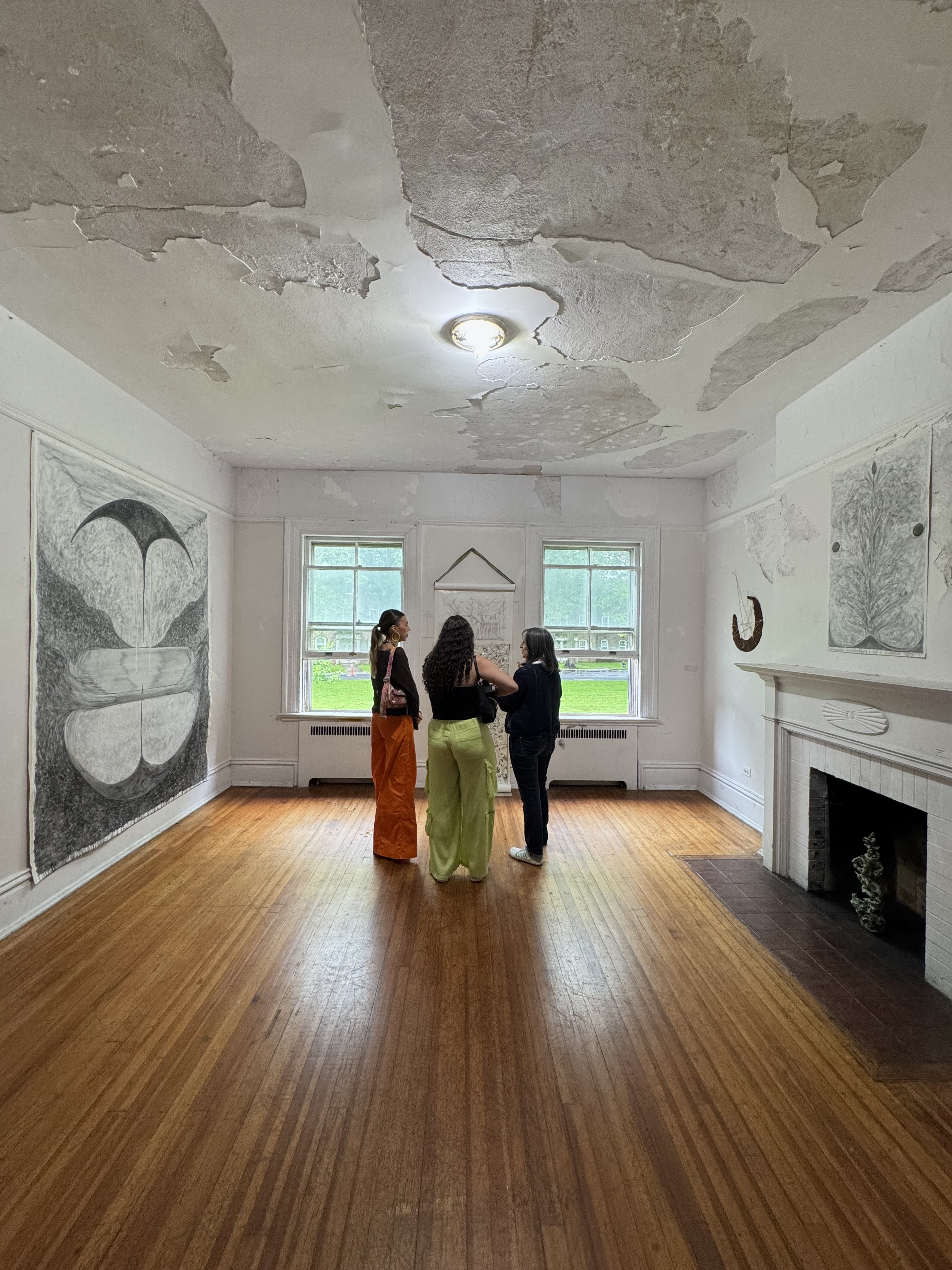
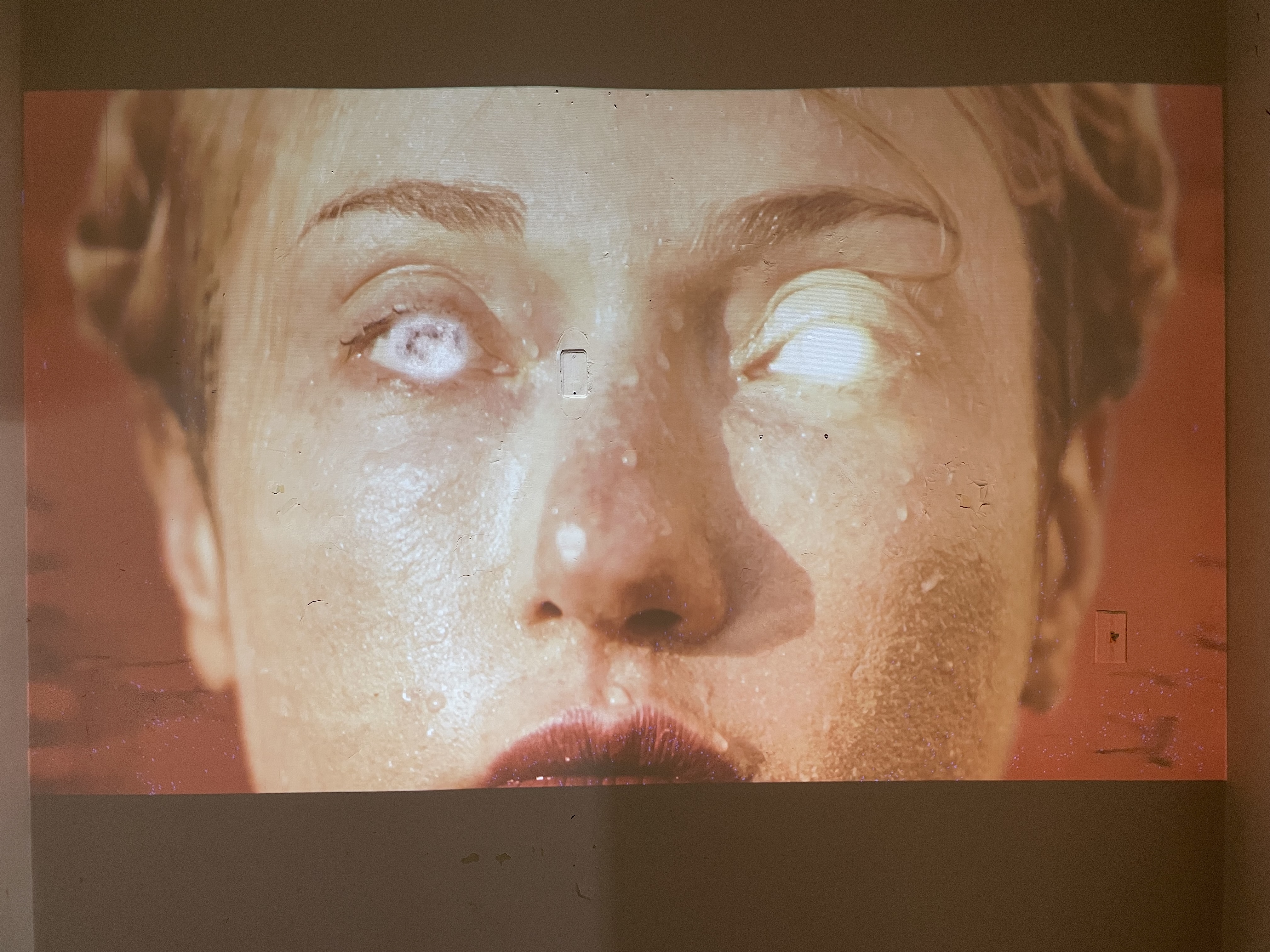


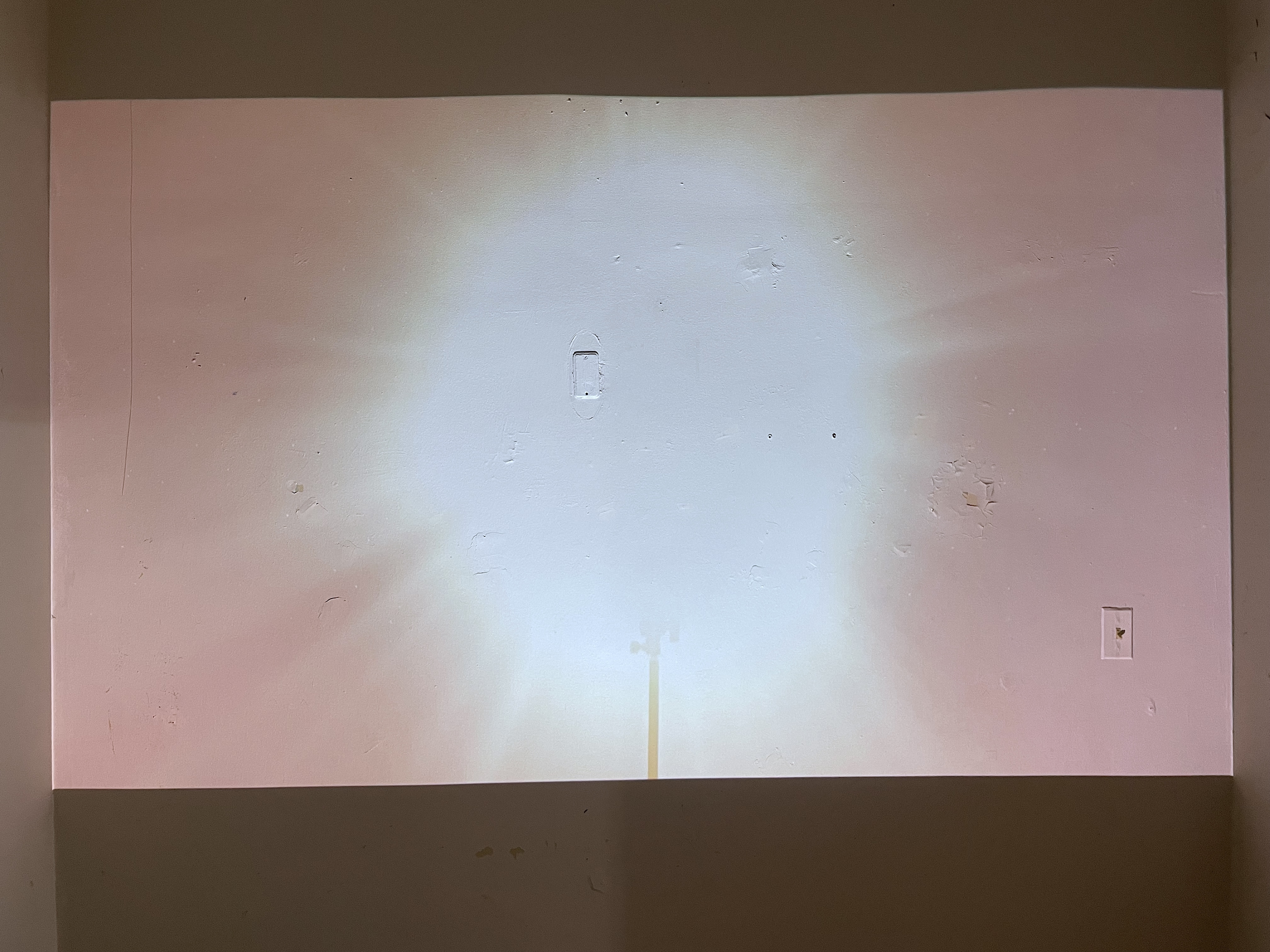


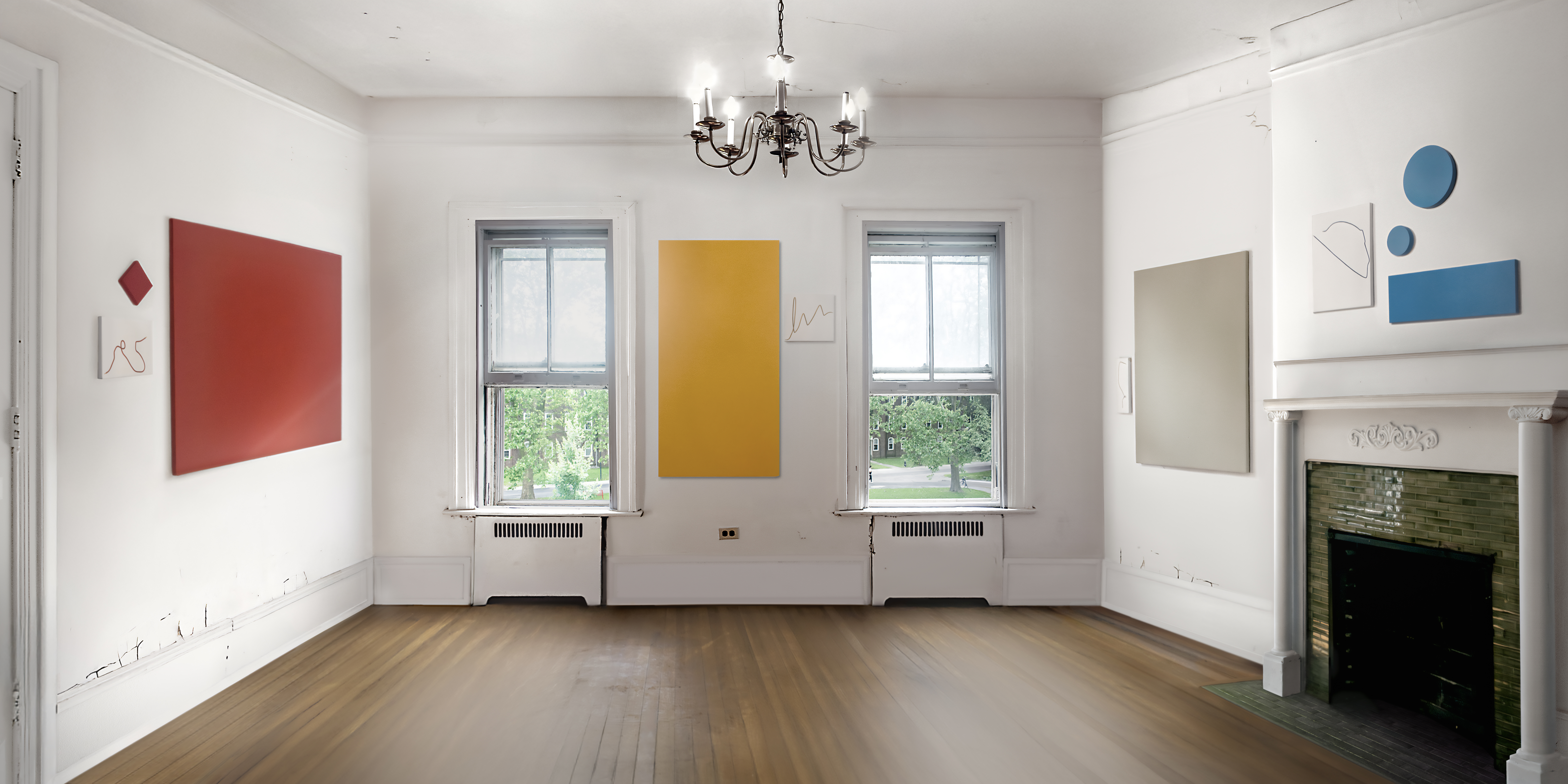


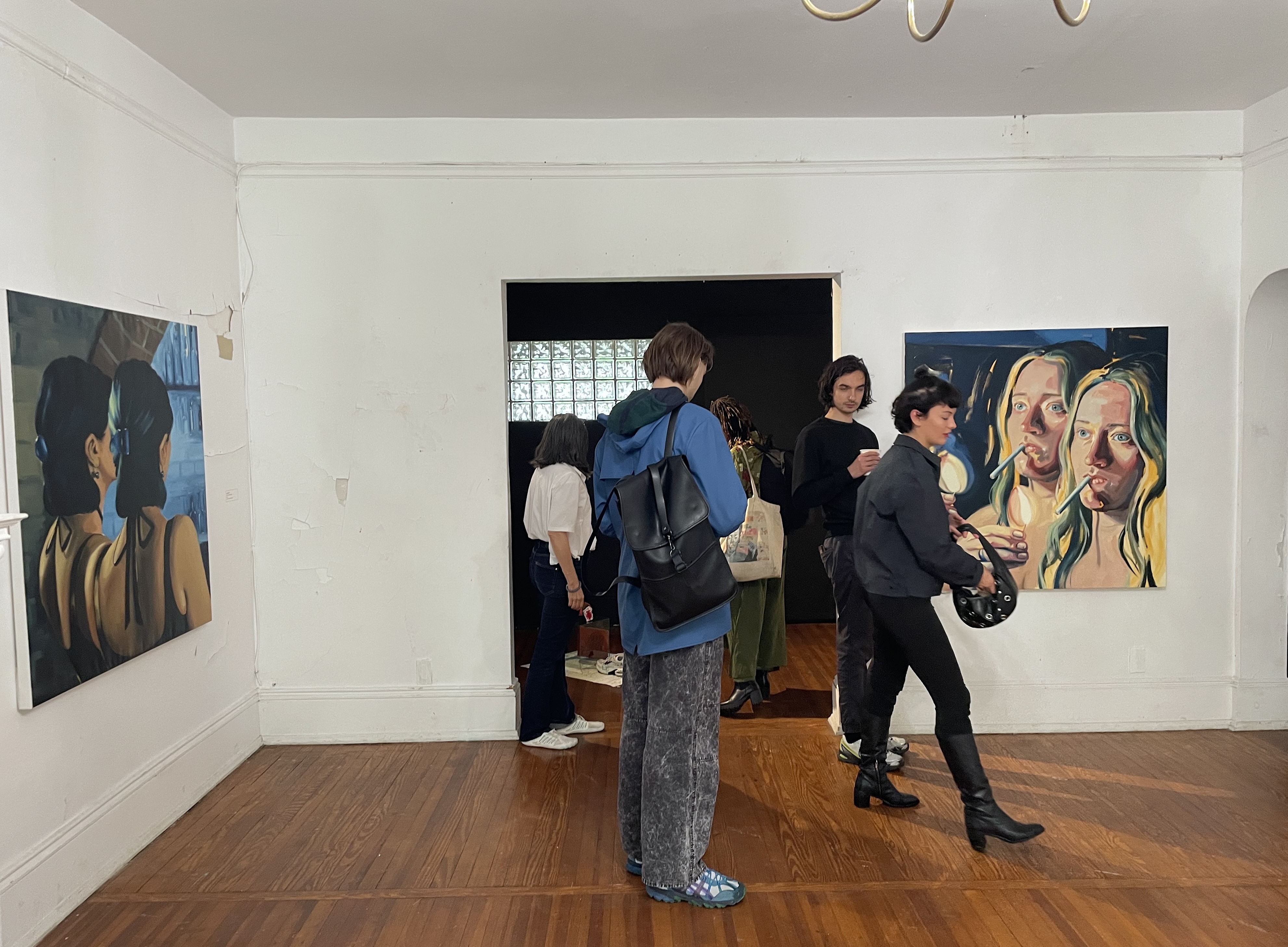
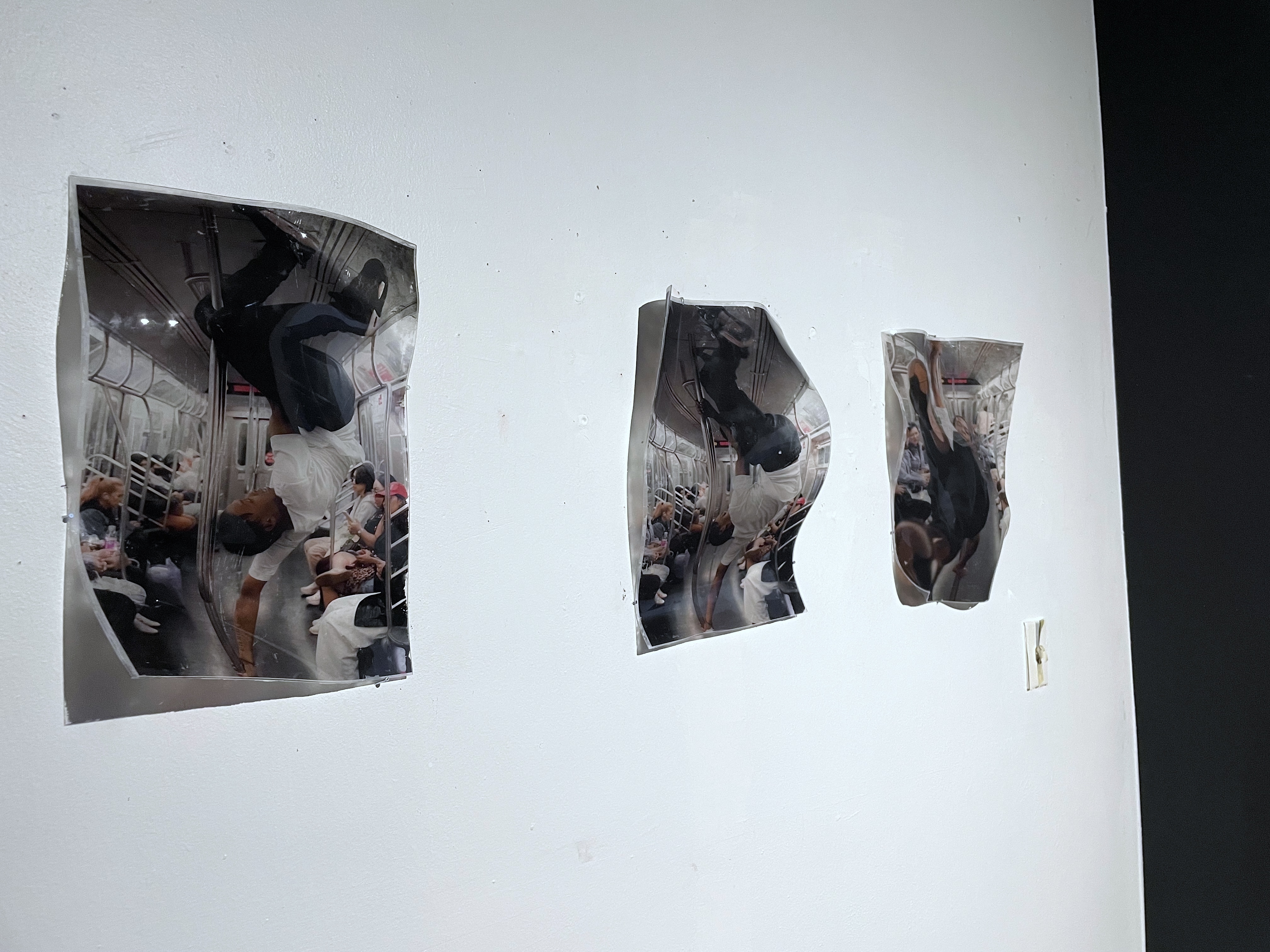
11 12 2024 → 16 12 2024
The curator of group exhibition “MURMURS & ROARS” UAR studios, Brooklyn, New York City, USA.
UAR studios, Brooklyn, New York City, USA
~ MURMURS & ROARS ~
Curated by Eglė Ambrasaitė
Embracing the works of 21 artists, “MURMURS & ROARS” draws on the feminist scholar and critical theorist Sarah Ahmed’s reading of vulnerability as an opening - a site for connection, exposure, and potential transformation. For the writer, “vulnerability is not always a retreat from the world; it can also be a way of relating to others, a way of opening oneself to the potentiality of being transformed by encounter”.* In this group exhibition, by opening up to one’s and other’s refined sensibility, artists imagine it not as a condition to be overcome but as a site of resistance and relationality. While playing, longing, lamenting and dreaming, vulnerability is manifested here through the tension between holding and surrender. Artists’ voices grow into both soft murmurs and noisy roars - collective movements of proposed intimacy and action.
To begin with, Mikaela Montenegro’s (EC) sculptural installation fills the space with the fog - a ghostly curtain of what is both the known and the unknown, hence, inviting us to give in to the confusion, isolation, and fear as a way to accept oneself fully and prepare for ‘raw’ connections. Similarly, Sigrid Luitsalu’s (EST) collages perform as emotional cartographies, where the autumnish dried Ginkgo Biloba’s leaves capture the melancholy and reminiscence of the lost (/death) and the (always) found (/life). In addition, Ciel Miao’s (CHN/USA) large scale mixed-media painting, created while trying to surrender to the process, but still being caught in-between discipline and madness, functions as a dream-scape and offers us a possibility to hold on to the fleeting moments of our memories, particularly those of one’s mother. In a similar vein, Llewellyn Skye Quabba’s (AU) mixed media installation operates as a sculptural intervention, which offers an unexpected intrusion of beauty into a functional and in-animate space - a white cube’s gardenscape of sweet surrenders. On a playful note, drawing on one of Arnold Lobel’s short stories for children, entitled “A List” (1972), Sherly Fan’s (CHN) sculptural installation highlights the humorous side of placing oneself in the hands of a structured plan and accentuates the importance of being fluid. Likewise, George-O-‘Keeffe’ian-like non-human figures in Juan Luis Landaeta’s (VE) many-hued painting shape the materiality of primordial space, where his usage of color, form, interactions of tone, shape, and rhythms enkindle the feeling of timelessness and opening up. Keeping up with the playfulness, Ana Julia Vilela’s (BR) dream-like painting of (what seems to be) the gathering of tearful clouds, activates the discussion on non-human agency, emotional management and ‘endings’. Furthermore, in a very Roy-Andersson’ish way, Victoria-Anne Rosales’ (USA) meticulously detailed micron pen drawings and a sculptural installation explores the absurdity and disruption in everyday life experiences and brings to the fore the desire and need for connection. In parallel, Faye Harnest’s (CAN) tactile vibrant textile sculptures explore the themes of grief, mental health and disability politics and by weaving together the complex scenarios of challenge and joy, desire to facilitate safe spaces for shared vulnerability and care. Correspondingly, in Giorgia Marras’ (IT) perspicacious painting, an iconic yellow smiley balloon, gliding in a distinctively representative landscape of Manhattan’s streets (still tethered by a human hand), occupies a central position both in terms of composition and affectively: as if a secret selfie, its reflective texture captures the gloominess of its holder, caught between what was and what could be. Furthermore, Simla Iceli’s (TR) immersive painting immediately pulls one right into the heart of what looks like a site of an incident, whose mise-en-scene, composed of boys - wrestling or making out - surrounded by cakes, sparkles and bubbles playfully tackles the questions of identity, power dynamics, and the toolbox of discipline, punishment and reward. Following up with the critical rethinking of supremacy and domination, Wilson Orellana (EC) uses painting to reflect on power and authority, provoking a dialogue about the effects of different power structures and how they influence ways of thinking and acting on a personal/collective identity level. By the same token, Jason Chung Yin Lam’s (HKG) interactive polyptych paintings mirror the world's realities: every week the artist finds himself in a role of re-reporter as he meticulously selects the most memorable and influential images from online news reports and social media, preparing us for our blurred futures. Additionally, McKinna Anderson’s (USA) process-based sculptural installations, in which found, both animate and in-animate, objects are grown with crystals, aim to question our understanding of ‘time’ and the systems of power and beliefs focused on its management and description. Moreover, embodying a more self-reflective approach, Kaio Wu Hiu Nam’s (HKG) video functions as a conceptual self-satire by focusing on the mental anxieties of contemporary art and artists and by questioning an artistic identity and contemporary art systems, knowledge and elitism with sharp tongue and witty humour. Aiming for a collective re-thinking, Sining Zhu’s (CHN) video installation offers a de-colonizing artistic praxis: by tackling the practices of ‘outsider’ cleansings and questioning what it means to ‘truly’ belong, her situated and relational work is dedicated to explore the socio-economic registers of gentrification’s processes in the area of Chinatown (NYC). In parallel, Yinna Higuera’s (CO/EC) triptych photographs research into the complexities of migrant identity by delving into the relation between the woman and the land, pulsing with the affective nostalgia, search for belonging and questions of community. Correspondingly, in search of closeness and kinship, Summer McCroskey’s (USA) fragile but fierce double-sided textile paintings draw from queer studies to imagine the possible (and hopeful) queer futurities. In a similar manner, concentrating on the futurities of our mental health, Rosaline Dou’s (CHN/USA) multidisciplinary interactive installation focuses on the act of swallowing: both as an embodiment of repressed pain, and, in reverse, as a potentiality for a home feeling - as swallows, the birds, tend to create their nests from their own saliva. In addition, drawing from their experience as a young Black femme, Anika Kowalik’s (USA) audio-poetry installation delves into themes of authenticity, institutionalization, and ancestral healing, building a personal archive that is both demanding and reclaiming the (black) historical narrative. Finally, chasing sunsets and sunrises, Elina’s Abdrakhmanova’s (UA/RU/NL) photographs act as tender portals to get closer to, to feel in your gut what the strive for togetherness is: she captures the everyday lives of New Yorkers and their surroundings under the city’s natural light, reflecting on the matters of intersectionality with novel softness.
*Ahmed, Sarah. 2004. The Cultural Politics of Emotion. New York: Routledge.

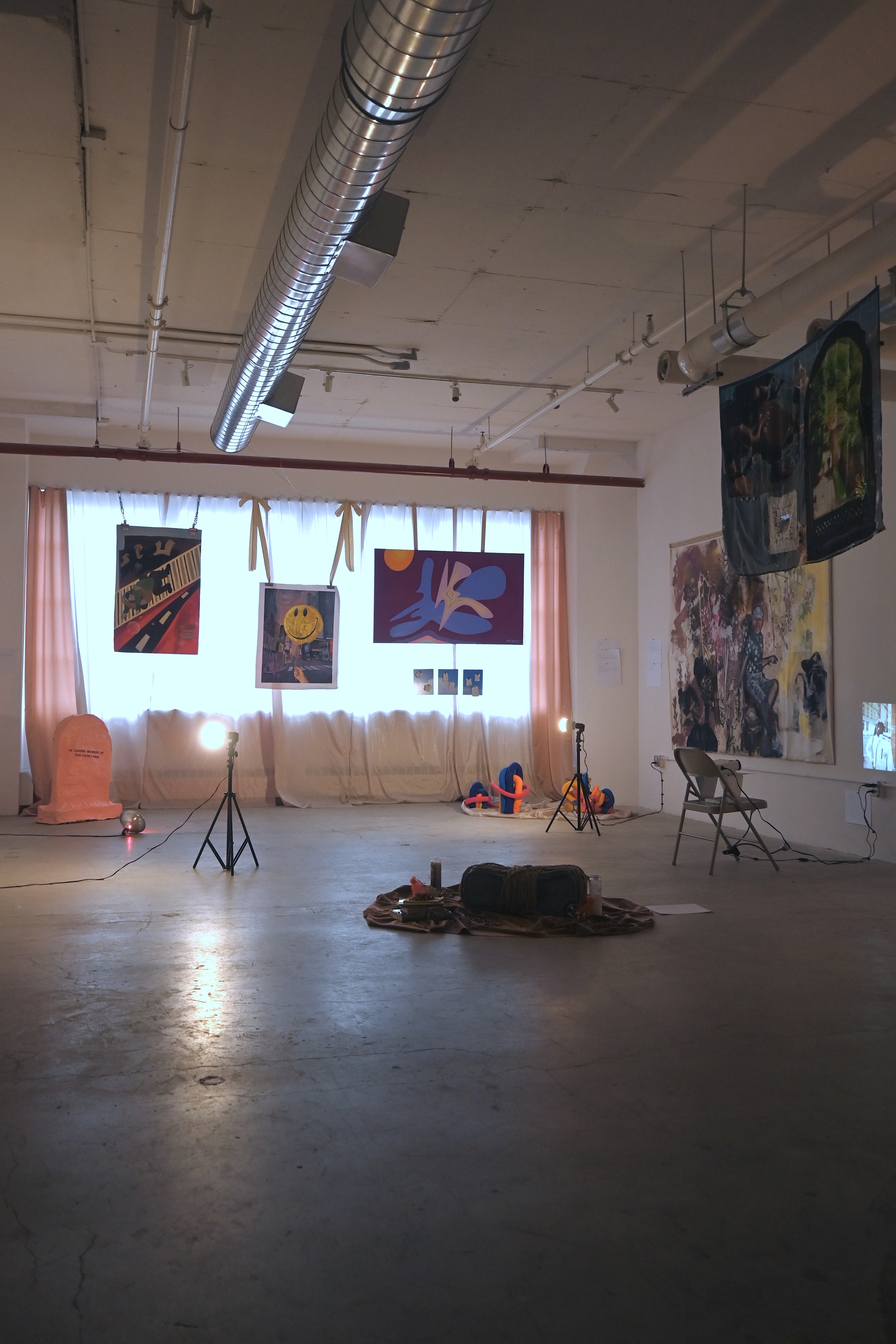
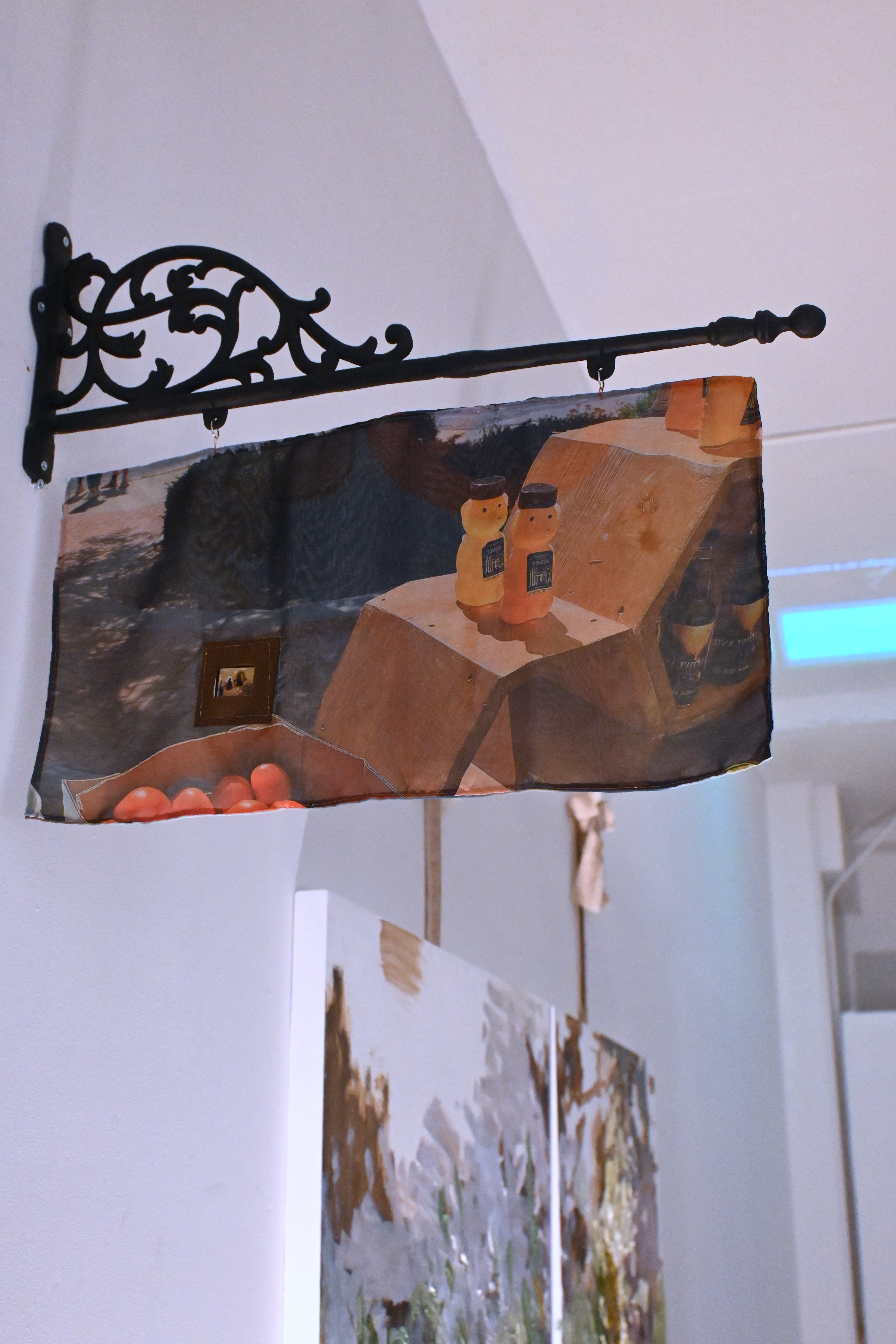
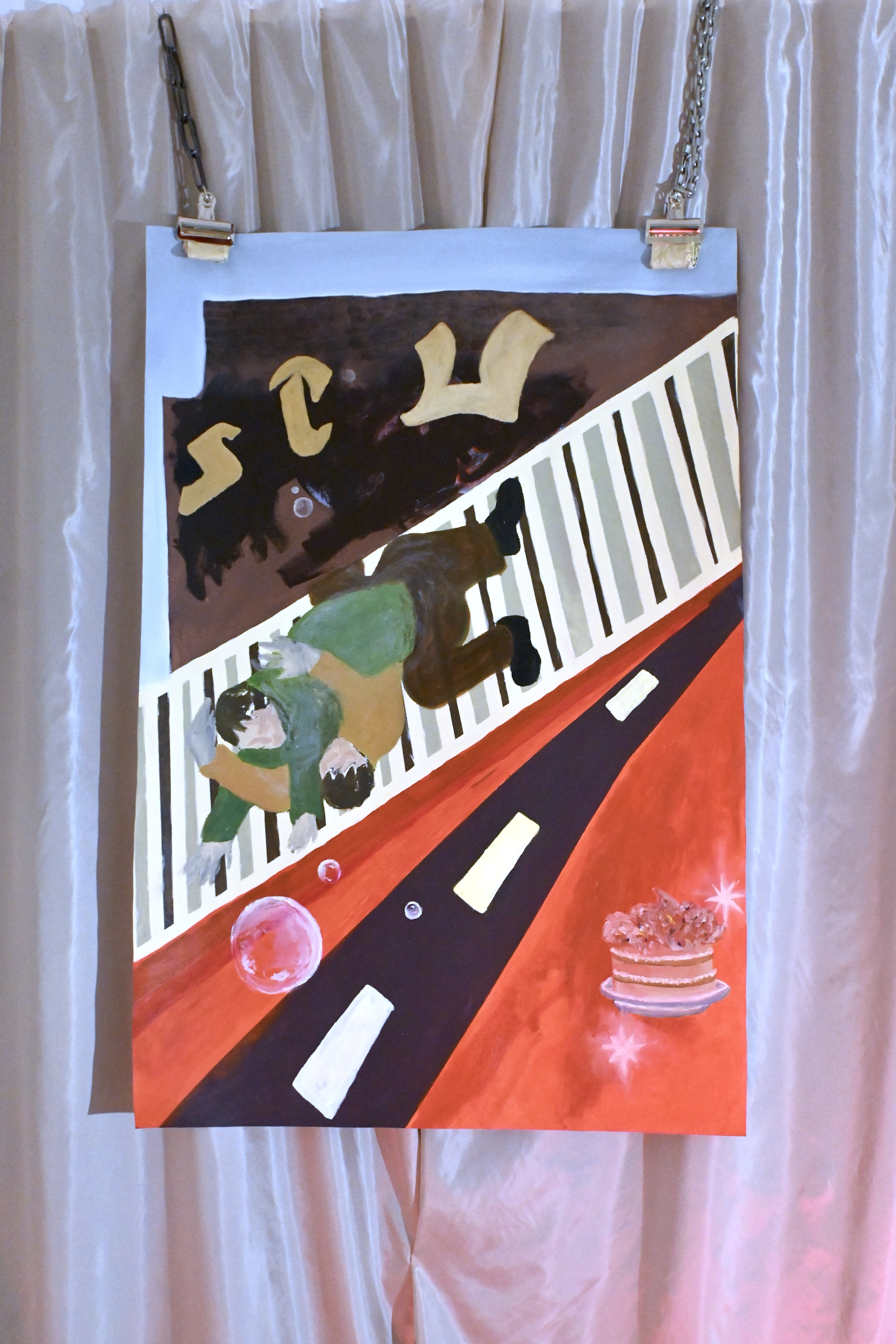
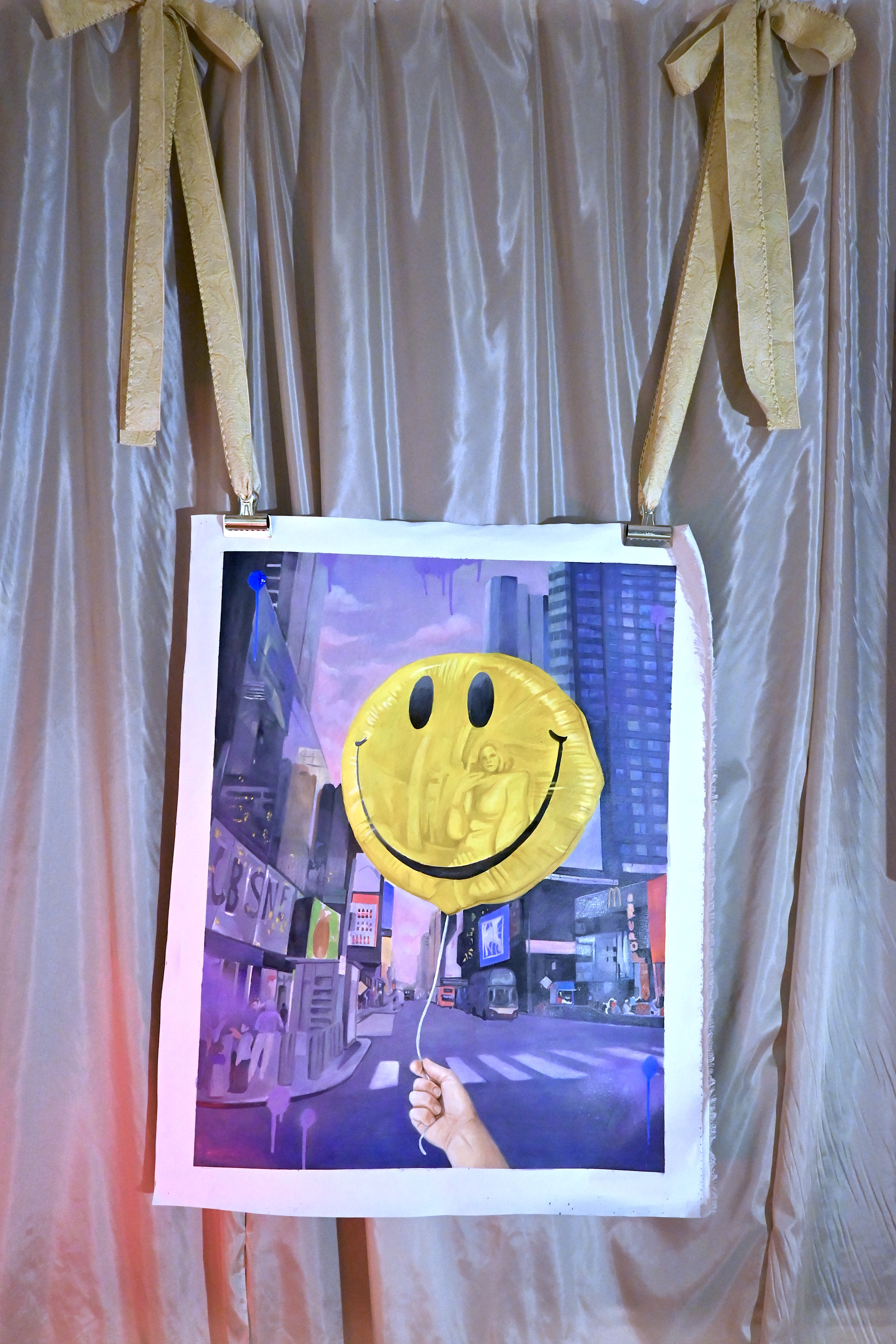


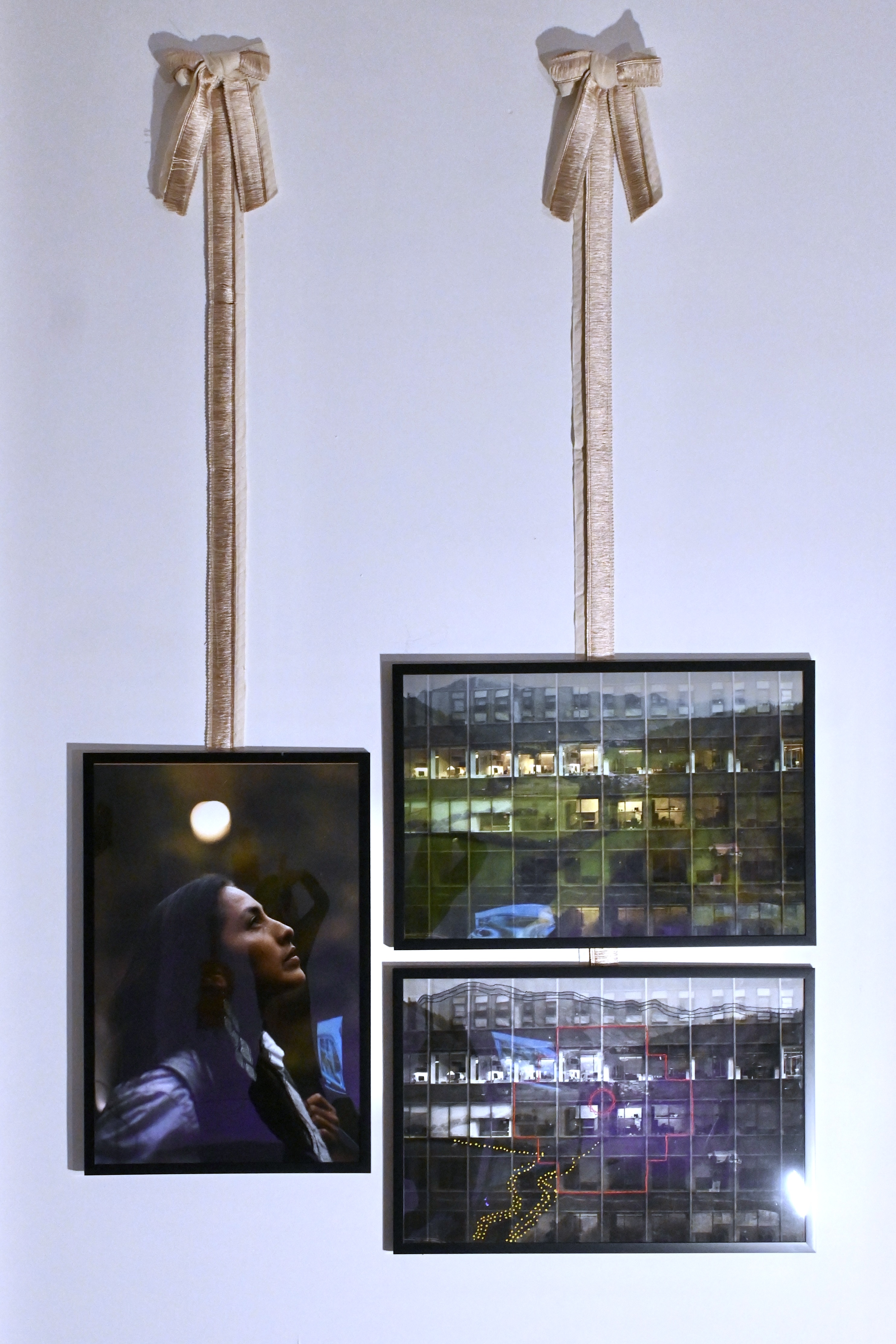

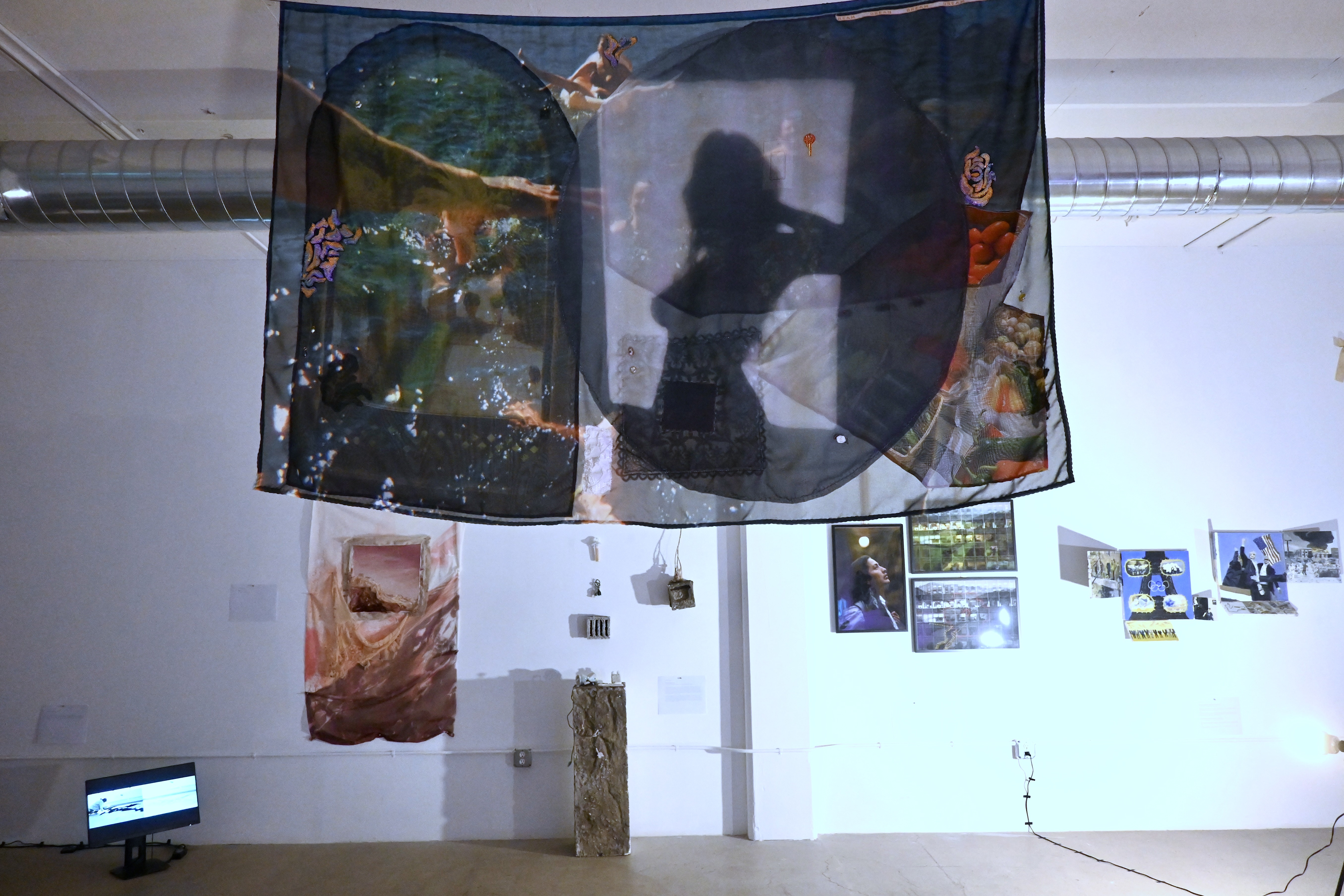
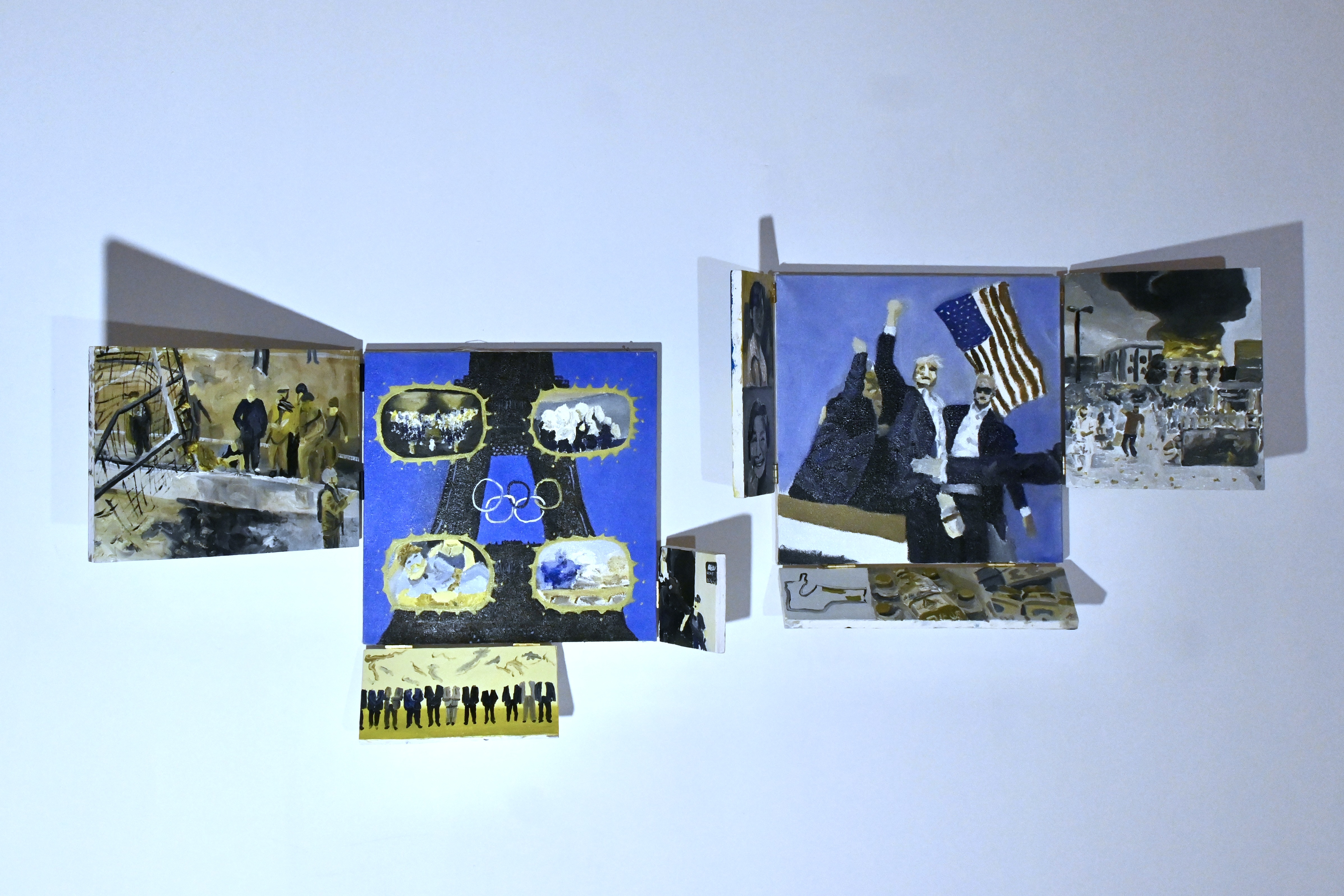
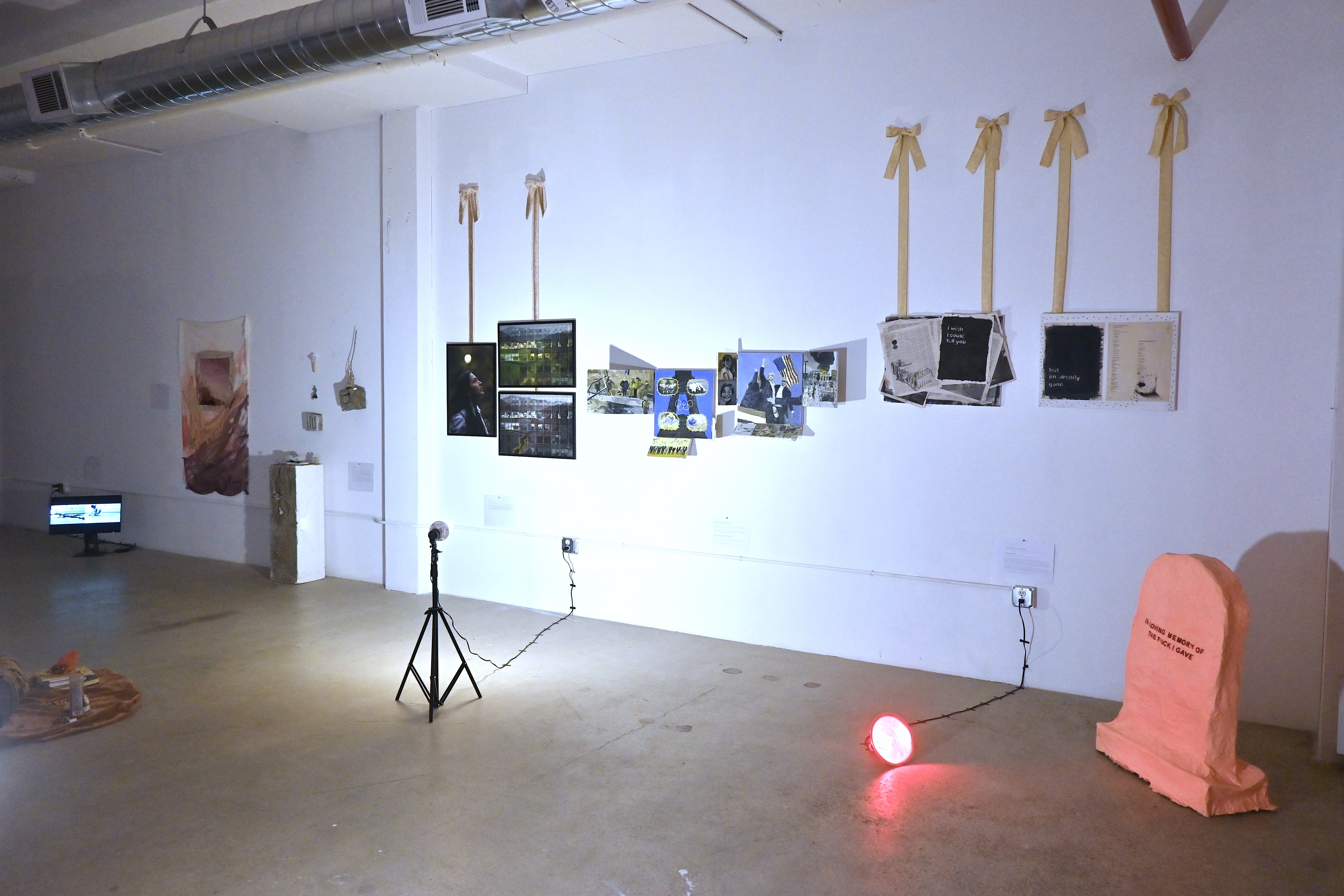
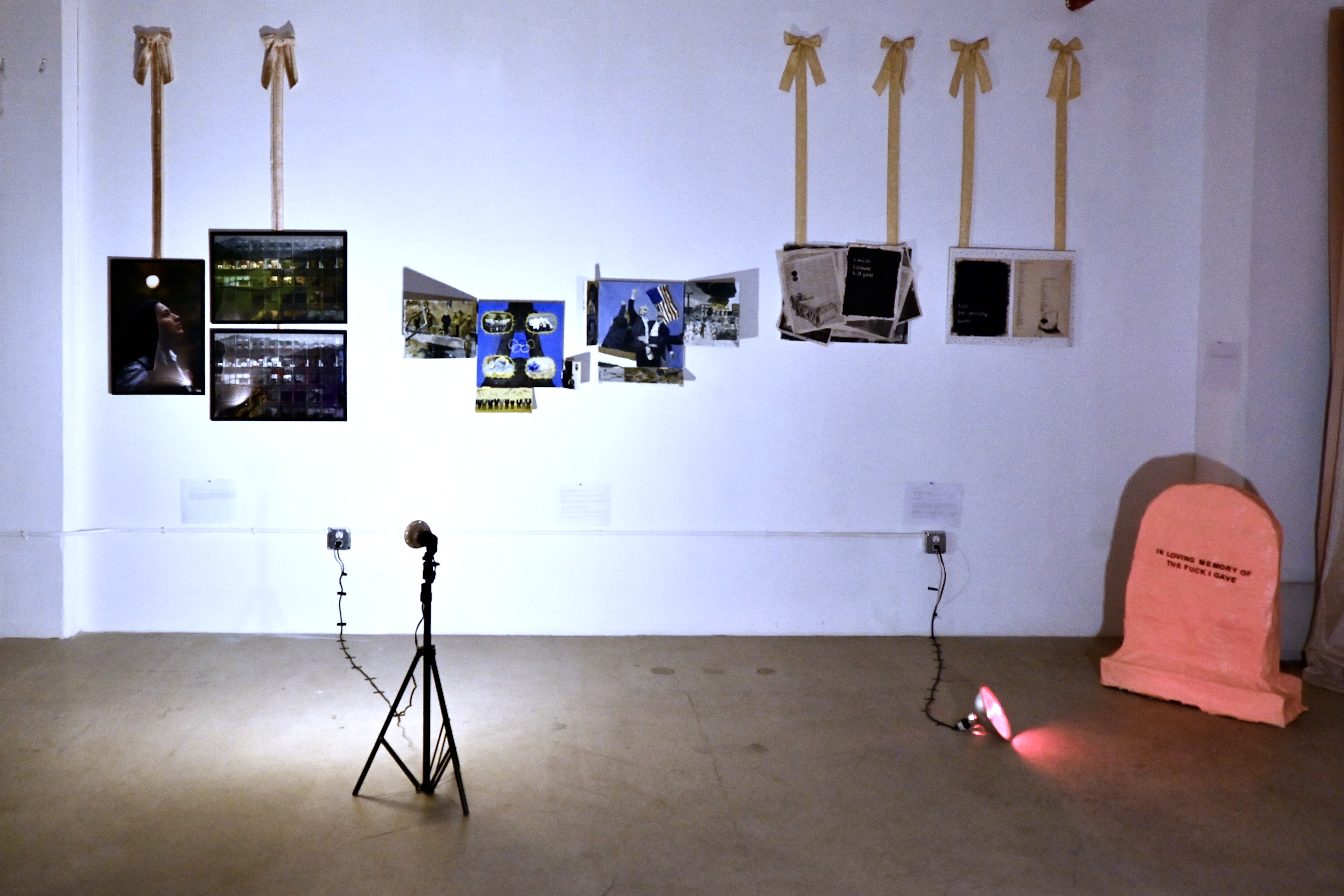
07 09 2024 → 15 10 2024
A solo exhibition of Tabita Rezaire in Aikas Žado Laboratory, Žeimiai Manor House, Žeimiai, Lithuania.
Žeimiai Manor House, Aikas Žado Laboratory*
Tabita Rezaire’s solo exhibition “Exuviation Fervor”
Opening: 2024, September 7th, at 18 pm (together with Laura Marija Balčiūnaitė’s performance “Venusian HC” at 19 pm)**
Curated by: Eglė Ambrasaitė
Architecture by: Artūras Čertovas
Design by: Jokūbas Juršėnas
Project’s-exhibition’s guide: Domas Noreika
Project is partly funded by Lithuanian Council of Culture.
EXUVIATION FERVOR:
Aikas Žado Laboratory presents a solo exhibition “Exuviation Fervor“ of the French-born, Guyanese-Danish artist Tabita Rezaire, which functions as a platform to embrace healing practices through feminist, decolonial and posthumanist prisms.
Tabita Rezaire's works dive deep into the analysis of the separation of body and mind introduced by Western culture, which is known to have established the foundations of existing forms of violence and inequalities, the phantasms of class, race, gender and species. In her art installations, opening the possibilities of intersectional politics and Afro-feminism, Tabita intertwines different time spaces where technology and spirituality intersect as fertile ground for nurturing visions of connection and emancipation. Tabita Rezaire's interdisciplinary path as an artist, devotee, doula, and farmer envisions network sciences - organic, electronic, and spiritual - as healing technologies that serve the shift towards what Tabita calls the heart consciousness. Embracing digital, corporeal and ancestral memory, she digs into scientific imaginaries and mystical realms to tackle the colonial wounds and energetic misalignments that affect the songs of our body-mind-spirits. Through screen interfaces, healing circles and land stewardship, her offerings aim to nurture our collective growth and expand our capacity for togetherness.
Her offerings have been shared widely – Centre Pompidou, Palais de Tokyo, Museum of Modern Art – Paris; MASP, São Paulo; Serpentine , ICA, V&A, Tate Modern – London; MoMa, New Museum, MoCADA – New York; Gropius Bau - Berlin; and within international biennales in Sydney, Shanghai, Guangzhou, Lagos, Kochi, Athens, Helsinki, Busan, and Berlin. At the moment, Tabita is based in French Guiana, where she is caring for AMAKABA a center for the arts of earth, body and sky.
*Based in crip materiality methodologies, Aikas Žado Laboratory is a contemporary art device, constructed in Žeimiai Manor House. Aikas Žado Laboratory is organized as an individually collaborative artwork by the artists Domas Noreika, Eglė Ambrasaitė, as well as other members of the collective. Part of its programs are administered, coordinated and developed by the Aikas Žado Association. The main activities of the Laboratory are practical experiments related to the management of cultural heritage objects and the combination of discoveries, methods, techniques and knowledge in the fields of contemporary art, science and culture. The main principles of the Laboratory’s activities are illustrated by the application of conservation, prevention and restoration systems in the Žeimiai Manor House. At the Laboratory, the team collects and tests historical materials, organizes scientific research and exhibitions, and presents cognitive expeditions that showcase specific solutions and methods of turning the Manor House into a contemporary artwork itself.
**”Venusian HC” is a performance based collective dancefloor. Rosacrucian techno dream. The dancefloor of a heart-space. Heart-venus-rose connection. Designed circular petal dance floor open to anyone who wants to be in their heart-space. Heartcore dancefloor carries hardcore* taste in itself as it has an infinite ability to feel and hold all the emotions of dancers on it.
Soundtrack by Karolina Kapustaitė
About the artist:
Laura Marija Balčiūnaitė is a former artist flâneuse becoming a ritual tools’ creatrix. Channeling a need for softness through hydrofeminism, sound healing, drawing, and somatic movement, she produces sensual energy and healing in vulnerability, exploring the edges of a healer and a magical femme portrait tightly connected to the erotic flow of the universe.
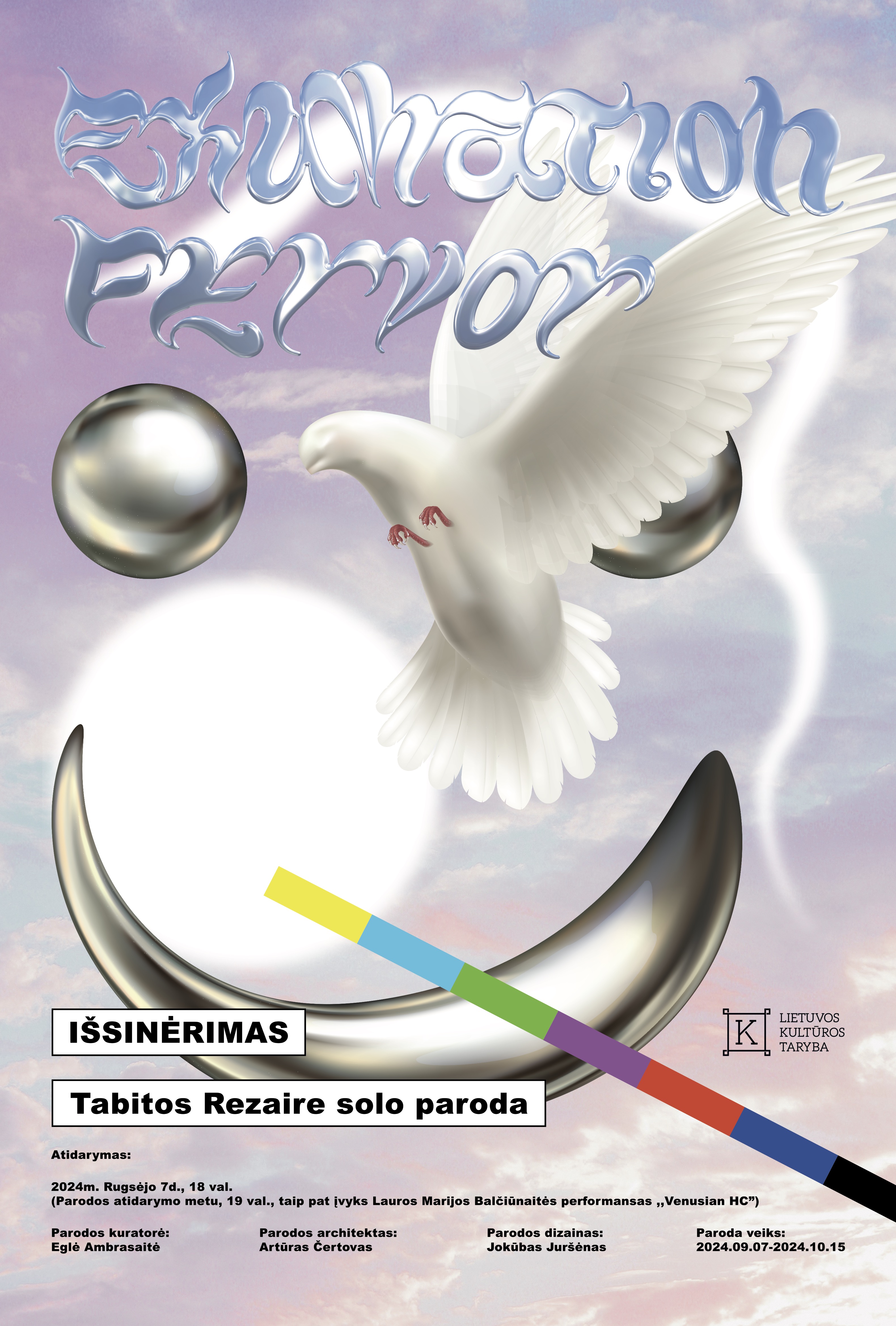
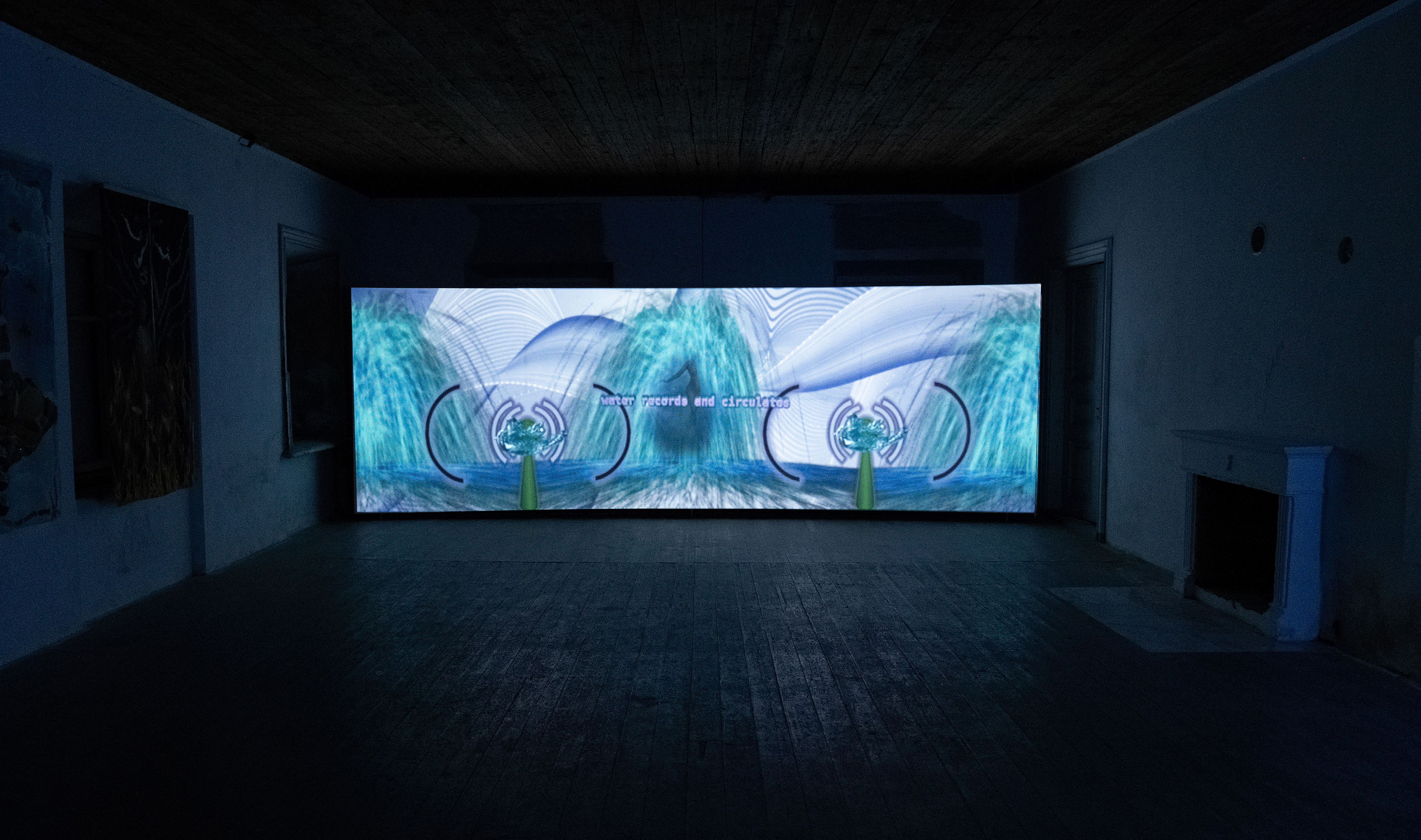

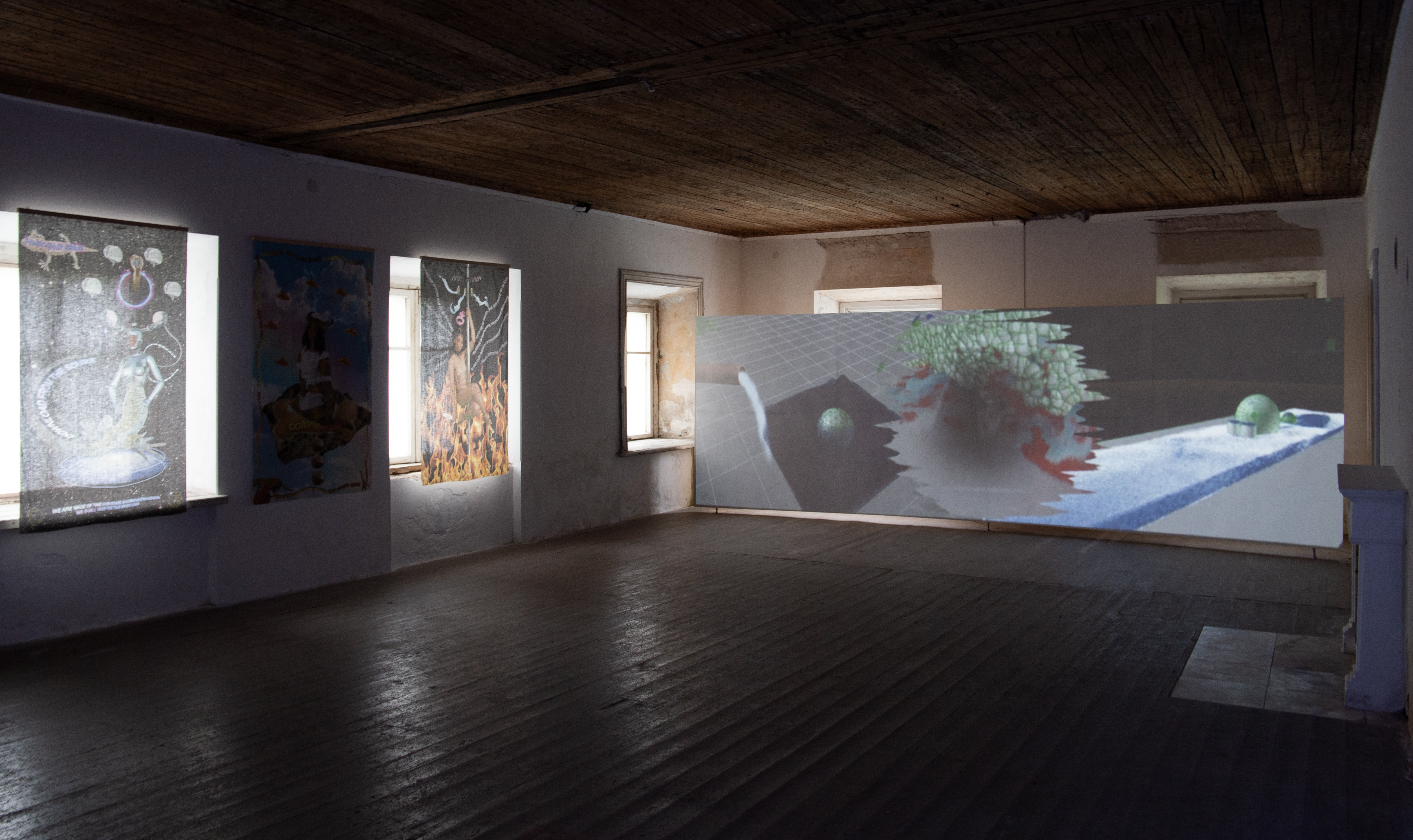

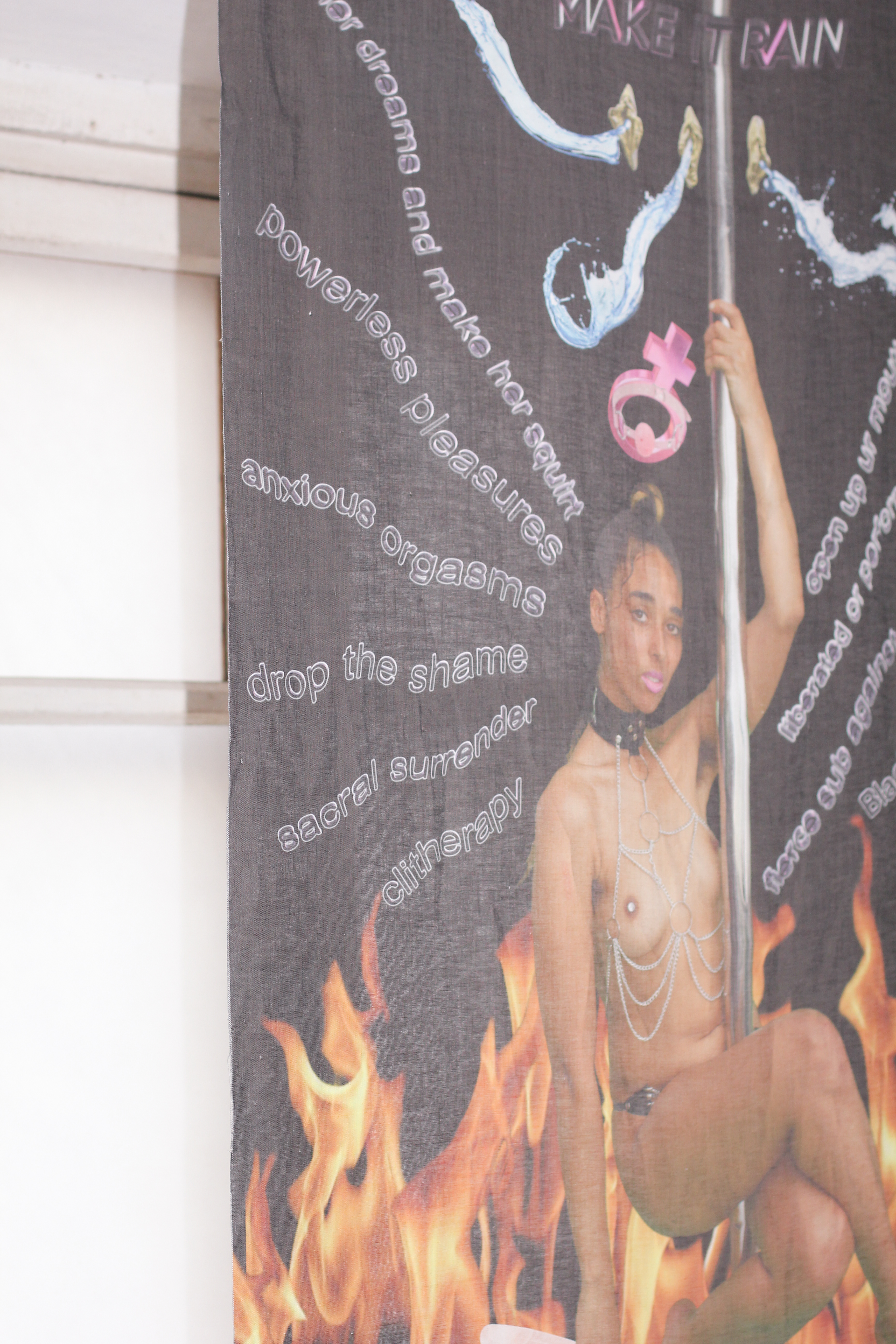

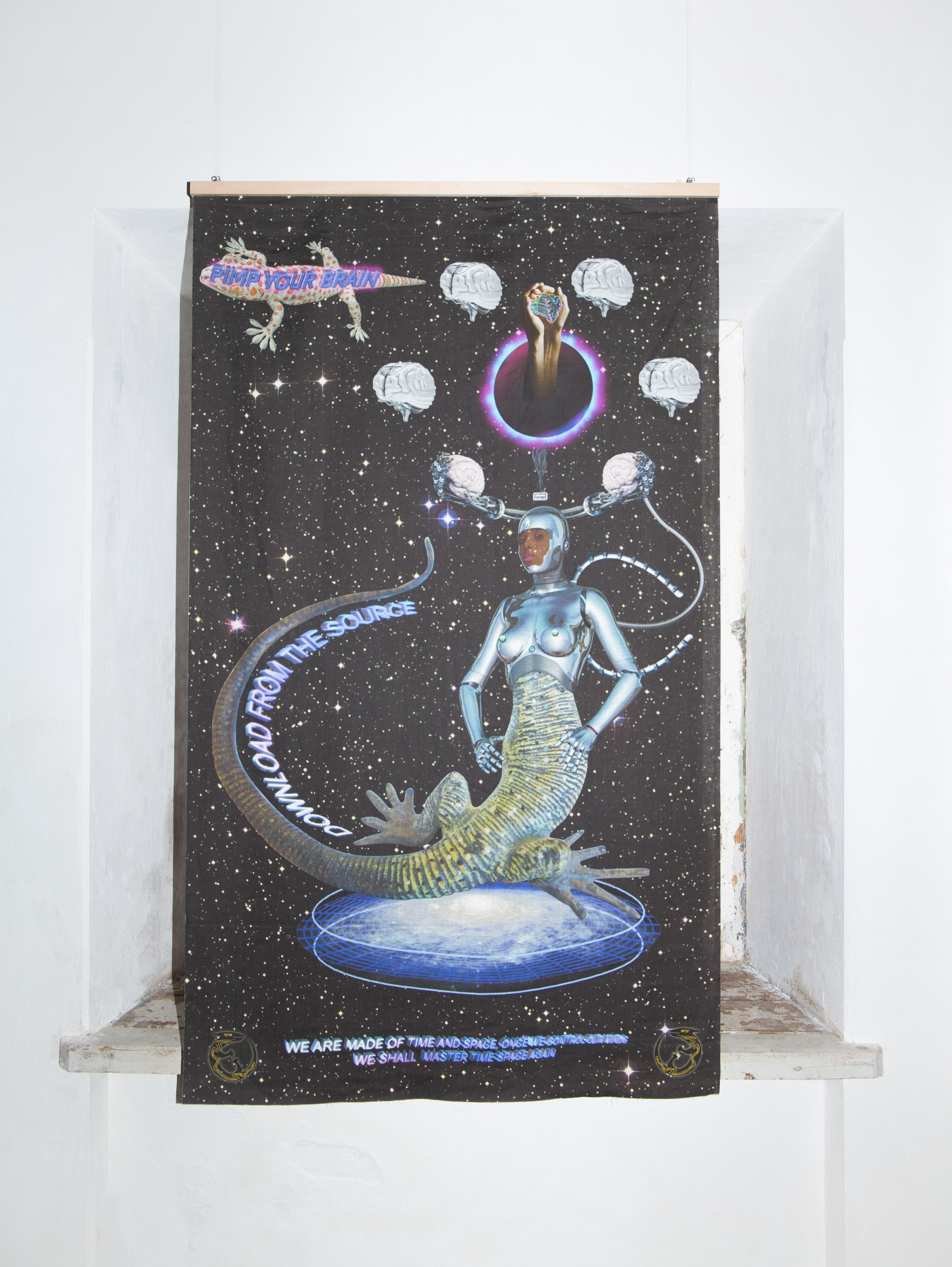





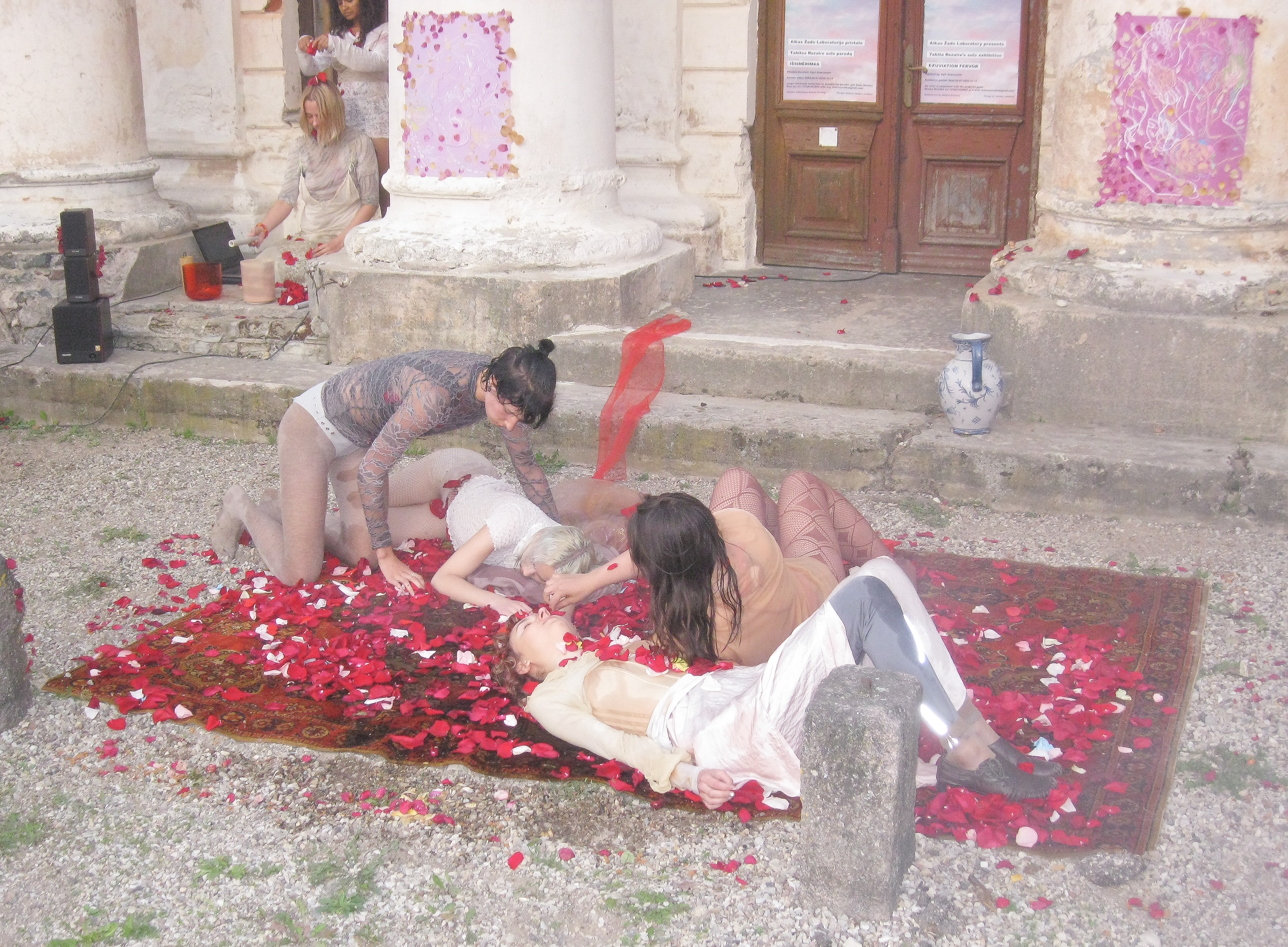
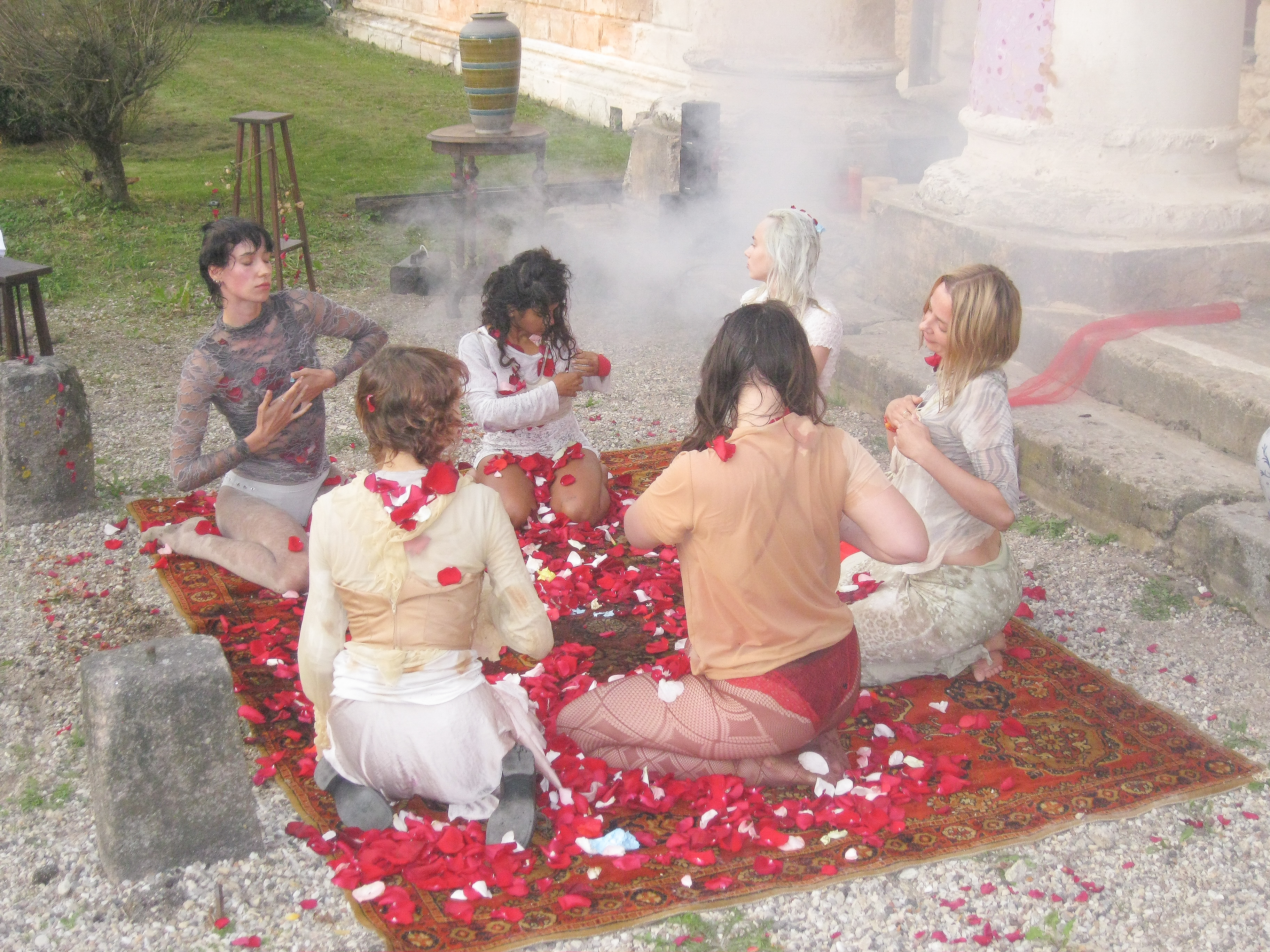


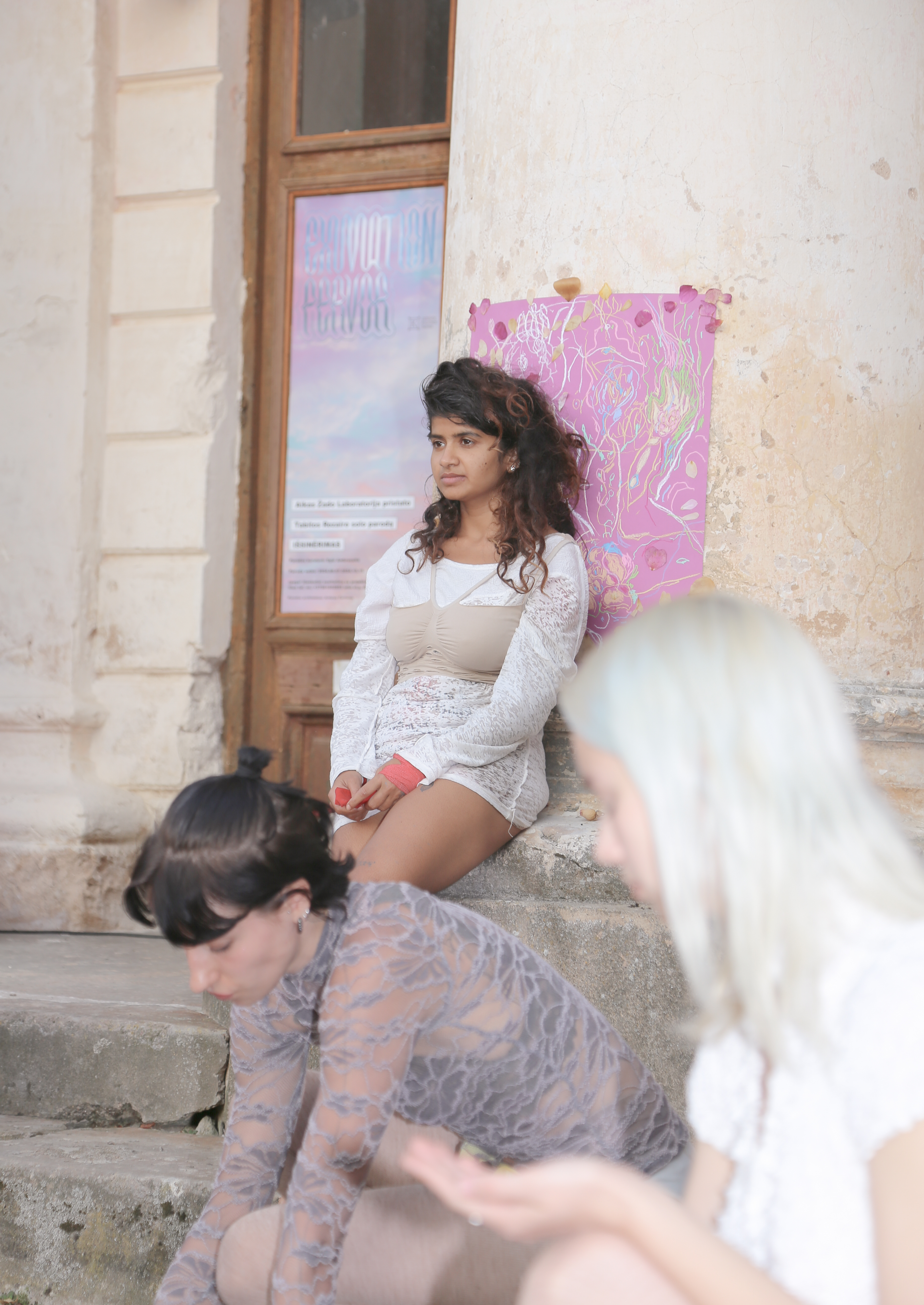

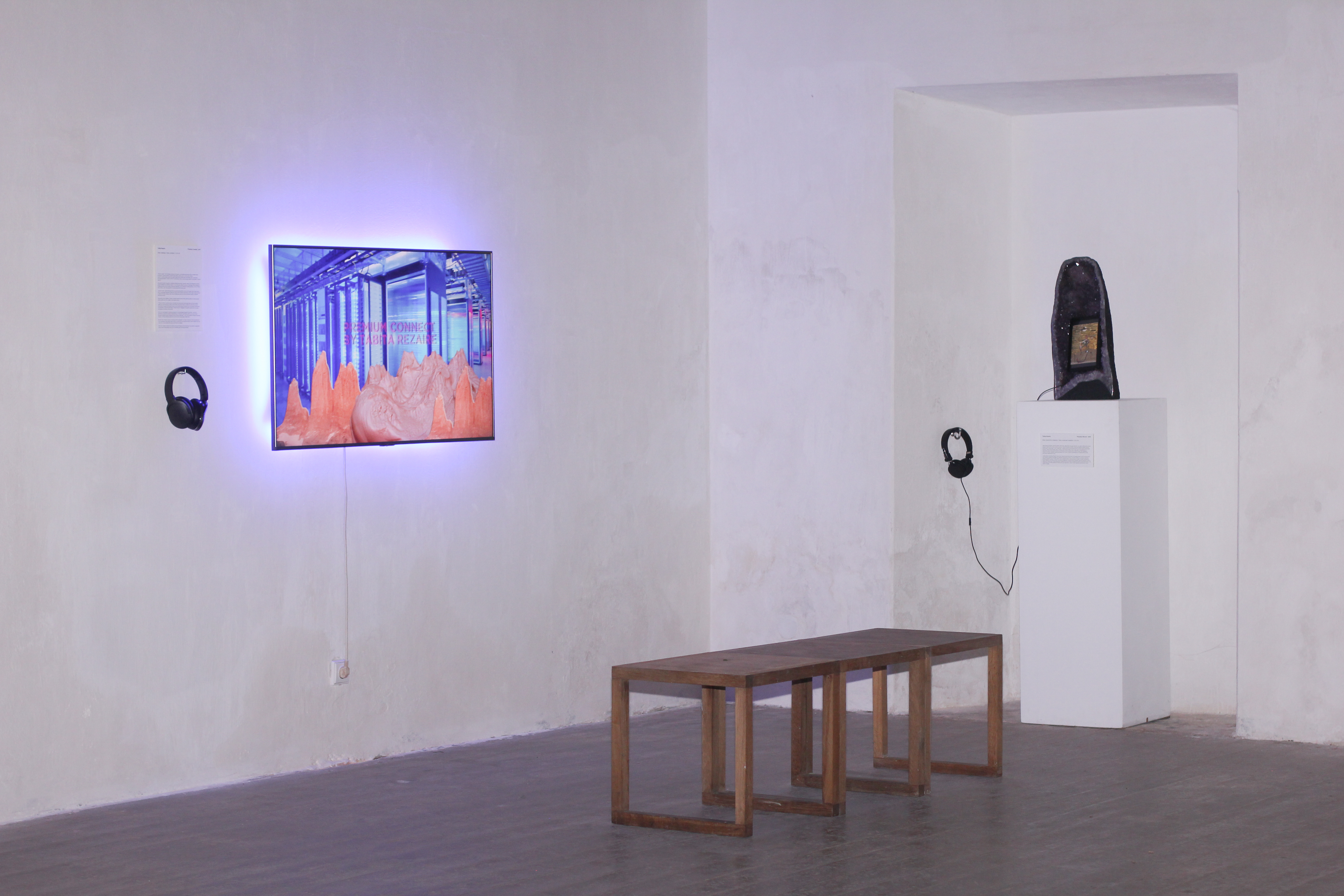




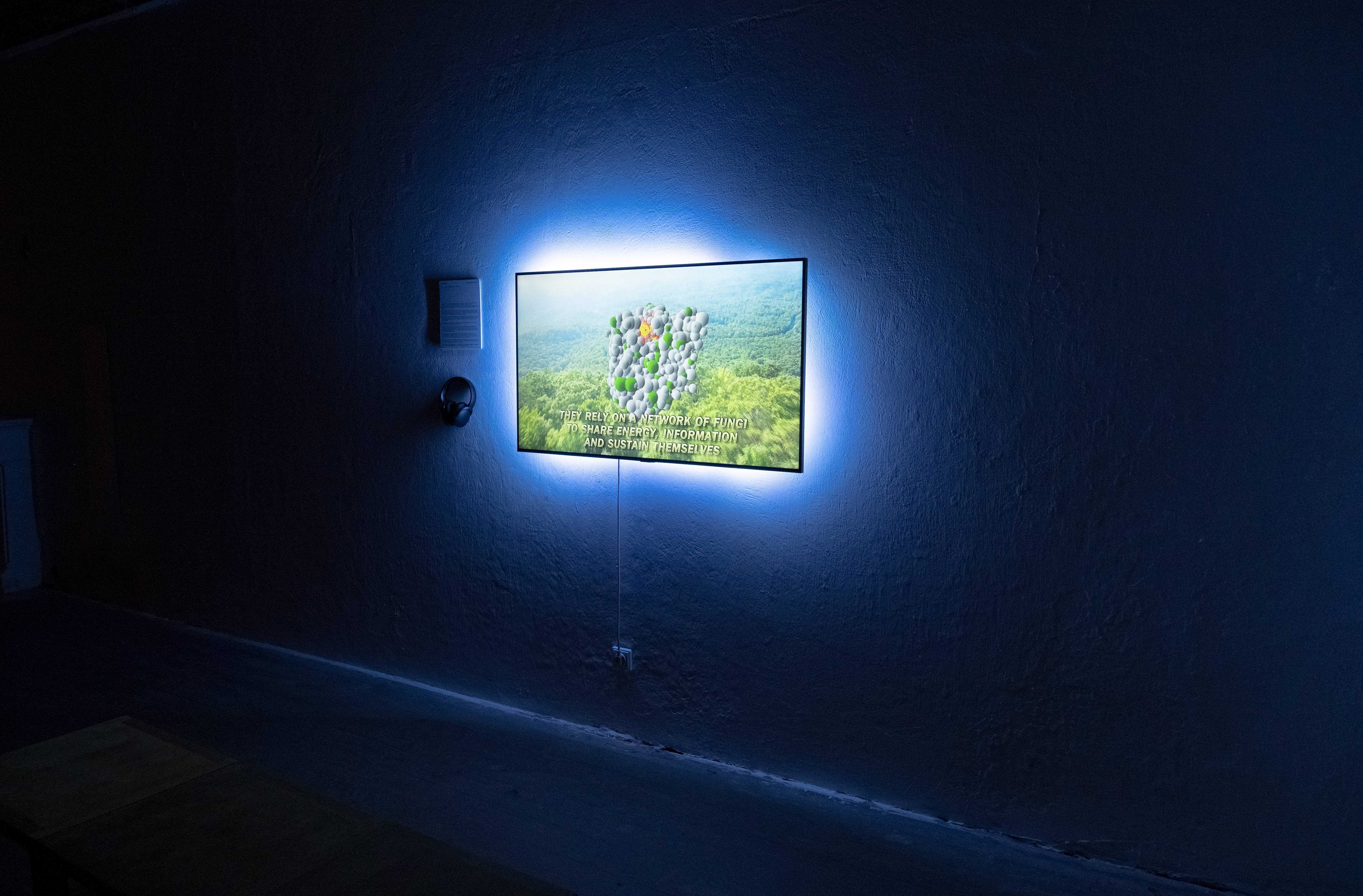

09 08 2024 → 02 09 2024
“Elektra”, a solo exhibition of Emilija Povilanskaitė in VU Observatory of Ideas, Vilnius, Lithuania.
Opening: 2024.08.09, 19 pm (https://www.facebook.com/events/516993450759051)
Curator of the exhibition: Eglė Ambrasaitė
Partner of the exhibition: Museum of Vilnius University, VU Idėjų observatorija
As if Elektra was a name, I like to think of electricity as an entity - carnal, visceral ghost, sparked by immediacy and magic.
Playing around with states of embodiment, intangible matter and control, this exhibition is an attempt to tame a lightning strike: Lichtenberg figures that are wing-like forms generated by the discharge of electricity, the scent of a downed power line - they’re like souvenirs made in a decade that never happened.
With high voltage, there’s always an element of danger – and that fear can possess in a very instant way. The clash of intense beauty and luminous horror is a moment that interests me a lot – how delicate beings interact with brutal, unwavering forces. There’s an inciting incident, uncontrolled, unpredictable force, which leads me to explore the transience of being human and prototype a world that is parallel, invisible or extinct, while drawing attention to largely overlooked mental landscapes.



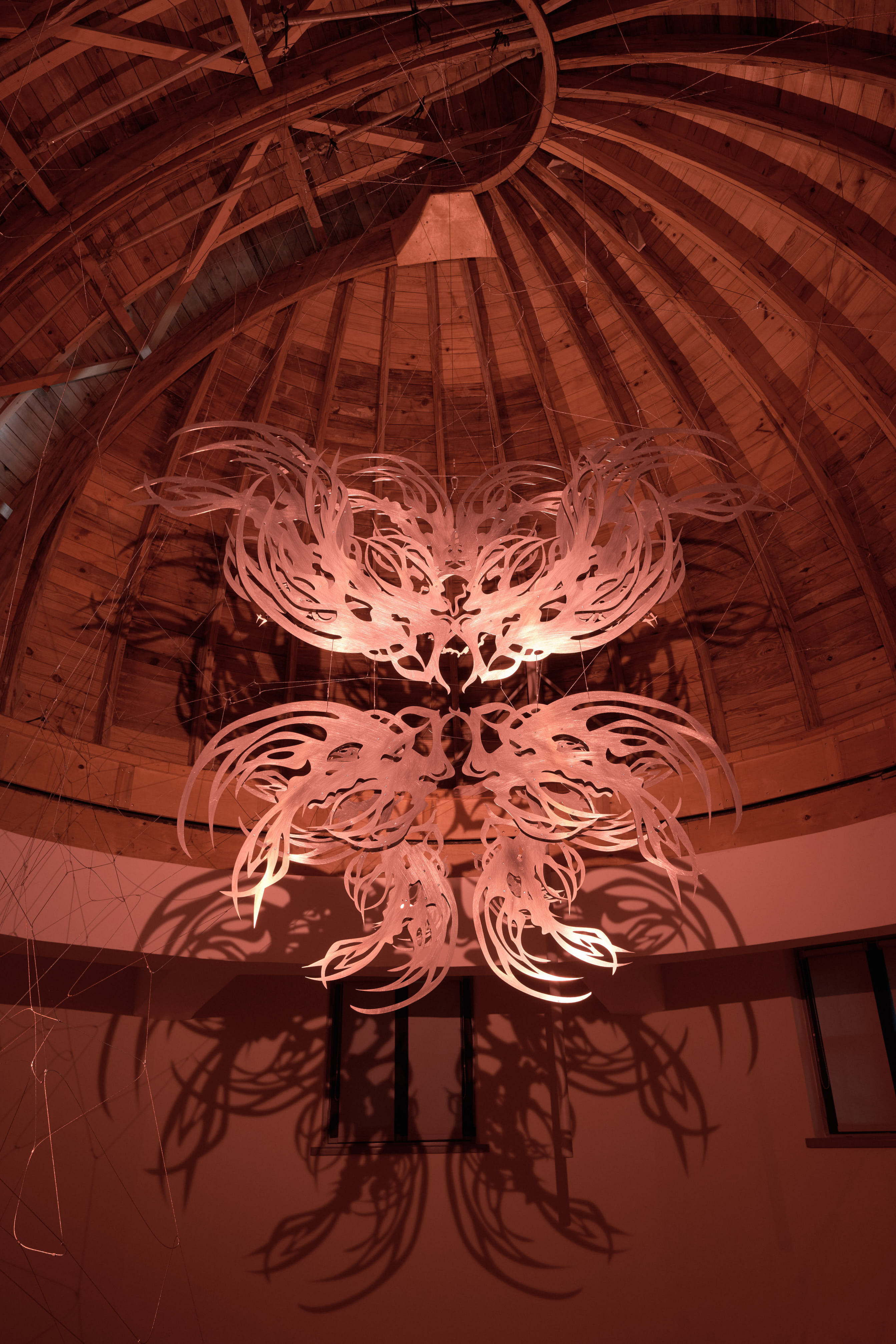

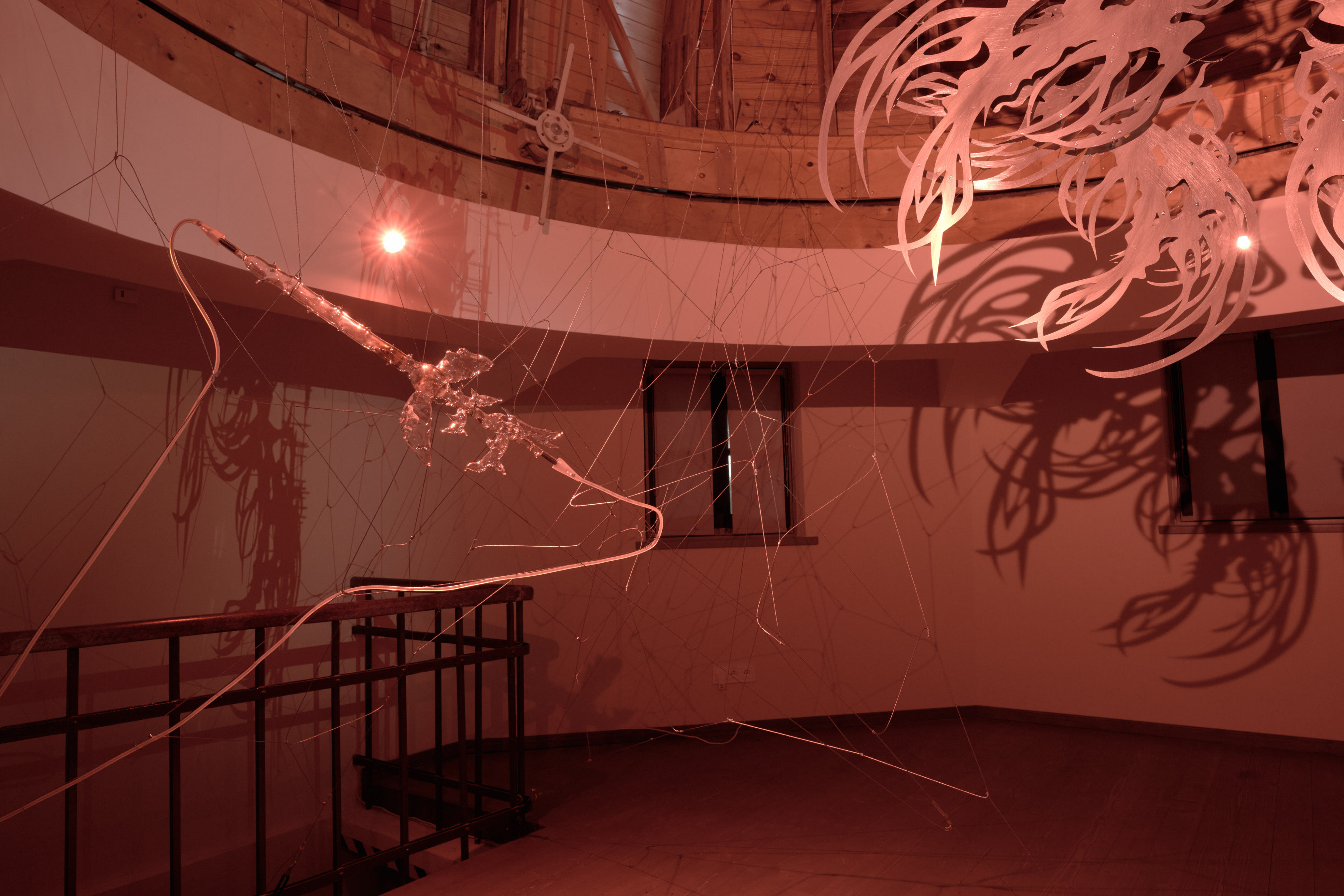
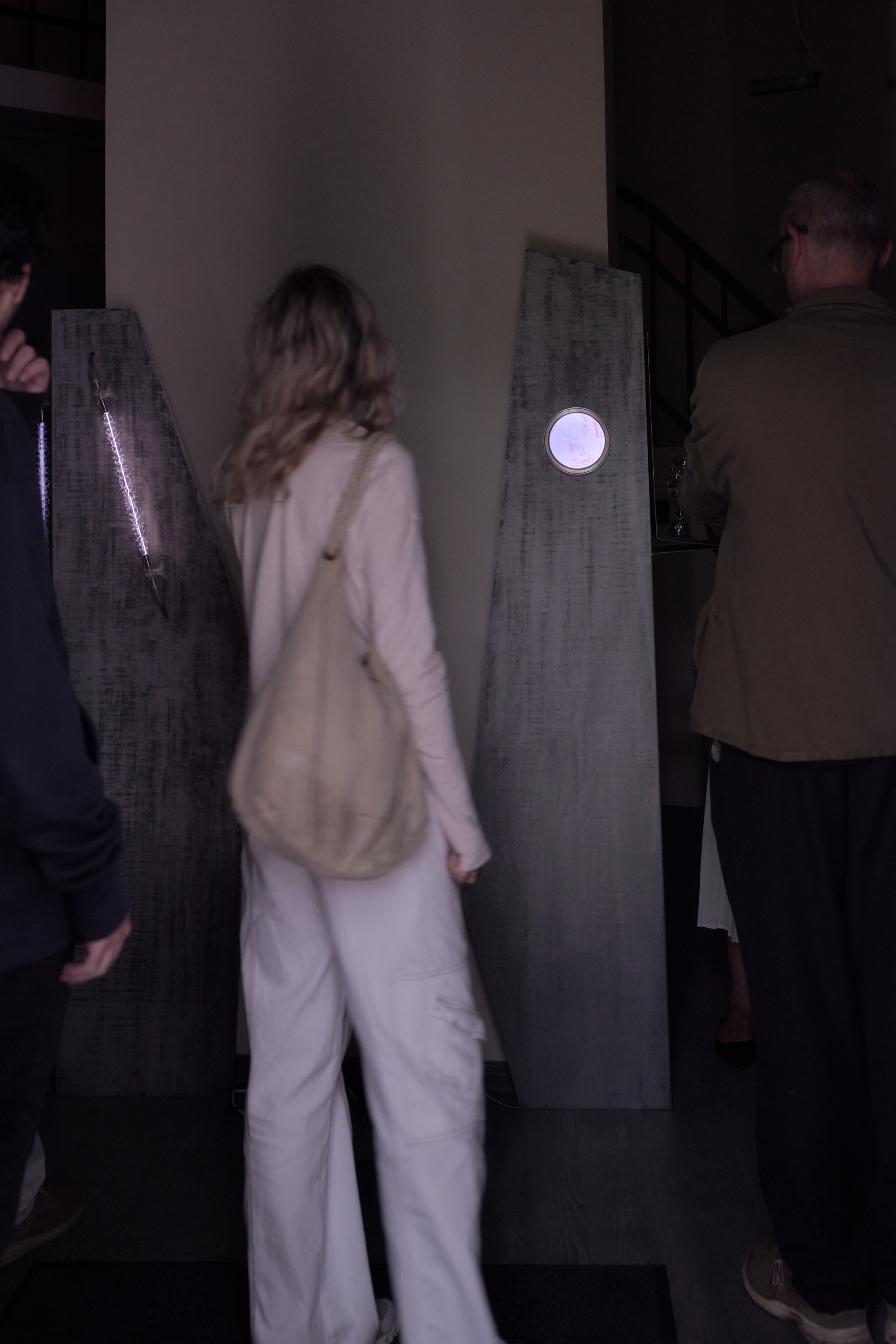

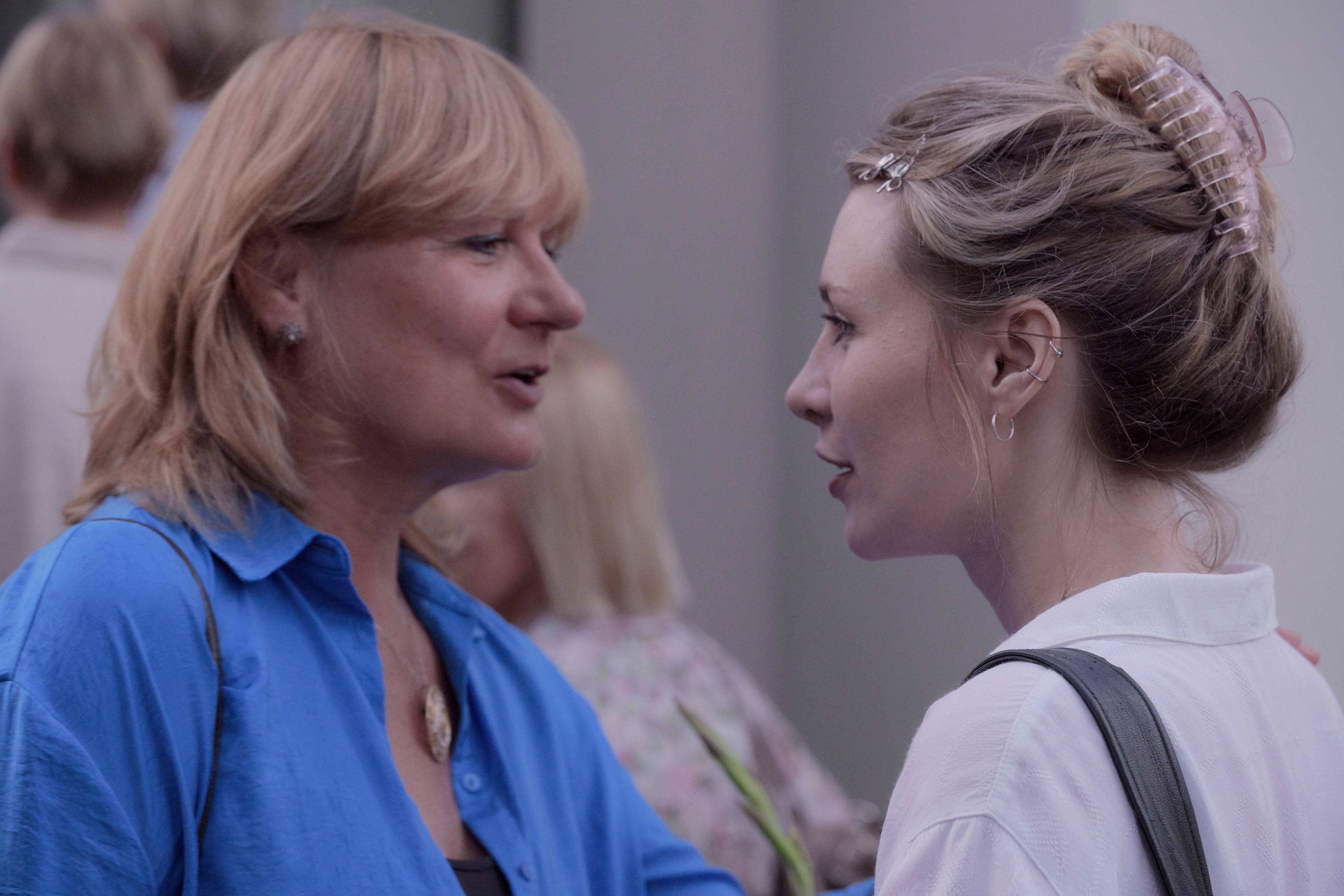
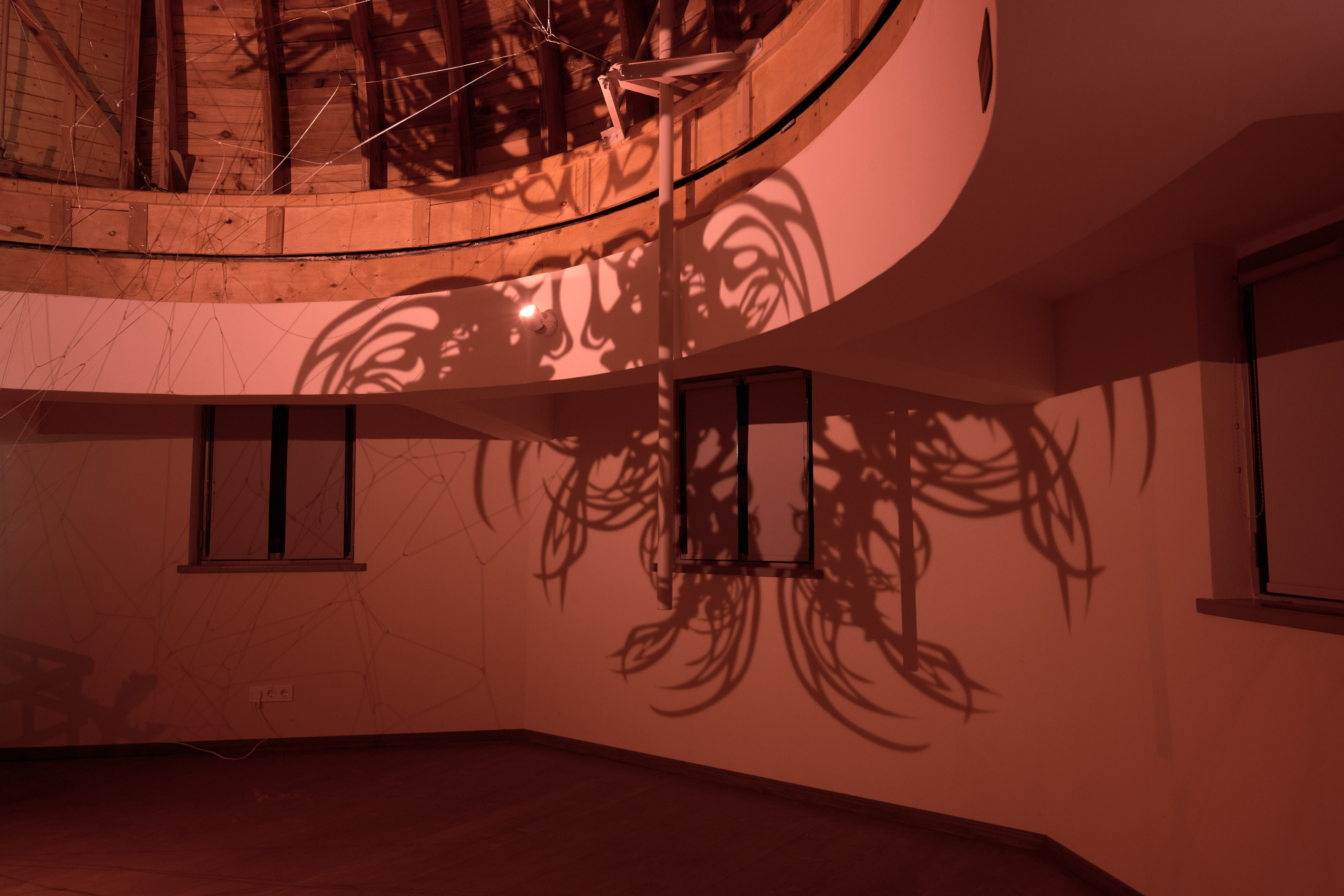
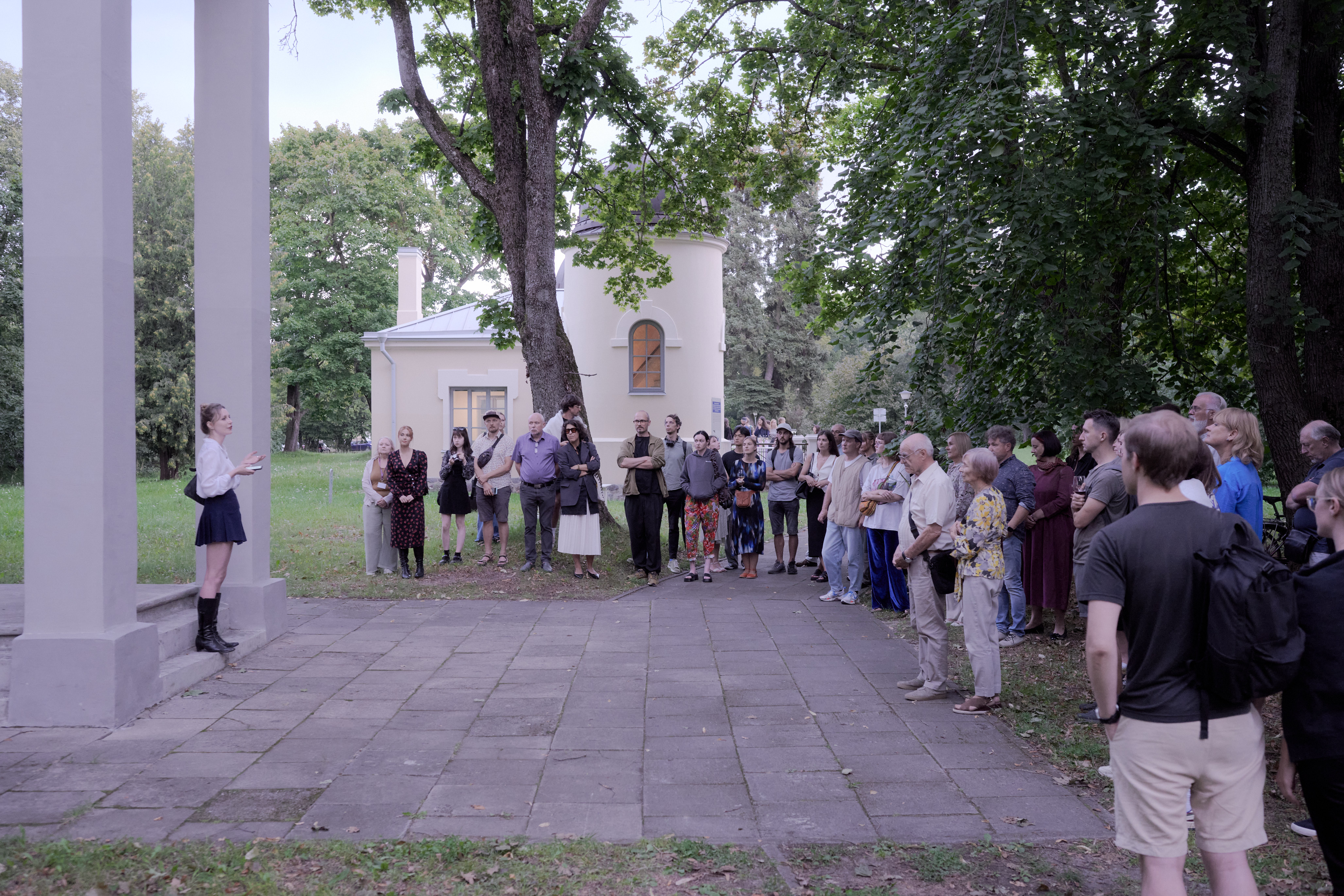





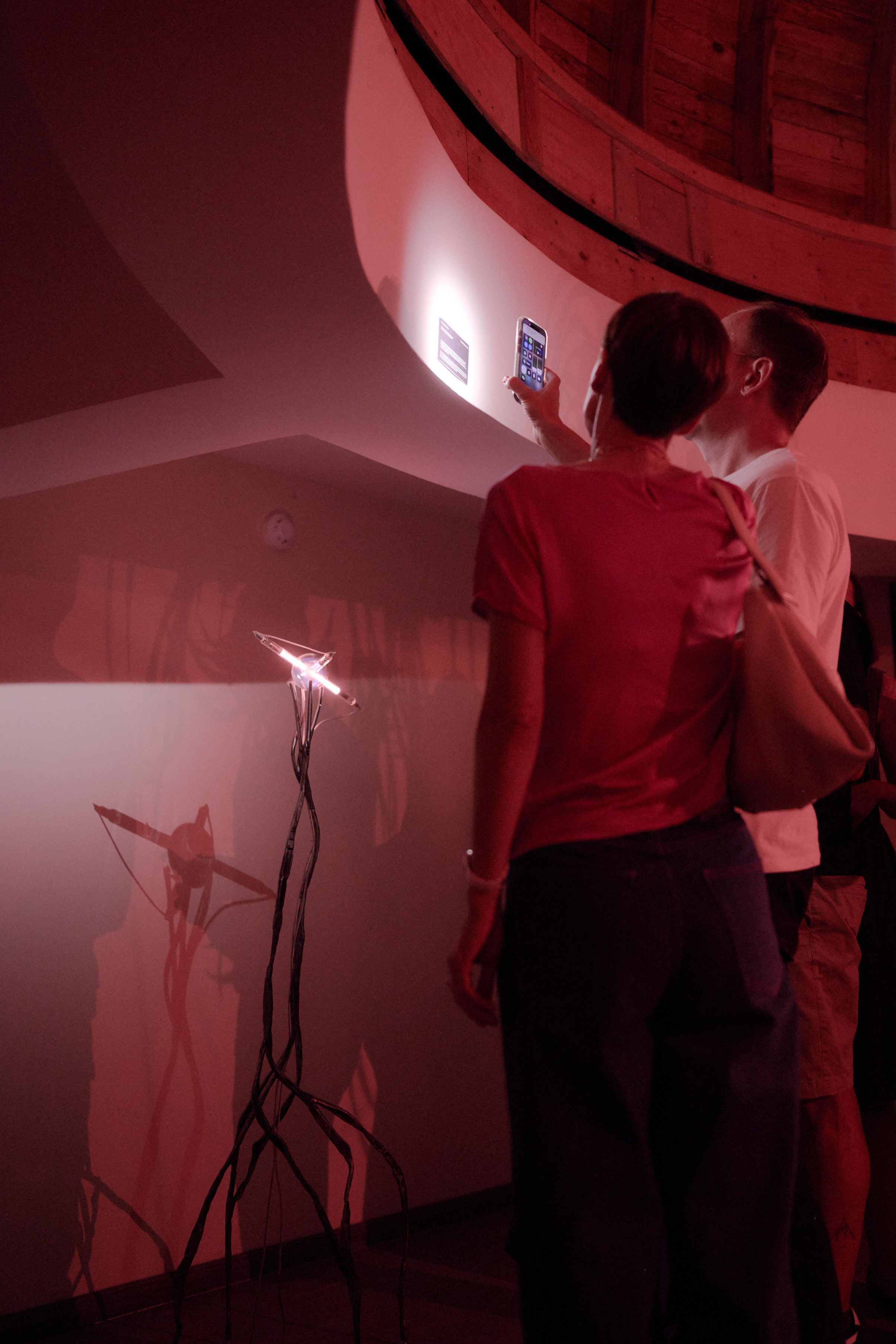















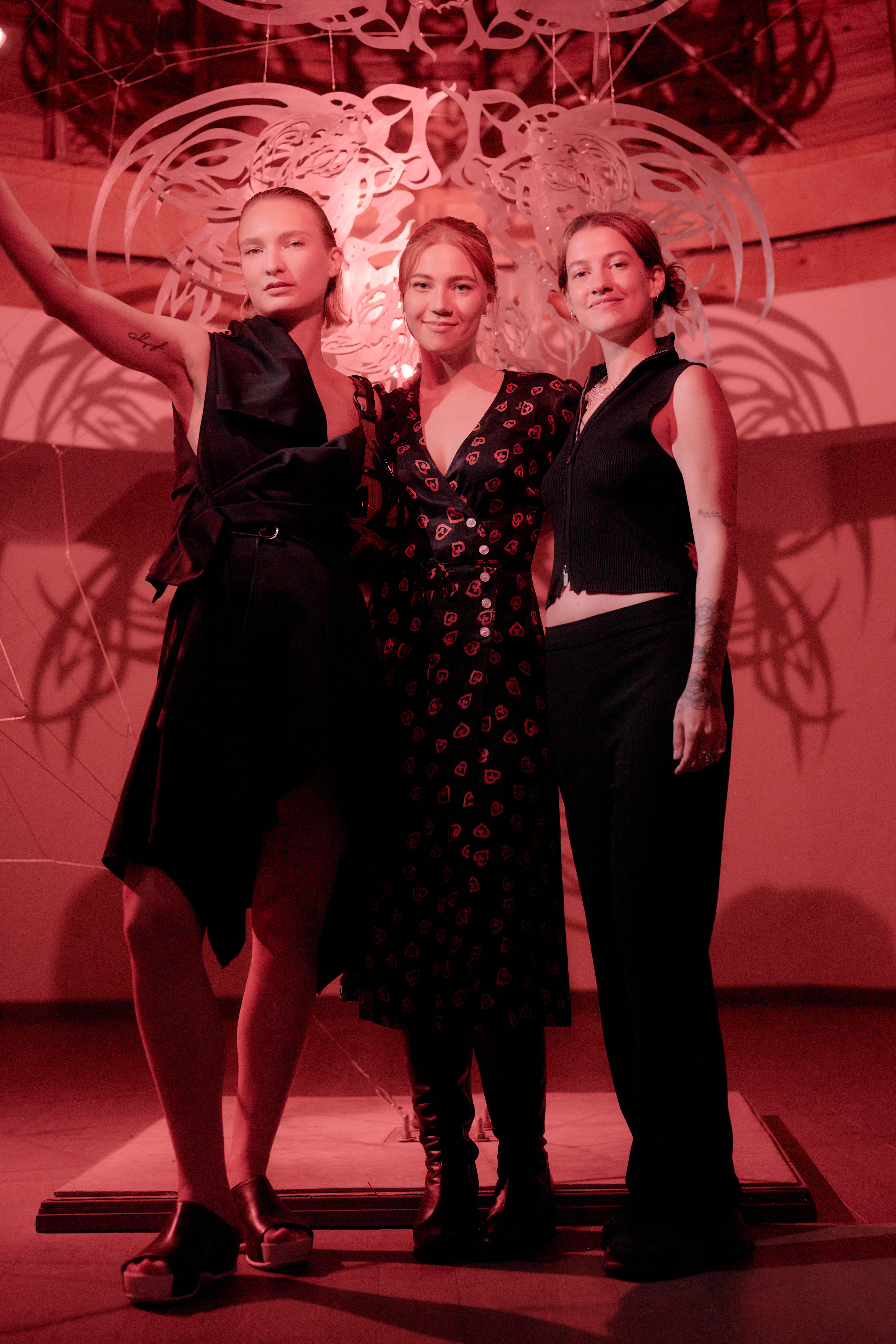




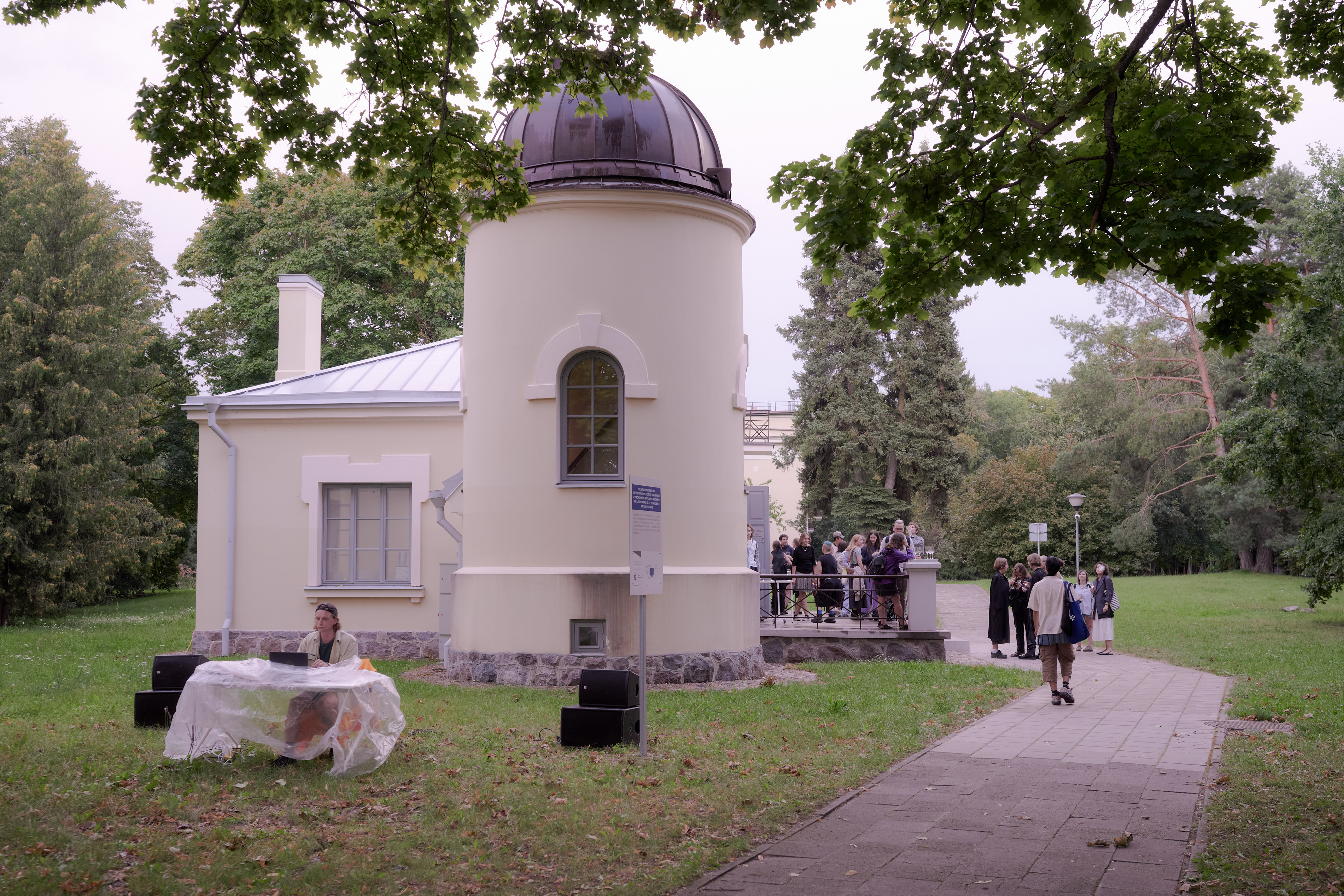
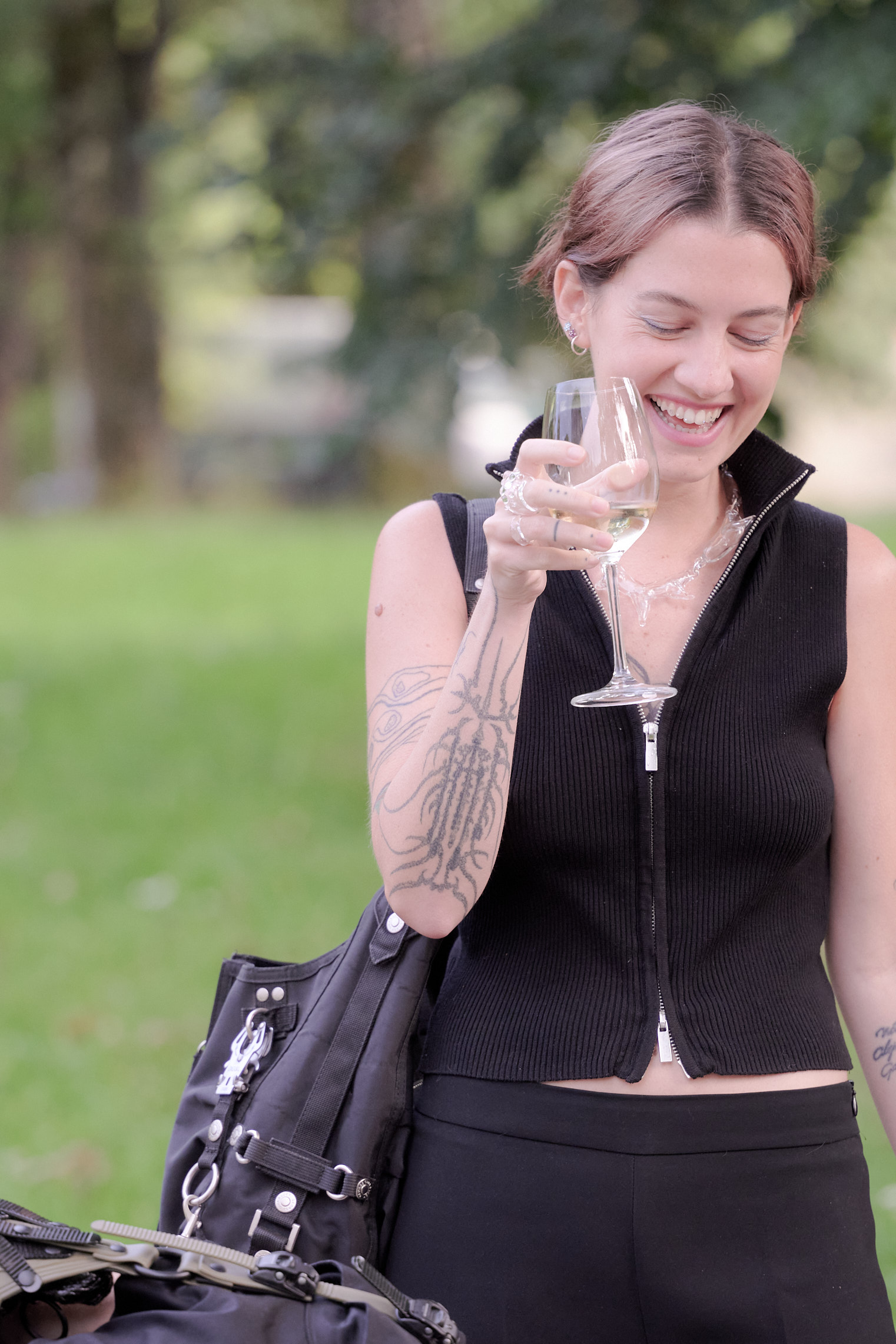



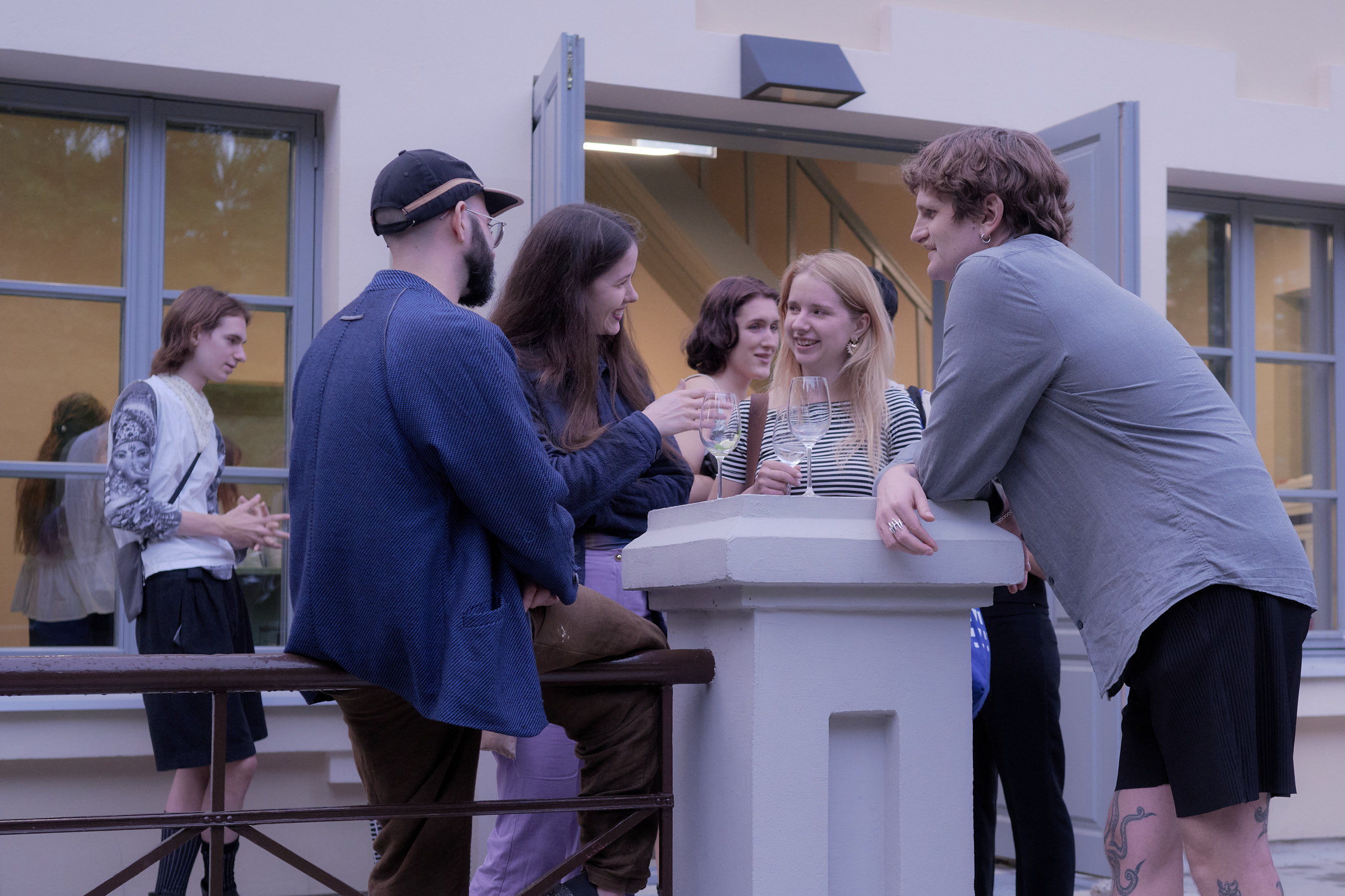
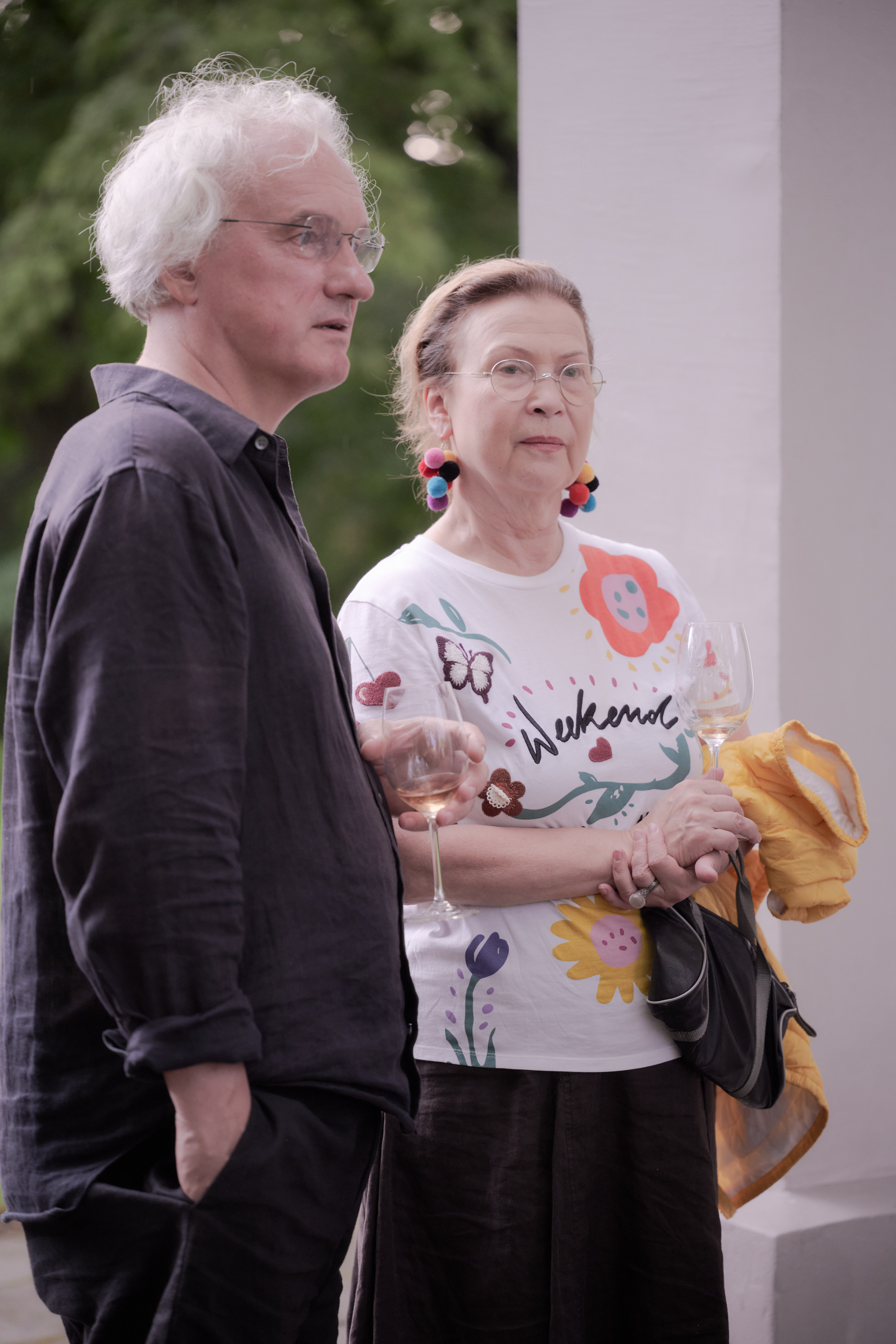




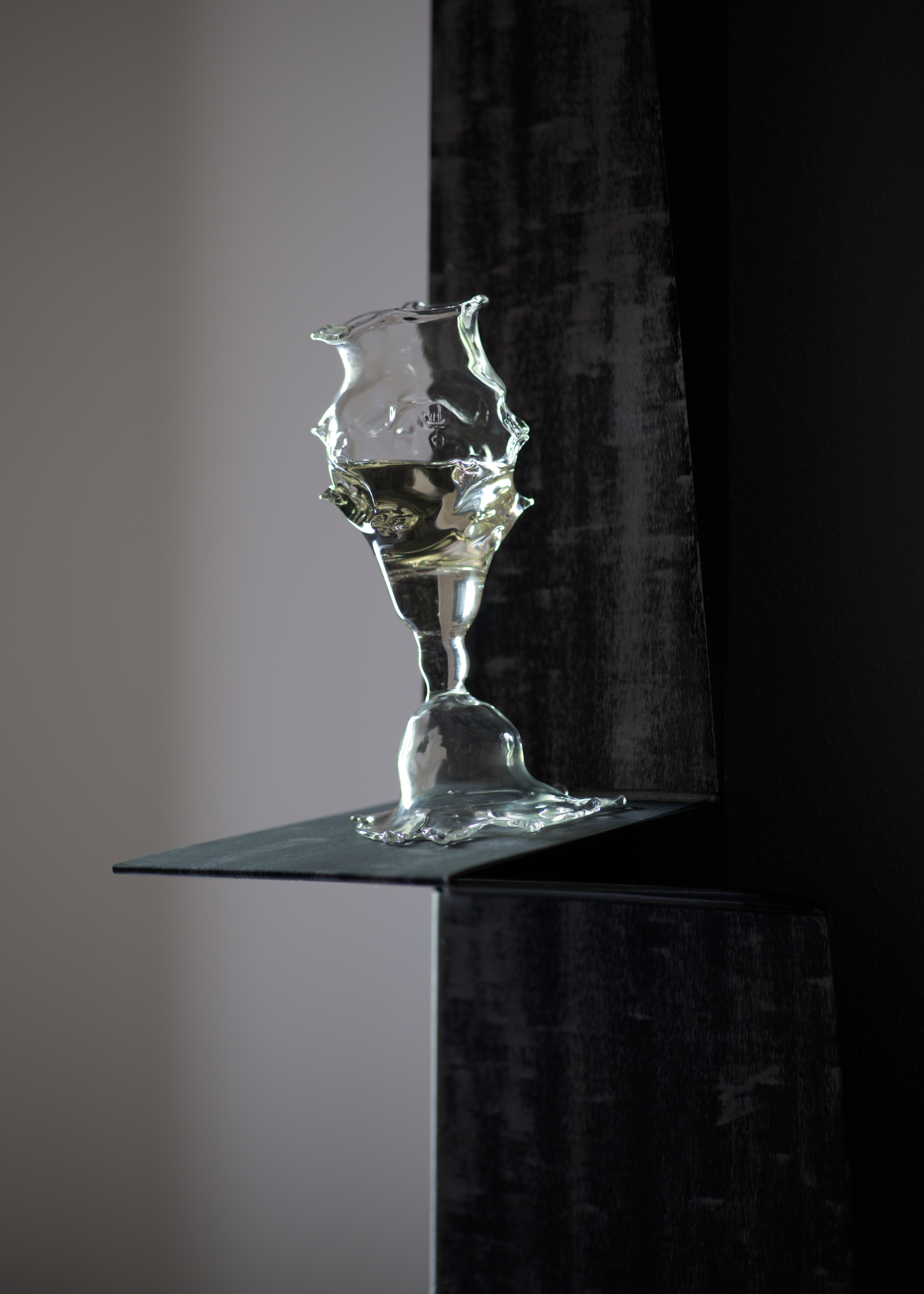
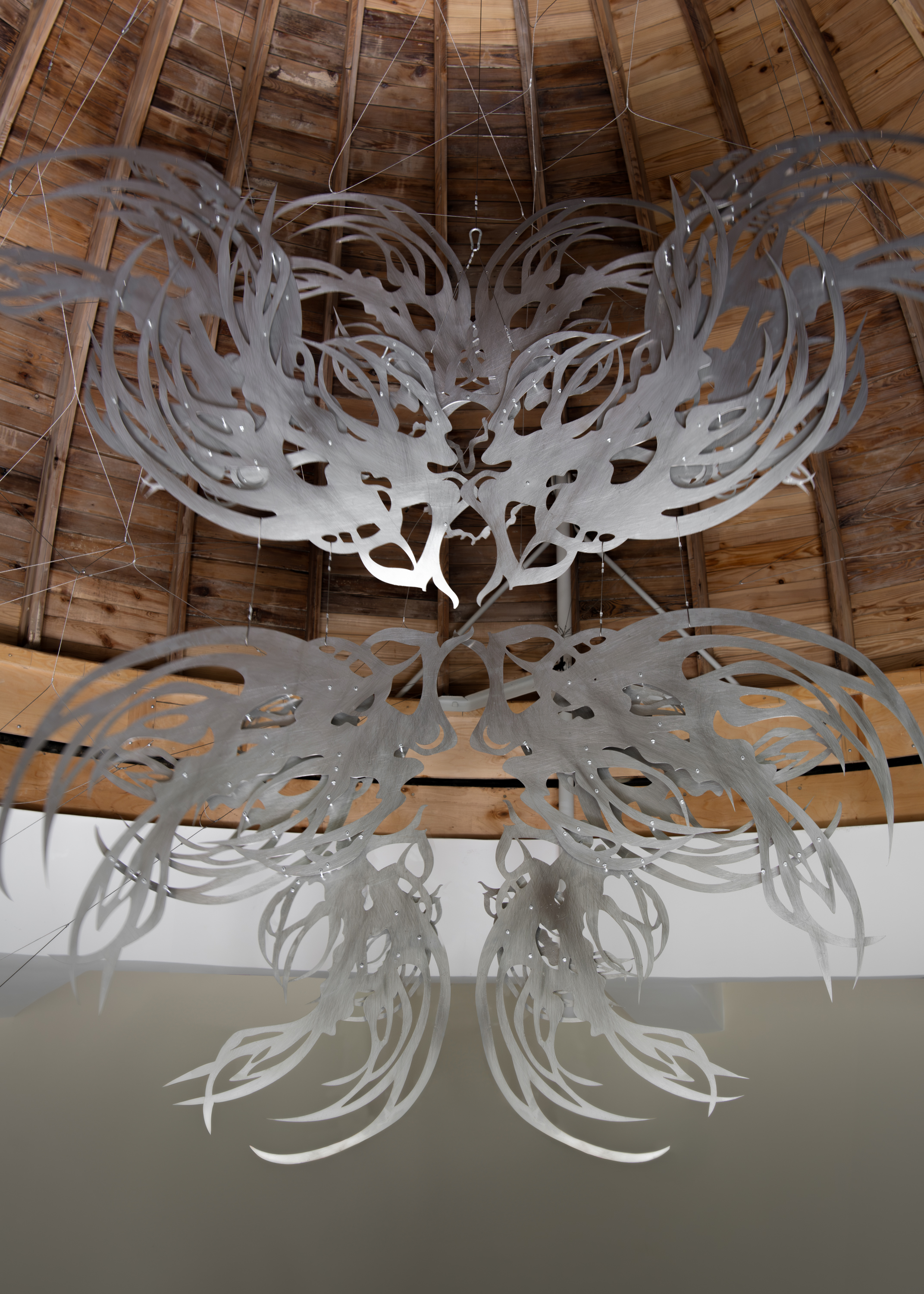
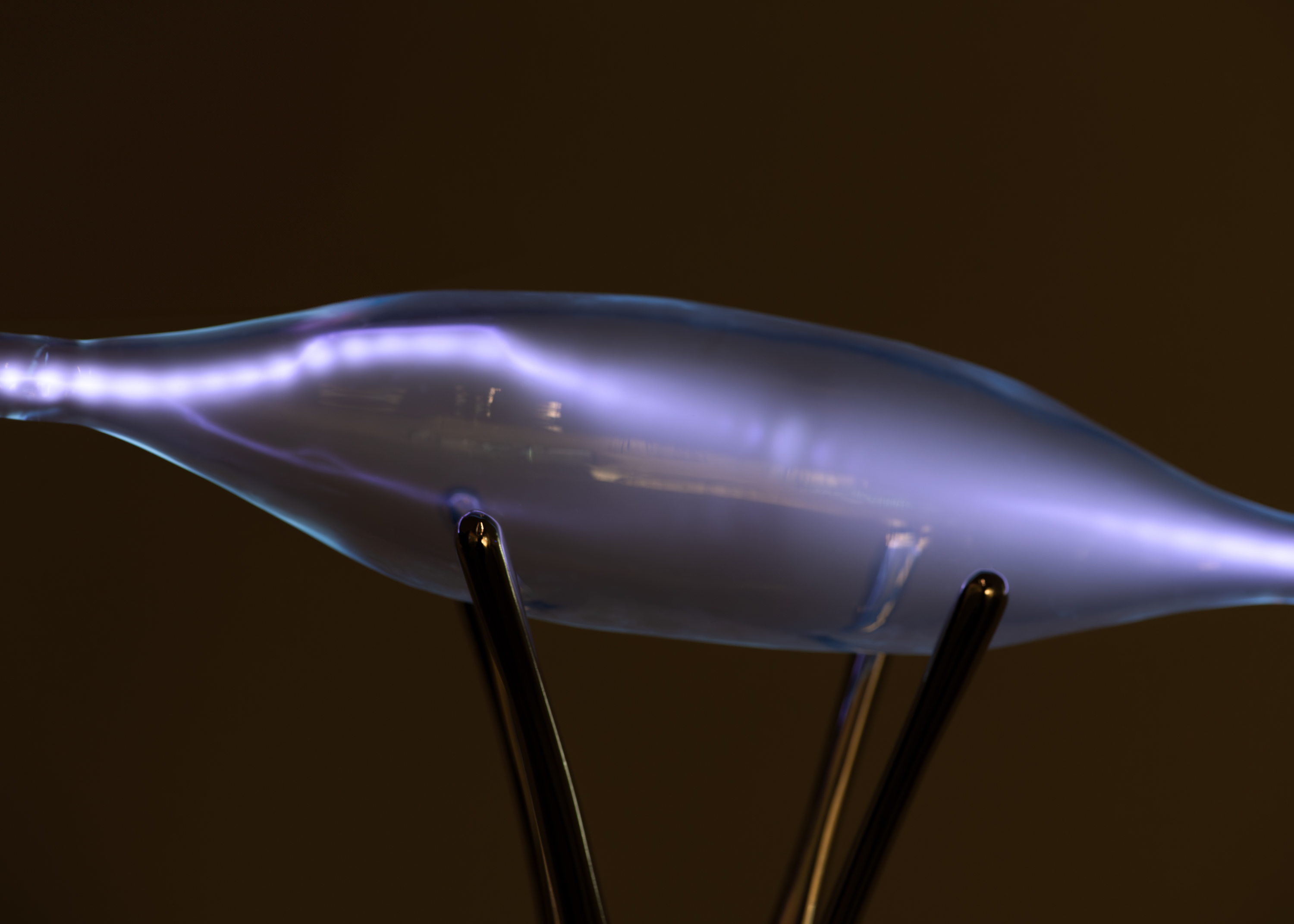
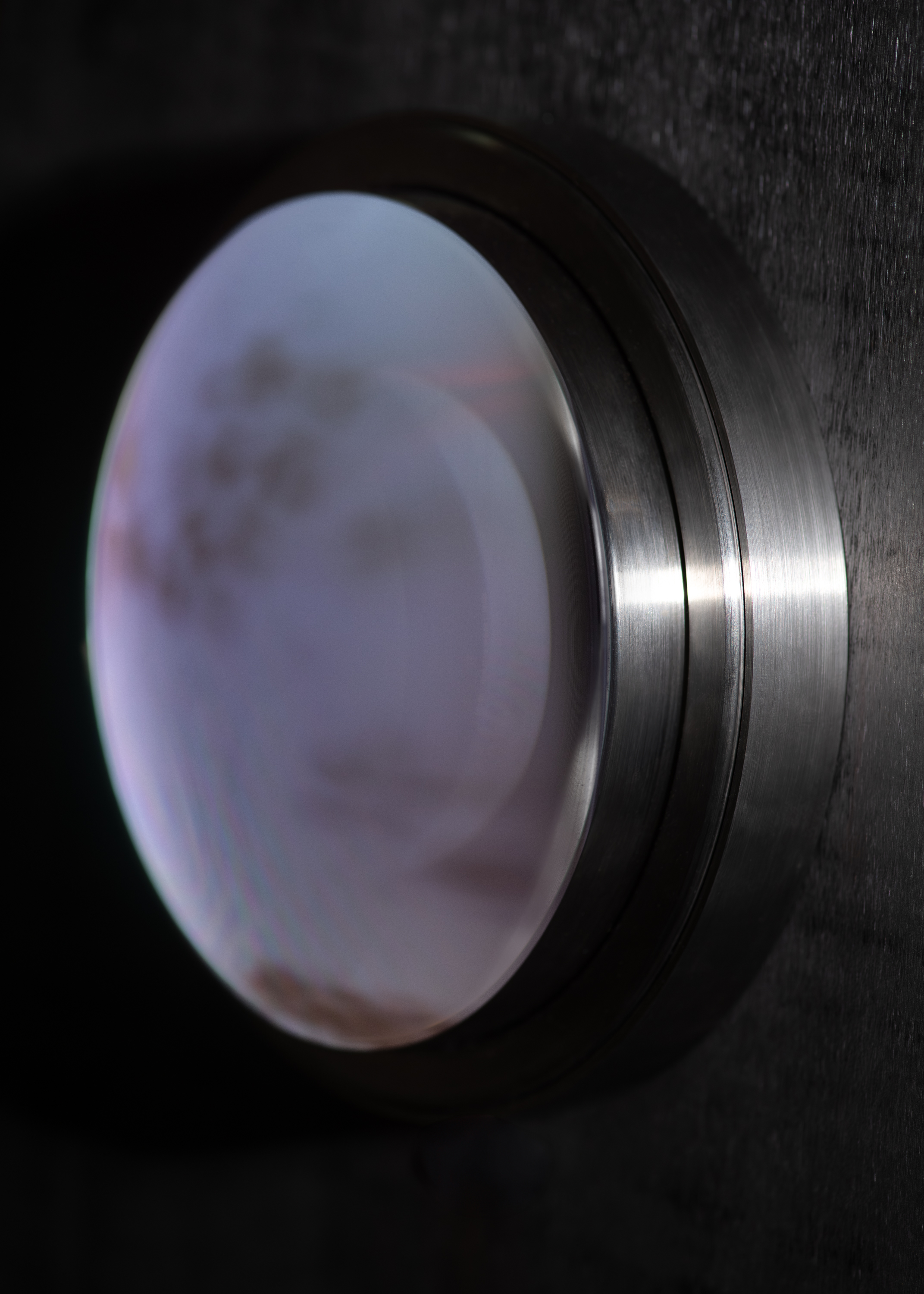
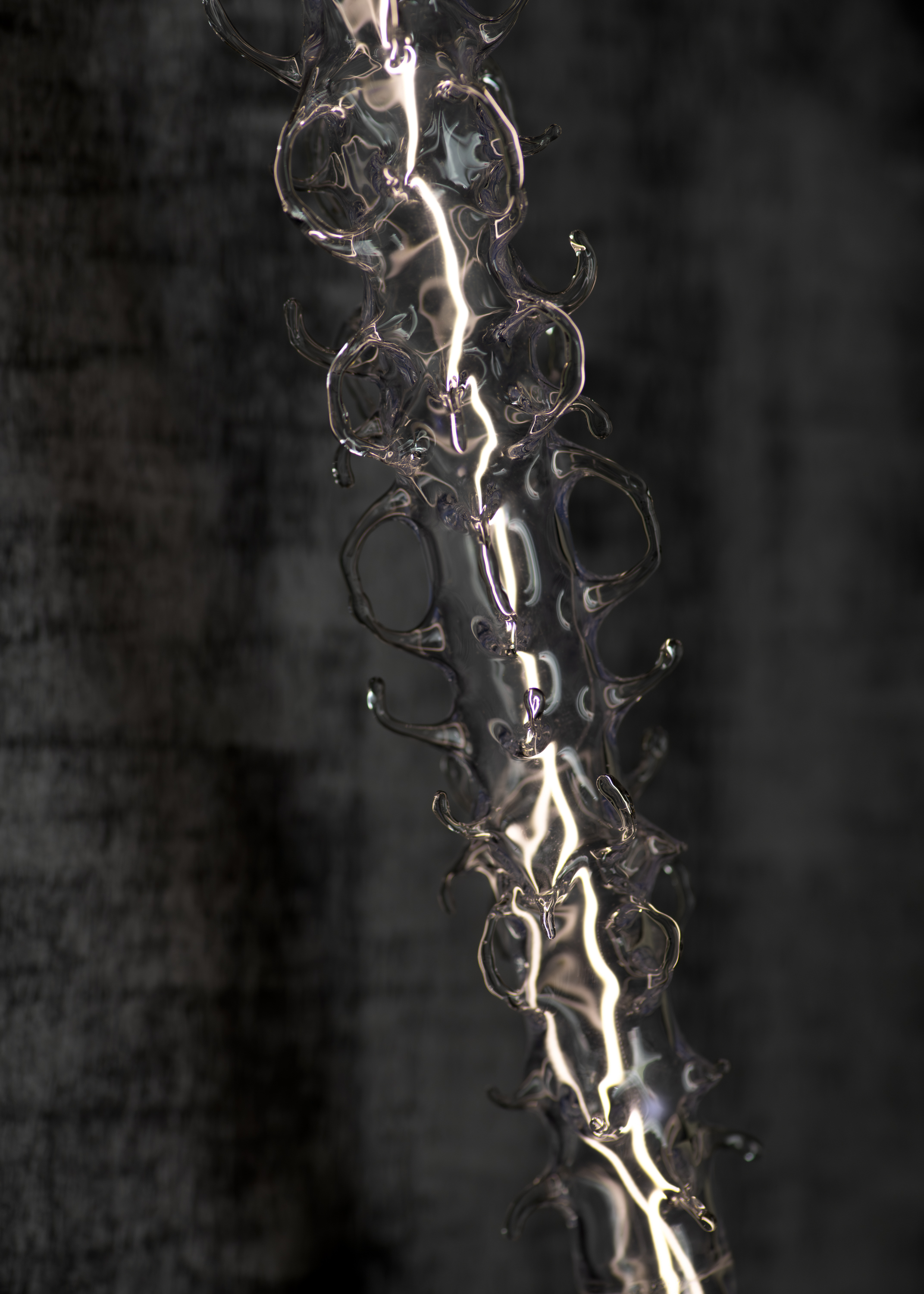





18 05 2024 → 02 06 2024
The curator of the group exhibition “(Hope)stalgic Materialities and Wishful Horizons” in Governors Island, New York City, USA.
In the RU House on Governors Island (NYC), Residency Unlimited opens a group exhibition (Hope)stalgic Materialities and Wishful Horizons, presenting the works of six international artists who spent the last few months nurturing their artistic practices in New York City. They are: Mihael Klanjčić (Croatia), Anna Nemes (Hungary), Ivie Ada Onaiwu (Switzerland), Siahne Rogers (Australia), Ai Sugiura (Japan), and Beyza Dilem Topdal (Turkey). This exhibition is curated by Eglė Ambrasaitė.
(Hope)stalgic Materialities and Wishful Horizons
Scholarly works on nostalgia notice that the term should be addressed in a more nuanced way and proposes to embrace it as an affective reservoir (Odak, 2024)*. In this group exhibition, the featured artists reassess nostalgia as “an important […] aspect of the radical imagination” (Bonnett, 2010:1)* and embody it as a source of artistic and socio-political perspective for a (wishful) future. Hence, (hope)stalgia here is grasped as “a mode of temporality, a cognitive and affective relation to time and a way to approach the relationships among historicity, presentism, and futurity” (Weeks 2011:186)*. For example, deep diving into poetics of wishful thinking according to critical affect theory, Siahne Rogers introduces us to their video work and new body of canvases that offer playful speculations on the process of making and coming-to-reality of our dreams. In a similar manner, by playing with the understanding of what is place-ness and what it means to be and to belong, in her photographic collage, Ai Sugiura, showcases a fantasy memoryscape, based on observing everyday locationalities of New York City’s sidewalks inscribed with various different titles and symbols. Correspondingly, Mihael Klanjčić works with the re-imagining of daily life objects’ time-scapes and in his sculptural installation, addresses the (hope)stalgic materiality of one of New York city’s iconic symbols. In her current artistic practice, Anna Nemes gently builds around the drag community in Brooklyn and through her new video, sculptural and canvas pieces aims to expand the boundaries of drag through the lenses of post-humanist thought. Similarly, Beyza Dilem Topdal embraces post-humanist theories to study both past, present and future of non-human Turkish marine life entanglements. With the help of AI technologies, her immersive works portray a speculative ethnography for world-building futuristic more-than-human kinships. Finally, Ivie Ada Onaiwu presents three large-scale textile-carpet-paintings offering us to see the carpets both as carriers of history and as a hopeful horizon for the possibility of feeling-at-home, being-safe-and-soft, and belonging.
*Bonnett, Alastair. 2010. Left in the Past: Radicalism and the Politics of Nostalgia. New York: Continuum.
*Odak, Petar. 2024. Forthcoming.
*Weeks, Kathi. 2020. The Problem with Work: Feminism, Marxism, Antiwork Politics, and Postwork Imaginaries. Durham: Duke University Press.
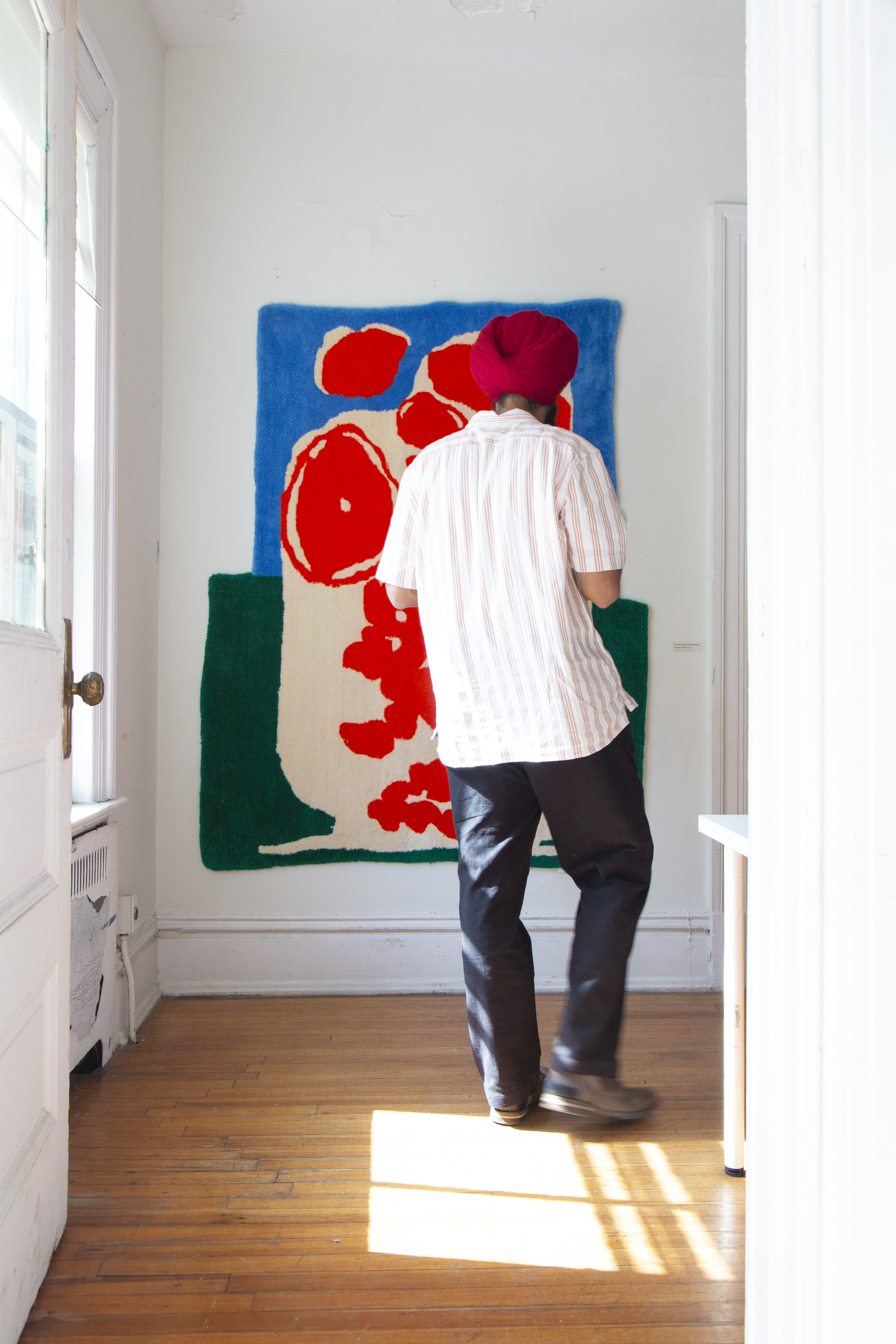


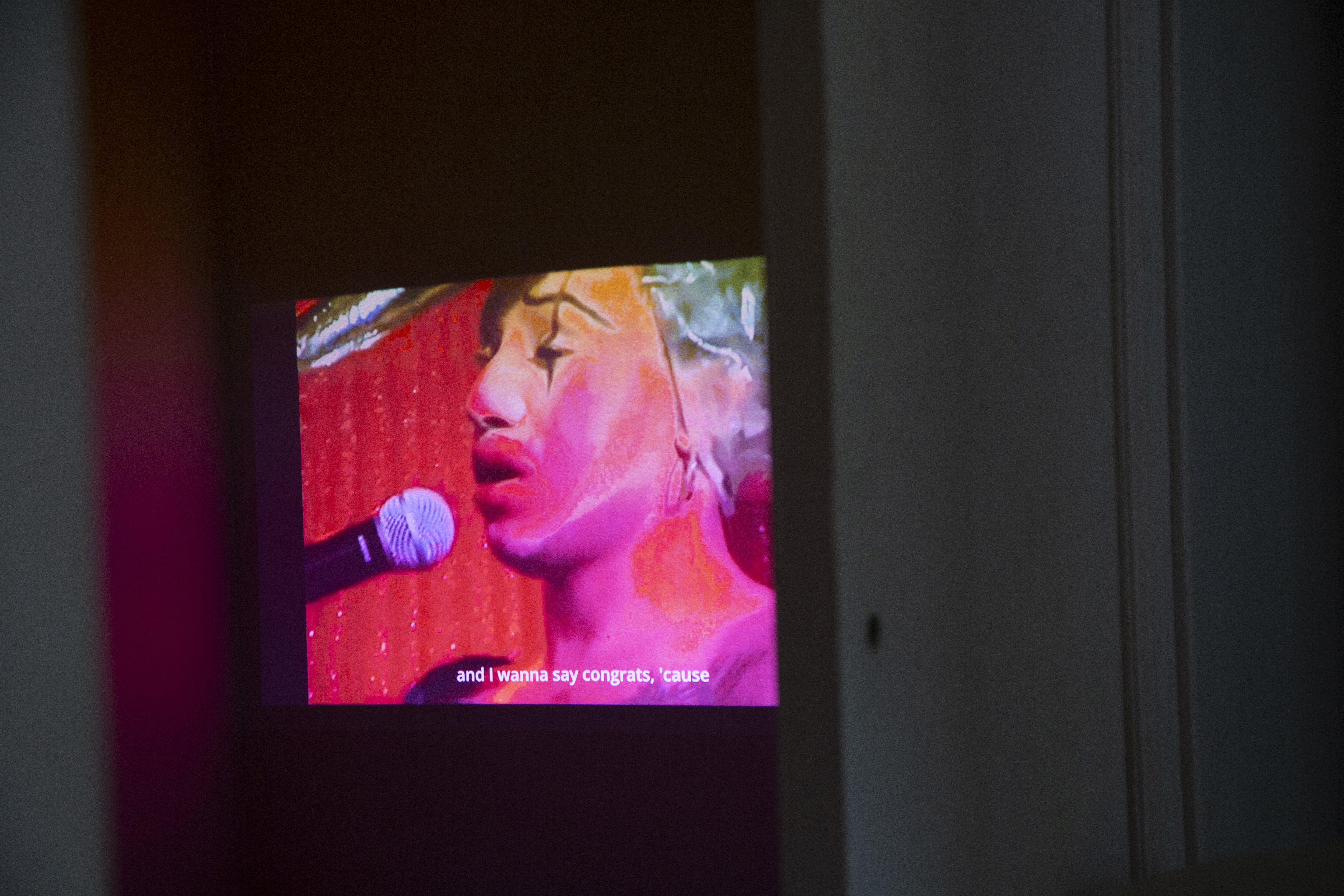
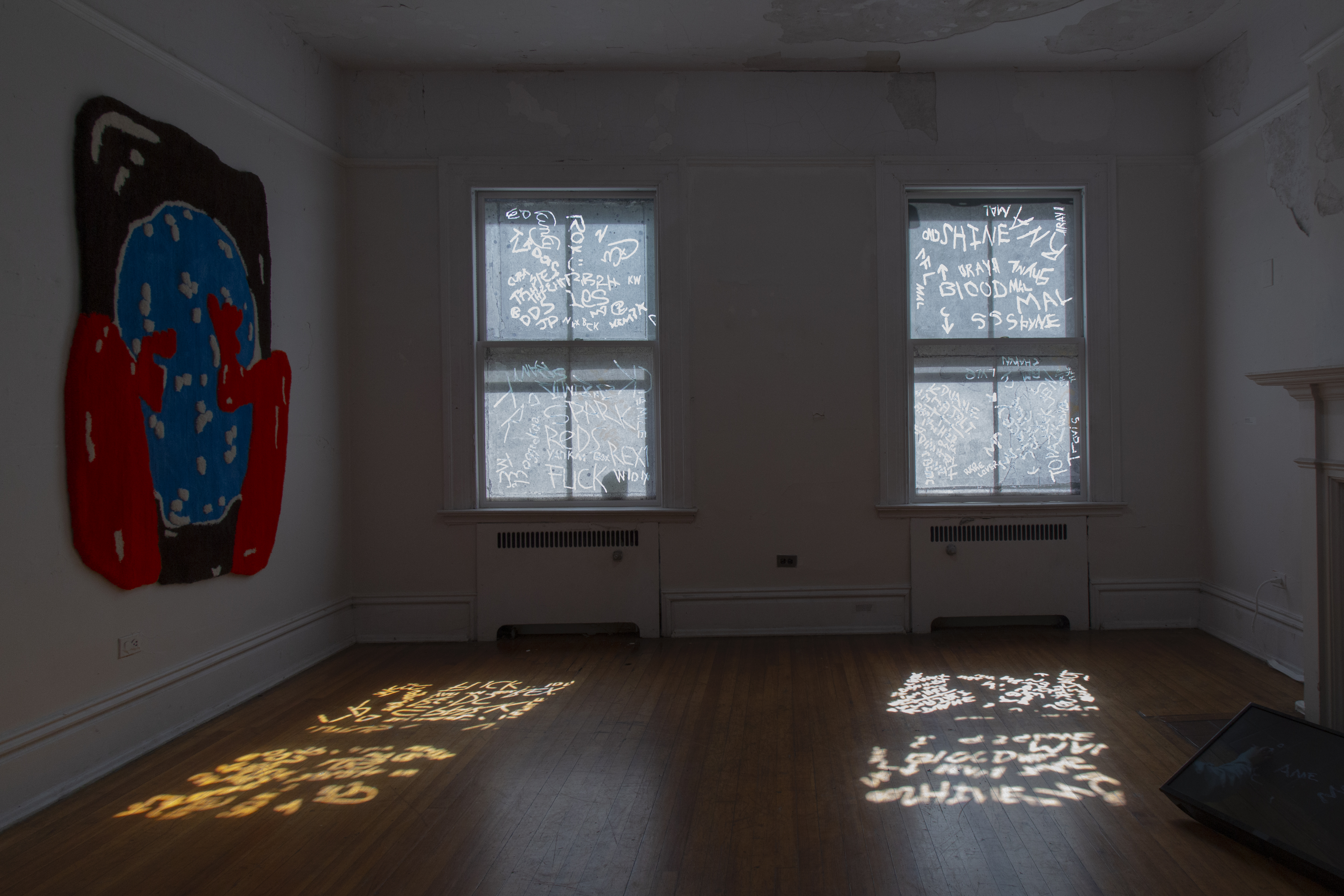
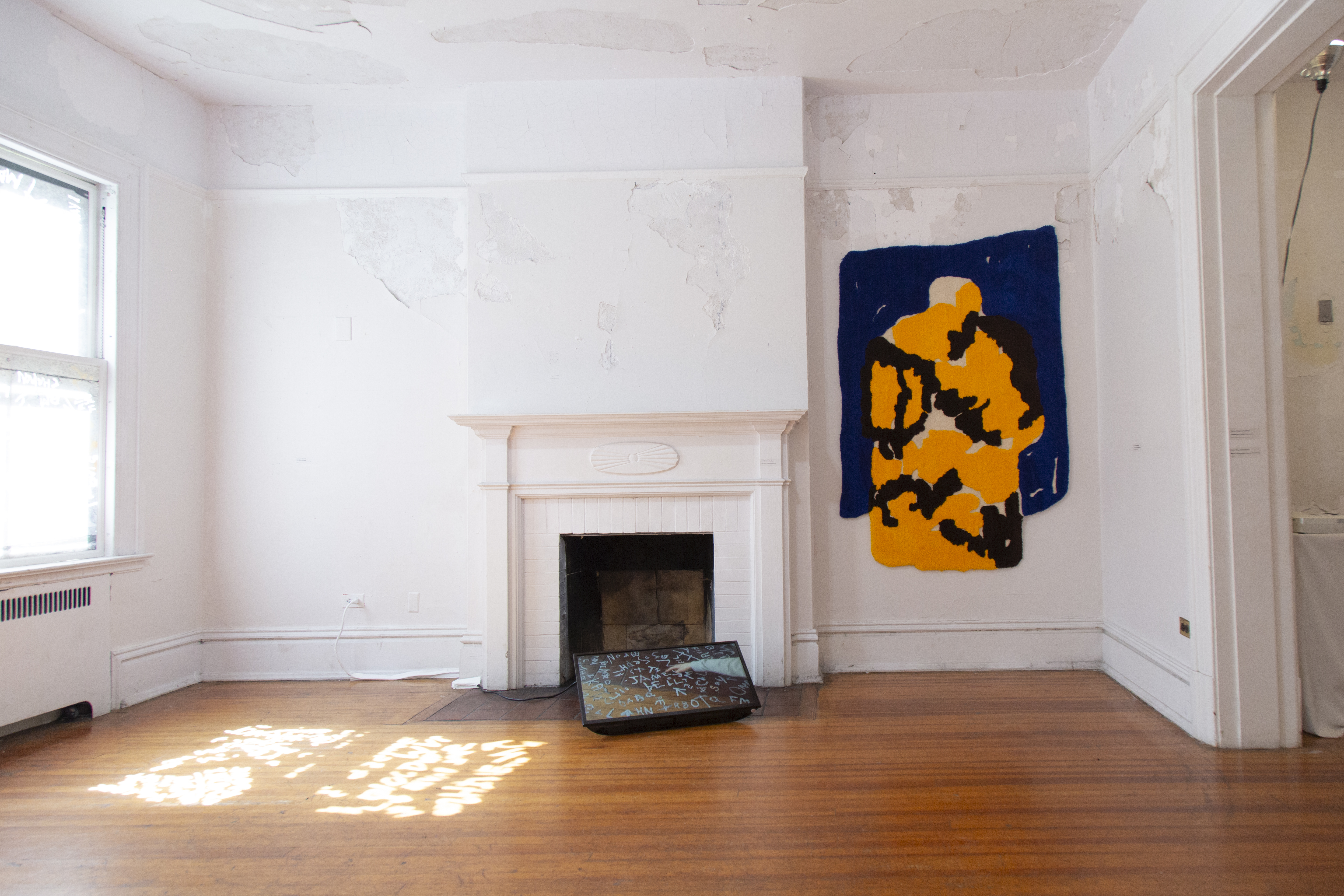
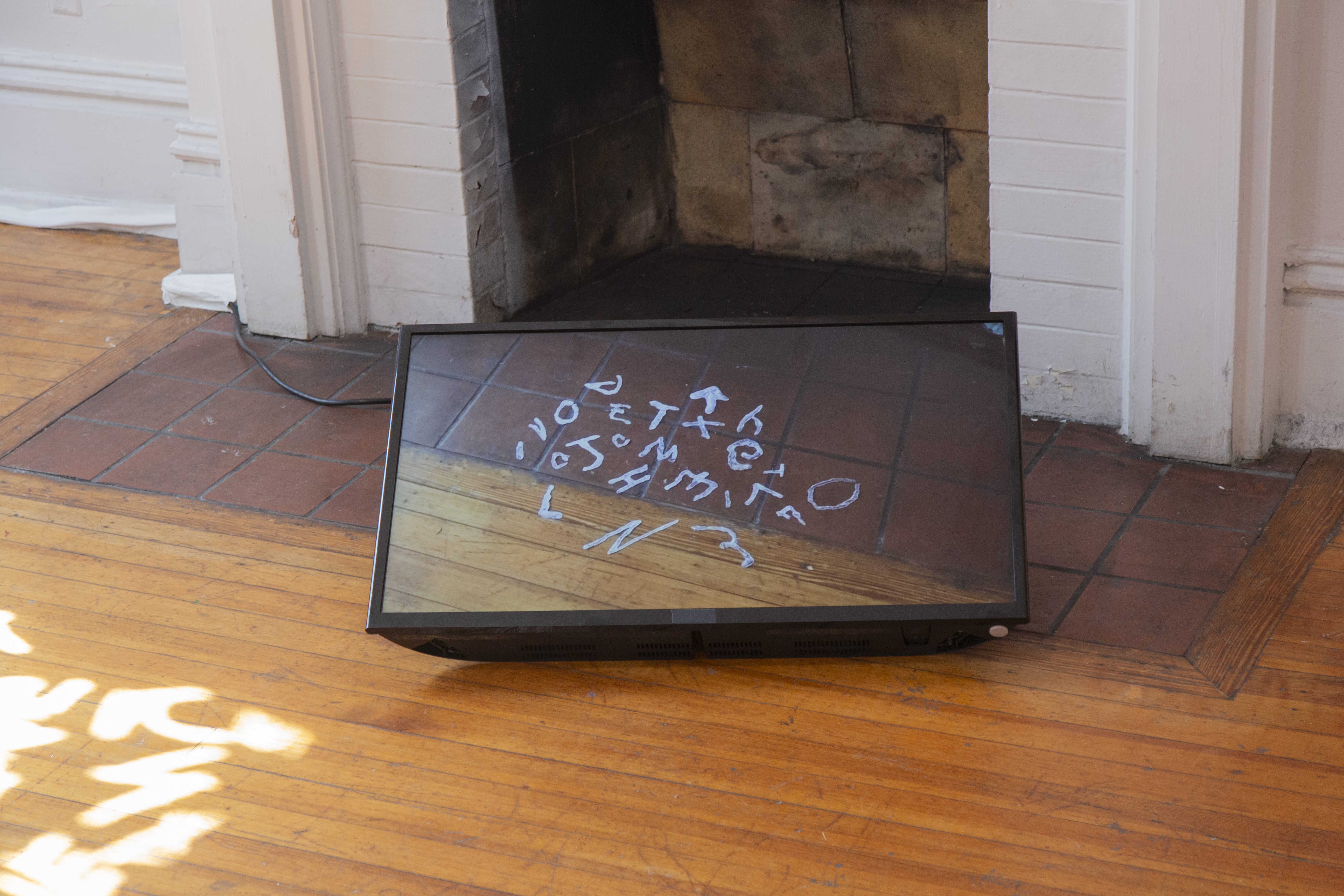
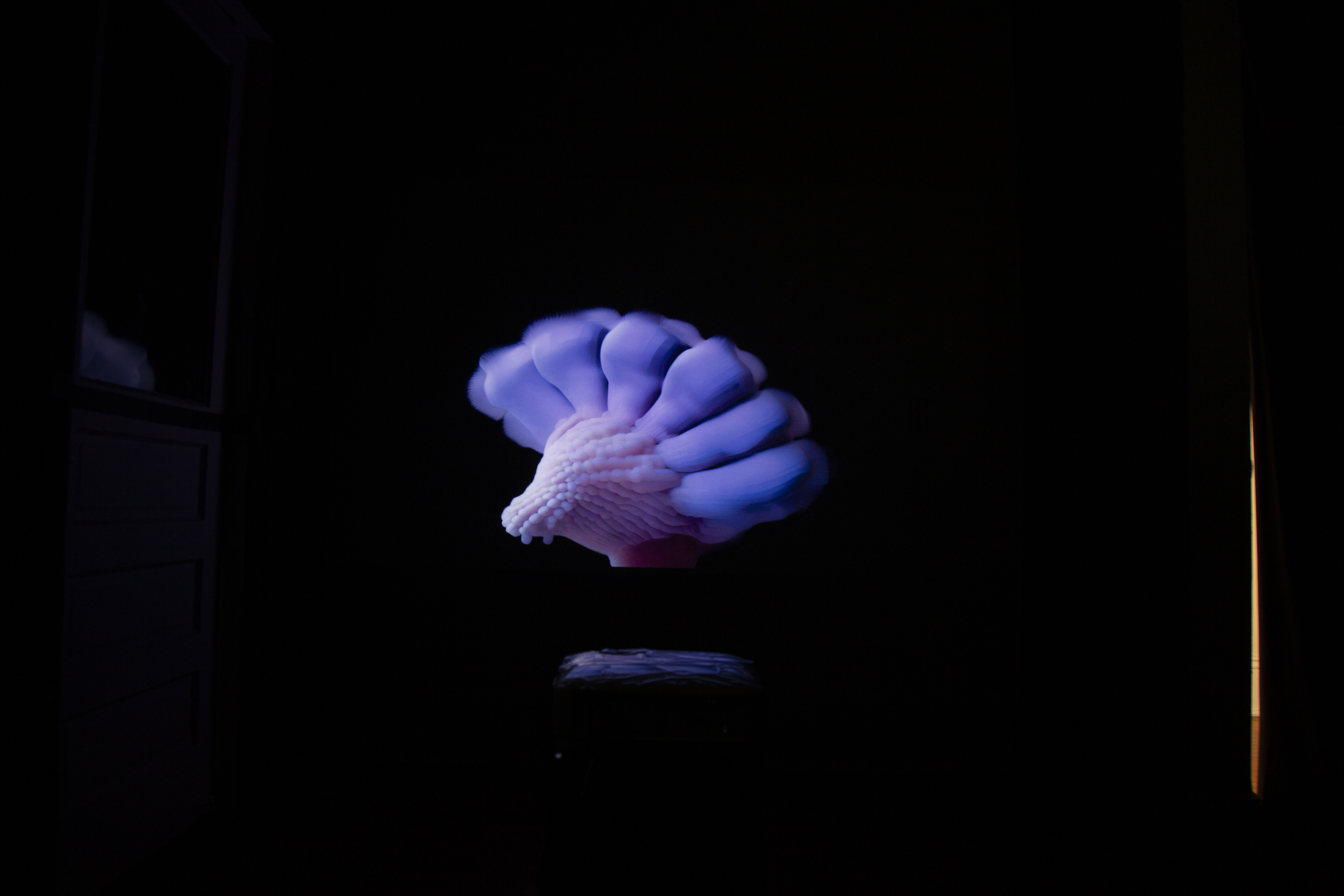
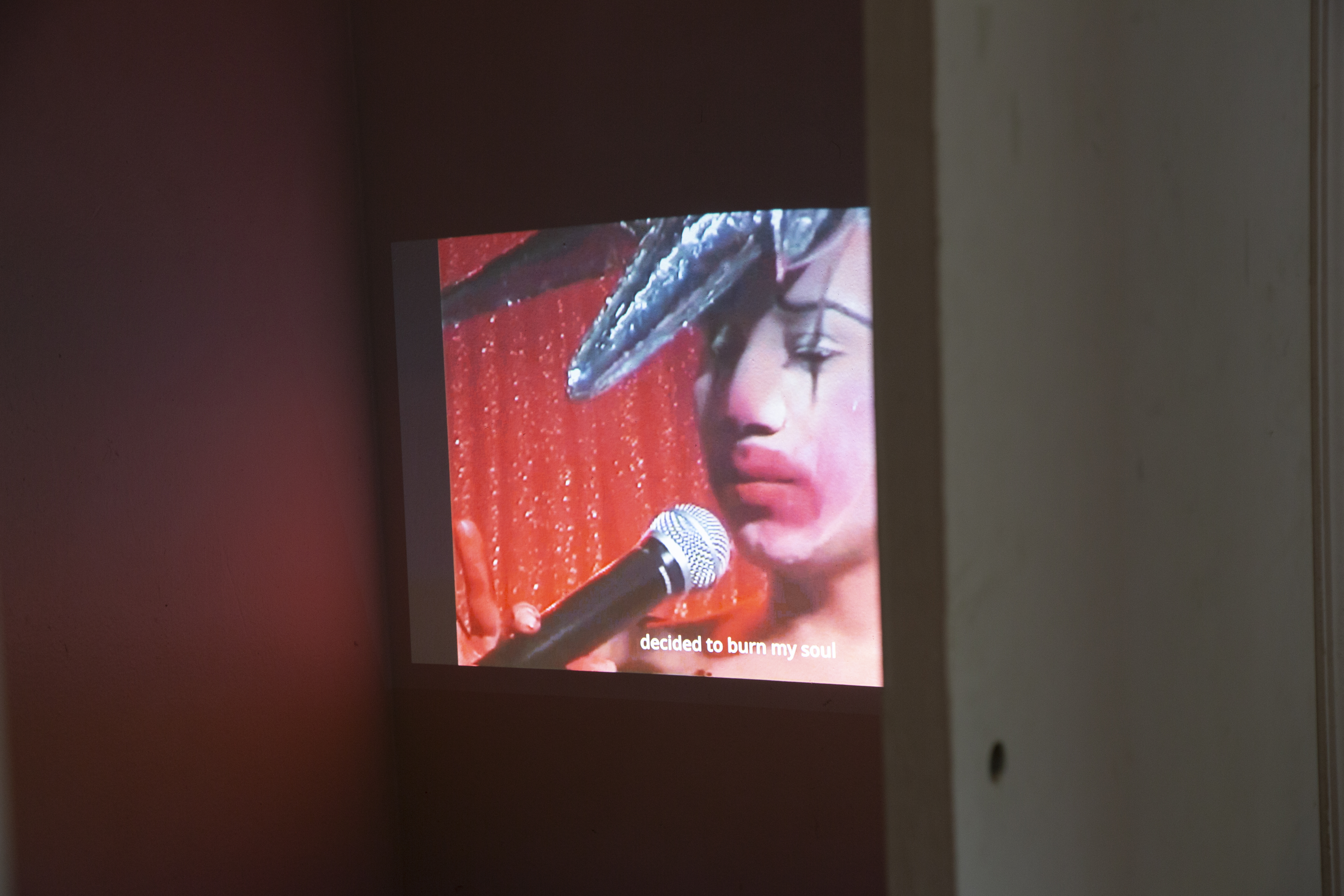
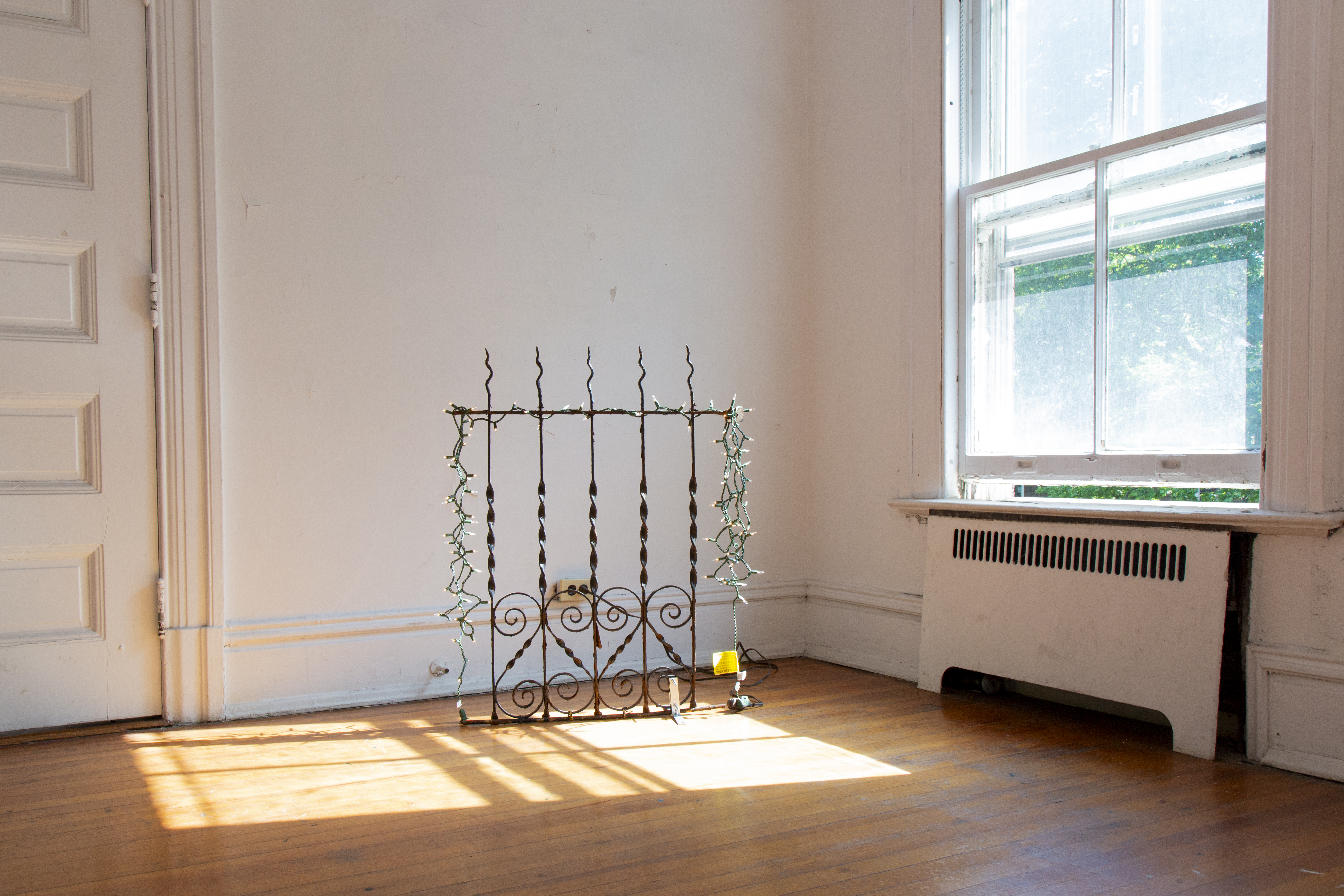

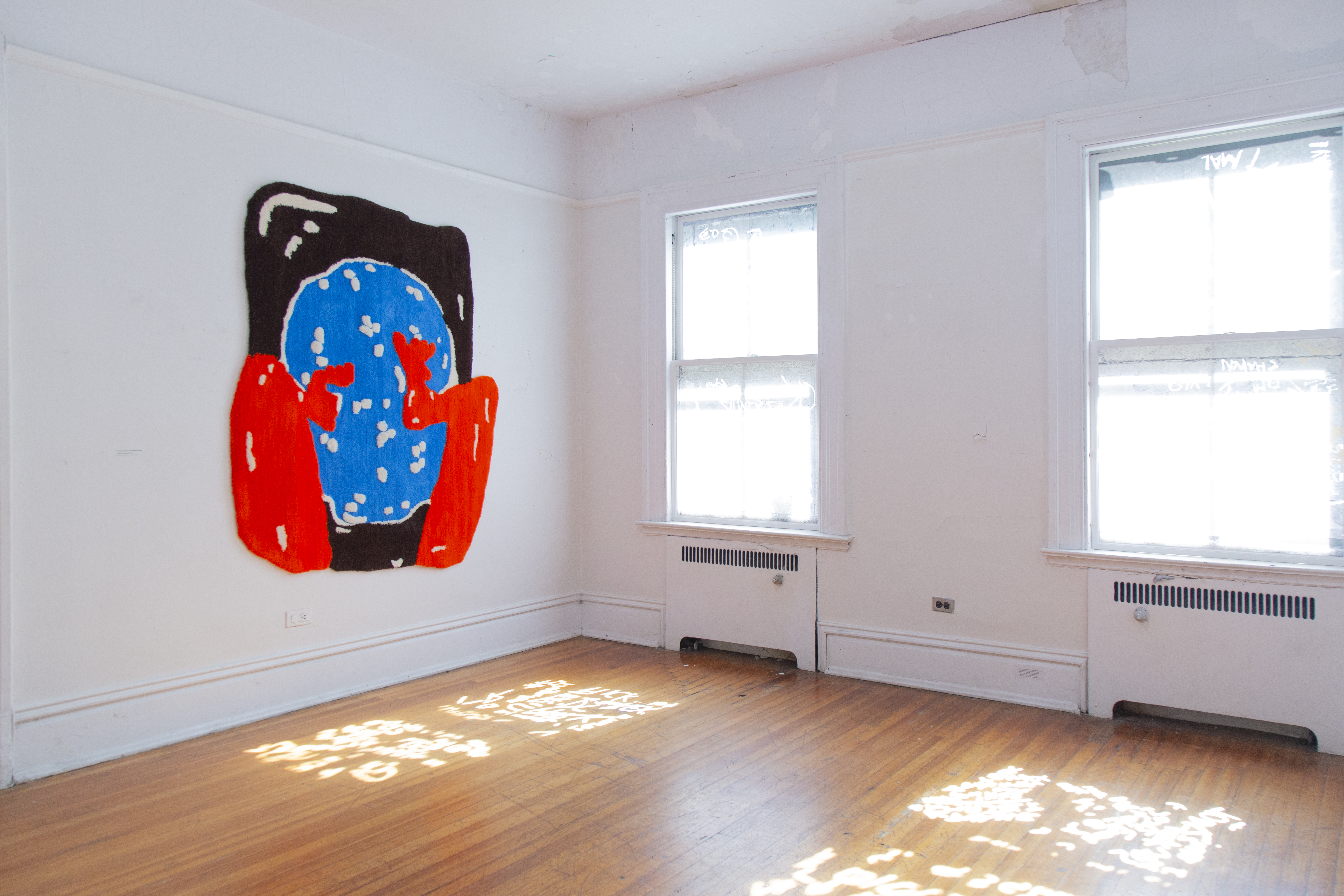
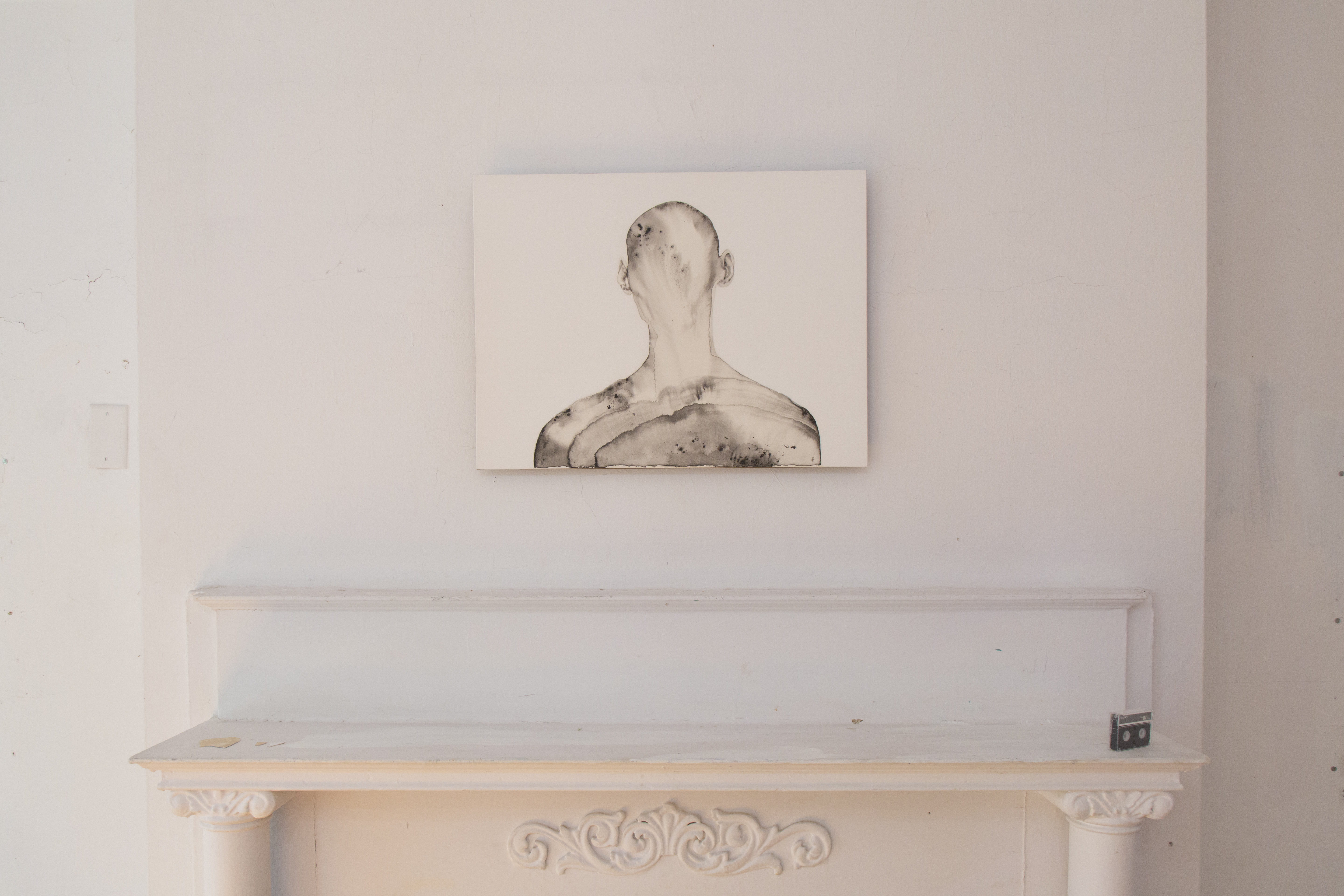

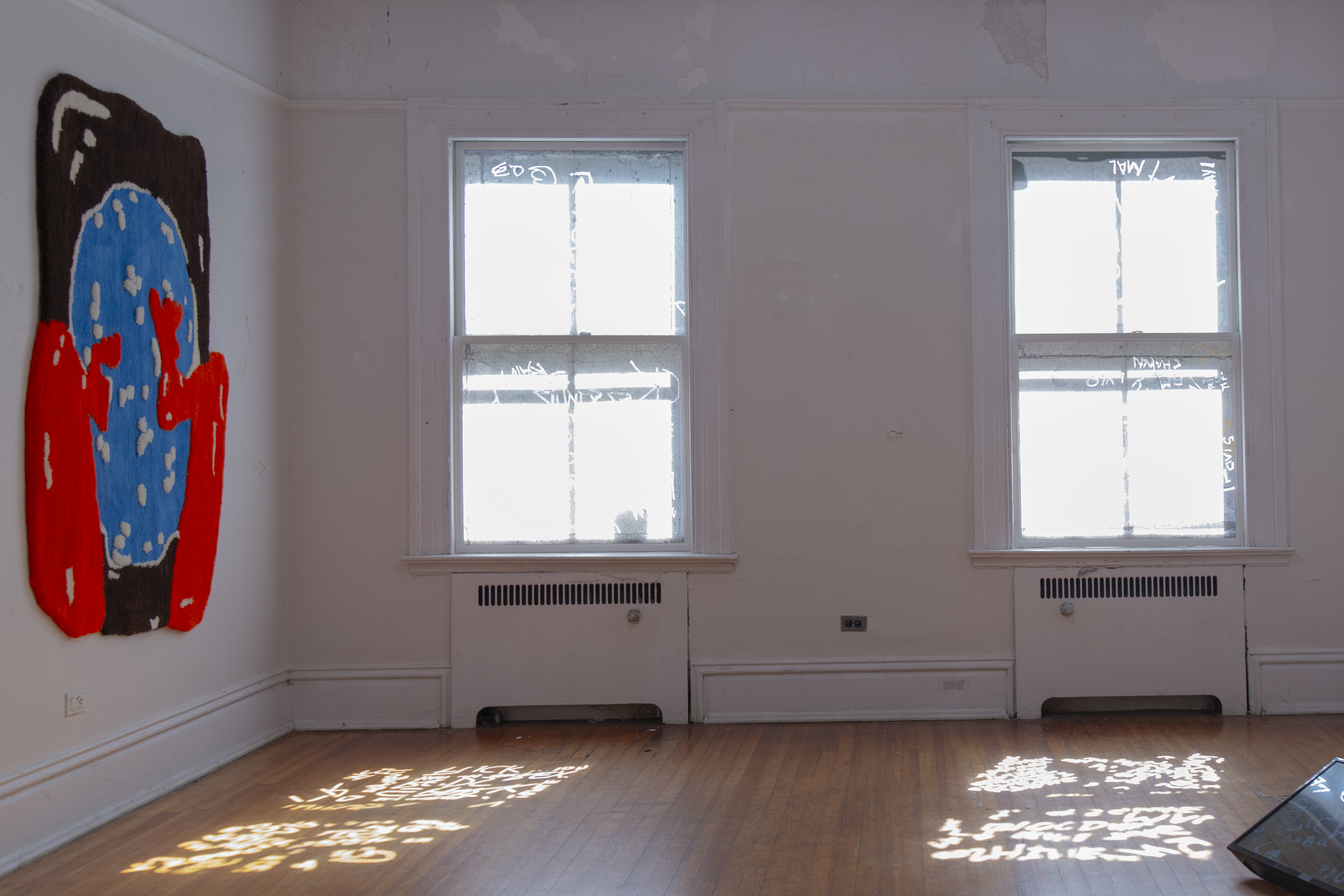
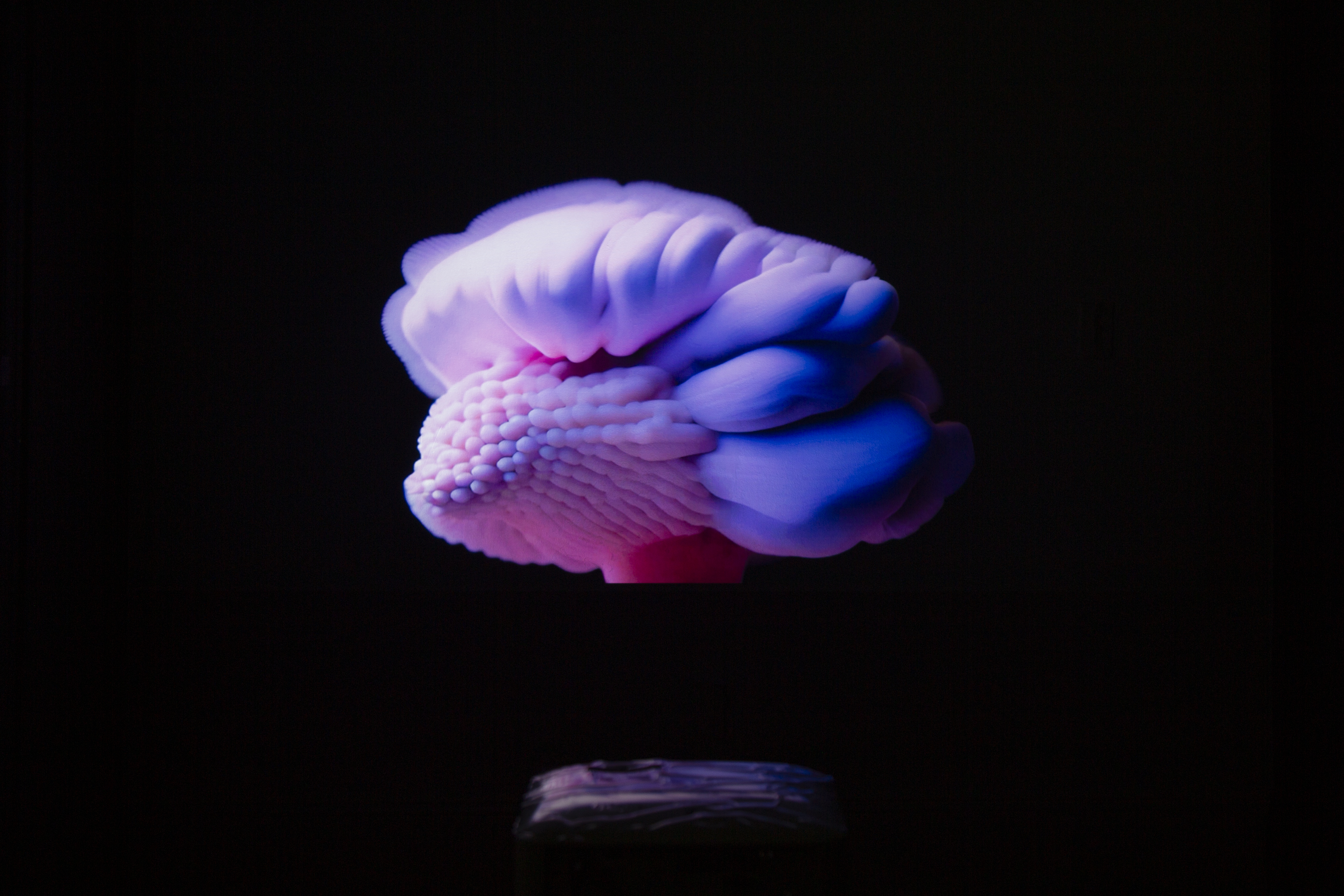
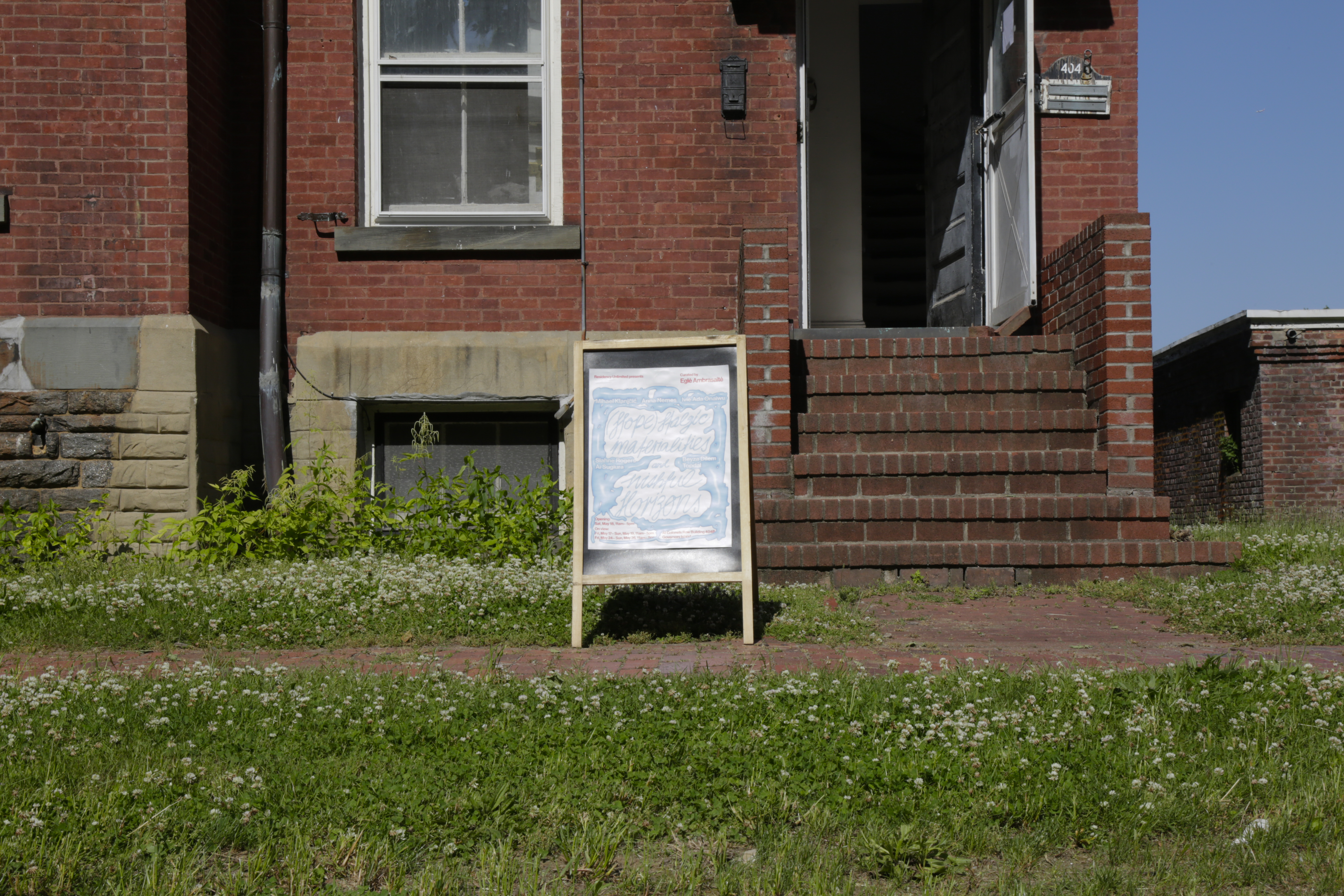
12 08 2023 → 01 11 2023
The curator of the solo exhibition “Angsty Places”, Aikas Žado Laboratory, Žeimiai Manor House.
Participating artists: duo CASE ((Ieva Lygnugarytė (LT) & Xavier Mitchell (NYC, USA))
Curator of the exhibition: Eglė Ambrasaitė
Architect of an exhibition: Domas Noreika
Designer of the exhibition: Aušra Vismantaitė-Silva
Font: Gailė Pranckūnaitė
CASE is an artist duo based in New York whose work comprises video, performance, and found objects. Their practice aims to open up a line of inquiry concerning the following questions: How much space is each individual entitled to? How can we employ acts of micro resistance within the confines of contemporary life? Can we effectively intervene in public/private space with poetry? Can we open up the use of discarded objects as a vernacular that traces the global flow of social, and material production?
“Angsty Places”
There exists an old Ethiopian proverb saying that “Fish discover water last”. The only way for the fish to discover water is if it leaves its ‘normal’ habitat: the river, lake, pond or ocean it is immersed in. Thinking with the proverb, what are our assumptions concerning the reality that surrounds us - the beauty and frailty of our perceptions? How can we tackle the “givens” or “unquestioned norms”? How can we comprehend the “unknown unknowns”? And what happens if we leave the pre-established: what dies and what is reborn? Can, through a mutual disappearance and re-appearance of the sight, the diverse sight, immerse?
Touching upon these questions with kind observation, the works of the duo CASE invite us to navigate through our sights, habitats and troubles differently. To remove our heads out of the familiar. To glimpse into what lurks beyond, both out of and into our own personal angsty places.
Solo exhibition is formed of 1) video installation, and 2) performance
1. Winter Garden (2023)
Two Channel Video installation
Winter Garden highlights how climate denial is practiced through the production of artificial snow at ski resorts. As the global temperatures have increased drastically, resulting in shorter skiing seasons every year, artificial snow is produced in order to elongate the winter sports season, and continue the acquisition of capital in the midst of changing climate.
2. Sideworks: Manor House (2023)
Performance (can be seen only during the opening of the exhibition (2023.08.12 from 19 pm)
Sideworks is an ongoing performance series investigating private property, public space, hostile architecture and the built environment more generally.

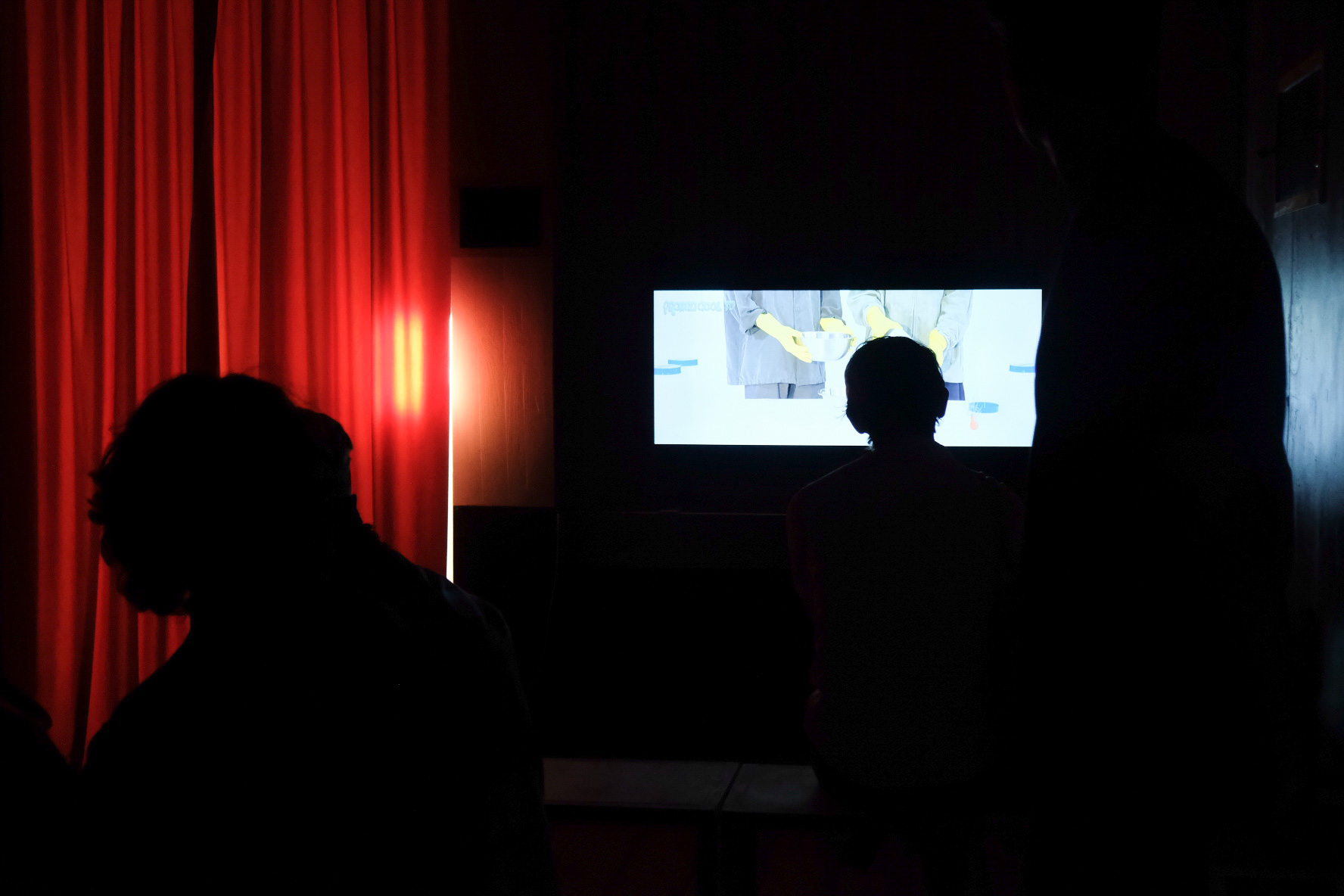
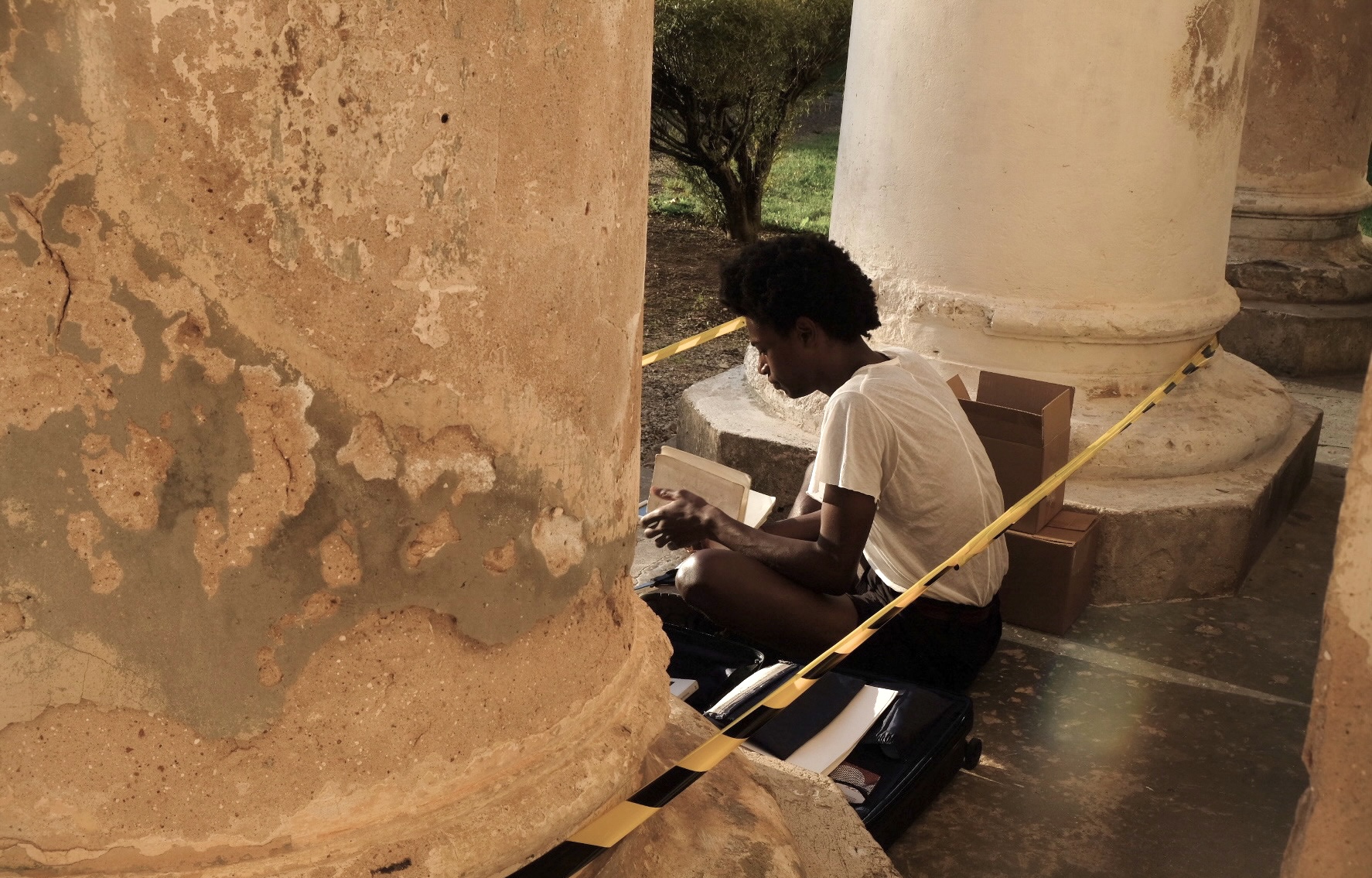
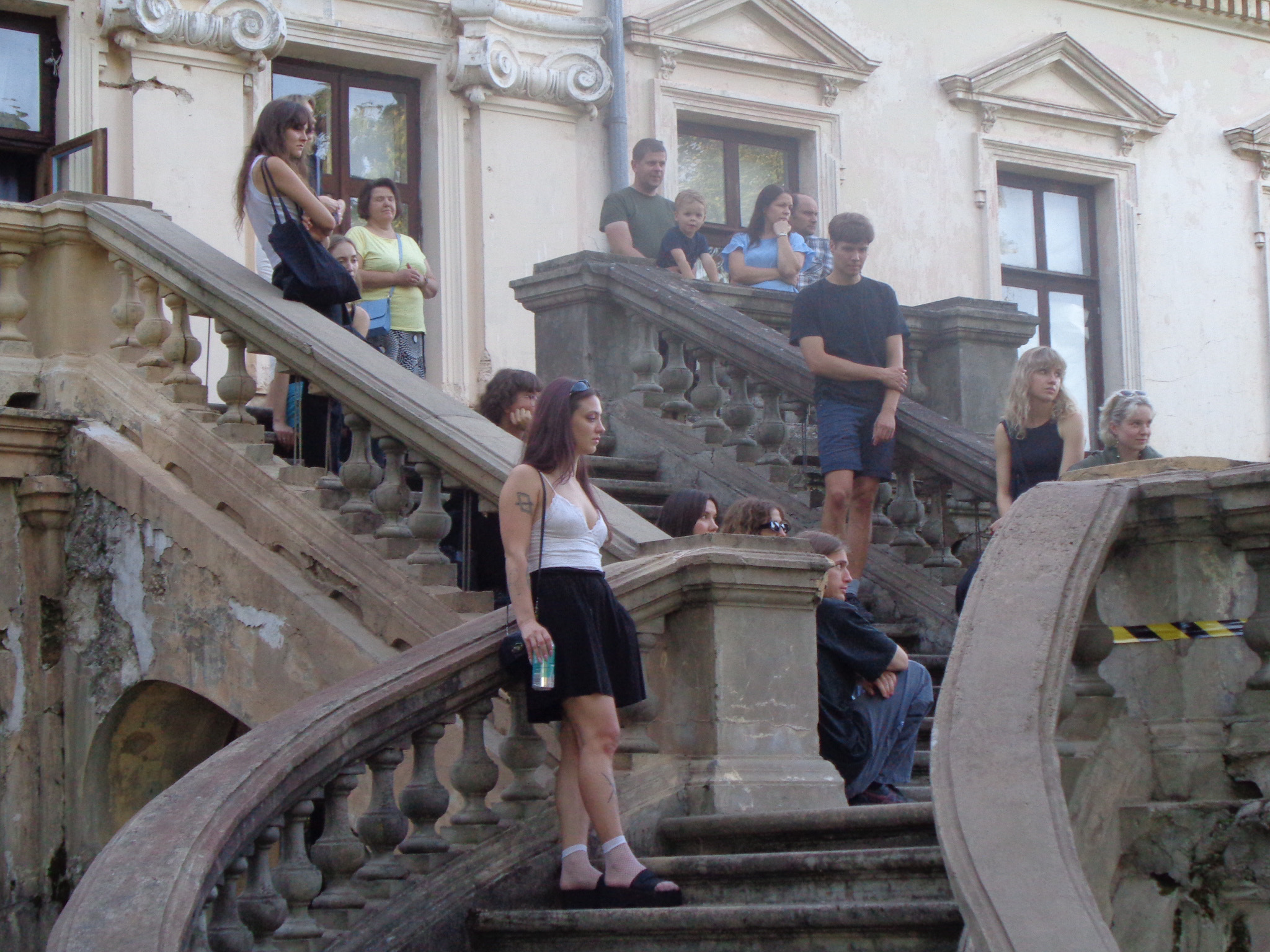

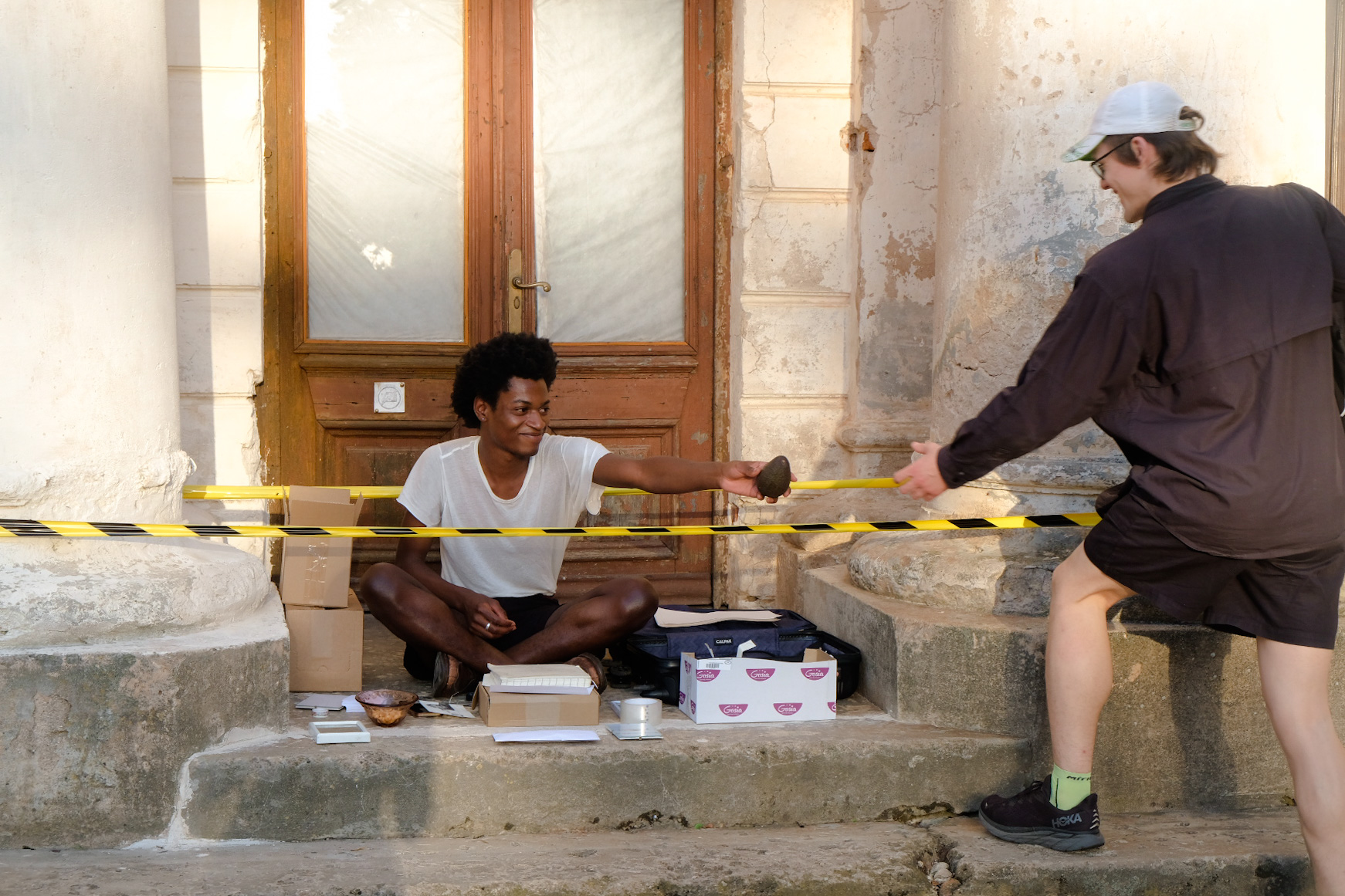

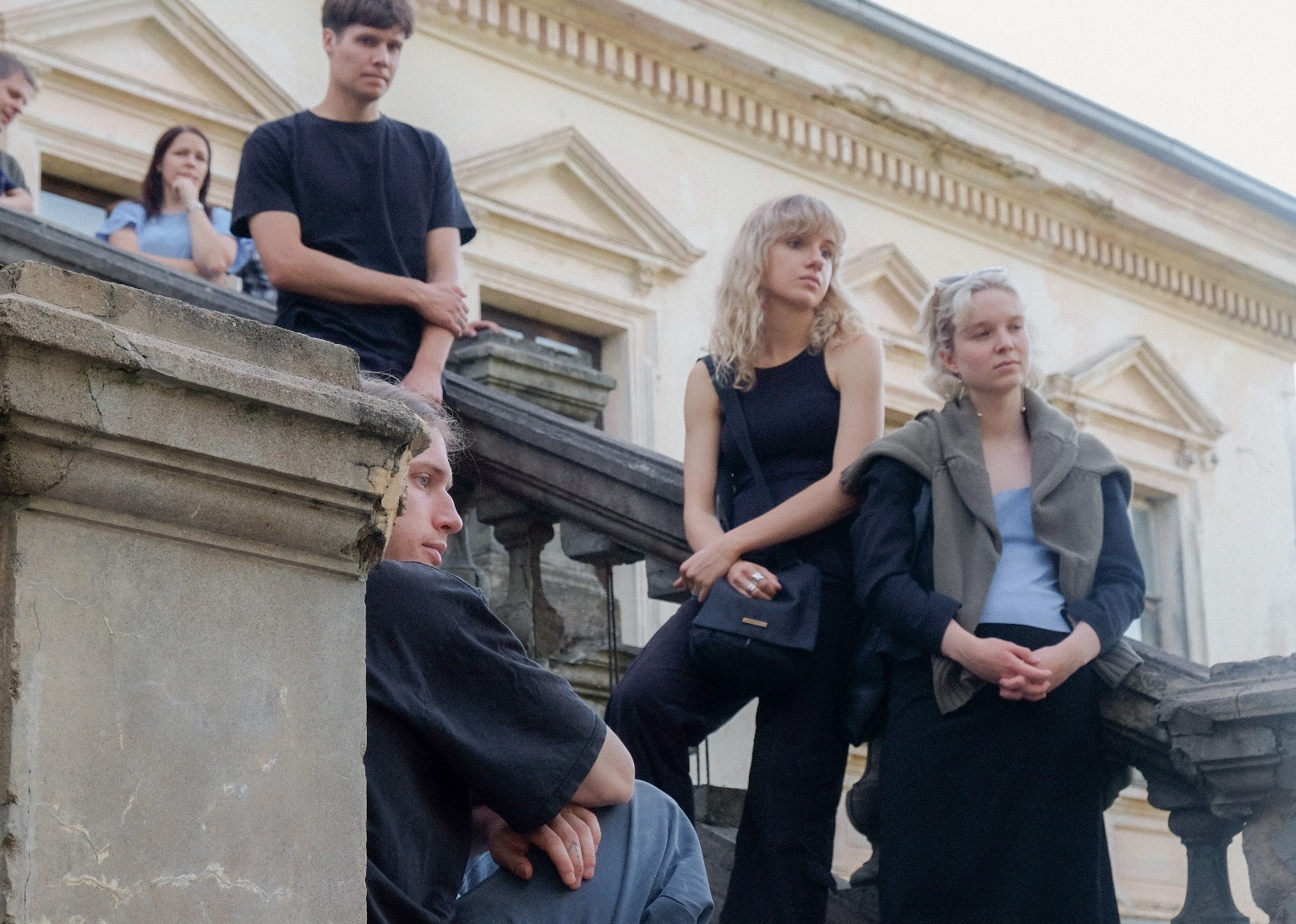
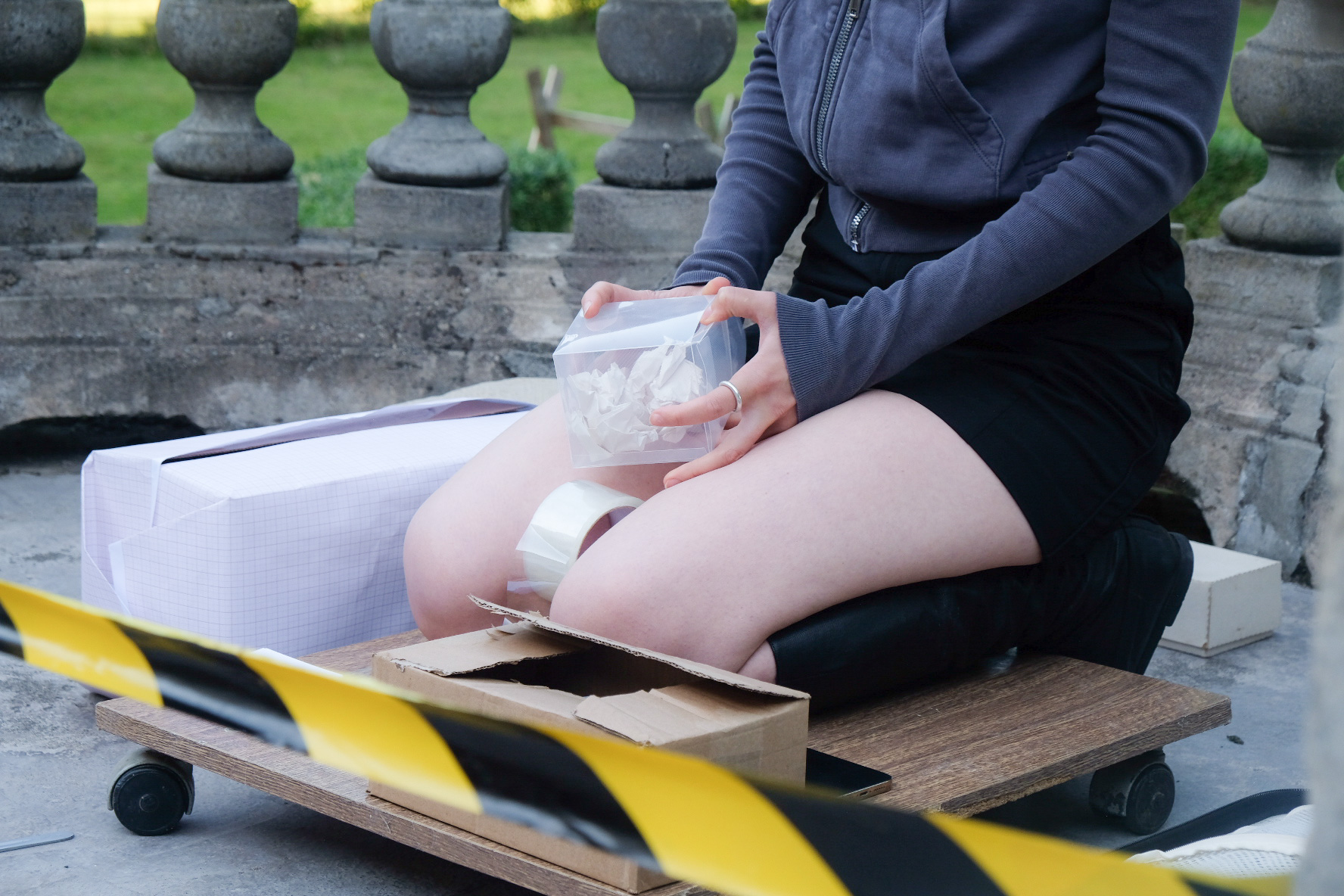

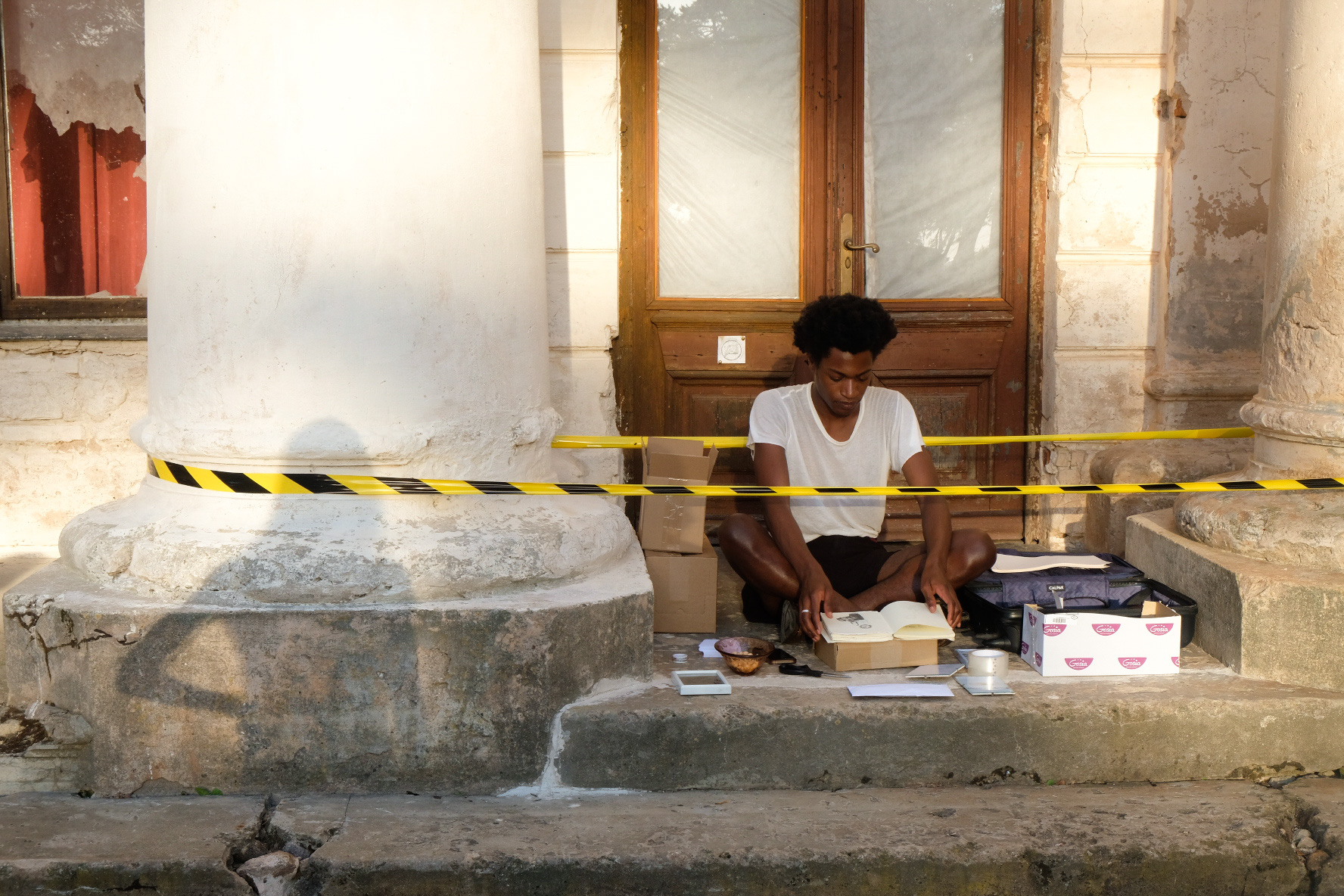
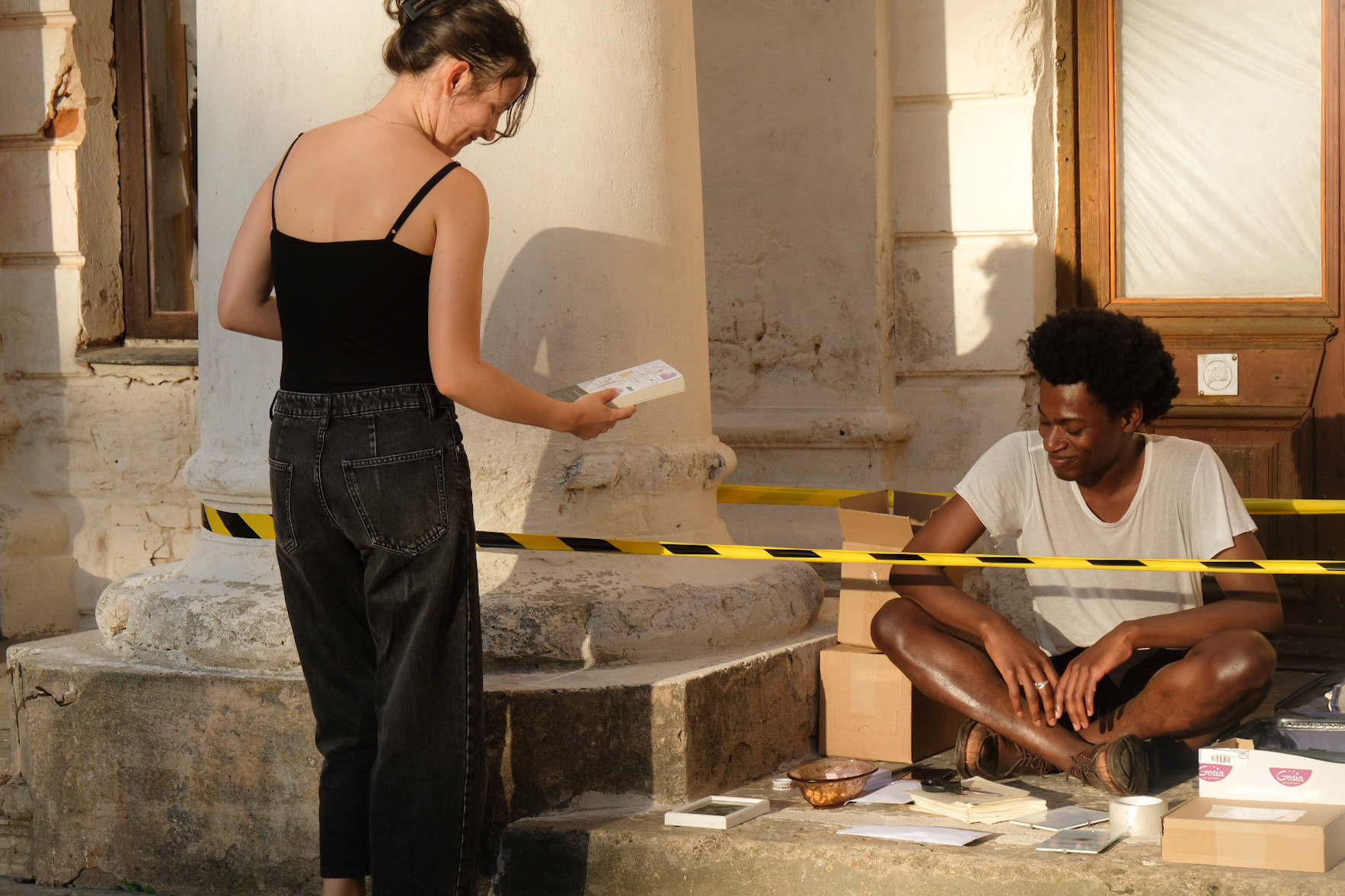


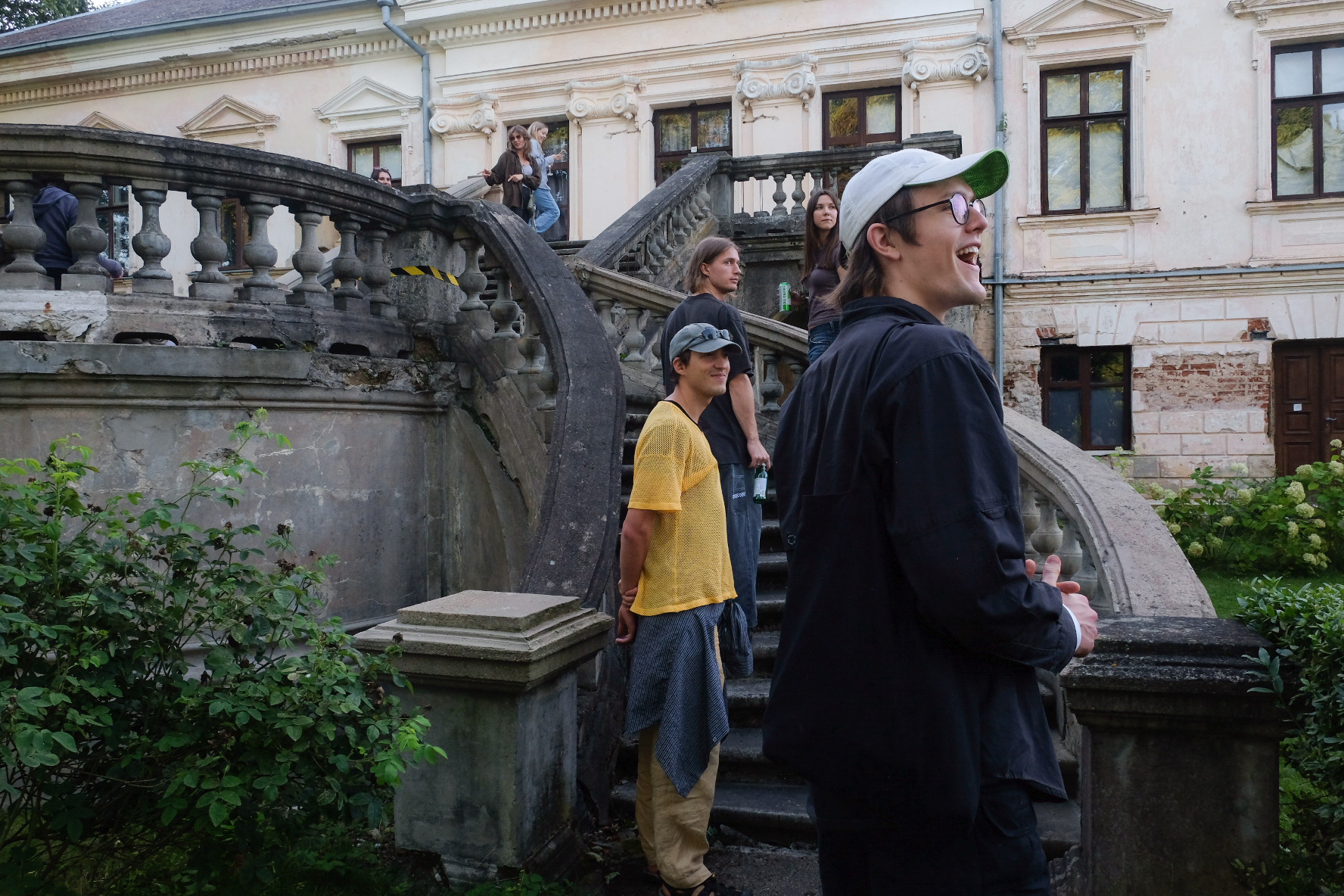
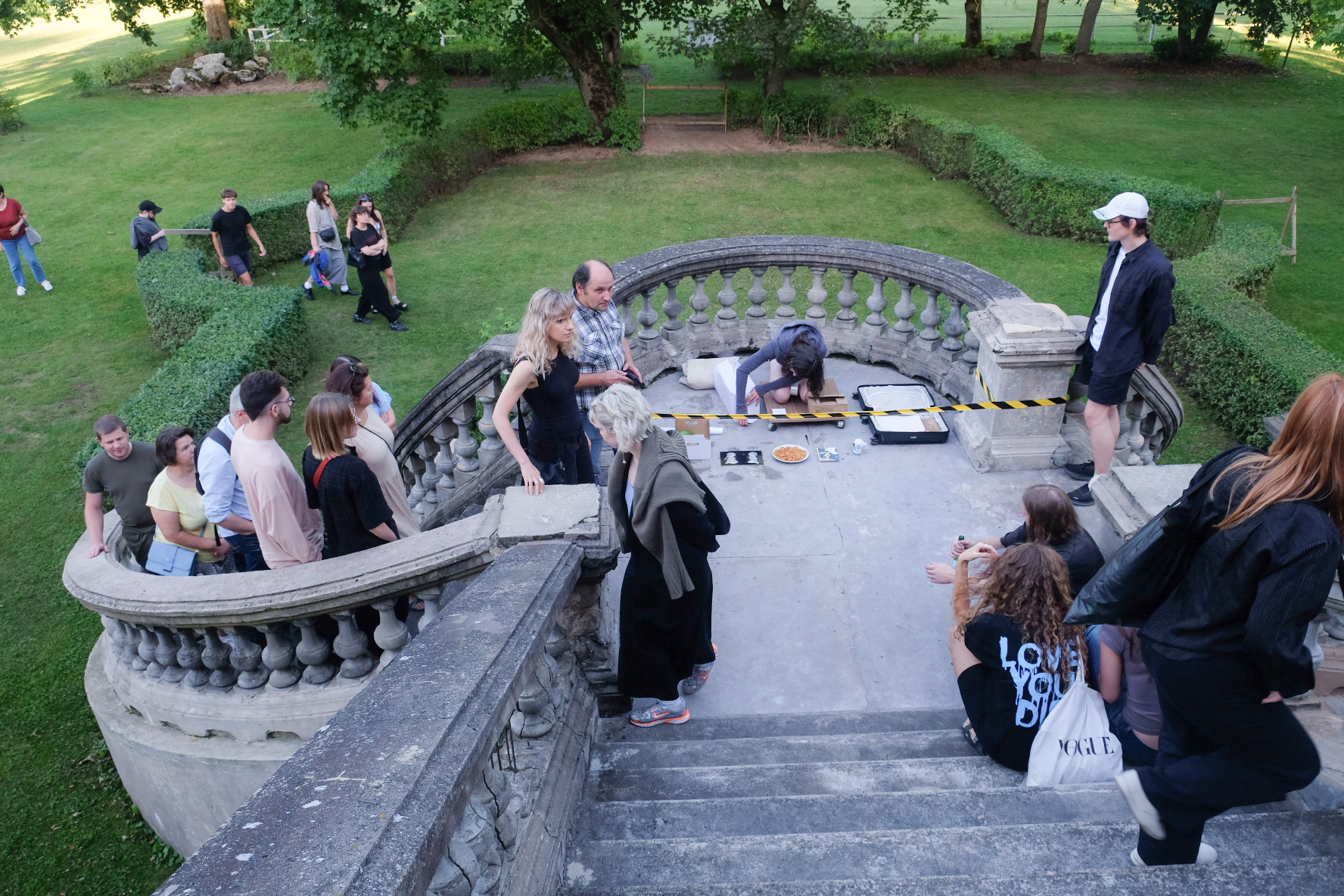
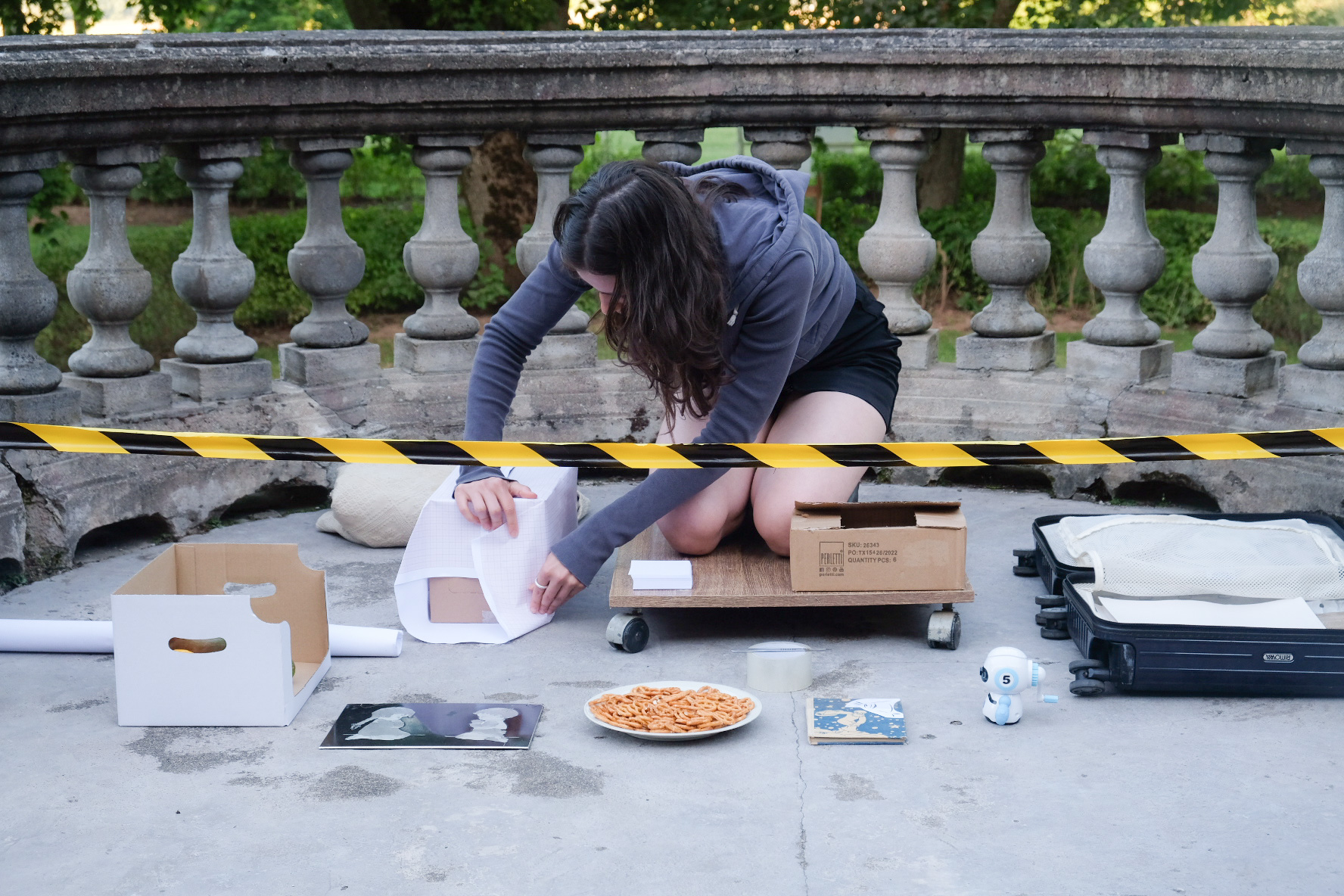

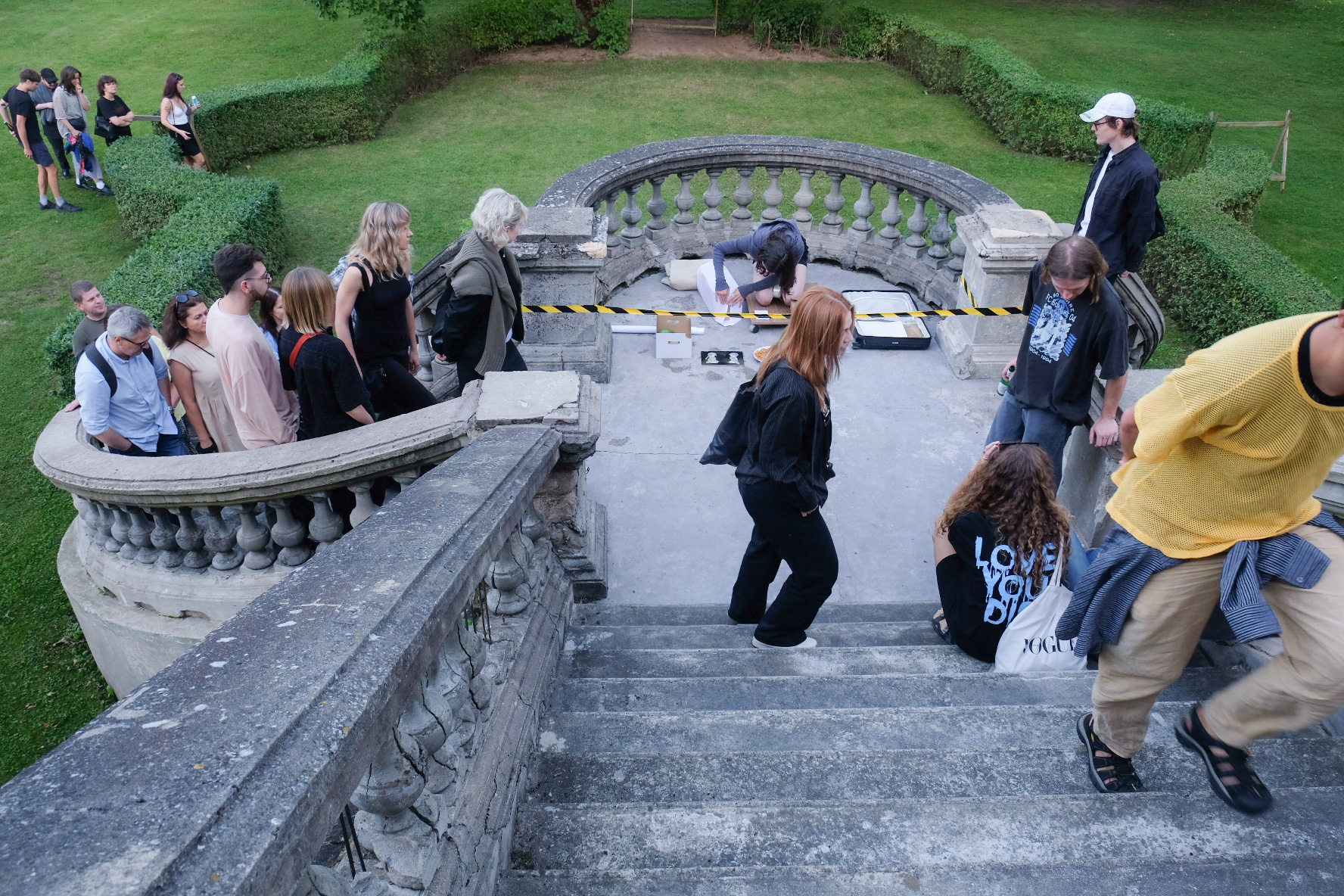


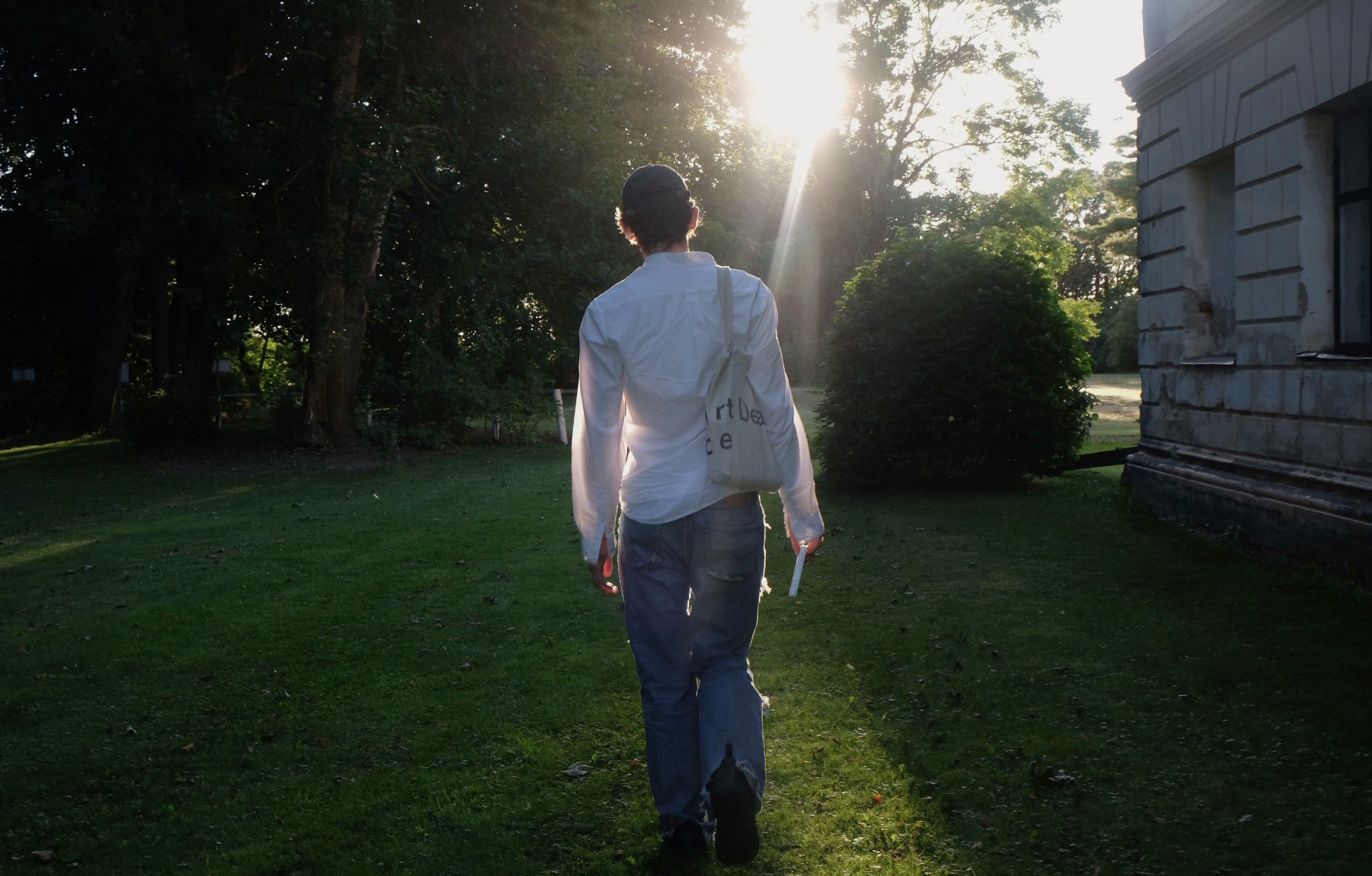
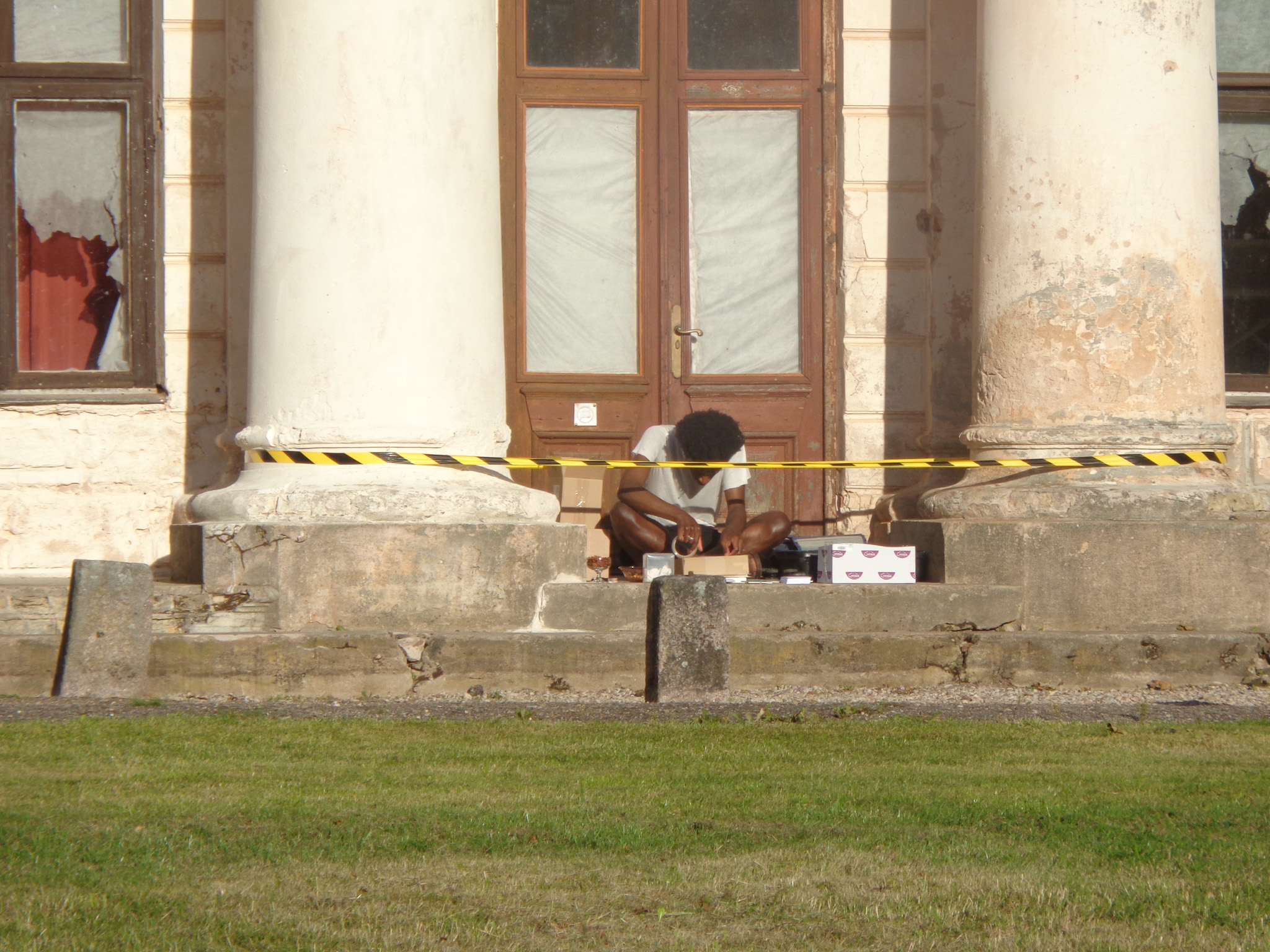
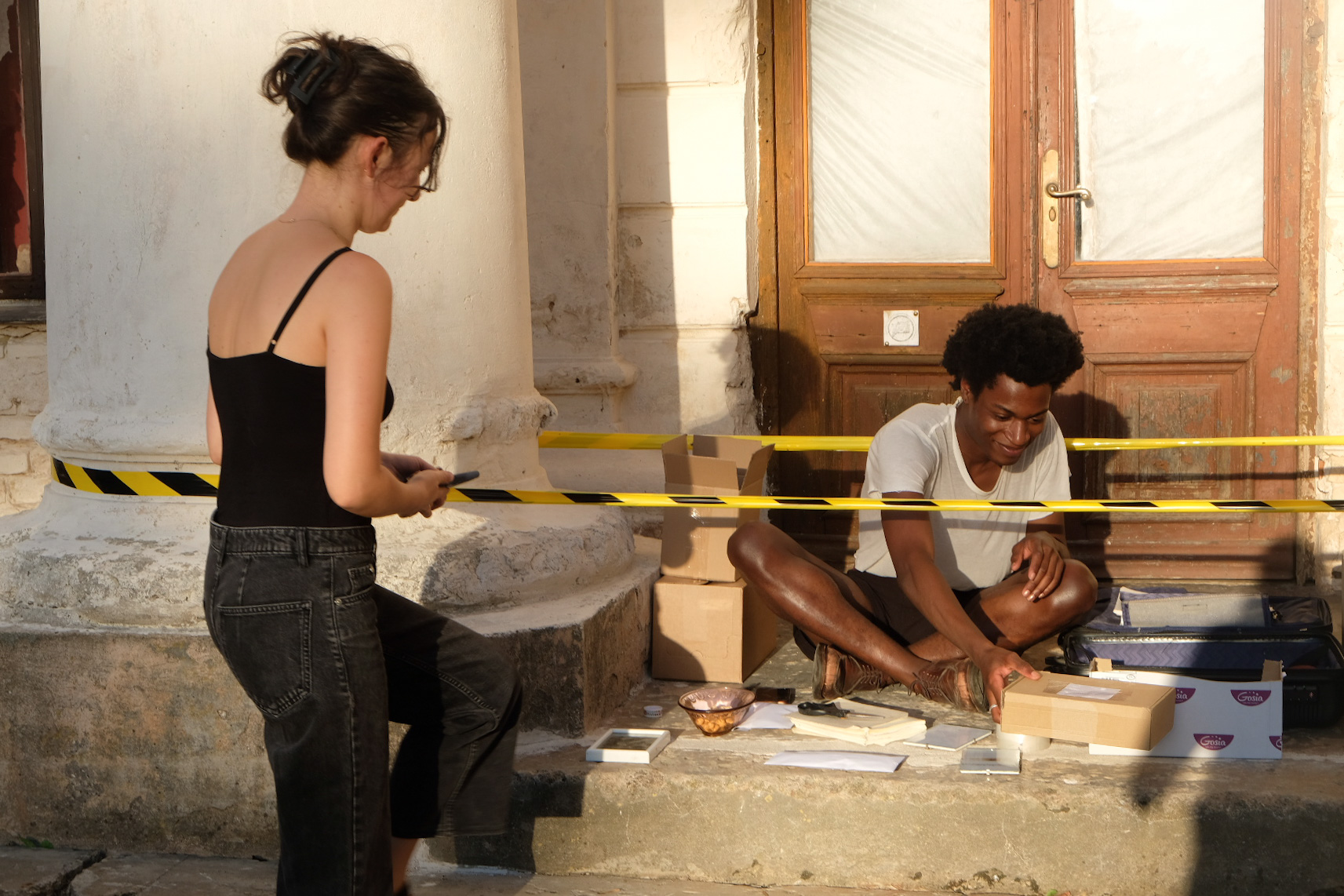

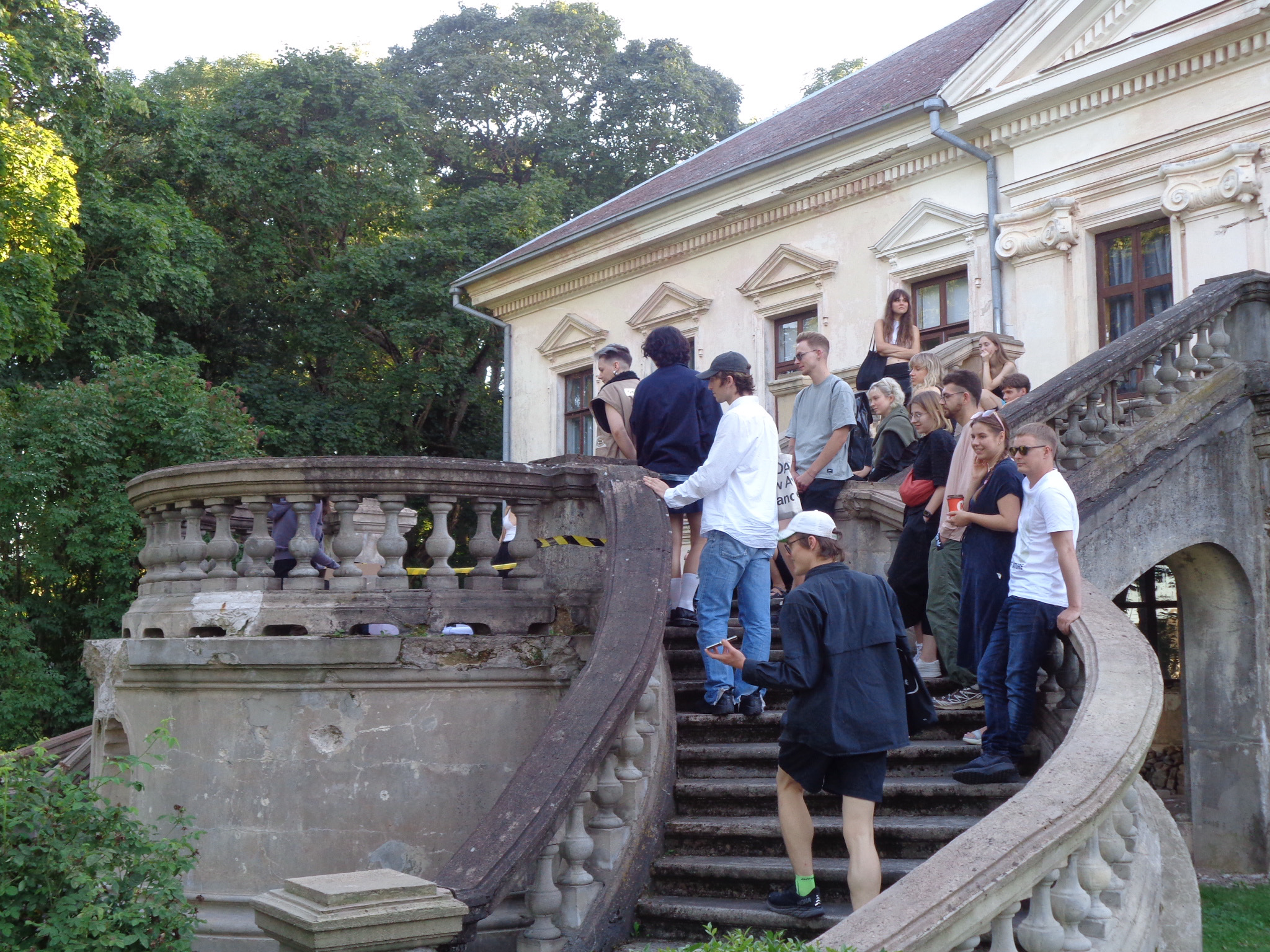
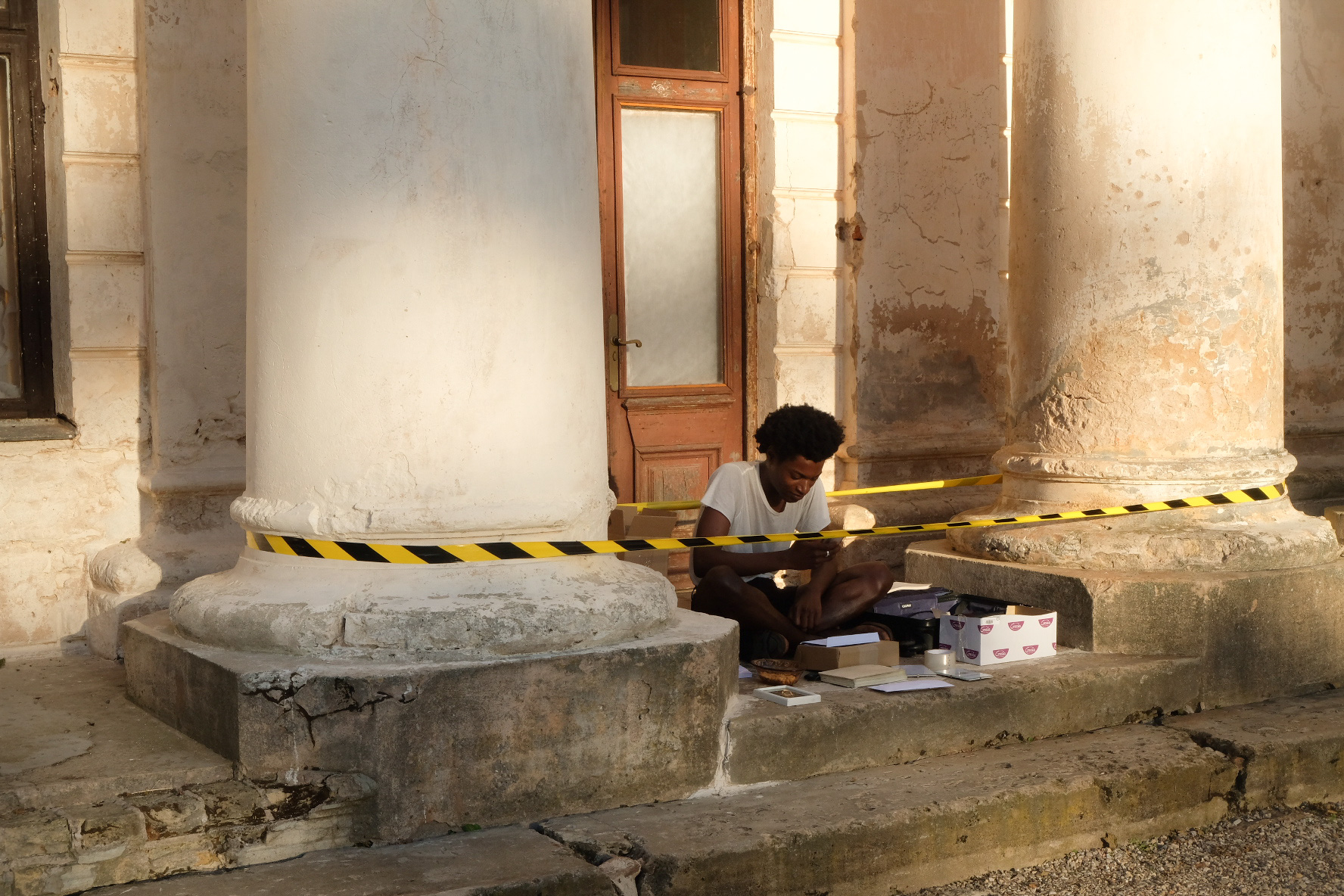
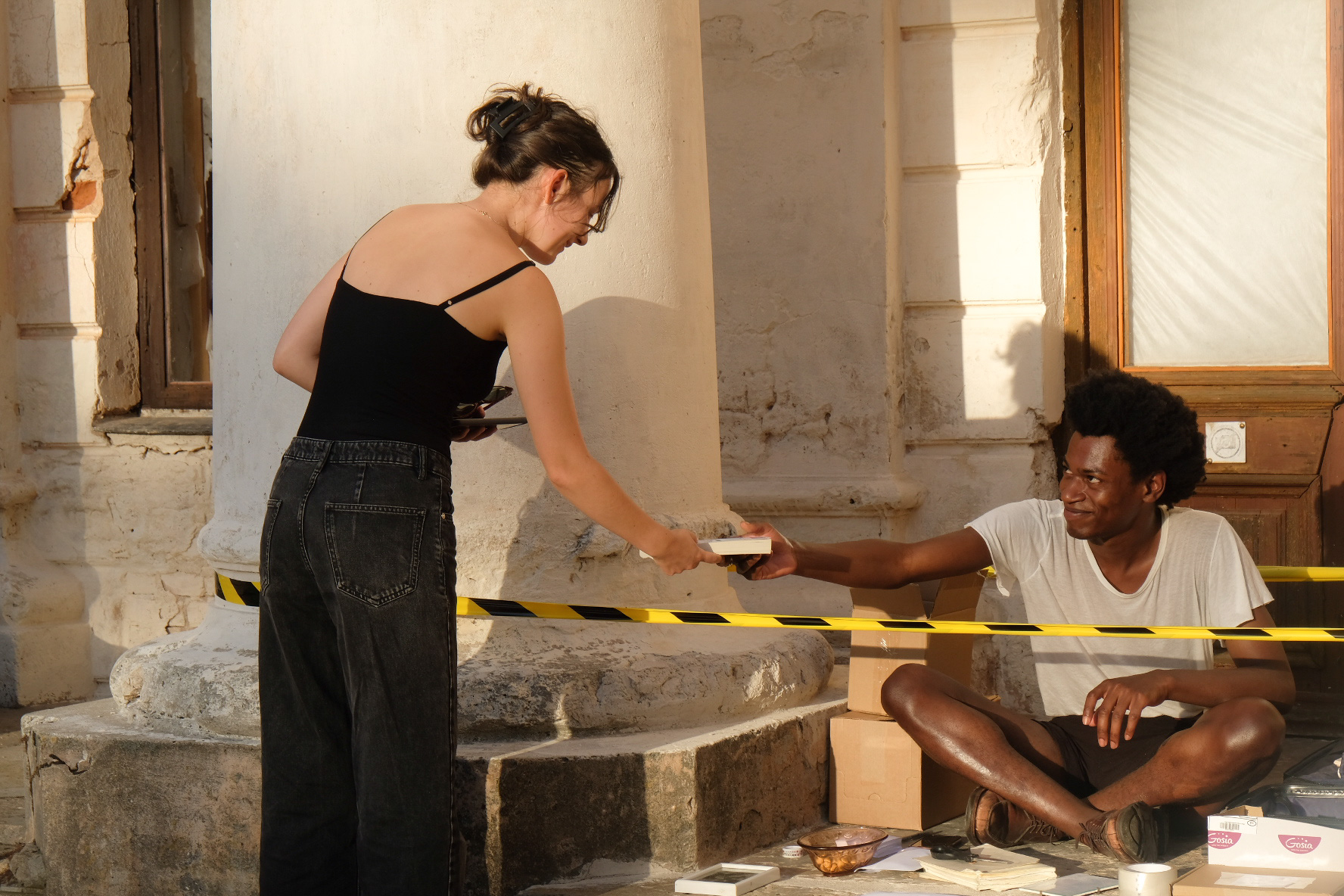
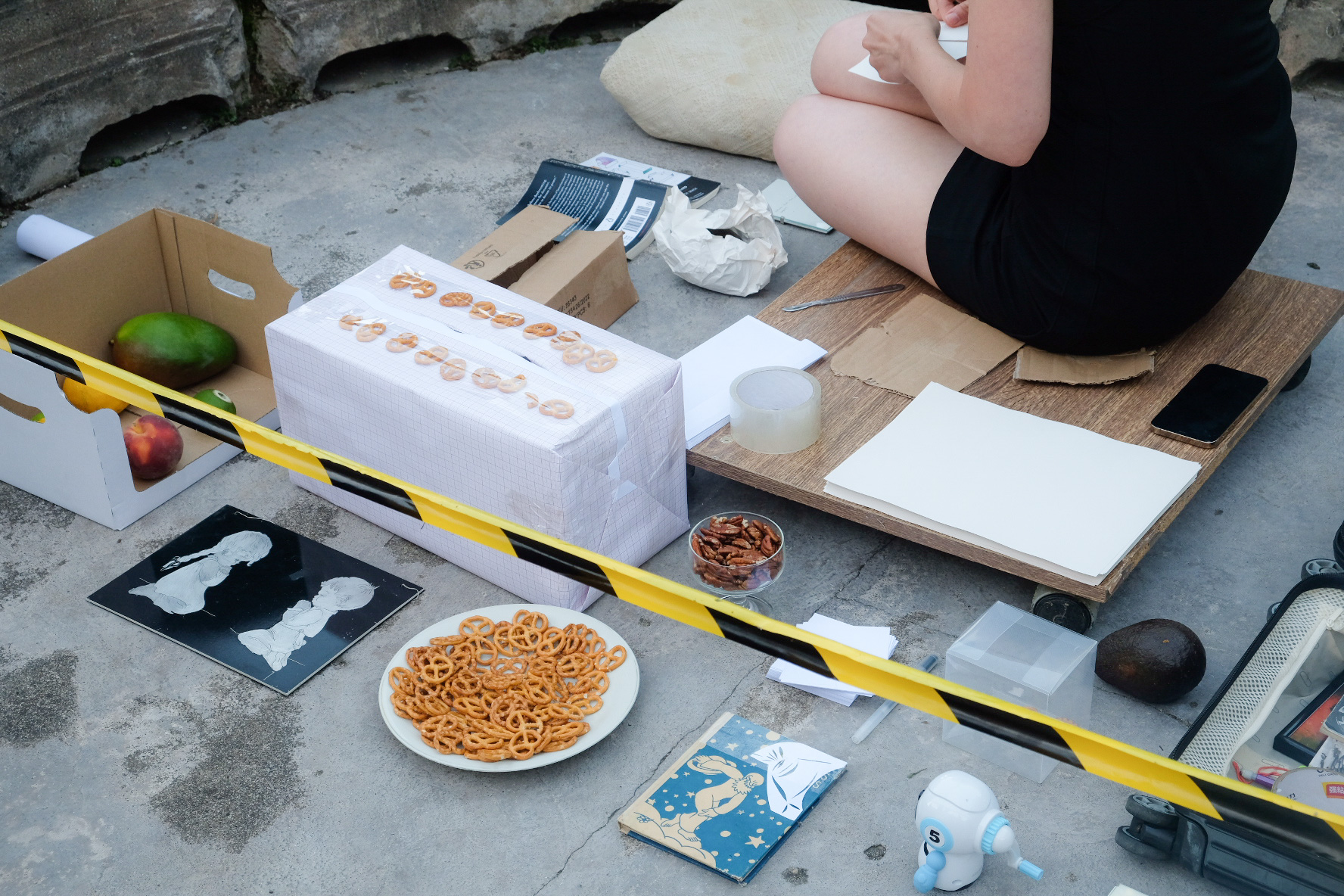
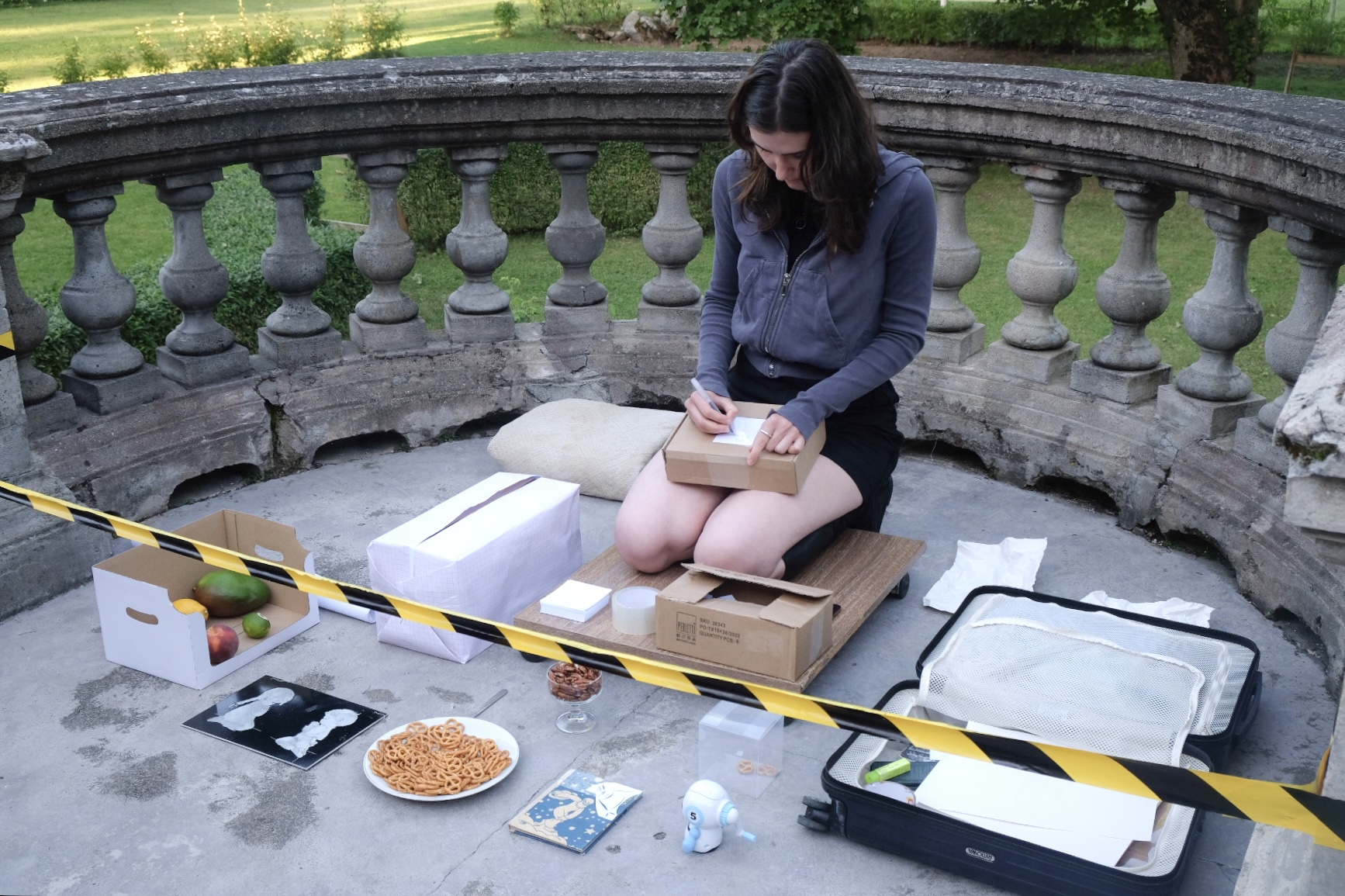
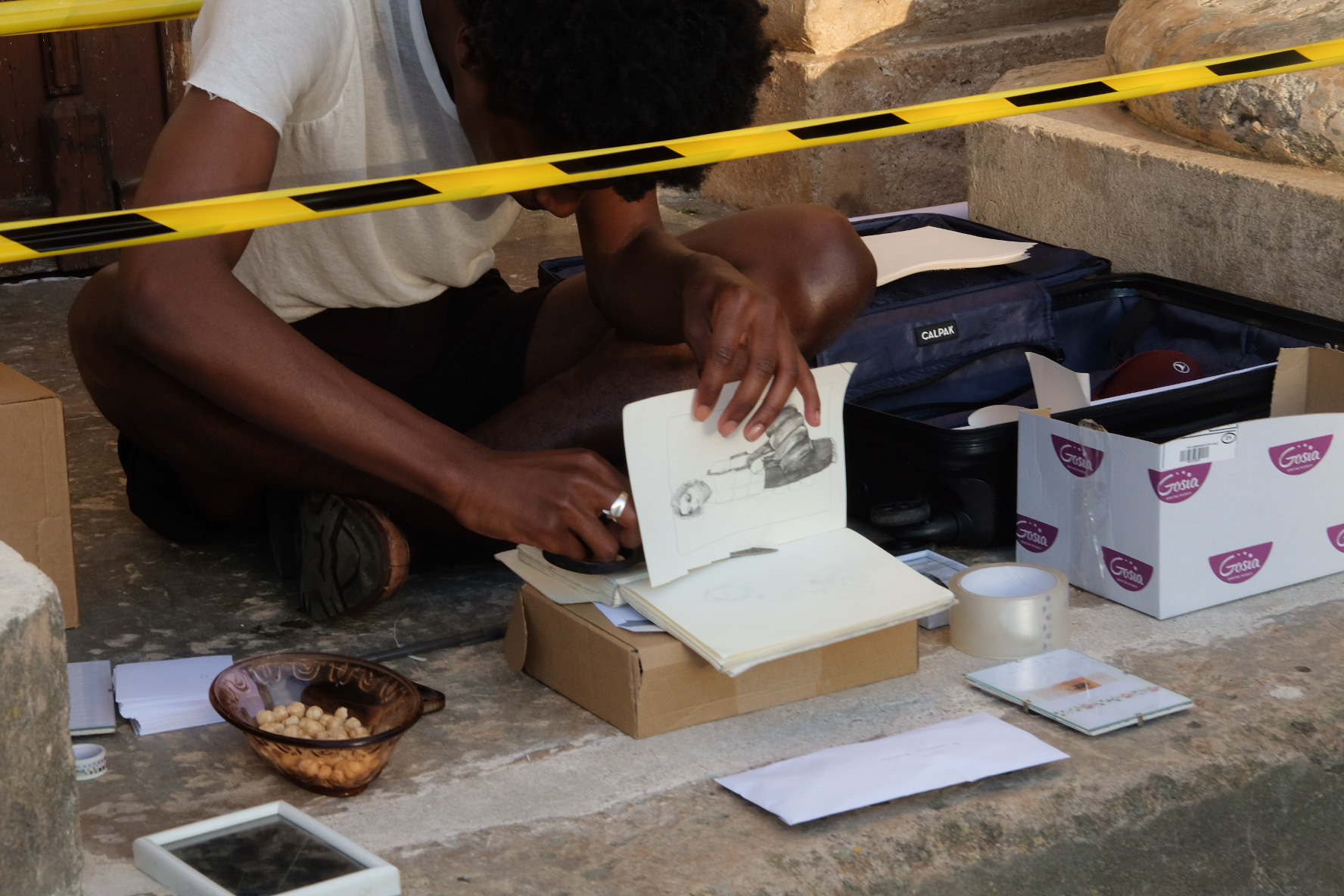
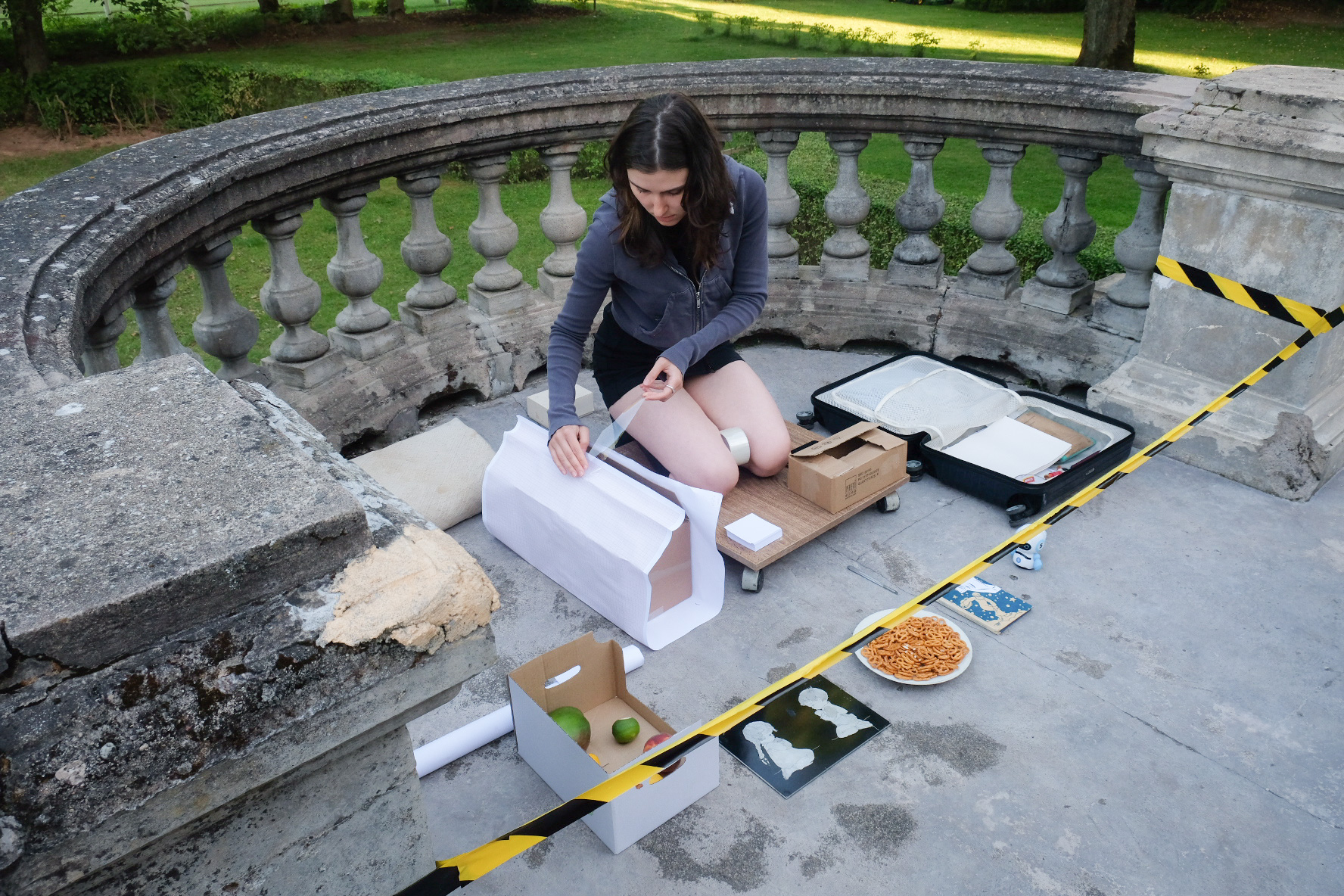
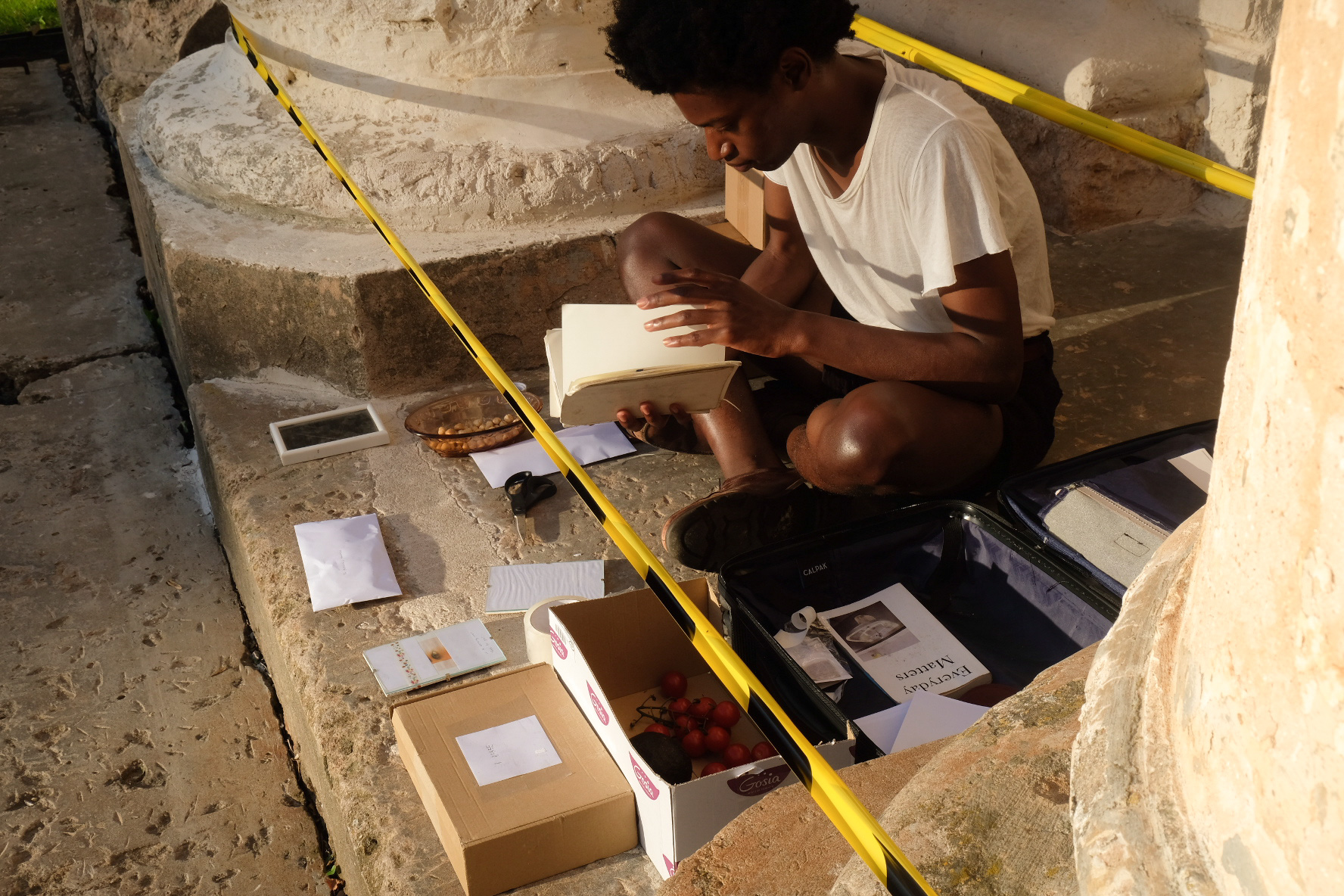
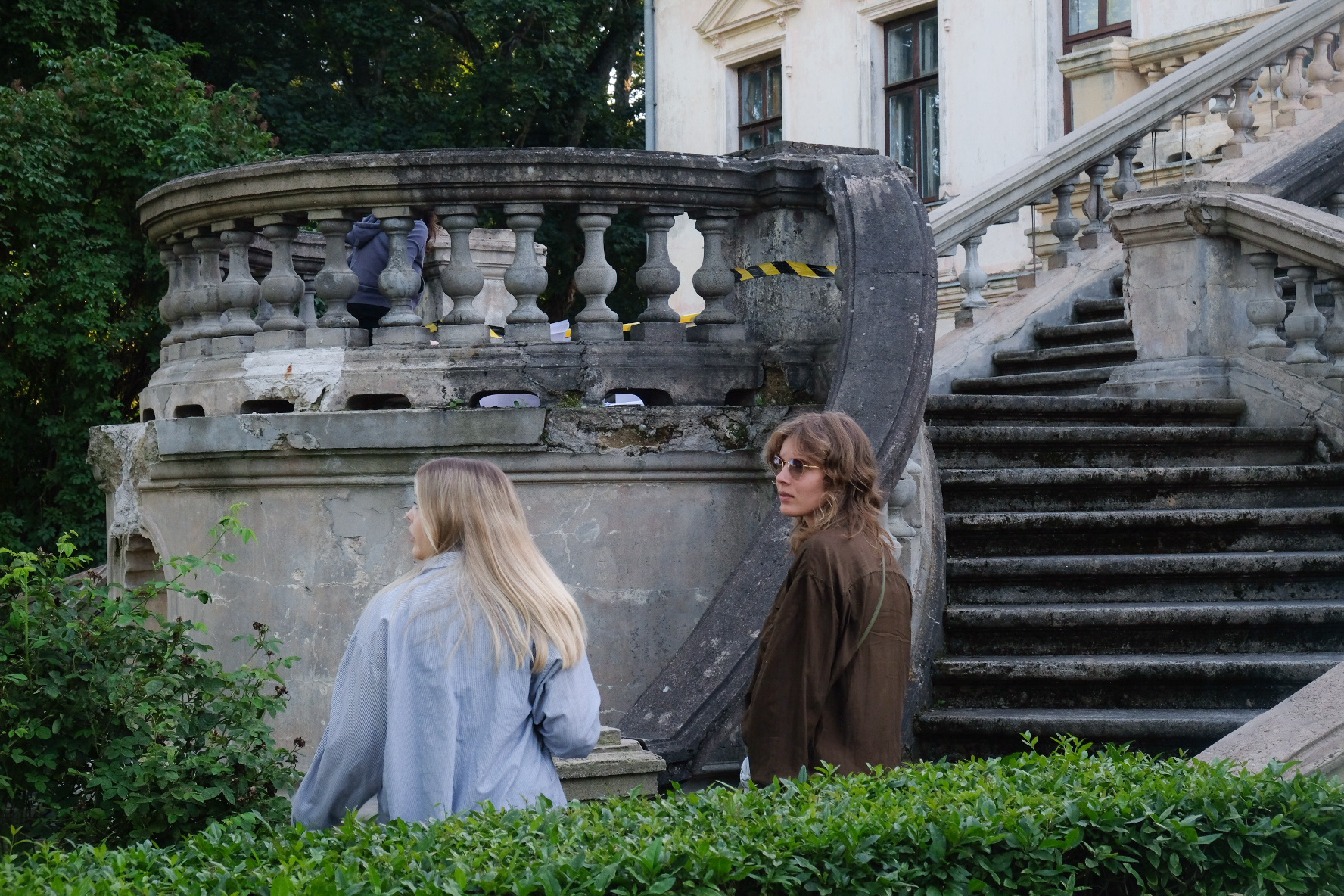

27 08 2022 → 01 11 2022
The curator of the group exhibition “Mimeses”, Aikas Žado Laboratory, Žeimiai Manor House.
Participating artists: Domas Noreika, Delphine Lejeune, Aistė Ambrazevičiūtė, Eglė Ambrasaitė, Ieva Marija Andrulytė, Enrika Stanulevičiūtė, Ieva Gudelaitytė, Aušra Vismantaitė-Silva, Jerzy Zieliński
Curator of the exhibition: Eglė Ambrasaitė
Architect of an exhibition: Domas Noreika
Designer of the exhibition: Aušra Vismantaitė-Silva
Artwork image used for cover: Helin Sahin
Font: Gailė Pranckūnaitė
“Mimeses”
In the short PBS documentary “Octopus: Making Contact” (2019) we hear how marine biologist, David Scheel, describes the ever-changing textures and colors of the sleeping octopus Heidi’s skin, trying to playfully narrate her dreams. Clarifying that Heidi’s dreaming is a conjecture (it has not yet been scientifically proven that octopuses can dream), the excited scientist assures us that if Heidi is indeed dreaming, then what we are witnessing is a truly dramatic moment. I’ll explain why right away. It is spectacular enough that with the help of chromatophores in their skin, octopuses are able to quickly change their appearance, thus simultaneously communicating and disguising themselves. However, if what we are seeing is indeed Heidi’s dream, it would mean that this impressive creature is able to mimic and blend into an environment that does not exist, thus creating an imitation of a non-existent original. Even if the seascape that provoked her ‘dream’ doesn’t exist (she didn’t actually catch a crab and she didn’t hide to eat it), her camouflage performance, which, importantly, can be read by other sea creatures, is real. The possible dream of the octopus reminded me of a passage from the “Gender Trouble,” where Butler writes that “[…] gay is to straight not as copy is to original, but, rather, as copy is to copy. The parodic repetition of “the original” […] reveals the original to be nothing other than a parody of the idea of the natural and the original (Butler 1990:31). Speaking about performativity in the context of gender and sexuality, Butler argues that our gender performances are predetermined and constituted by the norms that outline and support the gender regime, and we can only ‘perform’ gender by taking into account the repeatability of these norms (known forms and patterns of behavior). The citability of gender and sex limits us in places where our performativity could break away from the constant repetition of ‘ideals’. However, the very fact that we have to constantly repeat these norms shows their instability and the possibility of the collapse of the non-existent ‘original’. After all, as Butler stated, power is ambivalent and must be perceived with its immanent possibility of resistance: paradoxically, only a subject constrained by norms can slip through the ambivalent crack. In addition, as Lacan once argued in his 11th seminar on the Gaze, self-formation and self-performance shape the gaze of the other, and the impression created can be manipulated in a variety of ways, including ideas and practices of deception, assimilation, and invisibility (Lacan 1977:99). Thinking with and about (possibly) dreaming octopus and the non-existent original of the seascape projected by her body, the artists participating in the group exhibition “Mimeses”, invite us to look further beyond what is considered to be ‘original’, by looking at the practices of mimesis and camouflage without the aftertaste of humanistic/moral dishonesty. Perhaps the seedbed of the possibility for the marginalized working class, heterogeneous non-white, non-heteronormative queer communities, and becoming in species will find itself stemming from here?
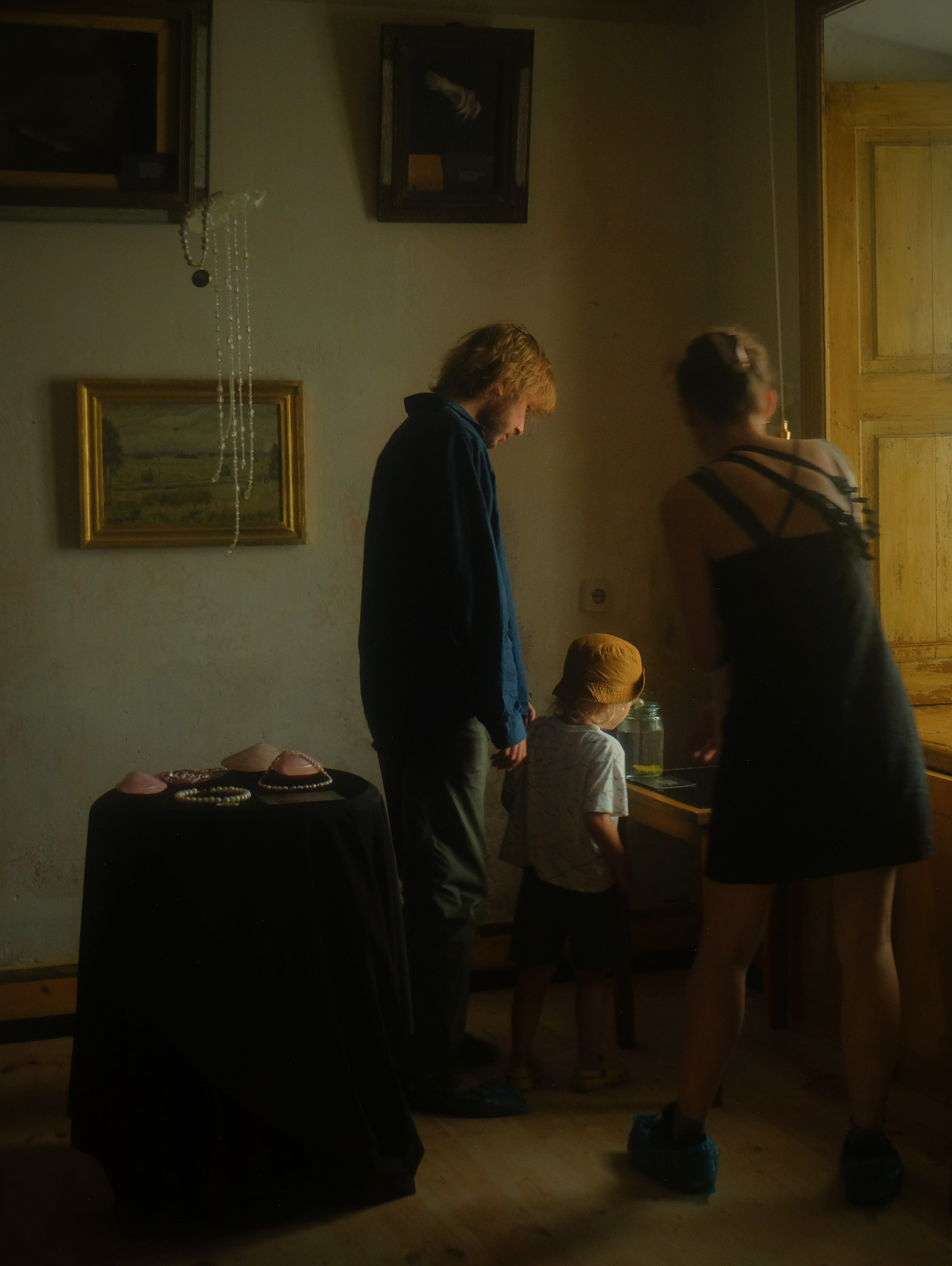
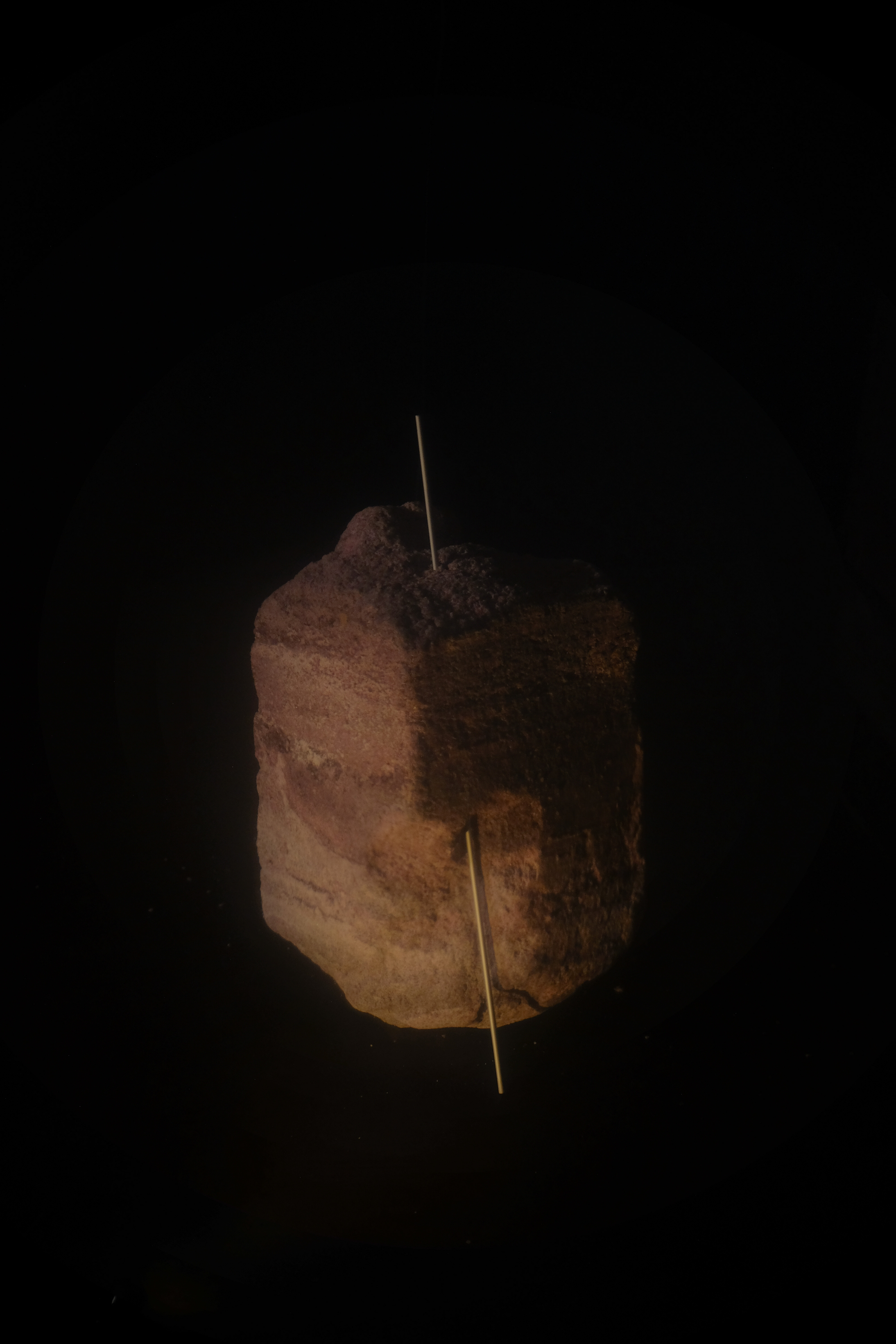
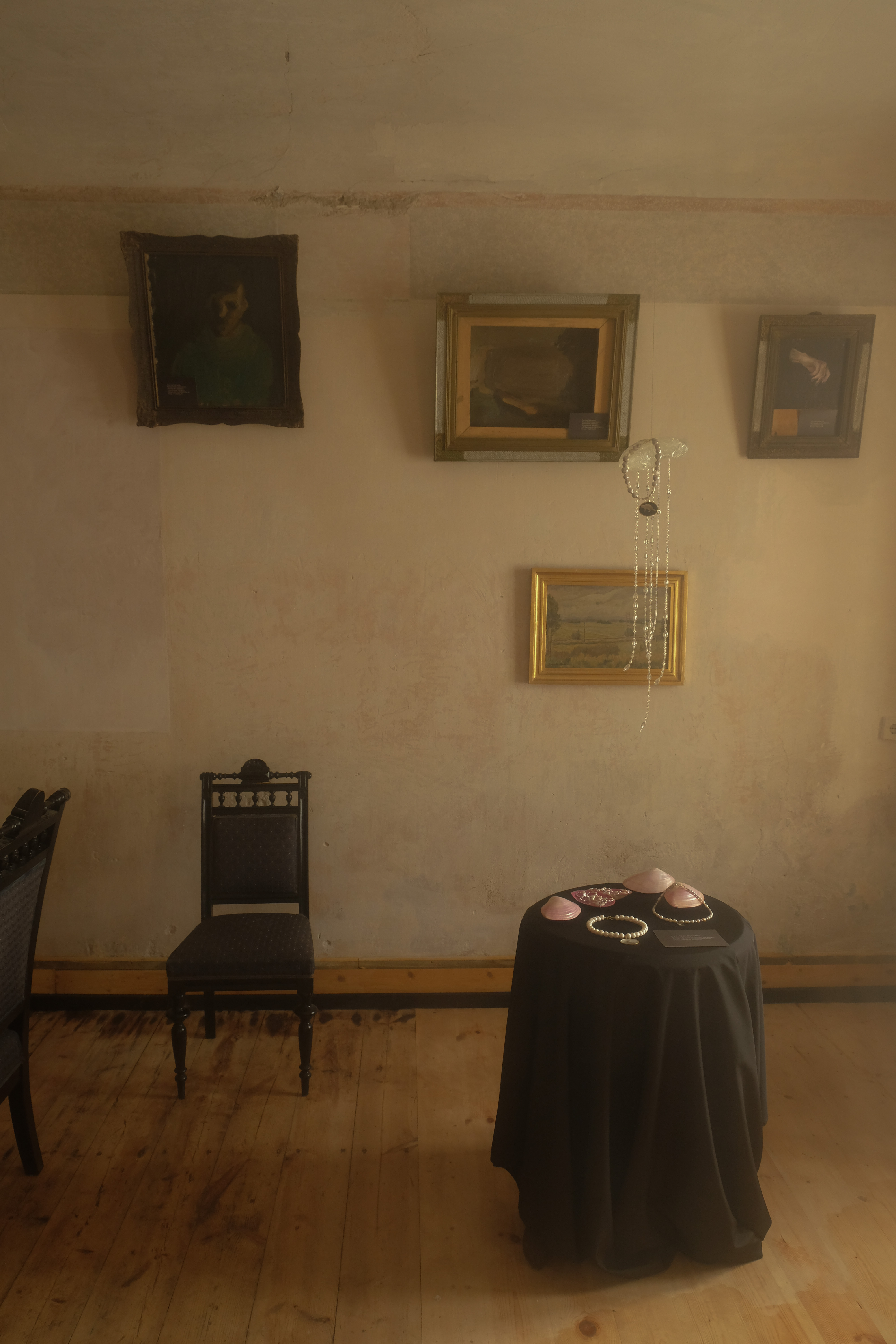
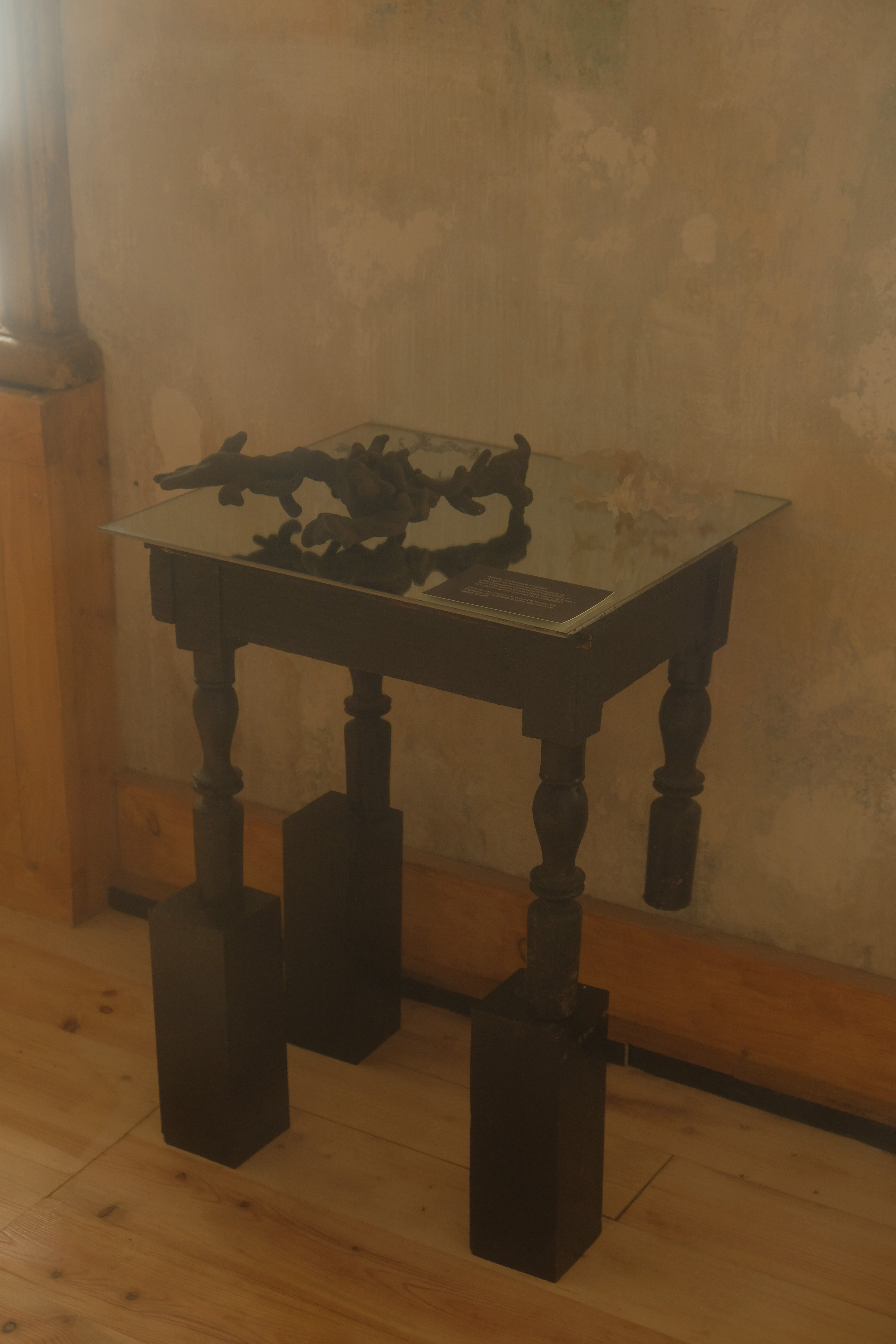

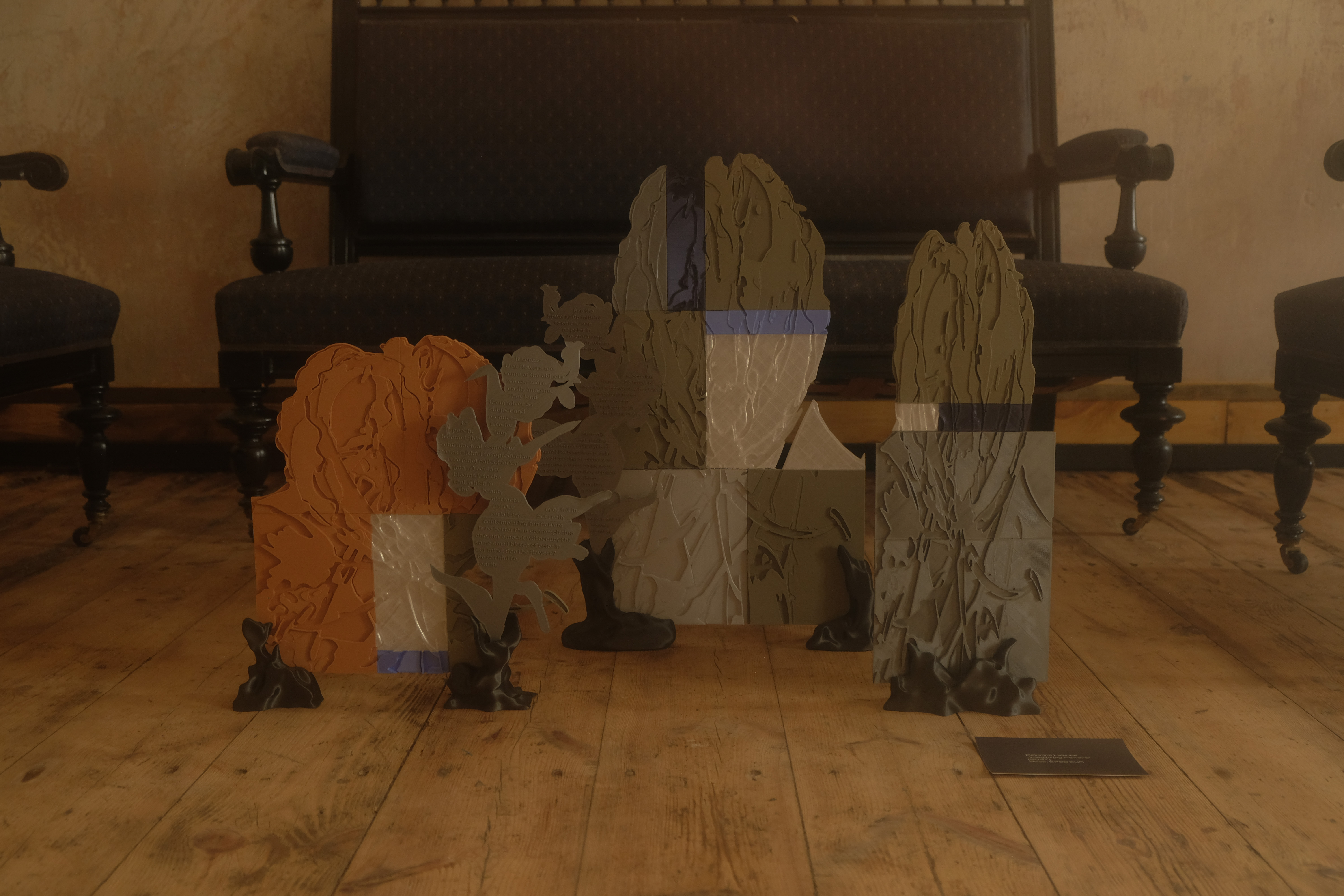
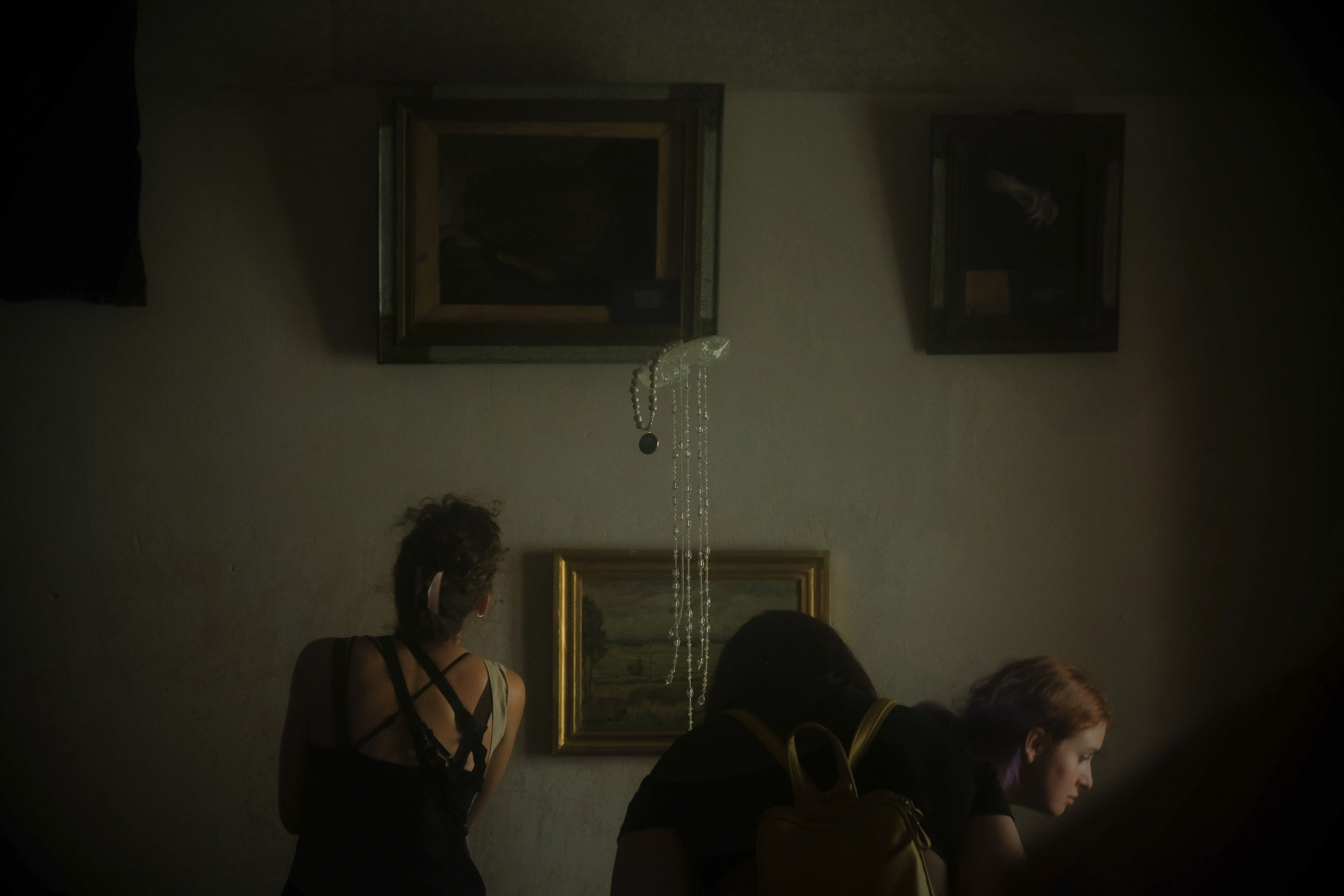
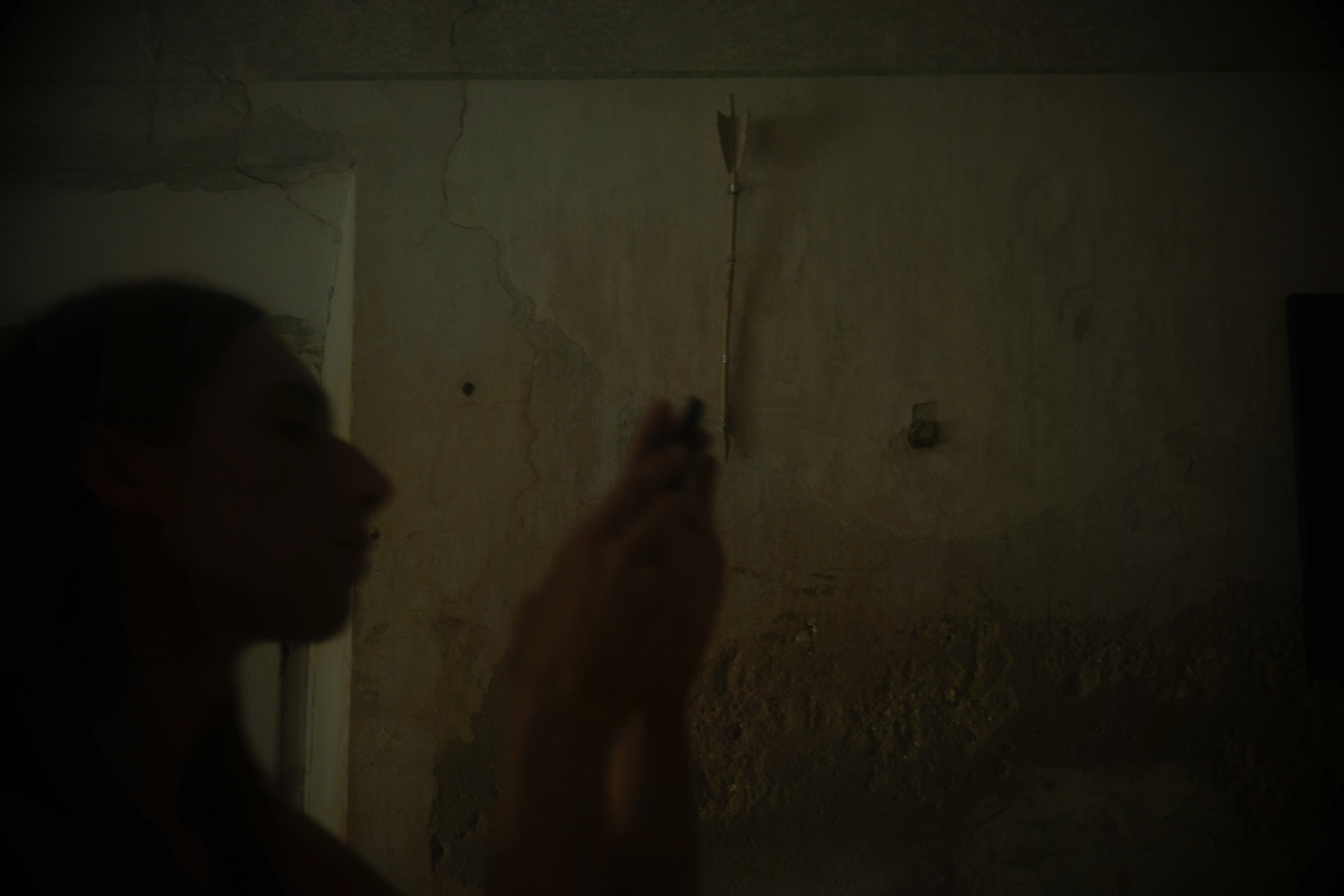


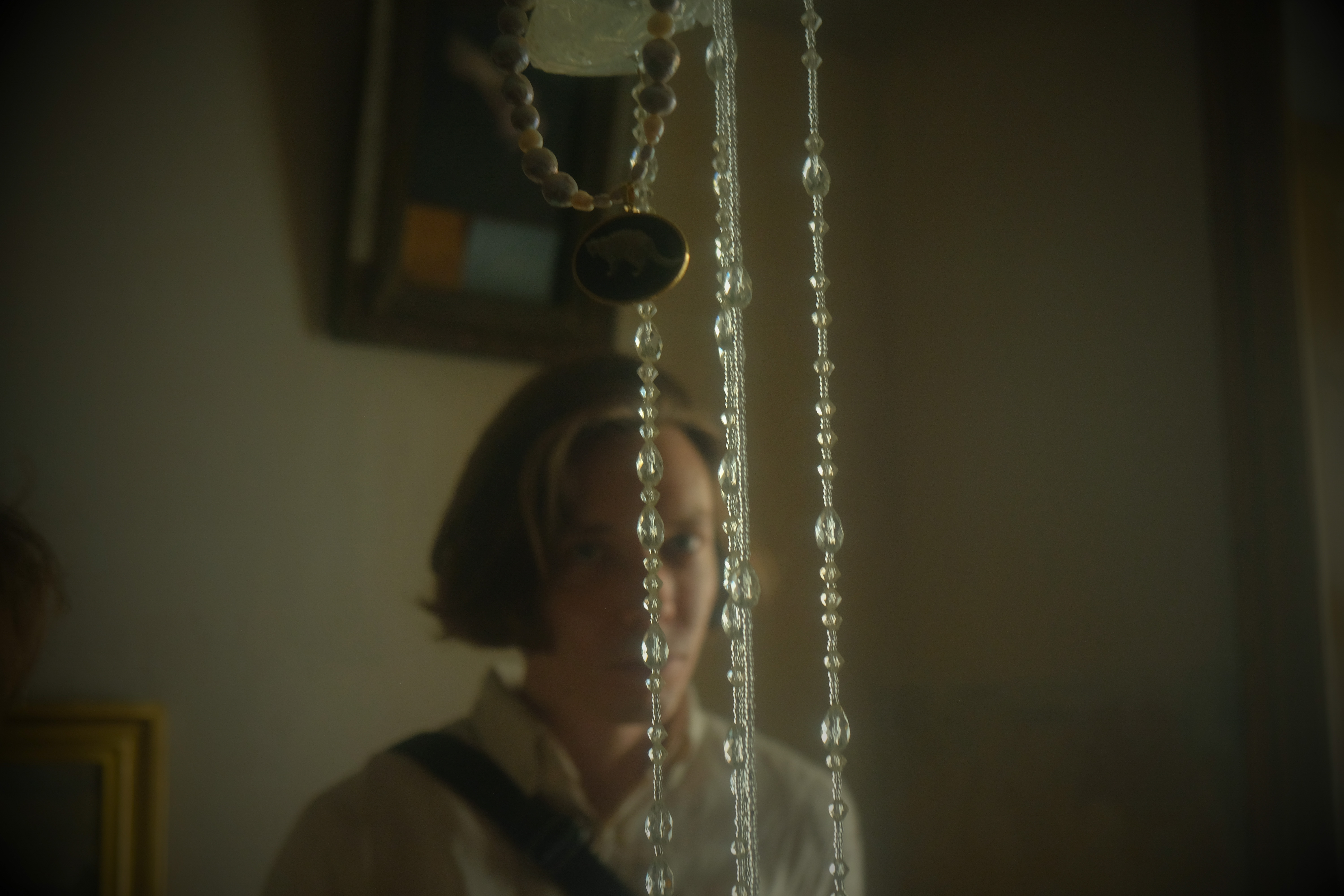
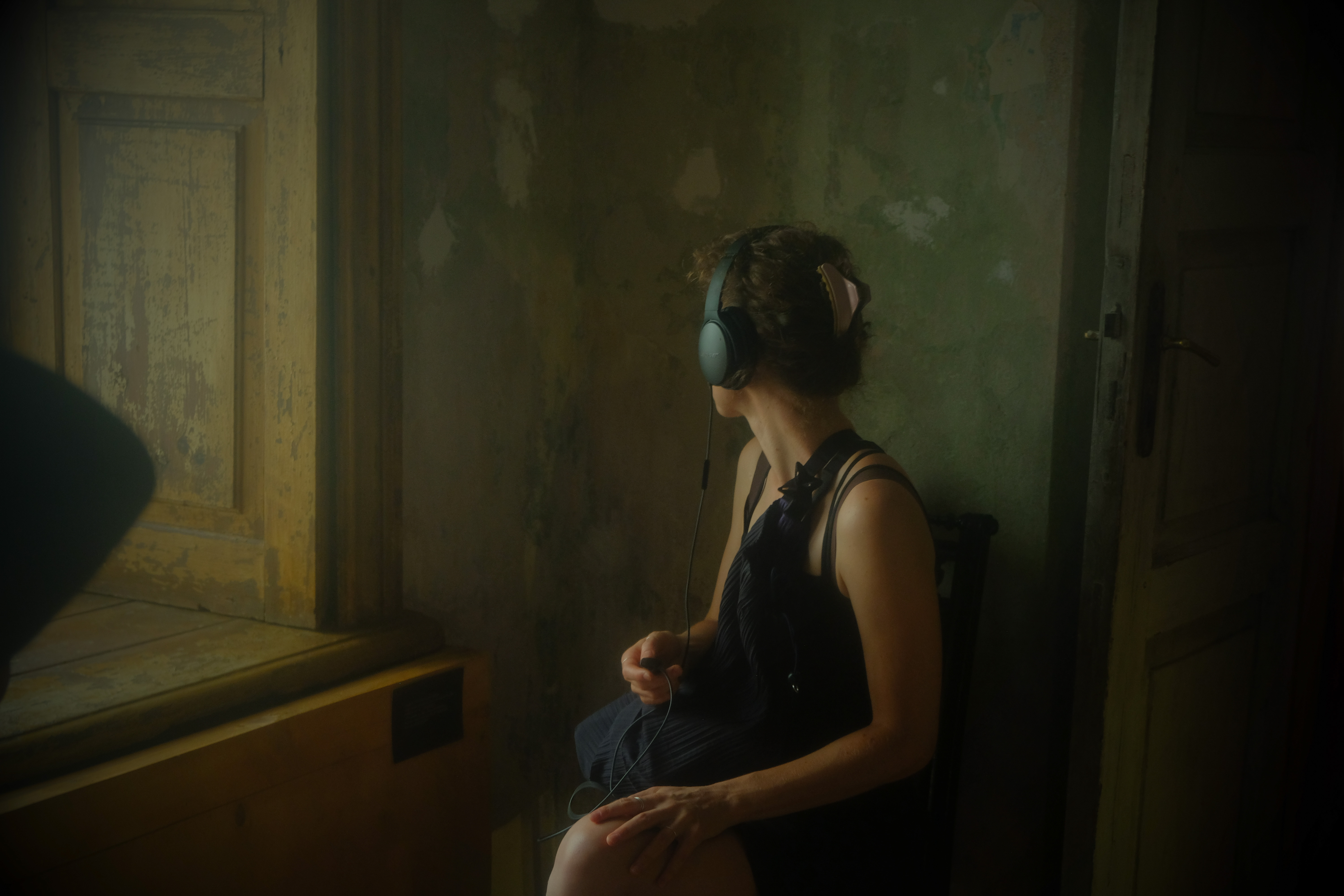
01 04 2020 → 15 10 2020
The curator of the group exhibition “Enchanted Landscapes”, Invisible Man’s Cinematheque and Residency o-yo’s programmes, Aikas Žado Laboratory, Žeimiai Manor House.
Participating artists: Dorota Gawęda and Eglė Kulbokaitė, Ieva Lygnugarytė, Rūta Vėbraitė and Sofia Bordin, OFF2Ensemble, Domas Noreika and Enrika Stanulevičiūtė, Urte Kat
Architect of an exhibition: Domas Noreika
Coordinator of the exhibition: Rokas Vaičiulis
Designer of the exhibition: Gailė Pranckūnaitė
“Enchanted Landscapes”
Once, lived a man who suggested to one other man in higher societal rank that it is more beneficial to reign being feared than loved. Patriarchal ruling and private partition blossomed. Tenderness withered away. Do we tend to love one another, do we tend to relate to one another, between humans, non-humans and other earthy creatures with such a perspective? I do agree with Hardt that “most times when people talk about regimes based on hatred, they in fact are based on a certain kind of love” (Hardt 2014). But as he mentions, it is a horrible kind of love, love that is grounded in sameness, where one loves only the one who is like them. Such notion of love washes off the differences to create a unity, a unity like, for example, white supremacy, nationalisms and various religious fundamentalisms and keeps the social, economic, political relations that mushroom from these intact. Society seems to be deprived of something essential, not even aware of what it is it misses. Hence, what is that, or does one need to ask - other kinds of love, what is a relation of affection between (not implying a separation) bodies, minds and souls, interconnected, intermingled in interspecies way? Is “the enchanted island”, how Bourdieu once called love, “a closed and perfectly autarkic world which is the site of a continuous series of miracles” and “can be snatched from the icy waters of calculation, violence and self-interest”(Bourdieu 2001:109)?The curator of this exhibition has no answers. How can I prescribe one with the description of what can be felt only? Love is a different experience for all of us in all its subtlety, an immeasurable journey, which seems to flower without a cause, in unknown directions..Once you try to open up the question of love - it’s like a storage - felt data, neverending archivum in/of clouds. There is a figure of a mother and a father, visions of homelands and landscapes, machines, guns, rapes, deadly wars and illnesses, dusts of laughter, ephemeral touches, broken hearts, ghosts. There is language. Scars. Consumption. There is magic too, gentleness, tenderness, forgiveness, hope. I touched you while you were unaware, while most vulnerable, while sleeping. I watched our hands wrapped, bodies mingling; gently moving my fingers, I stroked your hair, your skin in zigzags, feeling the warmth of your breath, I murmured without uttering the non-corporeal promise of ‘I love you’. I disengaged with what I thought you should be, depersonalizing myself too. You could not observe this process. It flowed like a river, it was a constant becoming. In doing away with the sentimentality and romanization of love that, to the reader, still might seem to arise from these words, the curator of this exhibition, believes love to be an ontological condition, an ontological power that changes you, and through the relationship with others, as a mode of action, is able to reorient the society too. Hence, keeping love as a main thread for the group exhibition “Enchanted Landscapes”, I invite you to see the “different, unique, unrepeatable, unstable and foreign” (Badiou 2012) perspectives on love, relations and intensities, coming from different journeys, different experiences, from different artists. Let’s try to experience love, and all that surrounds it, together, in differences.

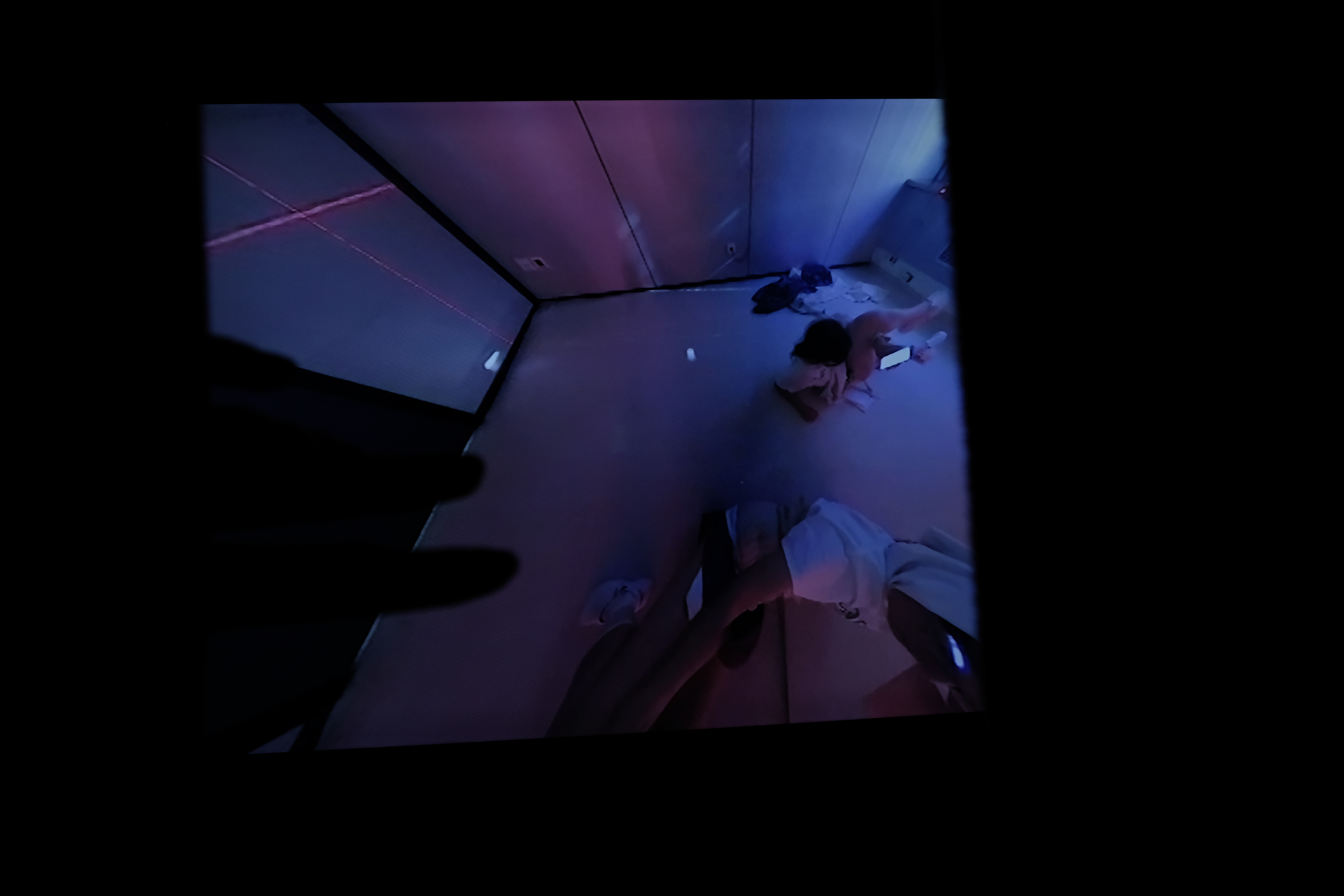

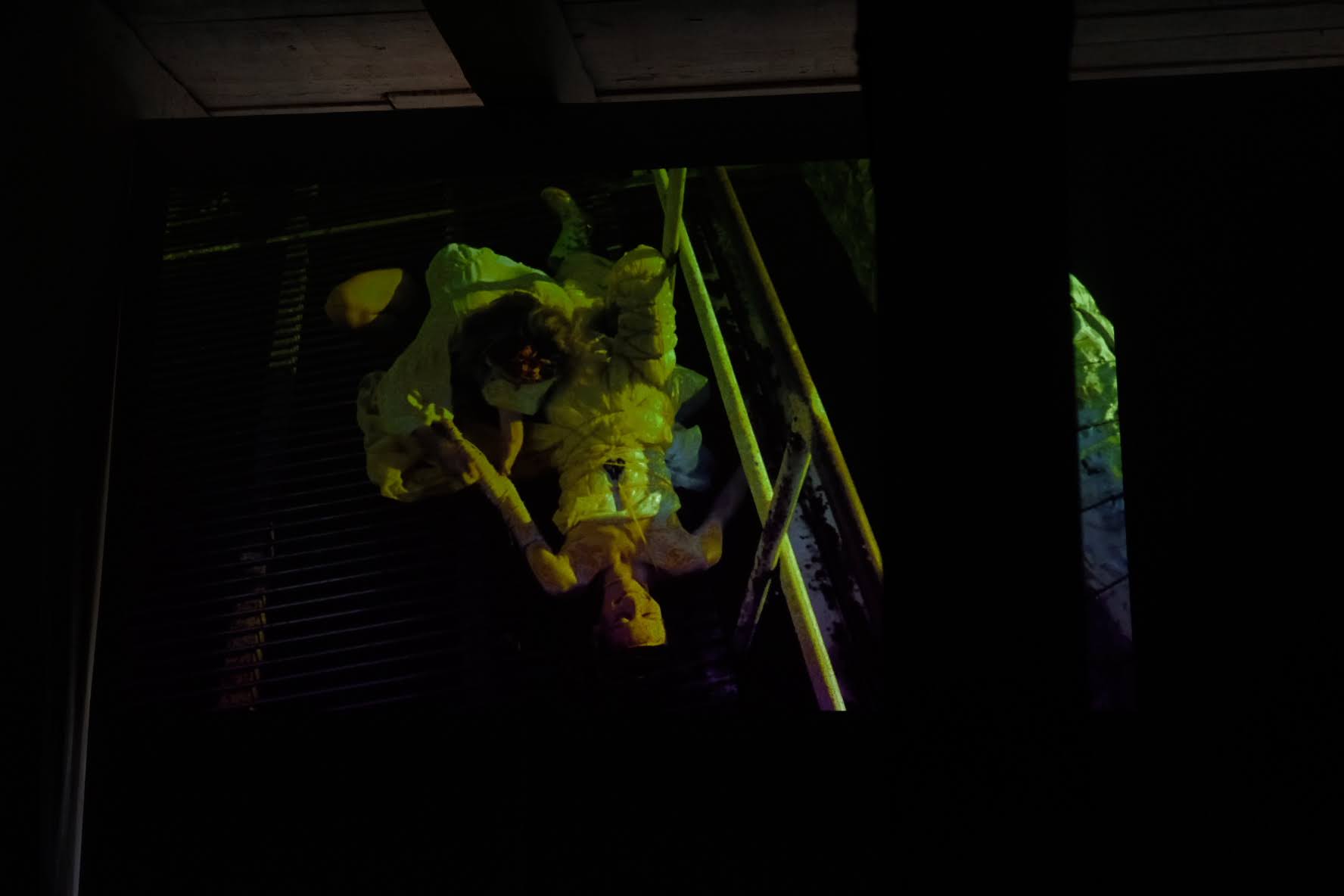
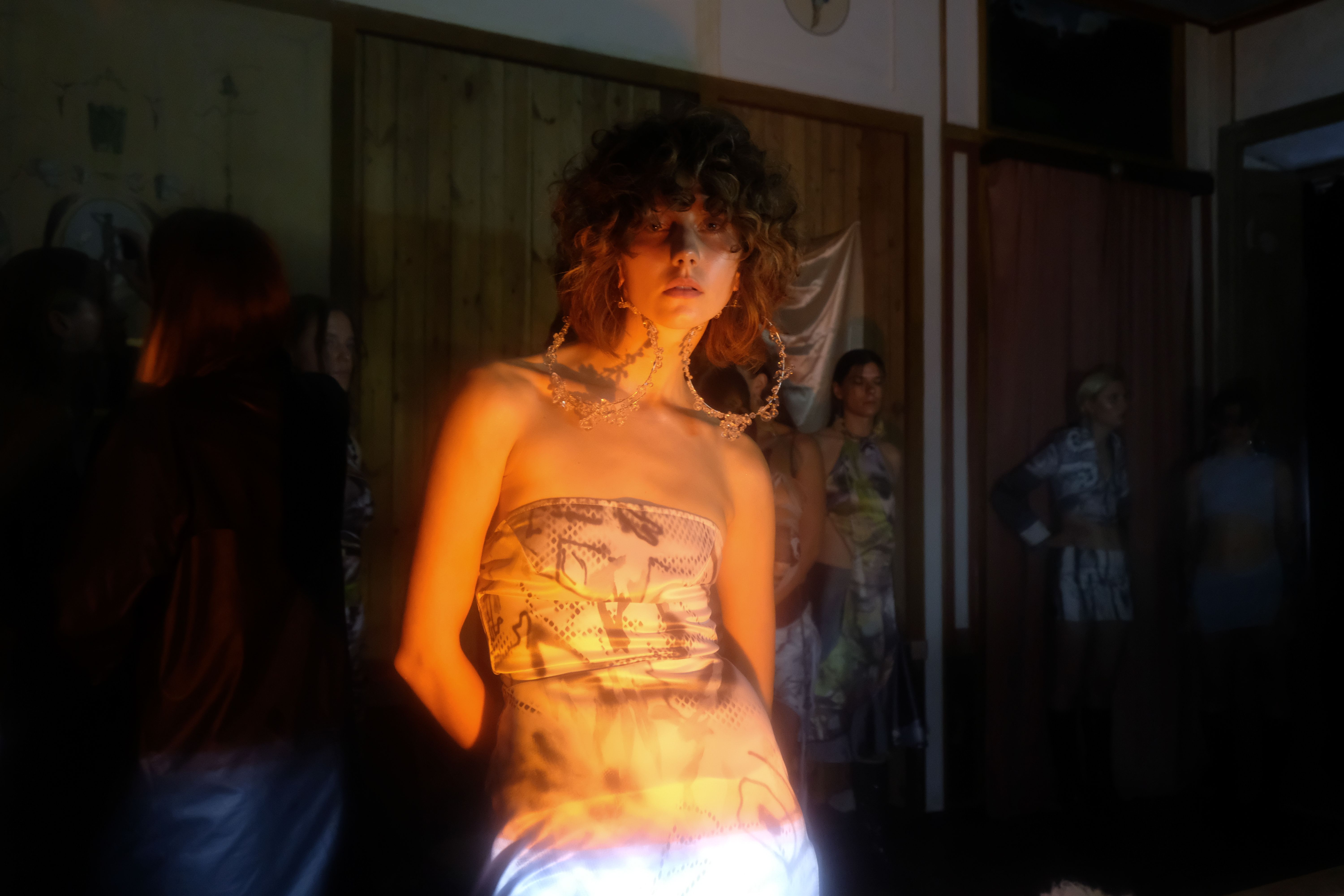
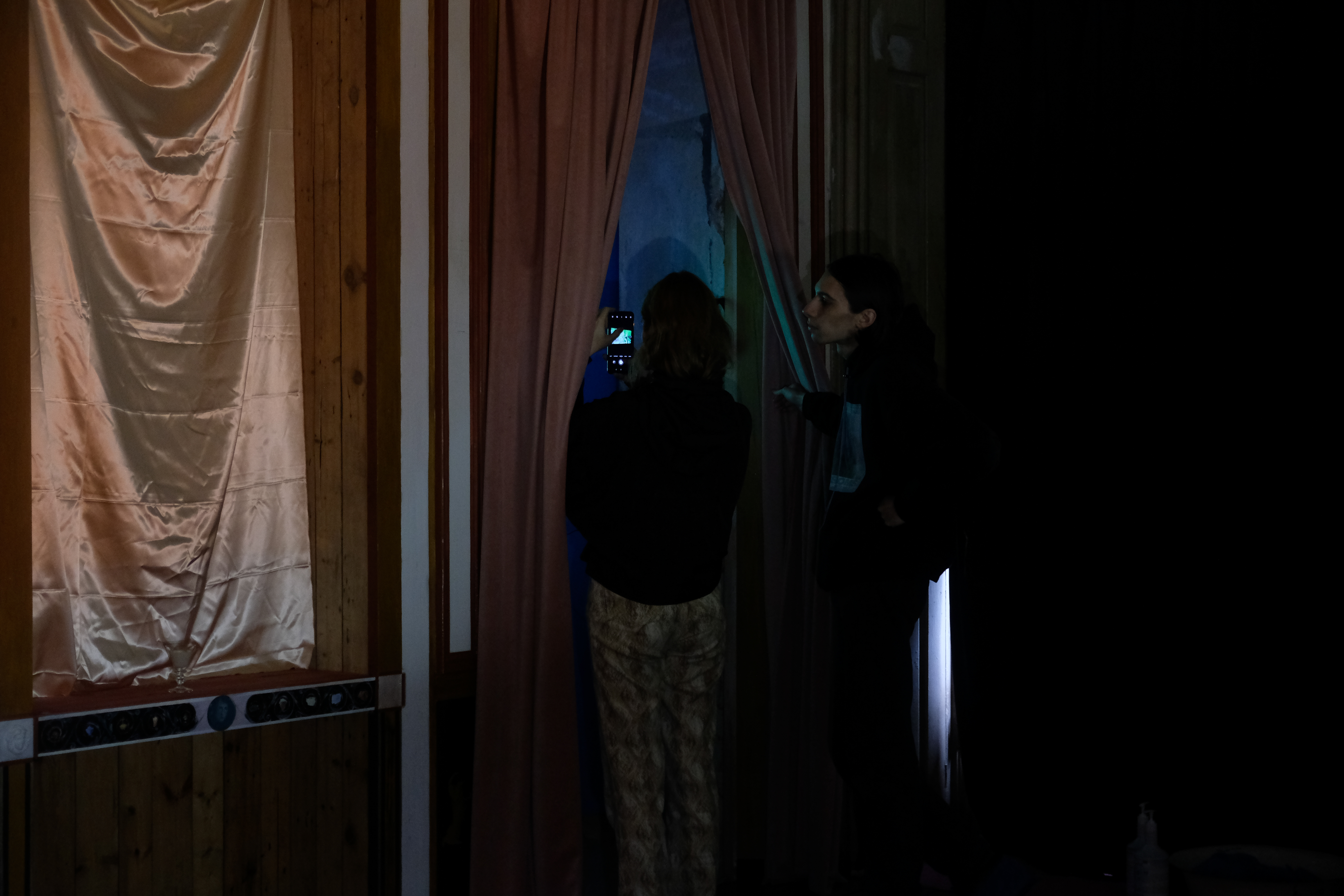






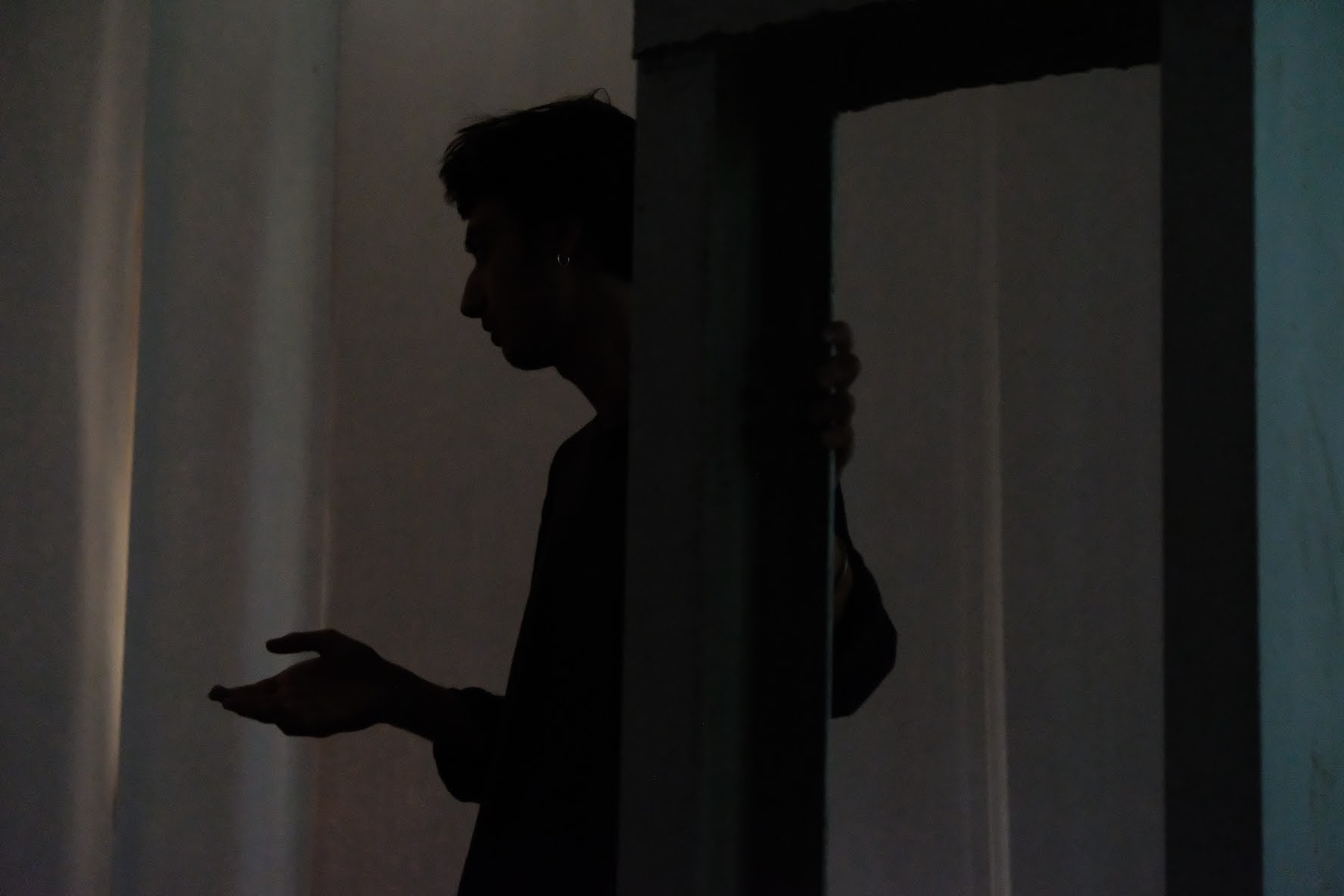



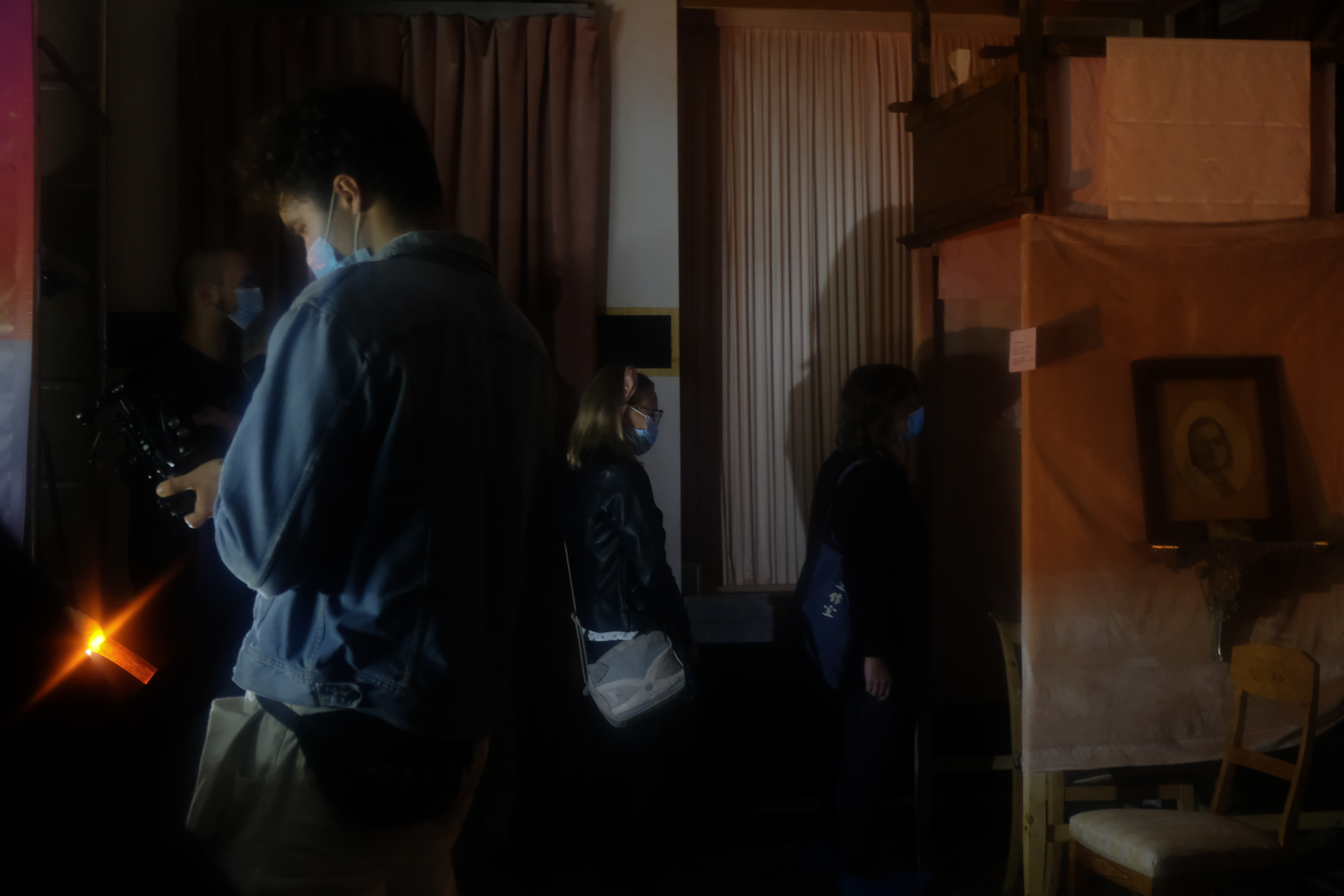
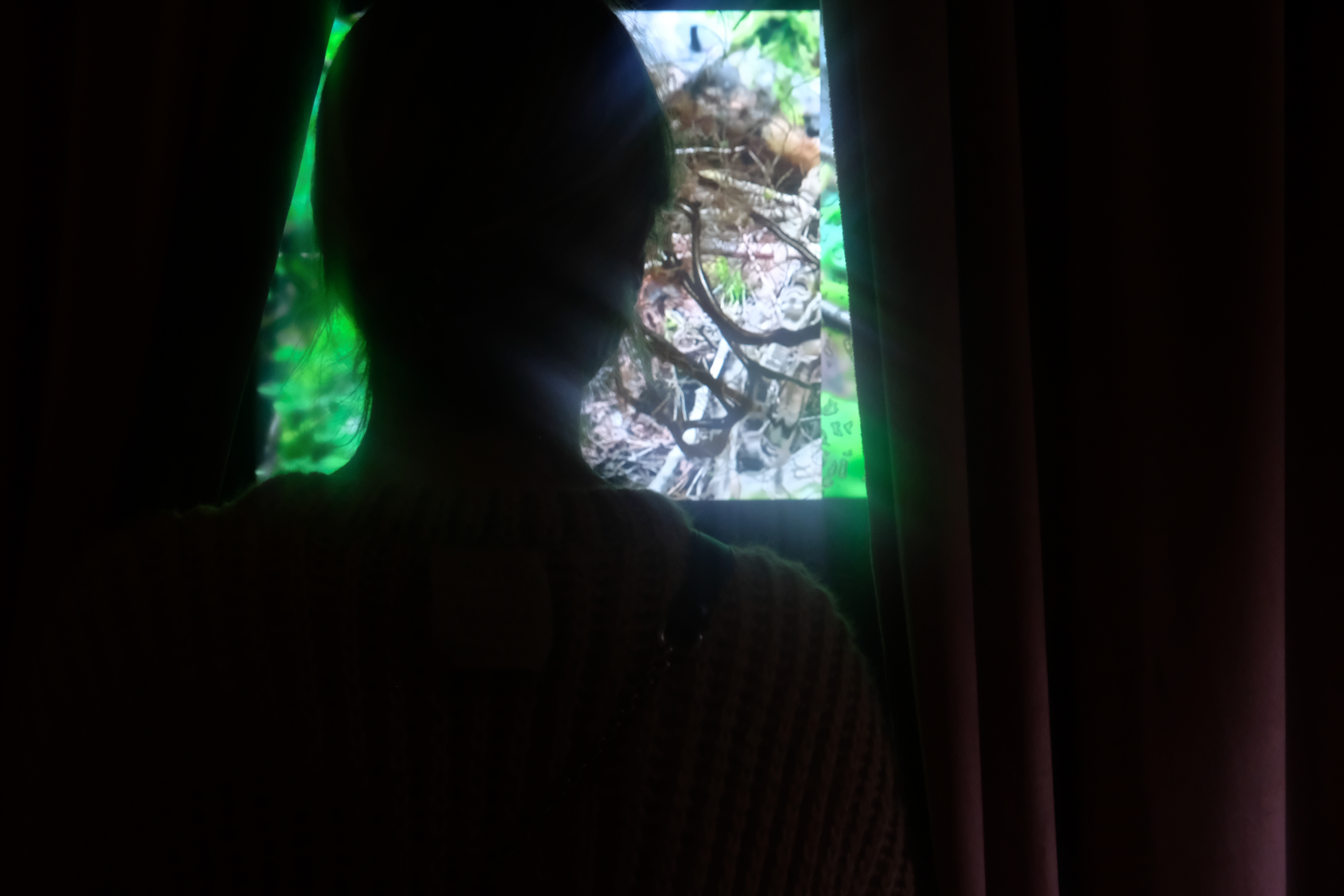
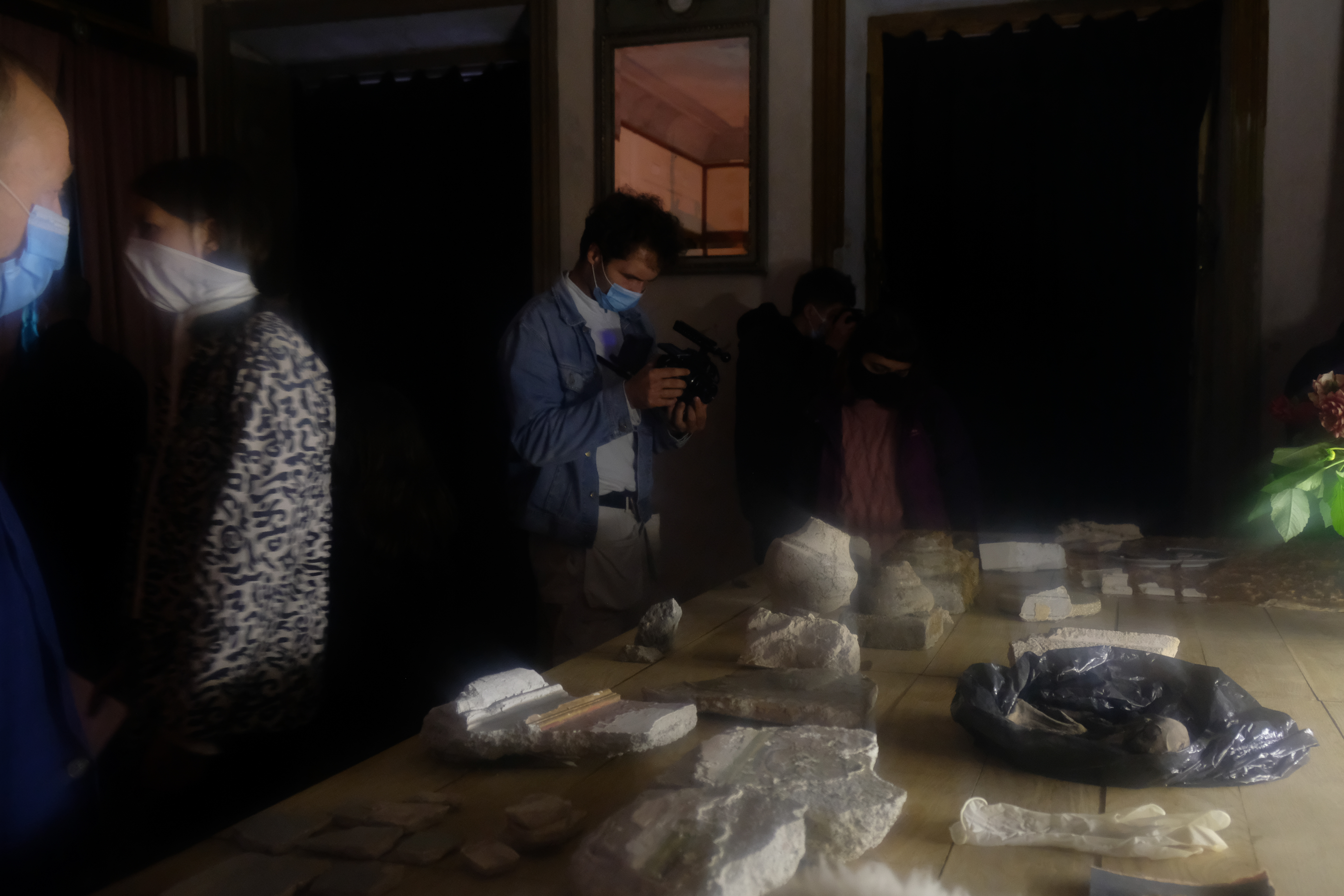

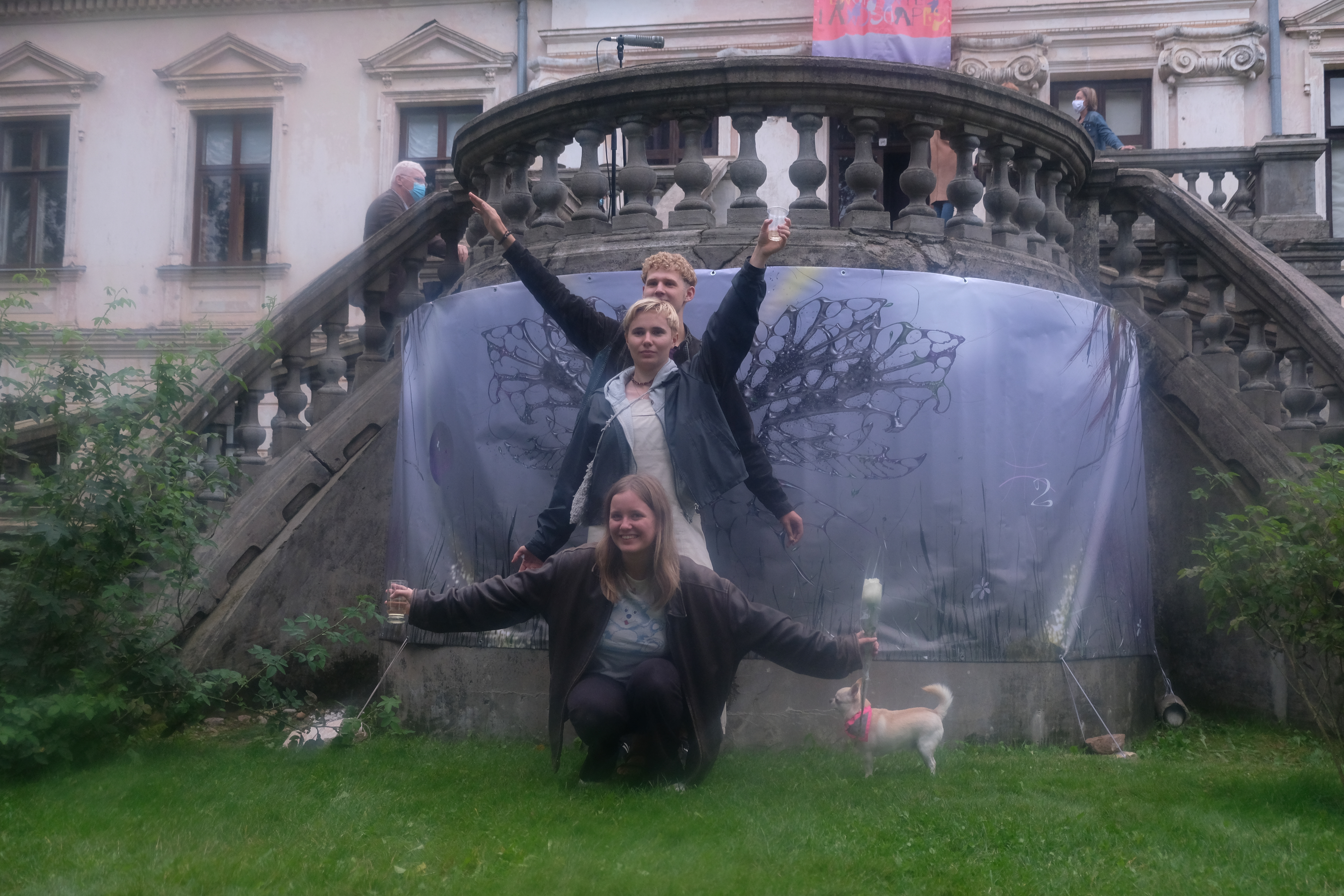
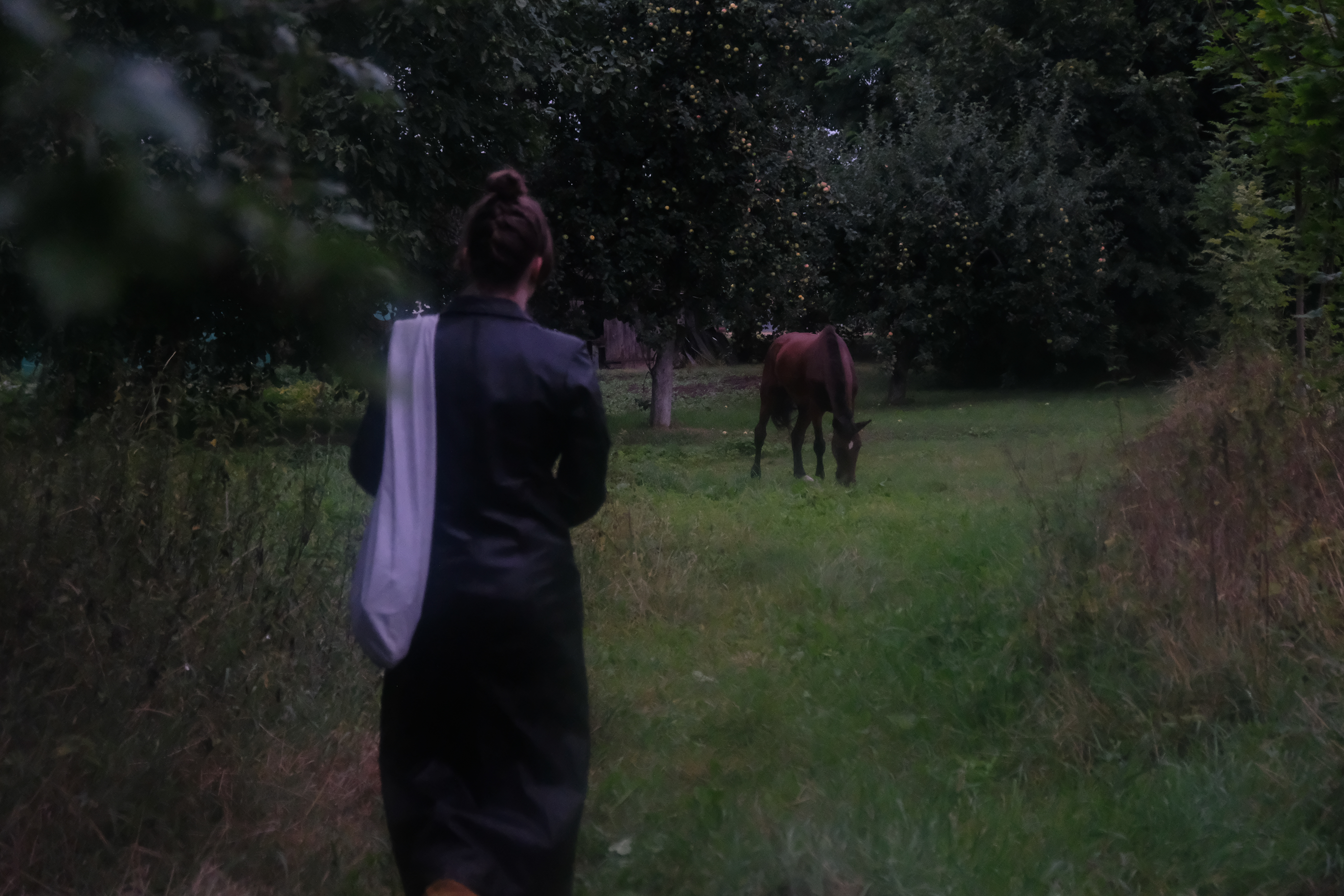

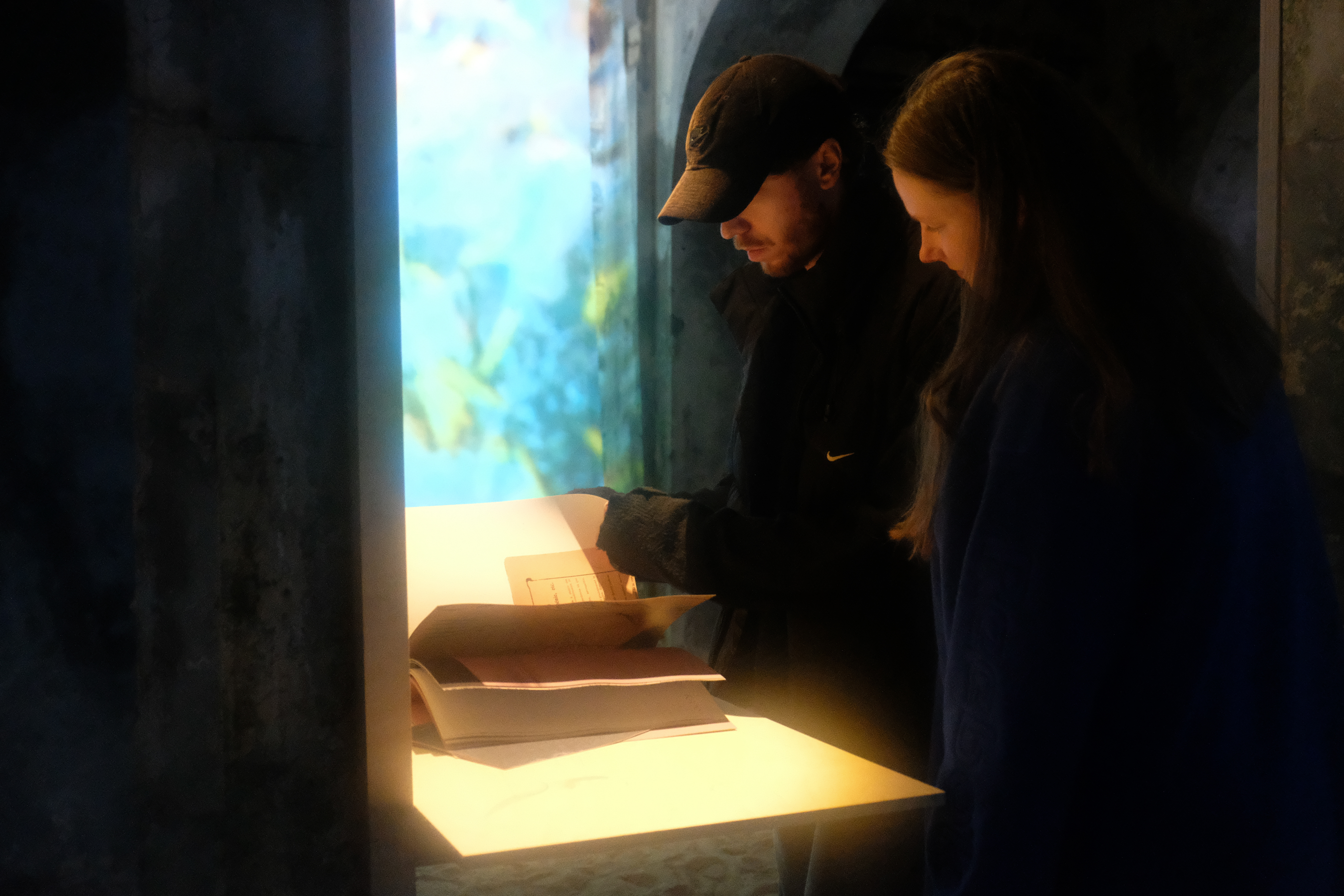


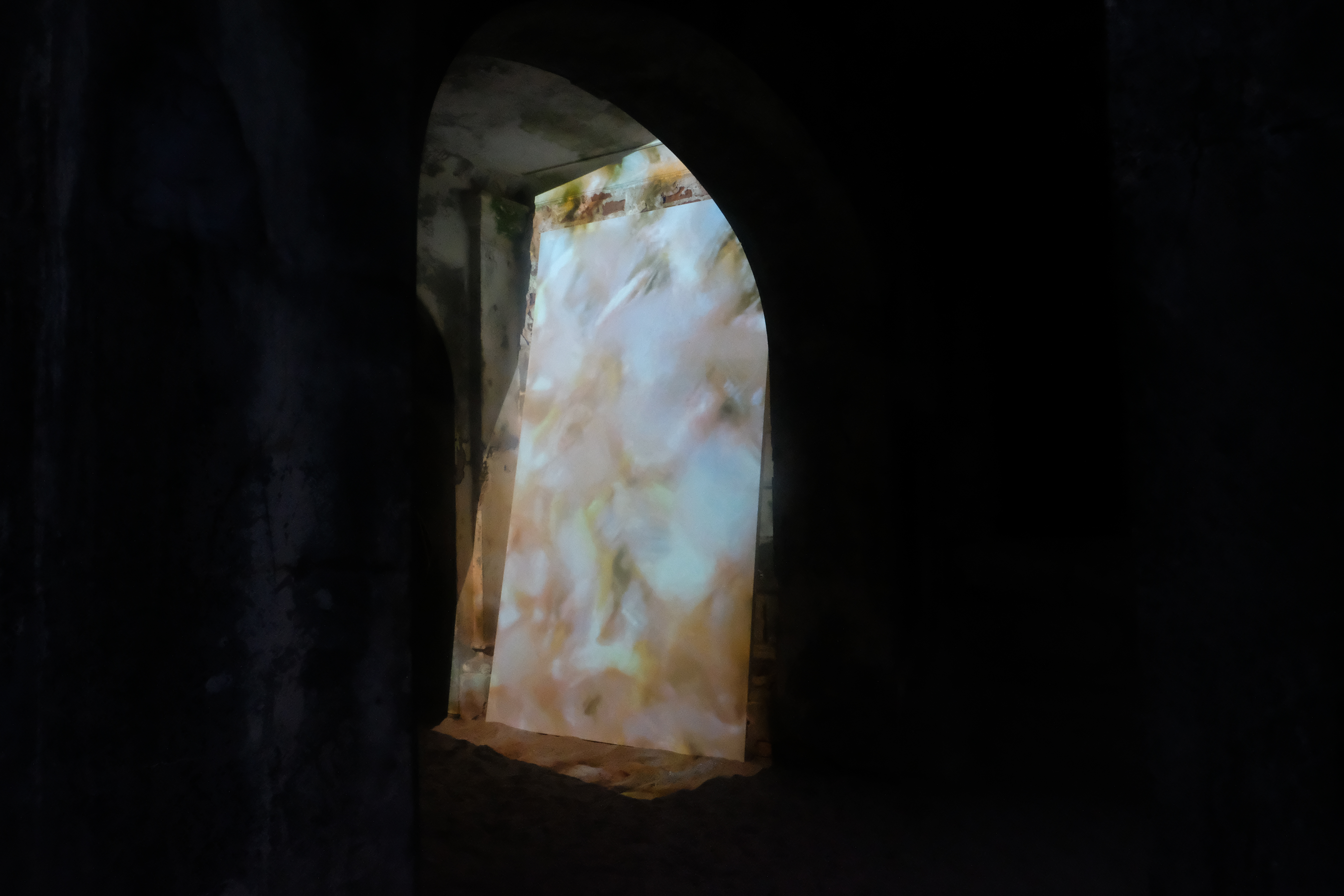
01 06 2019 → 15 10 2019
The curator of Sevda’s Khatamian’s solo exhibition “Decay(-ing)”, Aikas Žado Laboratory, Žeimiai Manor House.
Participating artist: Sevda Khatamian
Architect of the exhibition: Domas Noreika
Guide of the exhibition: Sevda Khatamian
Designer of the exhibition: Gailė Pranckūnaitė
“Decay(-ing)”
Thinking through the matters of sensation, sensation of time that concerns the grand question: what is/are the ‘meaning(-s) of life” in body-prison, body-locked, lonely-body?, Iranian artist and writer Sevda Khatamian argues that while we are all being made of a “texture of Adam”, we still tend not to “forget the sunscreen”, the protection, the dermatology of our skins. For her, it is the question of our anthropocentric survival or our annihilation. But what about the bodies with no land, no sun of ‘their own’, the “no-landers”, the no-suners? In her video installations and paintings, Sevda writes a sort of manifesto of loneliness for the pluralization of relations between matter, the human and the non-human. By feeling the geo-history of the places locally and bodily (in this case, the locality of Žeimiai) she steps away from teo- and ego- logics of patriarchal, eurocentric gaze. Cloud-watching with a smile she wonders what the identity, nationality, race is when all decay? What kind of territories are disassembled when the known social and political decays? More broadly, what can one imagine to be the lonely body without a face?








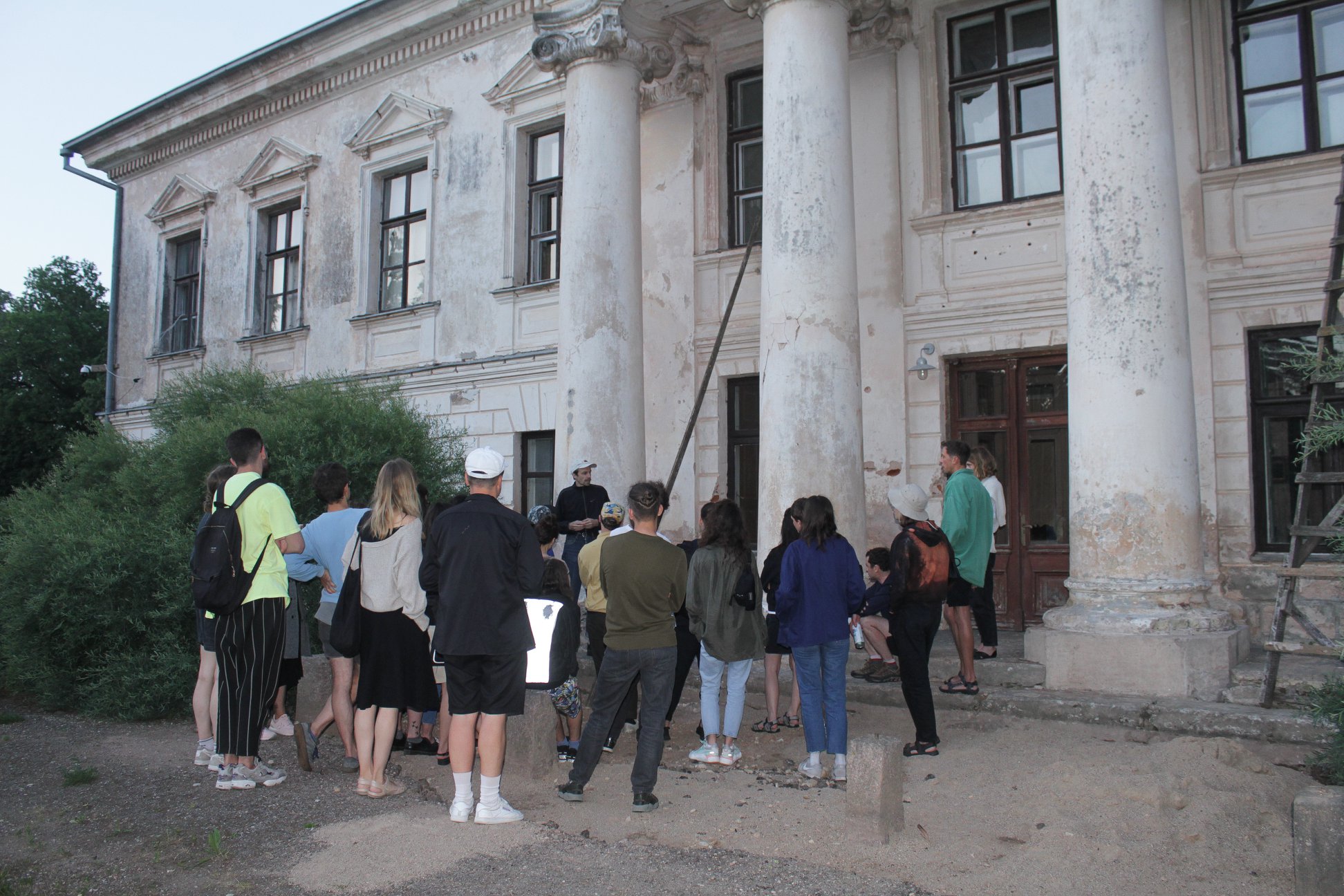

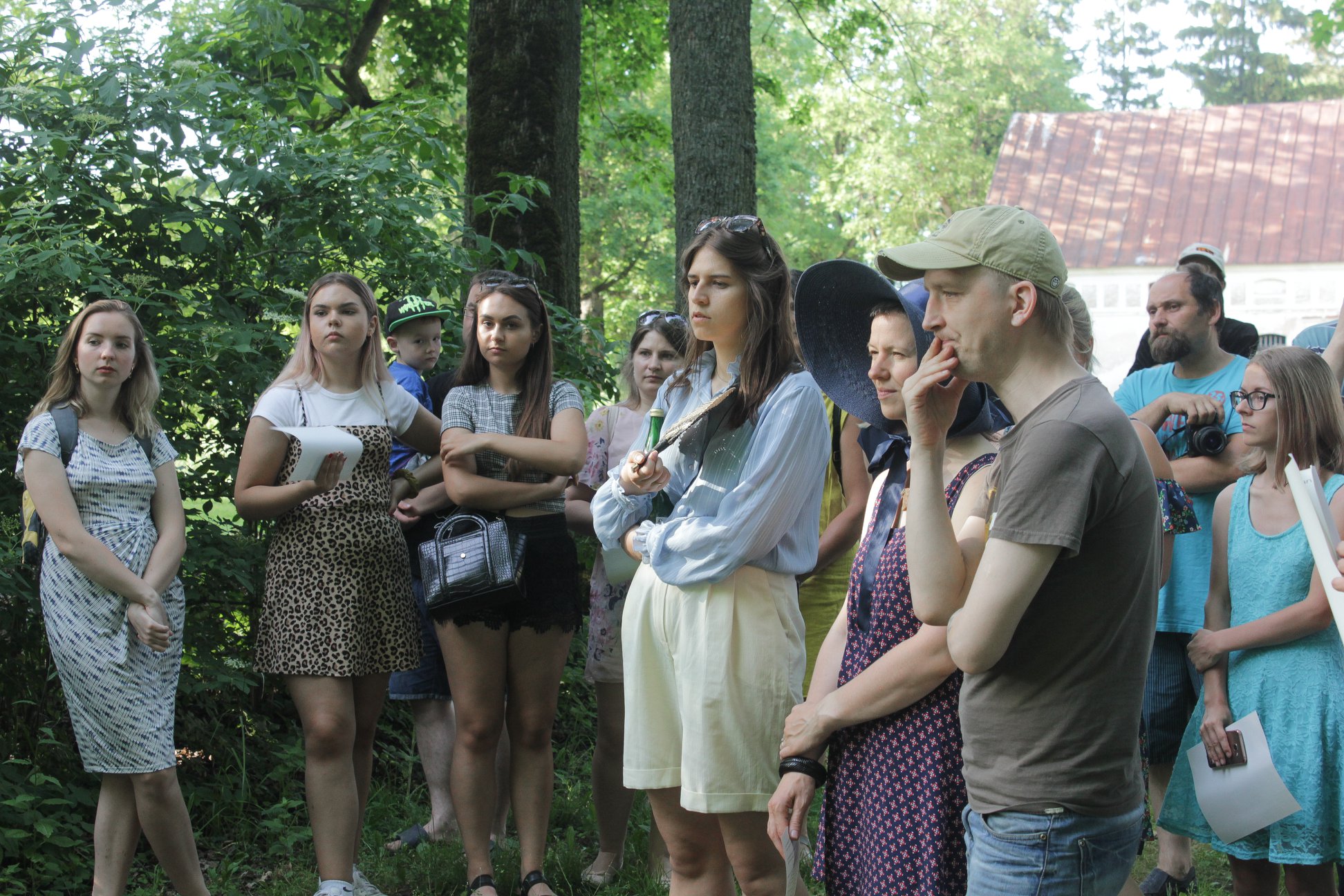
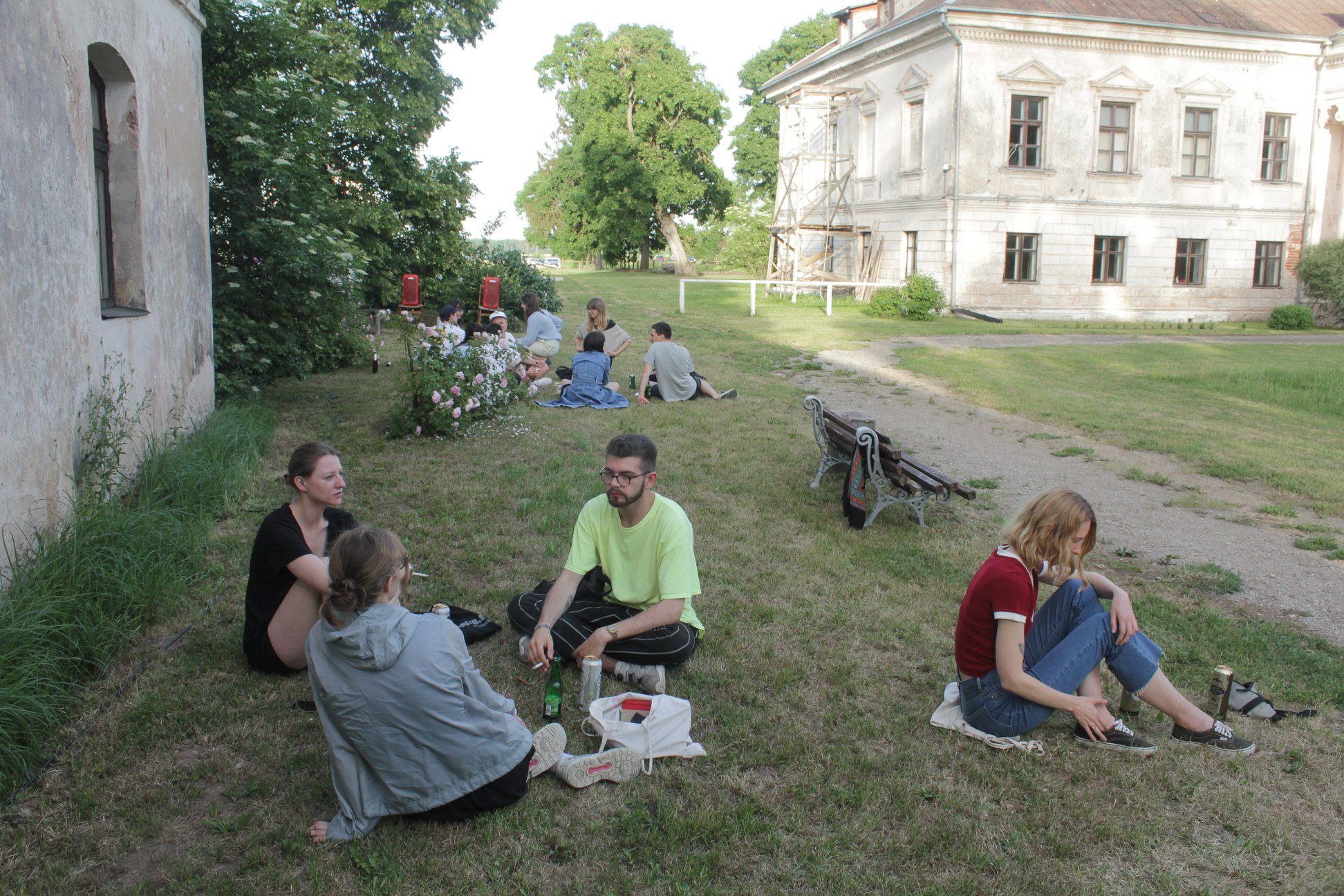



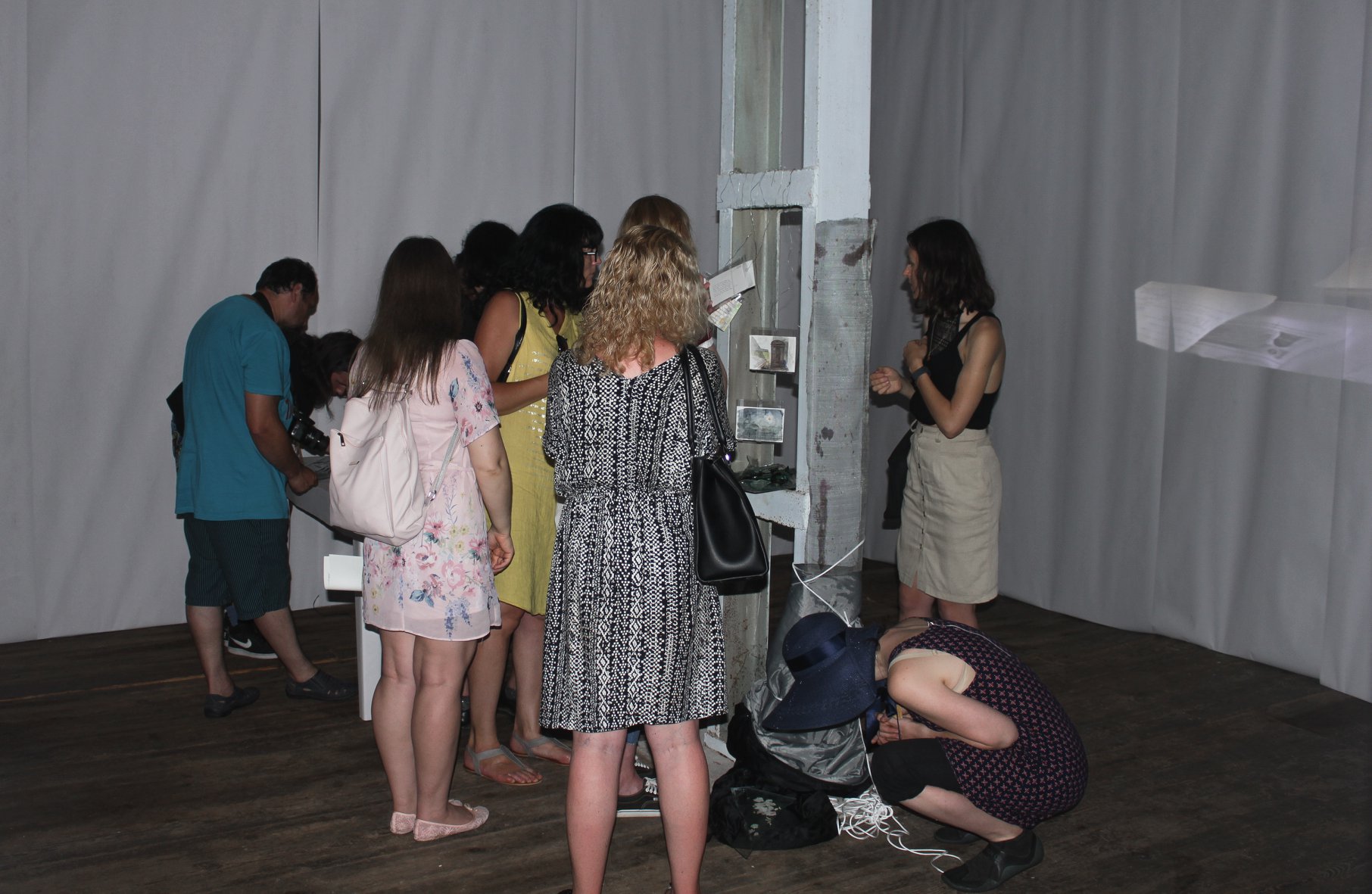
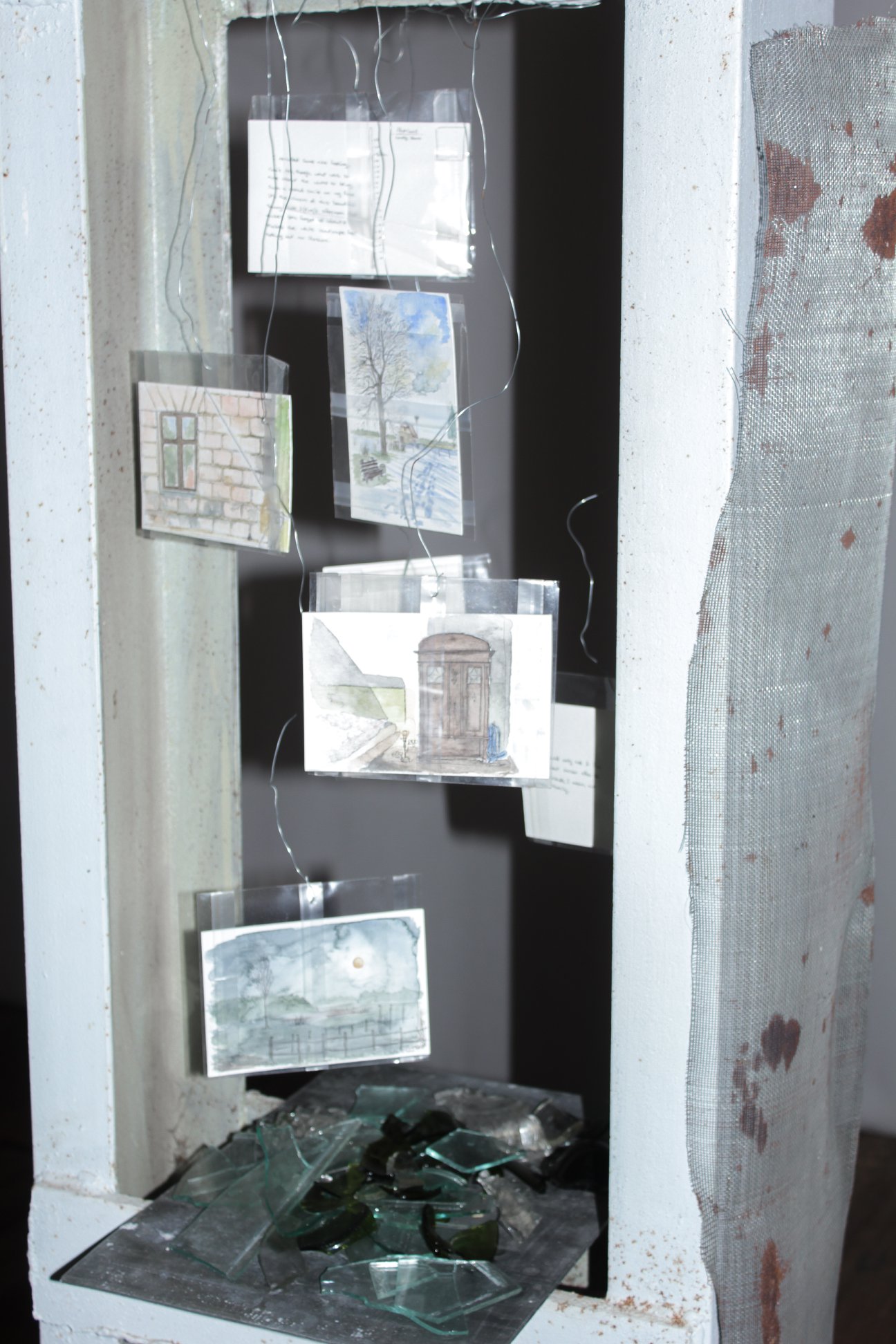




01 08 2019 → 15 10 2019
The curator of the group exhibition “Nothing to Regret”, Aikas Žado Laboratory, Žeimiai Manor House.
Participating artists: Enrika Stanulevičiūtė, Domas Noreika and Eglė Ambrasaitė
Curators of the exhibition: Eglė Ambrasaitė and Audrius Pocius
Architect of an exhibition: Domas Noreika
Coordinator of the exhibition: Rokas Vaičiulis
Designer of the exhibition: Gailė Pranckūnaitė
“Nothing to Regret”
Only a thoughtless observer can deny that correspondences come into play between the world of modern technology and the archaic symbol-world of mythology (Walter Benjamin)
It seems that today the popular myth of the struggle for survival of man and nature has lost its dramatic intensity. The mythical power of nature, once indistinguishable from how we understand the essence of humanity, as elemental and enigmatic, unpredictable and obsessive, has given way for a simple economic equation which, despite an occasional deviation here and there, blinds us to everything that cannot be utilized, exchanged, evaluated and defined. On one hand, maybe one shouldn’t feel nostalgic about this faded nature – we do not need to be as fast as an antelope, if we can fly faster than birds, build infrastructures more sophisticated than ants or communicate at a distance greater than whales: today our memory is stored in neatly organised file systems, whereas the human boldly gazes toward the future.However, this triumph is not unambiguous: when our world is completely calculated, things and people remain in the shadows of these calculations until they start imperceptibly fade out of view completely. Walls of uninhabited buildings, evaluated and labelled ‘heritage’ start concealing their history – life itself is no longer welcome here. Respectively, an image of a person becomes more important than himself, as the former can be multiplied, exchanged and manipulated. This is most evident in compositions characteristic to fashion photography, where models are depicted as passive by imitating the facial expressions of the dead. We cannot be fascinated enough by our own facies hippocratica, it seems…Therefore, the question – can our lives be reconciled with life itself? – becomes a central theme in this exhibition. Aikas Žado Laboratory and Enrika Saniulevičiūtė invites the visitor to take a peep into what lies behind the facade of an image and hear stories usually silenced under walls of buildings or wrapped under the fabric of clothes. Exhibition will take place in si-bioarchitectural boudoir’s room. Its surfaces are selected, coded and curated by Aikas Žado Laboratory. Domas Noreika explains the idea of si-bioarchitecture in the context of global neoliberal capitalism and uses narratives of bio-tensions to describe this formed political, economic and cultural situation, as, for example, a cynical commentary by a Lithuanian political figure on the "collapse of one part of the mansion’s building, and the management of another", or the eternal desire of the wedding people to have “romantic photoshoots on the staircase of the abandoned manor". During the exhibition, the boudoir chamber of Žeimiai Manor, the techniques and philosophy of heritage protection, the figure of P. Smuglevičius, who brought classicist aesthetic traditions from Rome to Lithuania in the 18th century, iconography and the context of cultural activities become the main conceptual axis through which the potentiality to speak about the global issues of socio-economic relations, geopolitics, cultural heritage, conservation and preservation and to act on and create eco-critical theory and practice from the local si-bioarchitectural position of the manor actualizes. This is how Žeimiai Manor House becomes an example of a slow and quality-based development of cultural heritage in Lithuania. Enrika Stanulevičiūtė’s photographies provoke the structural charm of the boudoir room by embodying and, at the same time, disembodying the traditional biopolitical body of the “model-worker”. The dark spectre of experiences, contaminating the work of the model are breaking out through the fingers of patriarchy, through the apparatuses of constant sexism, chauvinism and genderism.




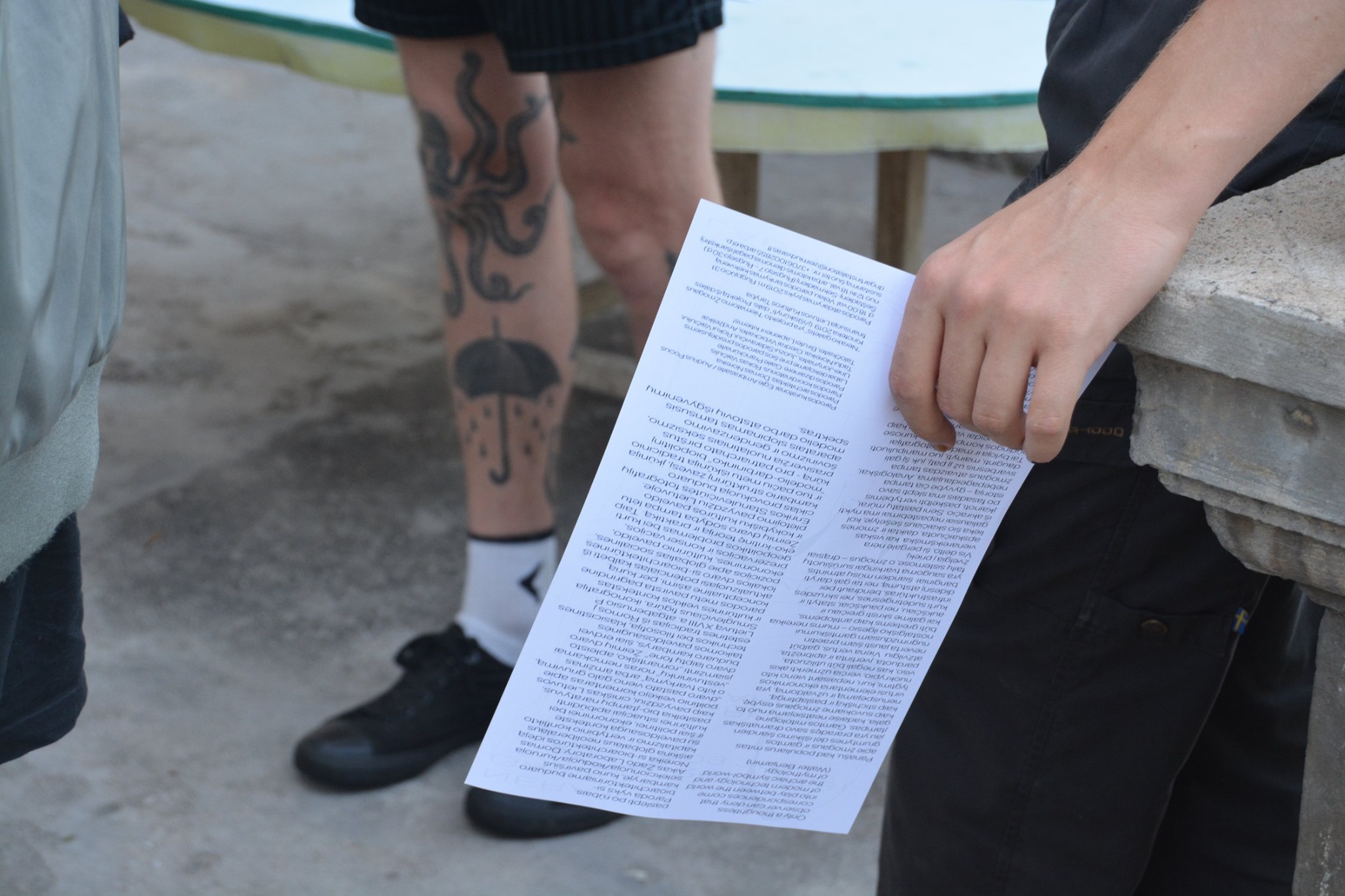




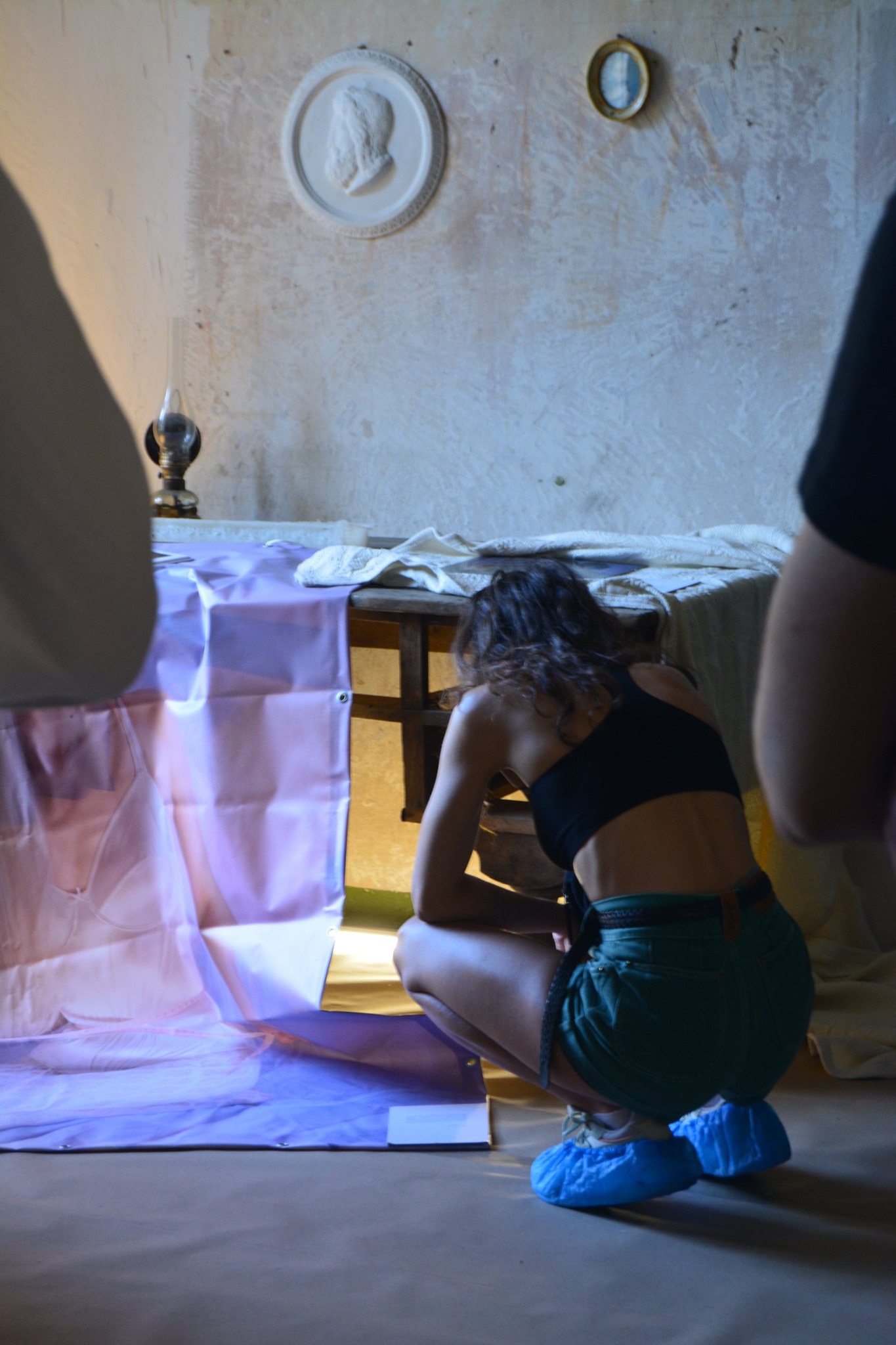




01 02 2018 → 01 11 2018
The curator of the group exhibition “Bio-fantômas’ic sessions”, Invisible Man’s Cinematheque and Residency o-yo’s programmes.
Participating artists: Anna Belousova, Gailė Griciūtė ir Viktorija Damerell, Jack Finerty, Domas Noreika, Eglė Ambrasaitė
Curator of the exhibition: Eglė Ambrasaitė
Architect of an exhibition: Domas Noreika
Designer of the exhibition: Gailė Pranckūnaitė
Coordinator and guide of the exhibition: Rokas Vaičiulis
“Bio-fantômas’ic Sessions”
In 2018, the programme of Invisible Man’s Cinematheque is based on the ideas of eco-centeredness that here, in local and problematic small town of Žeimiai, are calling for heterogeneity and diversity, following a rhizomatic and anti-hierarchical conception of multi-species co-existence! In the wake of the global ultra-right hurricanes and superstorms, the exhibition curated by the Invisible Man’s Cinematheque, established in Aikas Žado Laboratory, Žeimiai Manor House, invites to see and hear that, what is hidden and invisible, that, which is deleted or inaccessible in the VHS cassette, that, which are just fantômas'ic figurations, critical left-kicks on a hot summer night, rough homophobic marks of torn up by the roots wooden fence planks in your face, all the possible masks, gendered apparatuses, undarned gaps, cracking splits, steaming doughs, flowed oils, forged promises, that, which fits in and that, which slips through the whip and time of si-bioarchitecture.




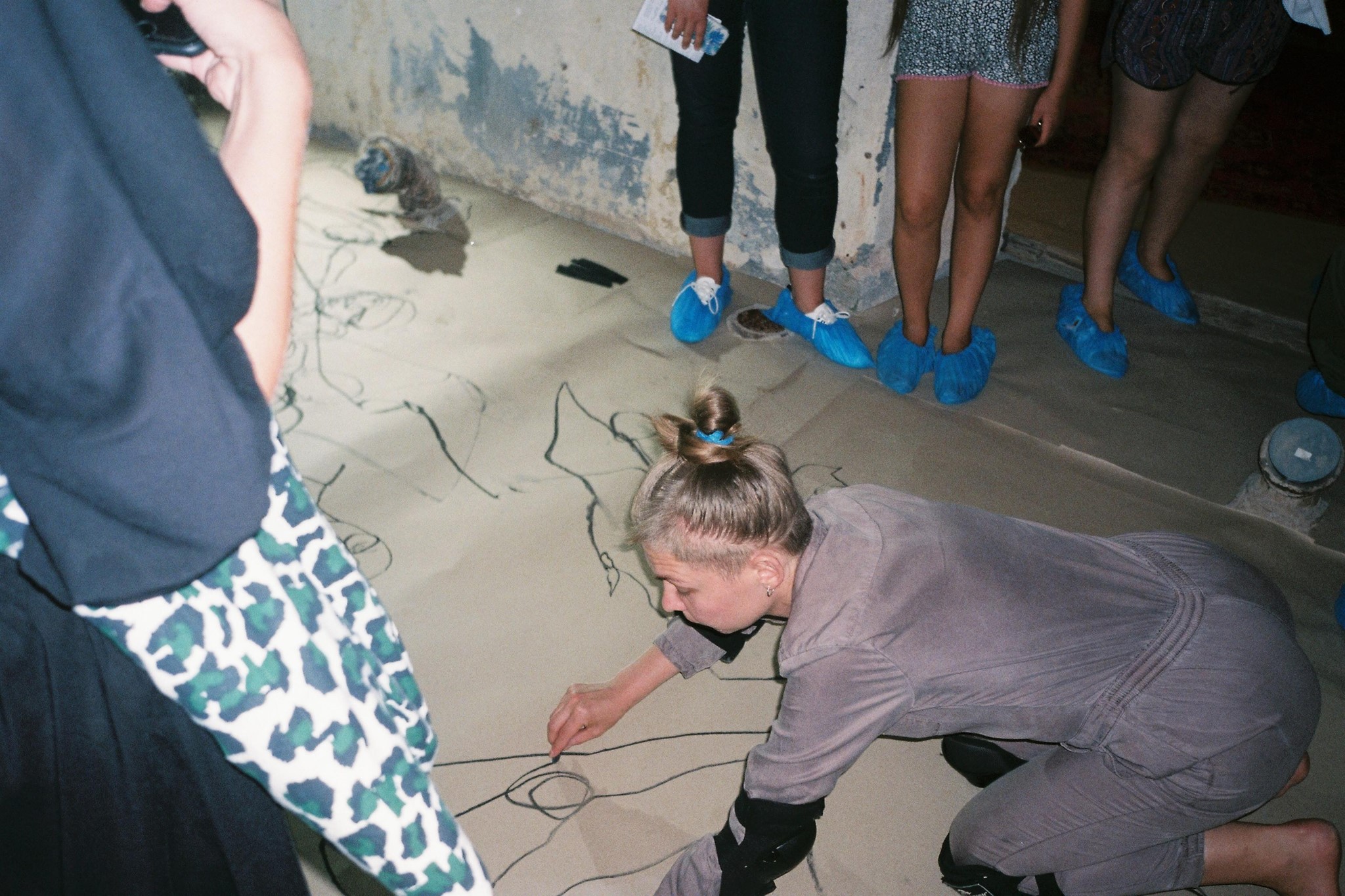

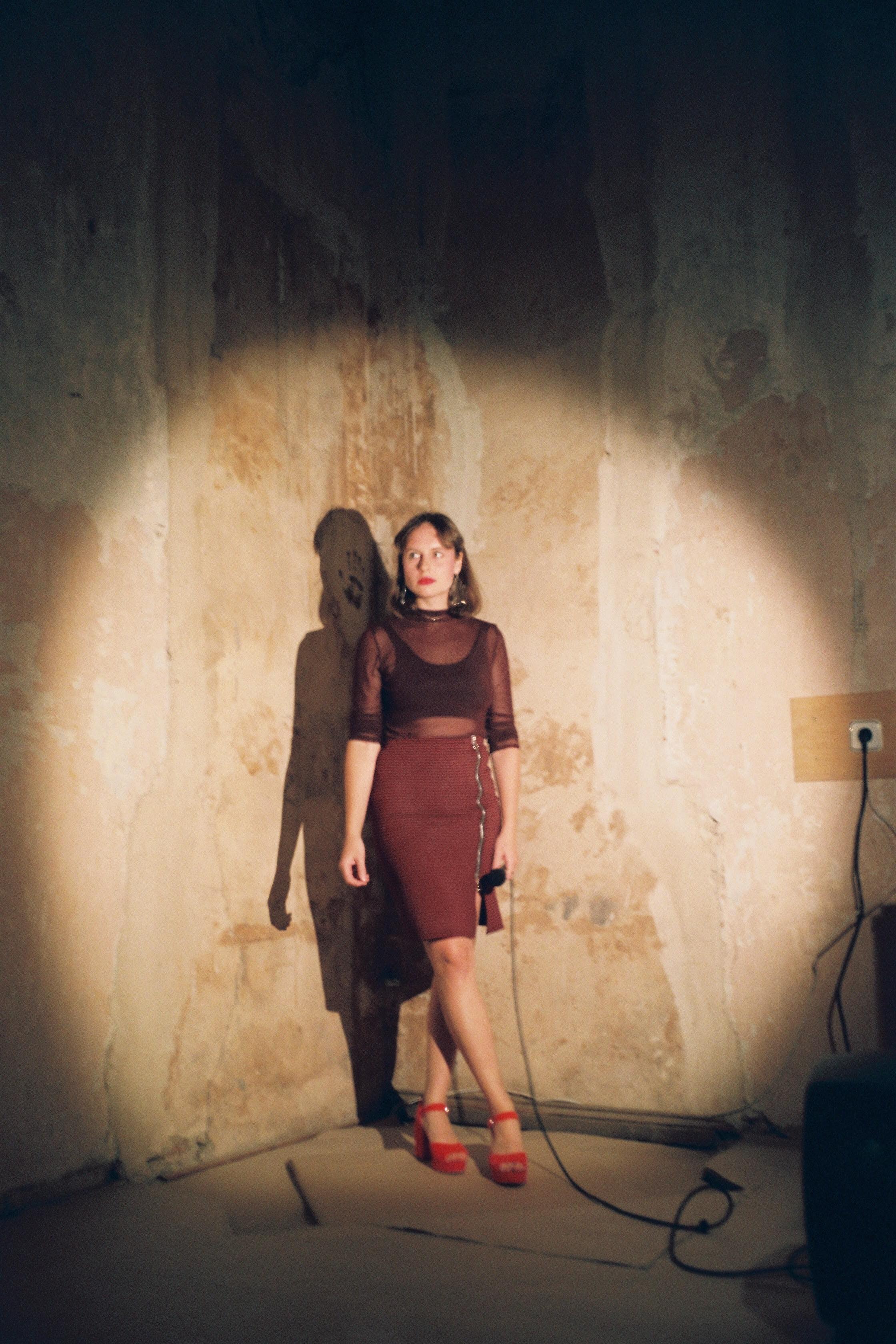


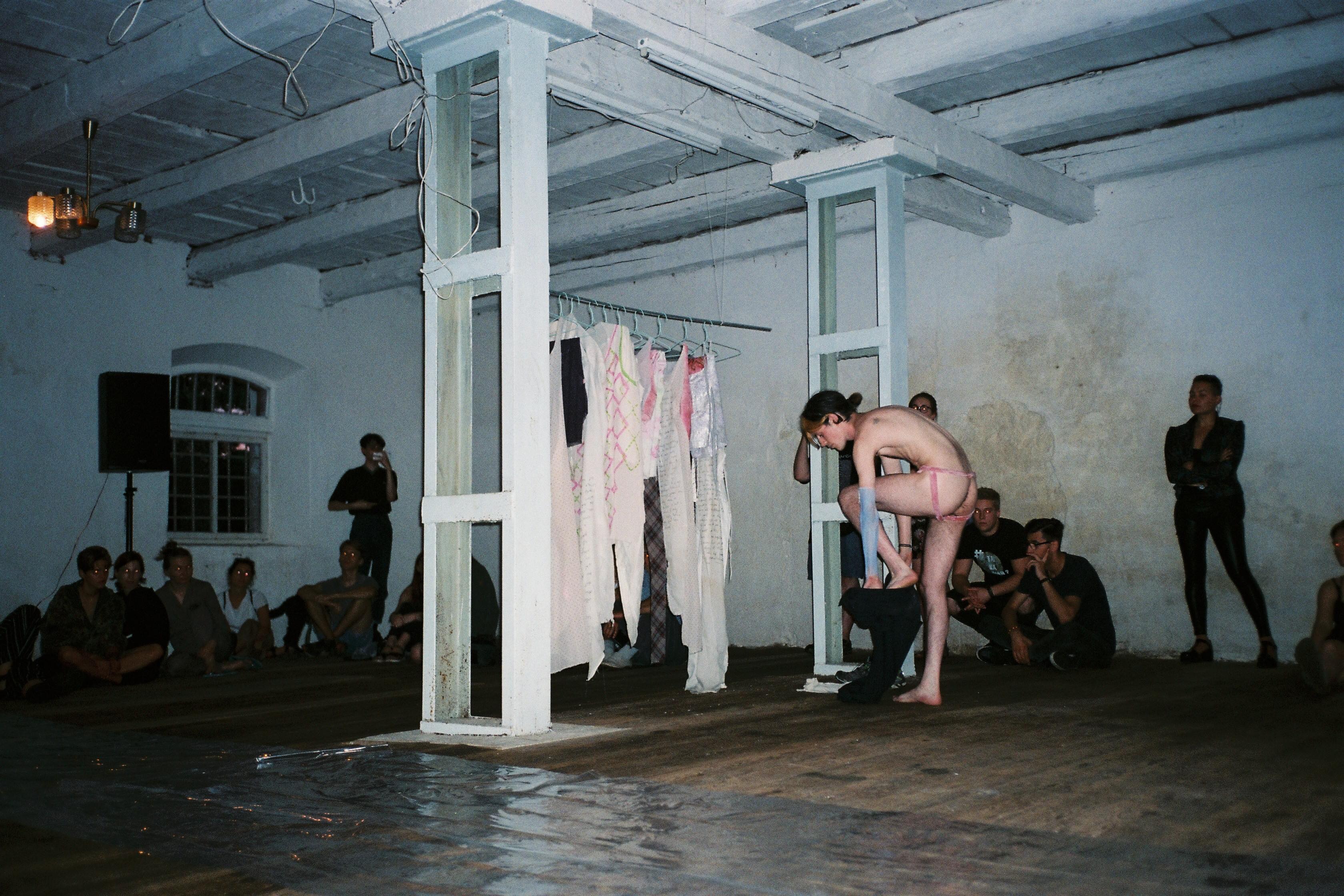


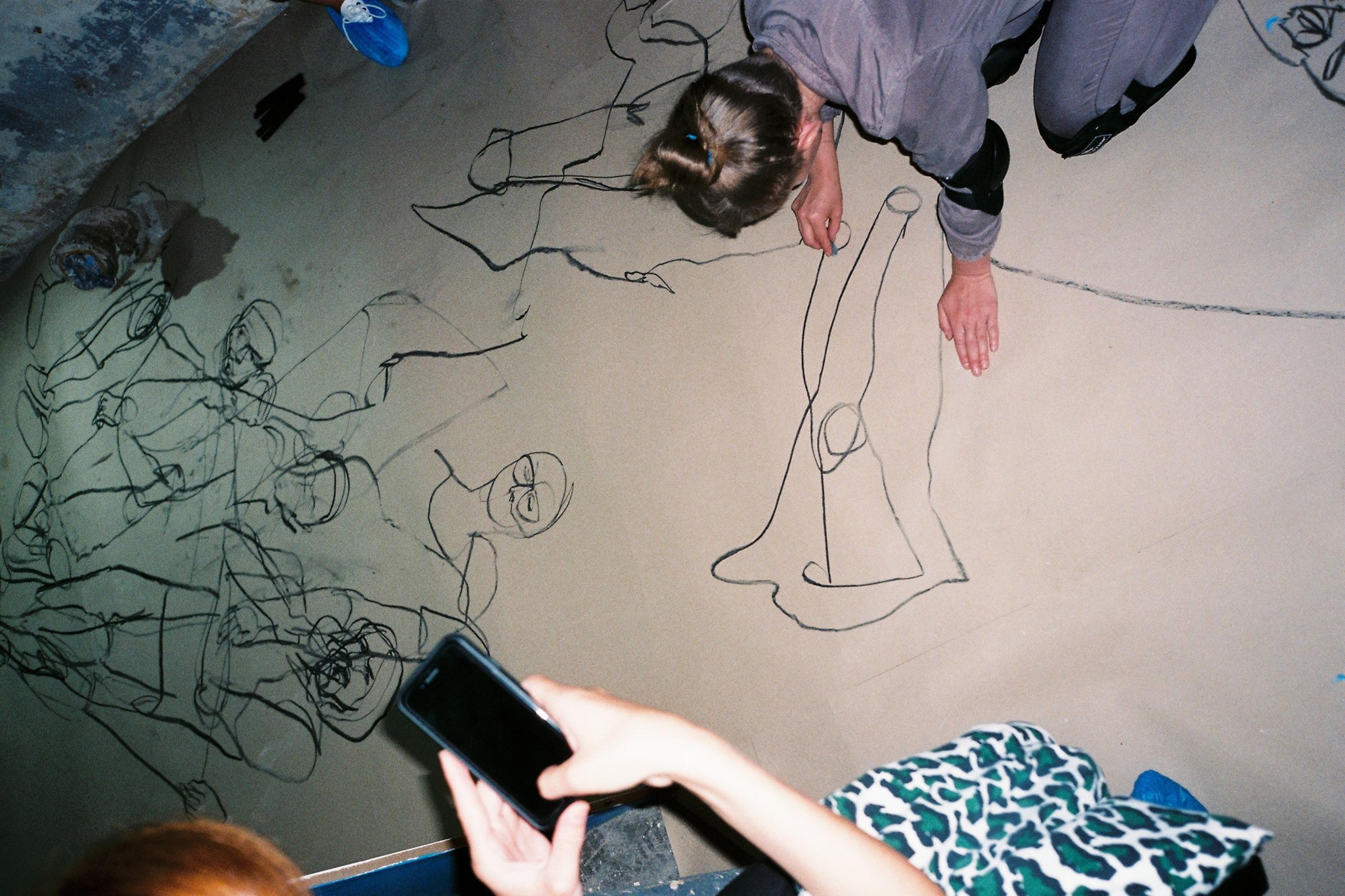

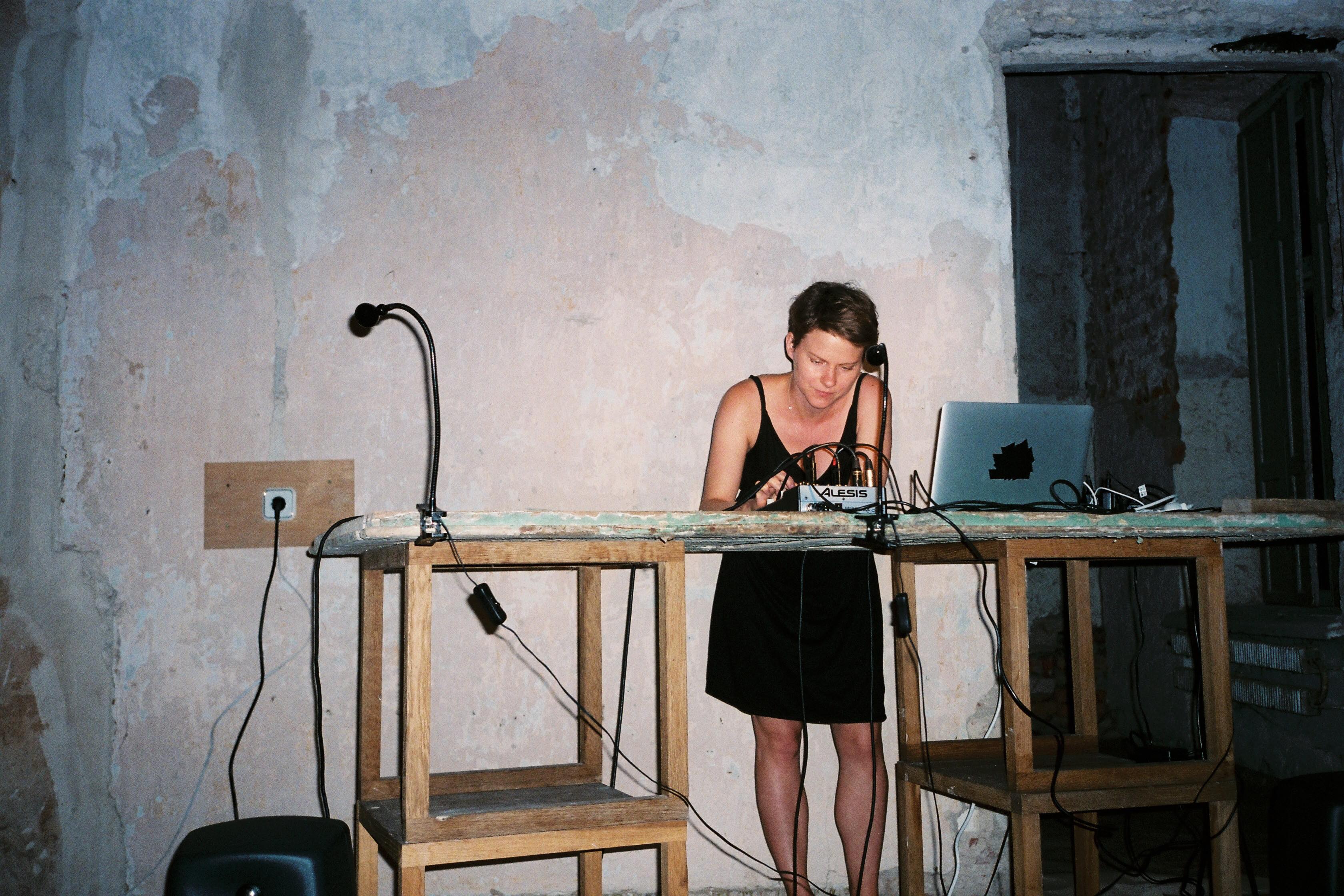

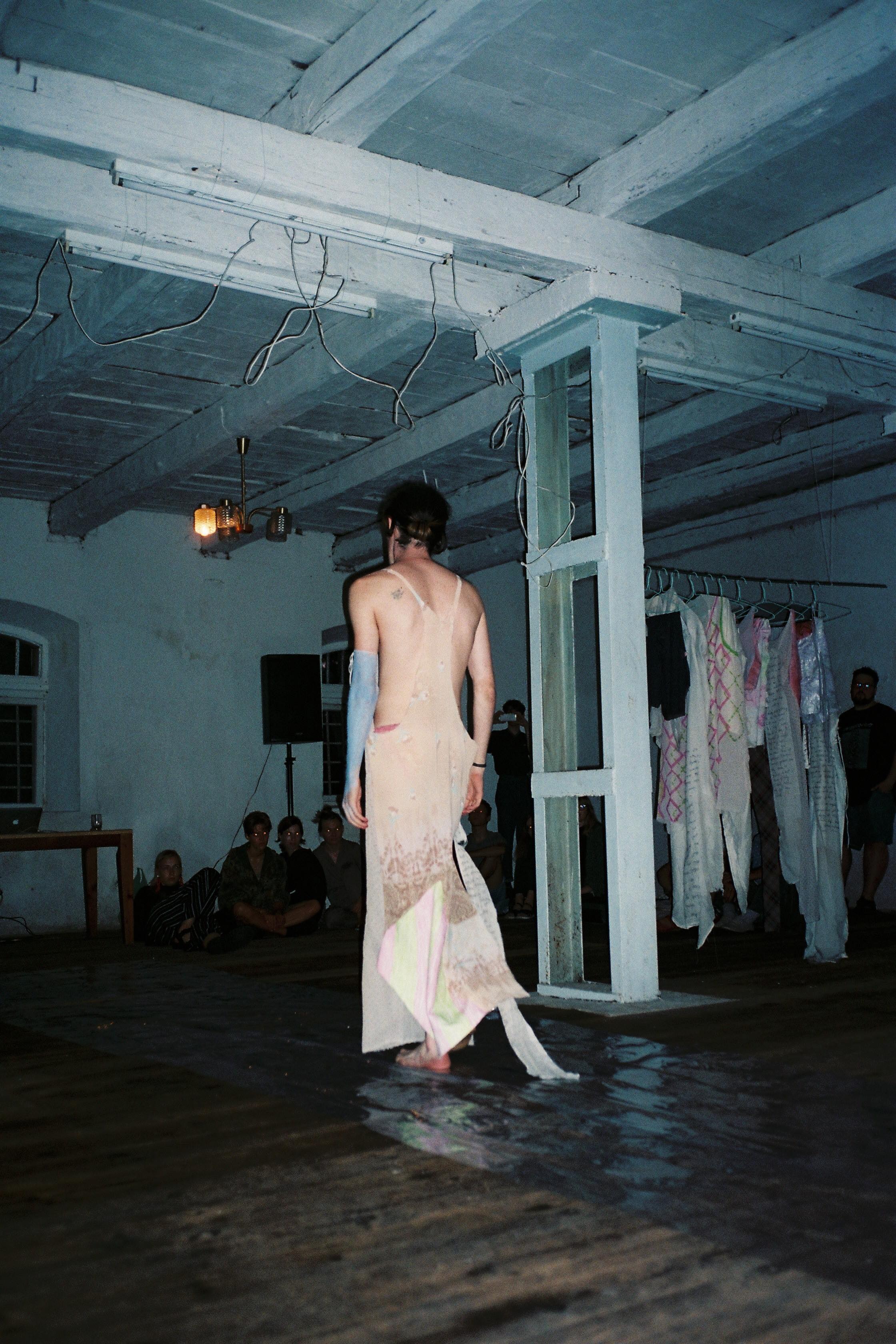
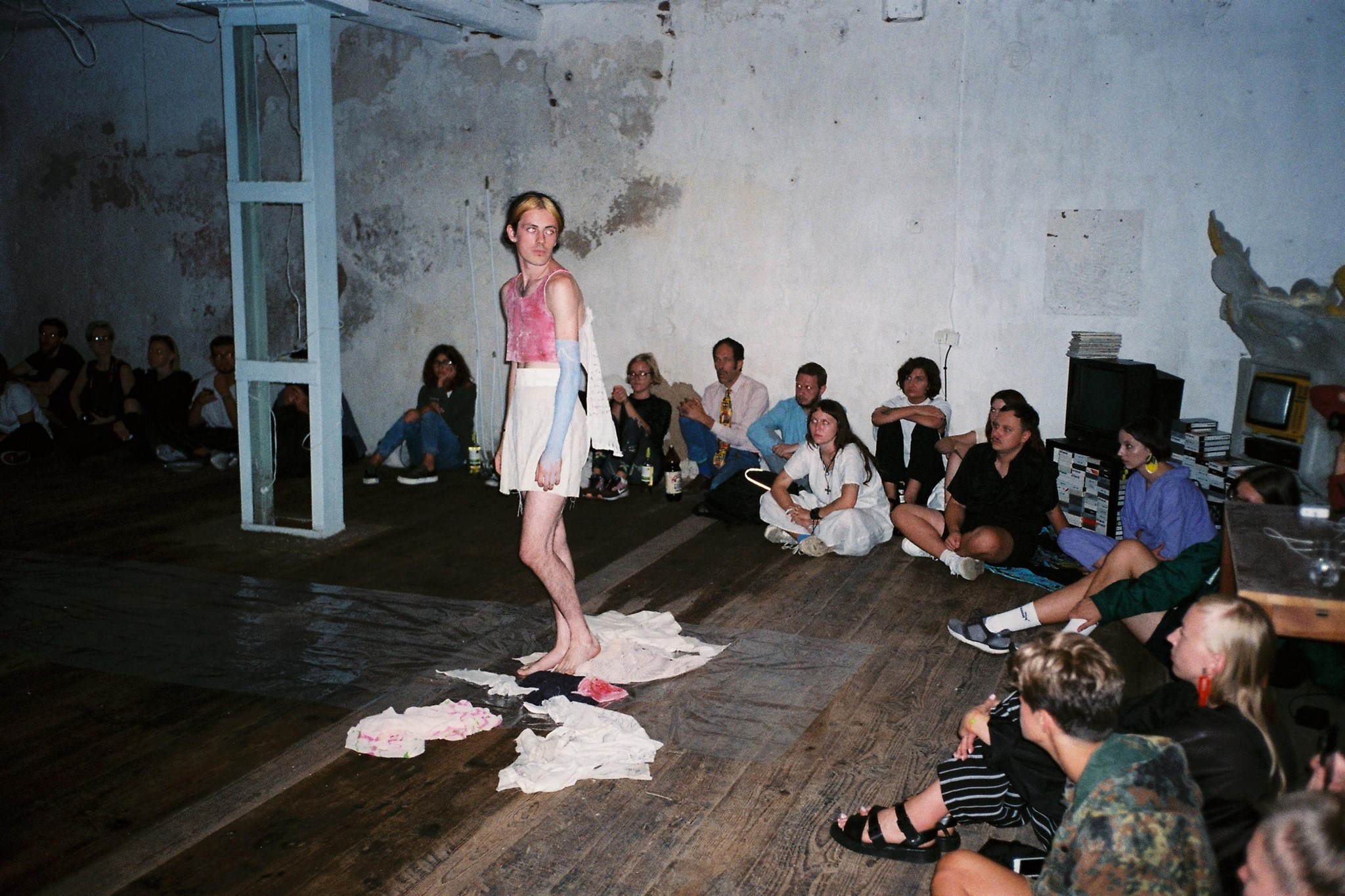



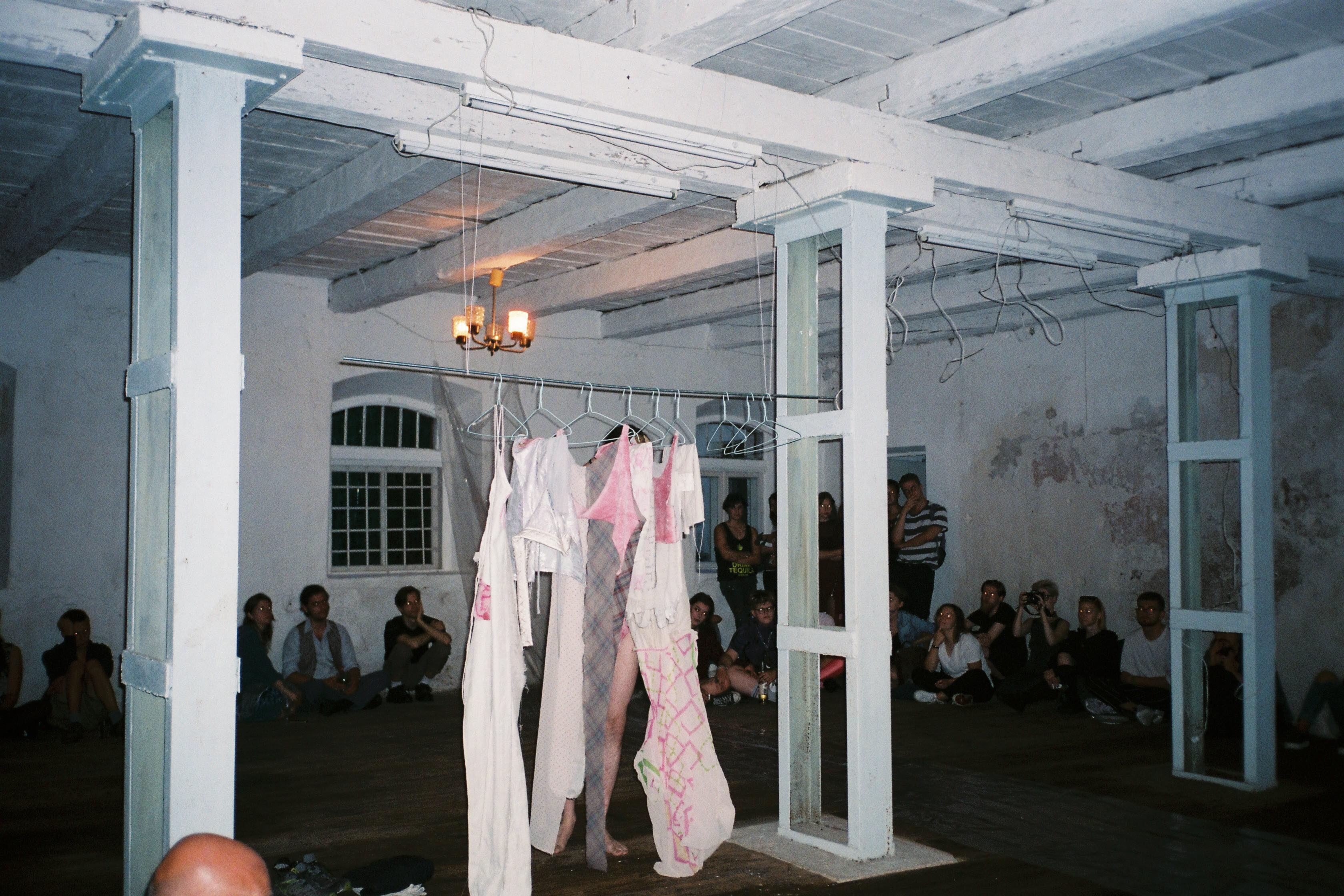
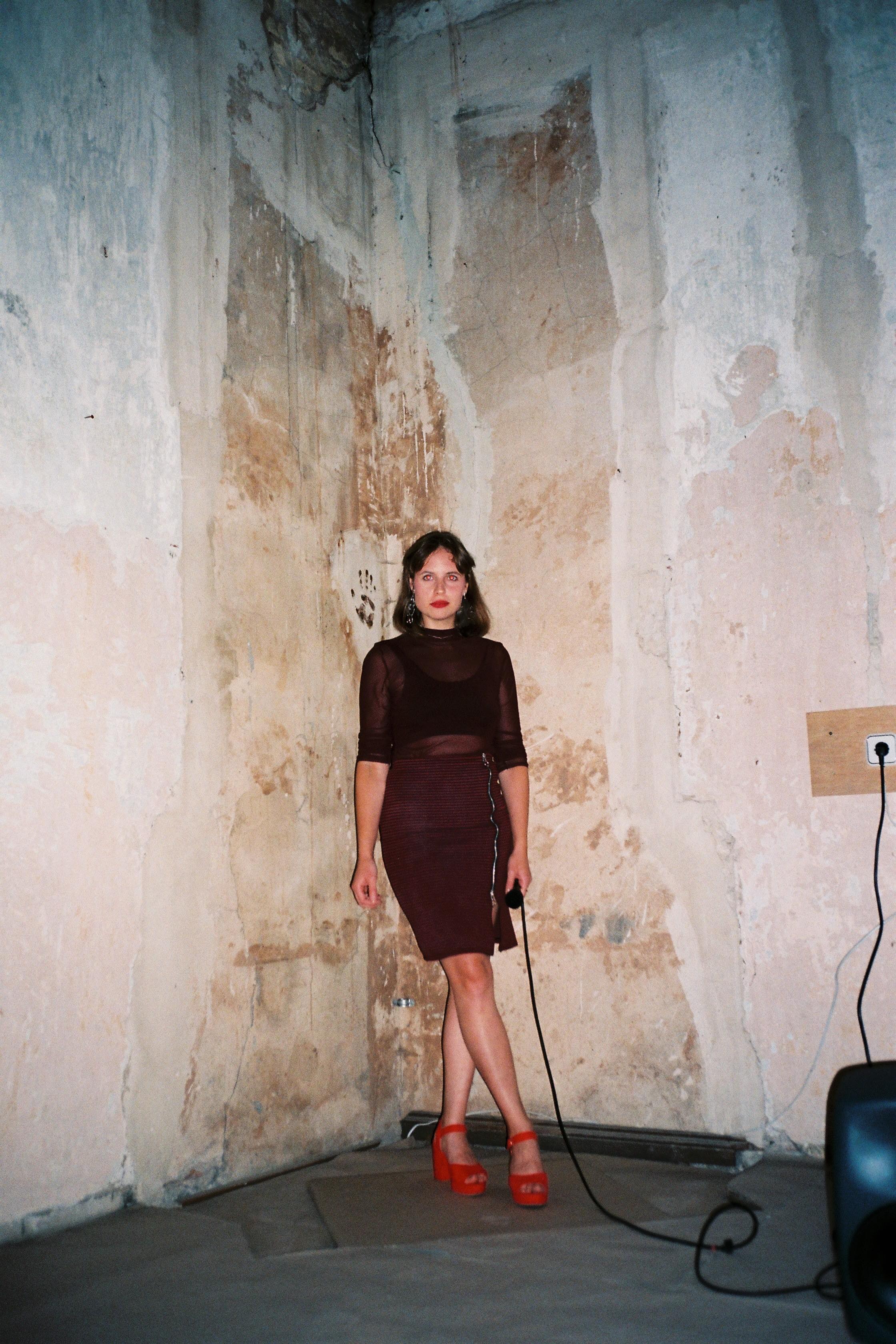
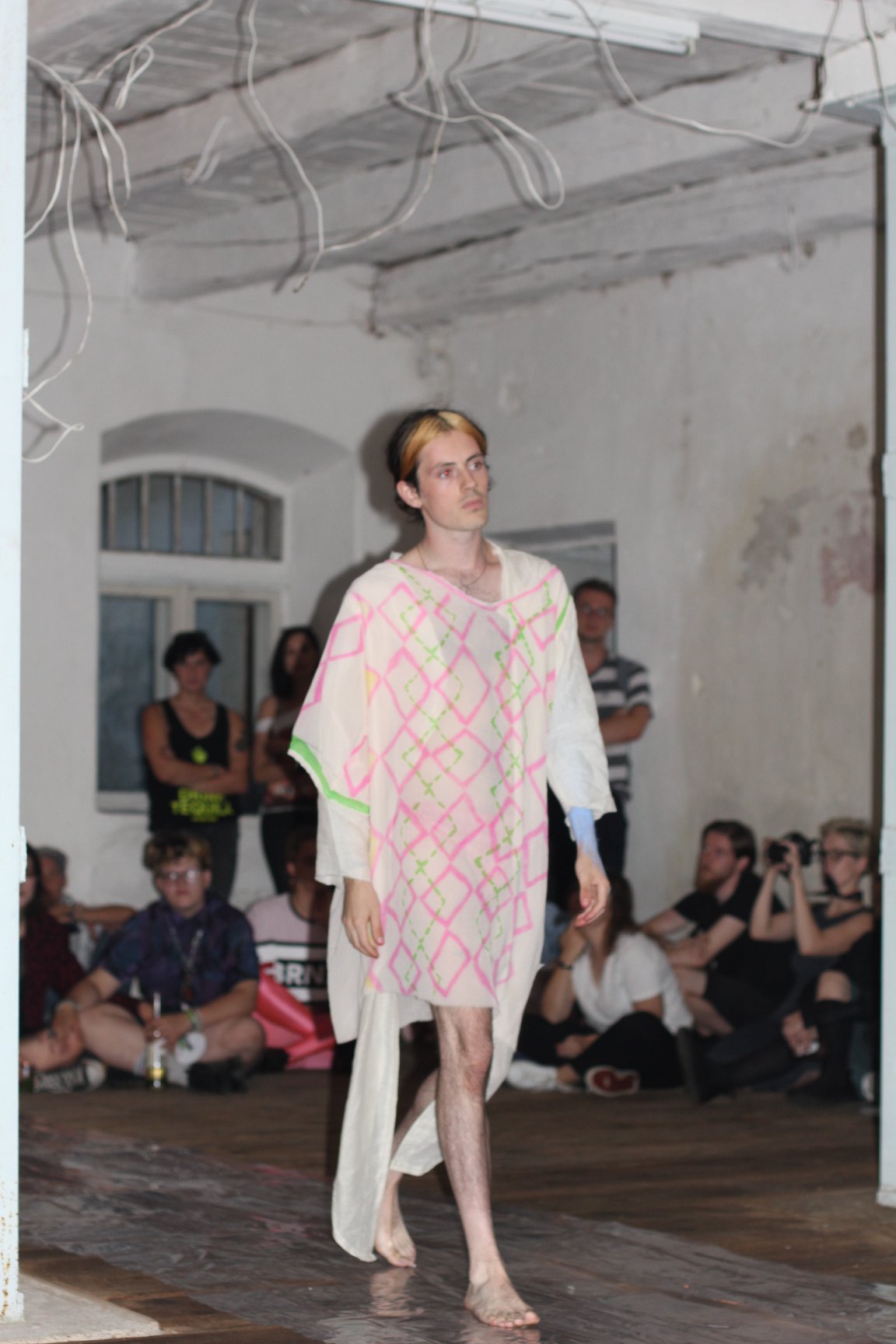

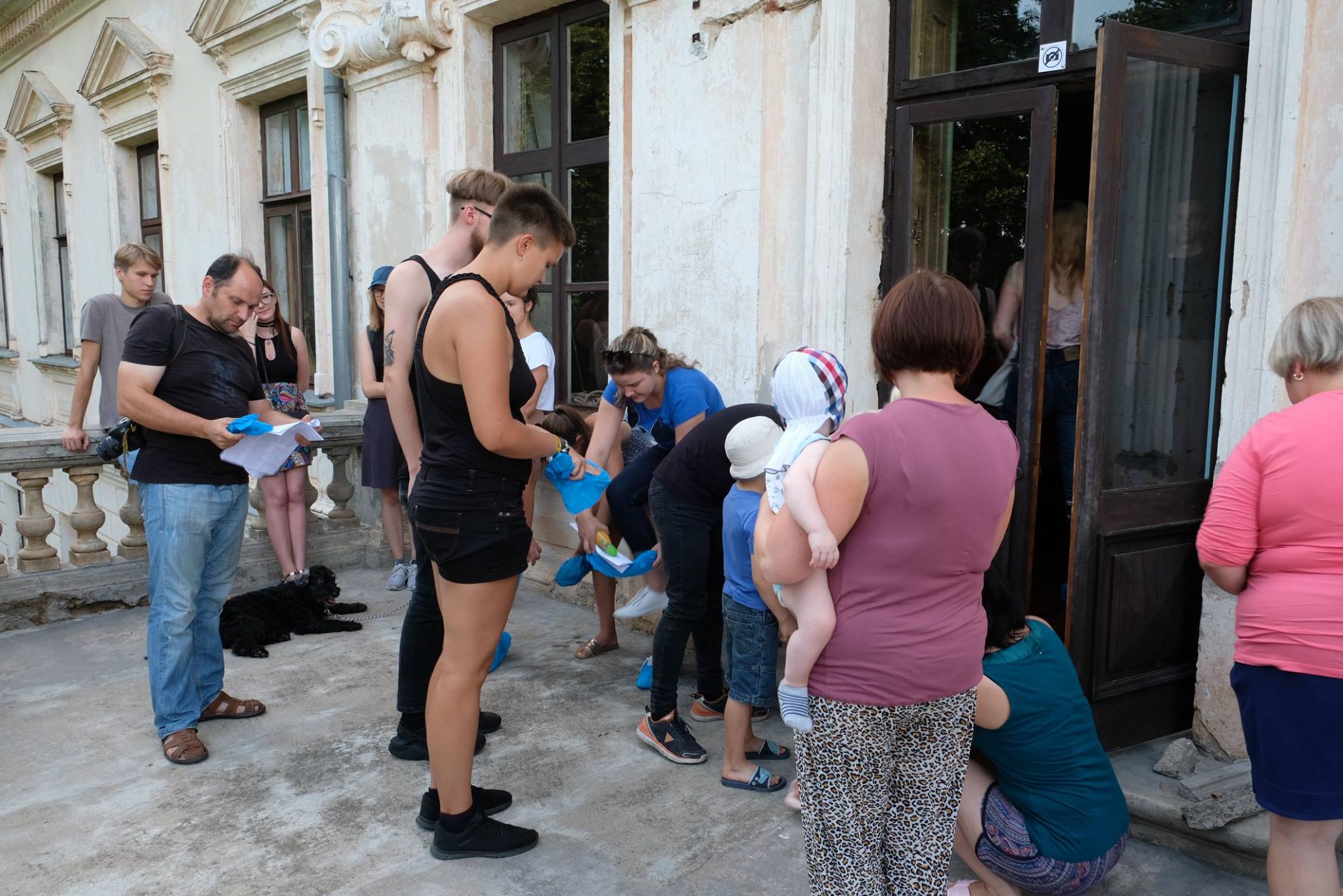





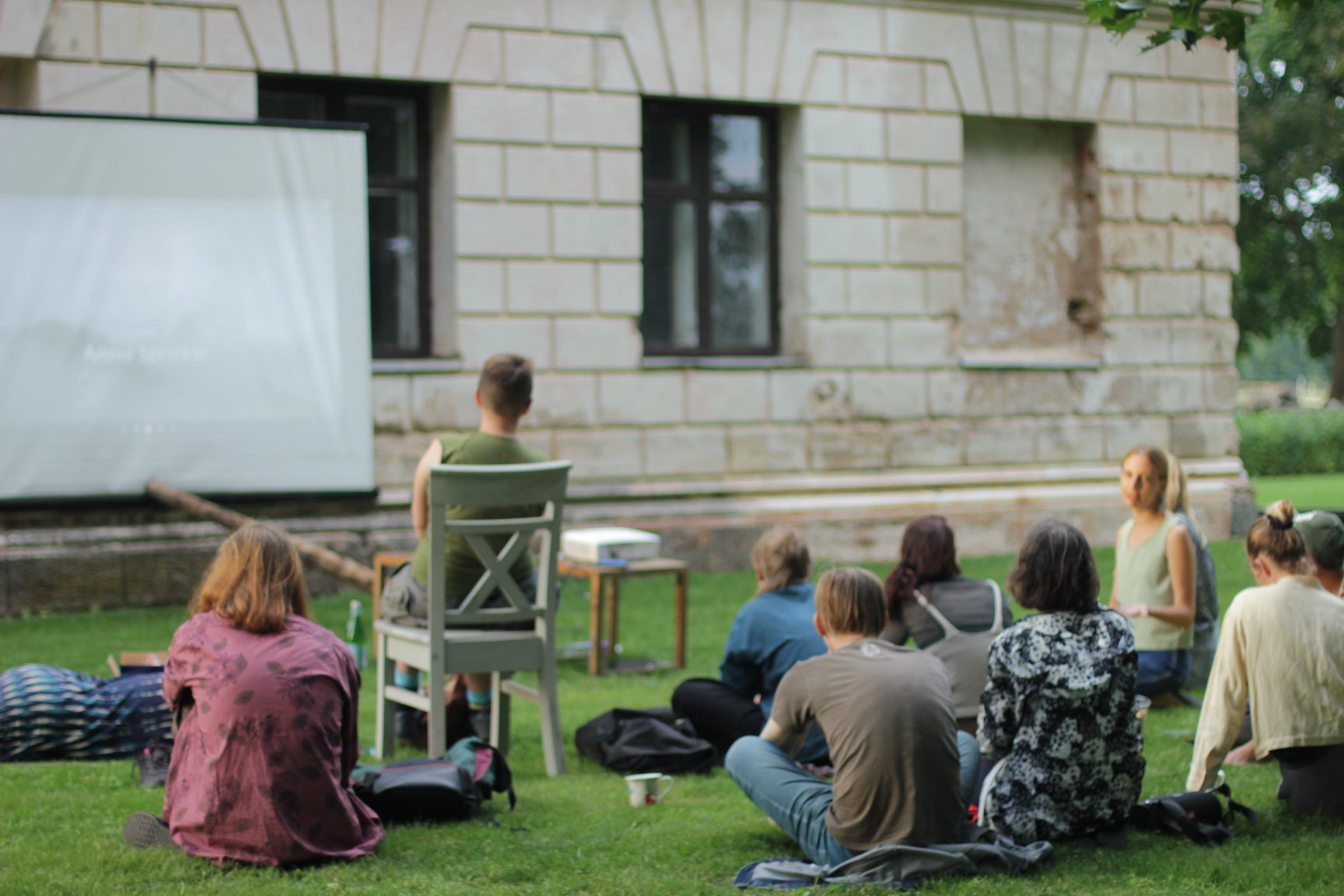
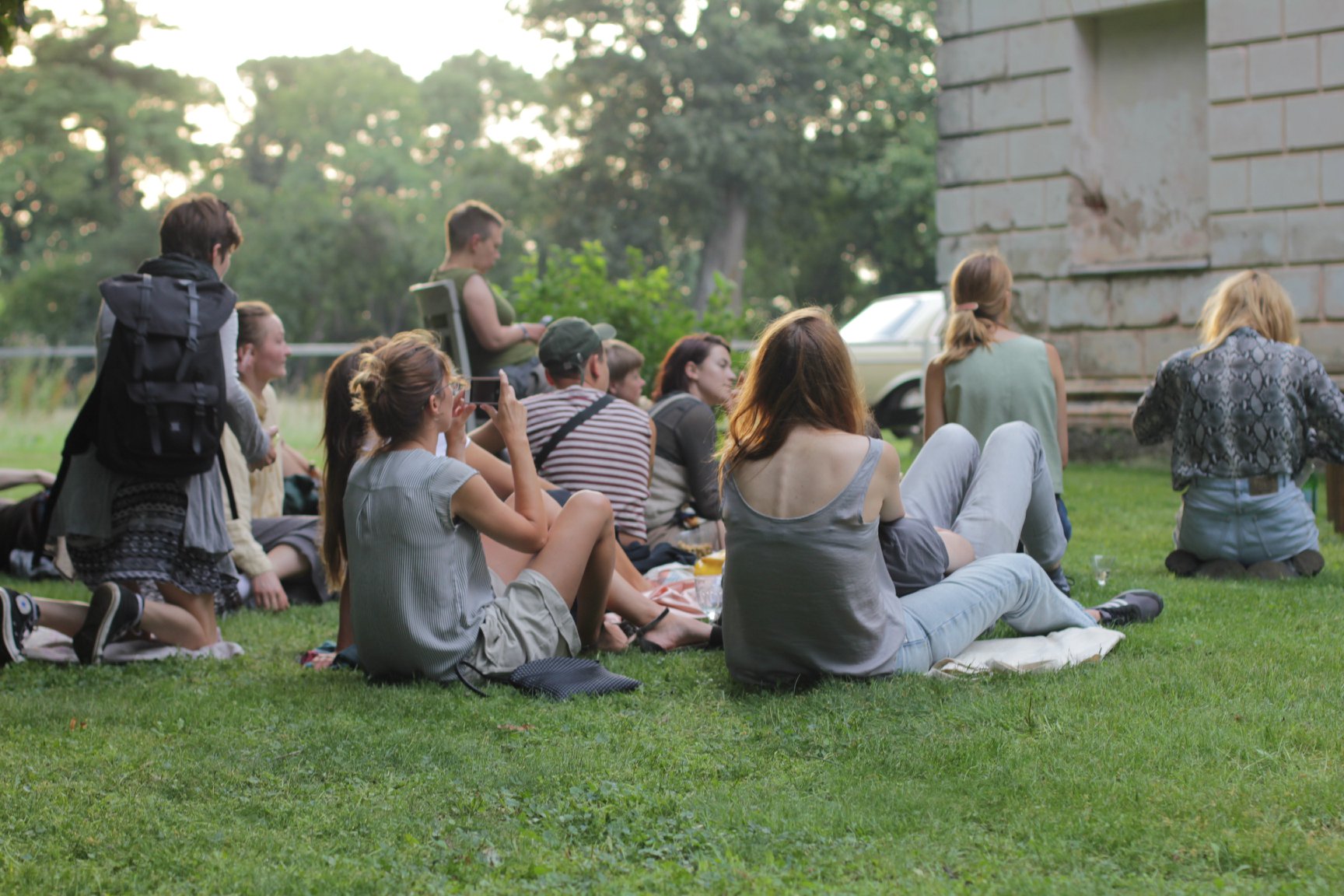

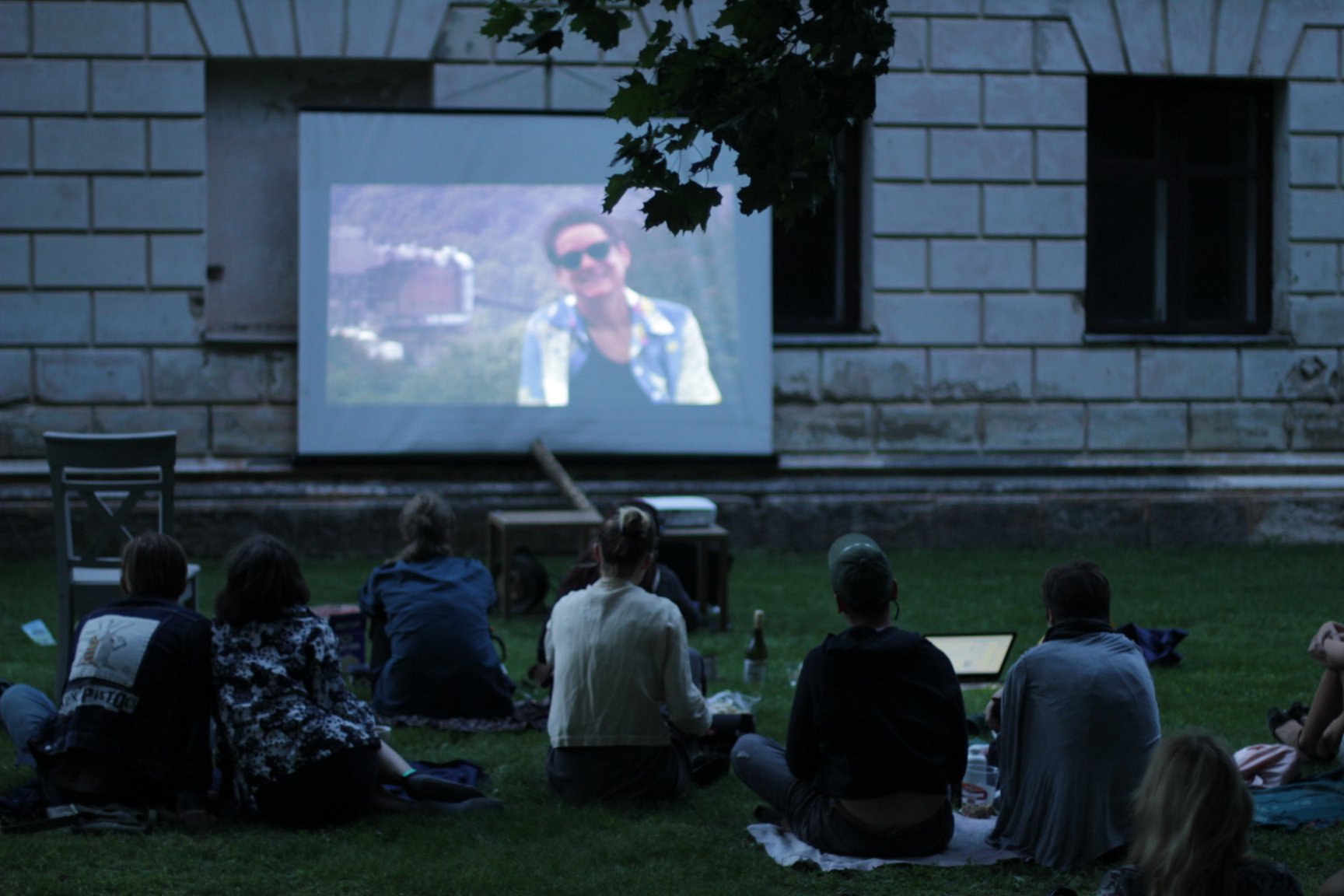
26-28 08 2016
Curator of Javier Marquerie Thomas’ and Jessica Mai Walker’s performance and installation “tar, amber, ash”, created and performed in Aikas Žado Laboratory, Žeimiai Manor House as part of Residency o-yo 2016 programme. Funded by the Lithuanian Council for Culture.
Participating artists: Javier Marquerie Thomas and Jessica Mai Walker
Curator of the performance and exhibition: Eglė Ambrasaitė
“tar amber ash”
Javier Marquerie Thomas and Jessica Mai Walker cultivate a space with soil, colophony and insects.
The protozoan - a miniscule being that runs the world, laid the foundations that constitute civilisation. Although insignificant in size, by sheer weight of numbers heterotrophic protozoa have had a considerable impact on the biology and geology of the earth: in food chains: as purifiers and pollutants: as ancestors of multicellular animals: as parasites: in the formation of oozes and limestone. Formerly known as animalcules, these previously microscopic organisms are now the silent embodiments of the most magnificent architectures on earth. Their remains were later refined into the stone that built the Pyramids; unbeknown to them, they have undertaken an unhurried but astounding metamorphosis: from their former microscopic condition of life, to the first wonder of the Ancient World.
44 million years ago (Eocene epoch), whilst the remains of these single celled organisms completed their short life spans to begin the slow process of being crushed into dust and reconstituted, Baltic conifers were producing unusual amounts of resin. It would’ve bled out from under the bark of the trees like coagulated honey and fell in drops from the boughs, small forms of life suffocating in the path of the flood. Flies, bacteria, lizards, deadlocked - gravityless and groundless, perpetually in a state of potential motion and maintained endlessly in the present. There’s factories in Russia and China that raise insects, scorpions, frogs to be placed in molds and smothered gently in a warm soup of melted plastic; these are packaged, transported to warehouses and eventually shops to be stocked and sold as key rings. This is not a new image of the world, but the transformation of the world into images.
Tar, amber, ash. The preferable conditions for fossilisation are a quick burial in fine, moist sediments; a quick burial in volcanic ash; the presence of groundwater that is heavily mineralized. The bodies of the dead fuel the lateral expansion of the present, at the risk of being cast out into an unstable future. We are strange kin in a warming atmosphere.
Bodies no longer look or smell like food, they smell like plastic. They smell like shampoo, ammonia, petrol, antifreeze, soap, hair straighteners, makeup remover, insect repellent, cheap shoes, balloons, new car, innertubes.

Image by Eglė Ambrasaitė
26 02 2016 →
Curator of Aikas Žado Laboratory (Žeimiai Manor House) programmes, including “Residency o-yo”, “Invisible Man’s Cinematheque”, “Lankesa” and "Center of Biomimetic Imagination” (”CBI”).
http://www.zeimiudvaras.lt
Based on crip materiality methodologies, Aikas Žado Laboratory is a contemporary art facility based at the Žeimiai Manor House. Aikas Žado Laboratory is organised as an individual/collaborative work by artists Domas Noreika and Eglė Ambrasaitė, while also being a community work. Part of the programme is managed, coordinated and conceptualised by the Aikas Žado Association. The main activities of the Laboratory include practical experiments related to the management of cultural heritage objects, combining discoveries, methods, techniques and knowledge from the fields of contemporary art, science and culture. The main principles of the Laboratory’s activities are illustrated by the way it applies conservation, prevention and restoration frameworks in the Žeimiai manor estate. At the Laboratory, the team collects and tests historical materials, organizes scientific research and exhibitions, and presents cognitive expeditions through which the manor house itself becomes a work of contemporary applied art and a compelling and unique example of heritage conservation.